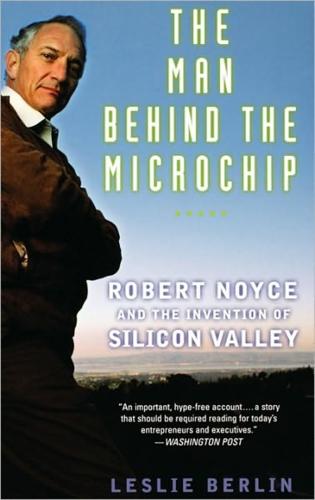
The Man Behind the Microchip: Robert Noyce and the Invention of Silicon Valley
by
Leslie Berlin
Published 9 Jun 2005
The par- Breakaway 89 ent firm received an option to buy all of Fairchild Semiconductor’s stock for $3 million at any point before Fairchild Semiconductor had three successive years of net earnings greater than $300,000 per year. If Camera and Instrument waited more than three years but bought within seven years, the company would have to pay $5 million for Fairchild Semiconductor. It was, as one founder put it, “a very good deal for both sides.”22 Arthur Rock’s and Bud Coyle’s work in the establishment of Fairchild Semiconductor in many ways presaged the role of venture capitalists in future Silicon Valley startup operations, even though the term “venture capital” did not yet exist.
…
—a meeting with a singular theme: your largest shareholder has invested more than $1 million in these men, so you should trust them—to persuade the IBM Federal Systems engineers to take a chance on Fairchild Semiconductor. By February 1958, the young men had an order for 100 silicon transistors. IBM agreed to pay $150 for each transistor, this at a time when basic germanium devices were selling for less than $5. Fairchild Semiconductor was in business.33 THE IBM ORDER made Fairchild Semiconductor. IBM left little to chance, carefully specifying not only the device’s electrical parameters, but also the packaging and testing procedures the young company should use in manufacturing the transistors. Noyce and the other scientists at Fairchild Semiconductor agreed they could only achieve the sort of reliability and speed that IBM wanted if they built double-diffused silicon transistors: devices, that is, built out of silicon and with two P-N junctions.
…
Noyce did not feel especially connected to the integrated circuit, but he did believe that creative laboratories were duty-bound to allow a researcher to “go ahead and pursue [ideas] until either he does get somewhere or he proves to himself that he can’t get anywhere.”44 Perhaps the singular experience of Noyce’s six-month trial run as general manager came in September, when Fairchild Camera and Instrument exercised its option to acquire all outstanding capital stock of Fairchild Semiconductor. In just the previous nine months, Fairchild Semiconductor had sold $6.5 million worth of its high-speed silicon devices, each of which cost 13 cents to build, for $1.50 apiece—an 87 percent profit margin. John Carter estimated that revenues would triple in the next year and wanted those profits for the Camera and Instrument balance sheet.45 On September 24, 1959, Noyce received a Western Union telegram informing him that in a tax-free stock swap, the shares of Fairchild Semiconductor had been exchanged for 19,901 shares of Camera and Instrument stock (with value equal to the $3 million purchase price agreed upon two years earlier).
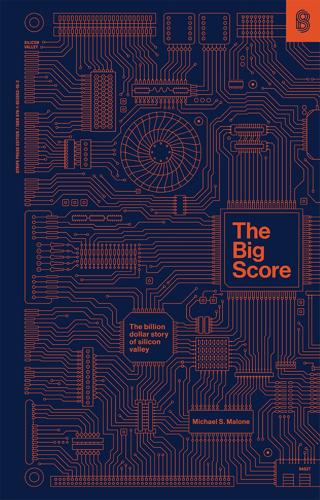
The Big Score
by
Michael S. Malone
Published 20 Jul 2021
This elusive, mythical Fairchild Semiconductor has nothing to do with that empty husk of a company called Fairchild Camera and Instrument Corp. that now occupies its old headquarters in Mountain View. It also bears little relation to the company upon which it is based: the Fairchild Semiconductor of 1957 to 1970. The real firm was plagued by numerous problems—weak management, poor manufacturing skills, and the immaturity and inexperience of its executives. In the mythical company, these same executives are what they became with time: the leaders of Silicon Valley. The mythical Fairchild Semiconductor is a “what if” game played by the Valley for years.
…
“I’d like to tell you that I didn’t want to leave semiconductors, which was true, and I’d like to tell you that I wanted to stay at Fairchild Semiconductor, but the real truth was that there was no way I was moving to New Jersey. I figured that I was now a California boy: That’s where I wanted to live, and that’s where I was going to live.” So Sanders stayed on the coast. Bay, about whom Sanders would say, “Without Tom Bay there’s little chance that Jerry Sanders would ever have been president of anything,” would in time come back to Fairchild Semiconductor, but by then the world had changed. To stay at Fairchild Semiconductor, Sanders had to leave southern California and move again back north.
…
And it doesn’t help when Jerry Sanders says that he believes the disintegration of Fairchild didn’t have to happen, or when in interviews with the Valley’s great men they seem to talk as though the old Fairchild days are more immediate in their minds than whatever glorious work they’re at in the present. What was this Fairchild Semiconductor that it could hold such a grip on the minds of Valley leaders so many years and so many successes after they left it? What kind of company was it that, when it exploded, the diaspora of its talent could create several dozen major companies, the largest of them some of the most important corporations in the world? The real Fairchild Semiconductor was remarkably small (less than $100 million even in the late sixties) and technically unsophisticated by modern standards.
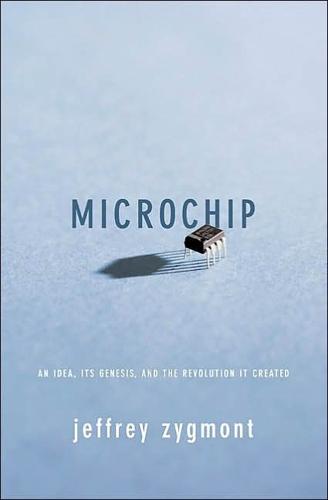
Microchip: An Idea, Its Genesis, and the Revolution It Created
by
Jeffrey Zygmont
Published 15 Mar 2003
Its collateral was the option to purchase the semiconductor operation outright, should Fairchild Semiconductor become successful. Each of the traitorous eight founders received ten percent ownership in the tenuous new venture, with the final twenty percent share going to Hayden, Stone & Company, the investment bank that had made the match with Fairchild. Eventually, Camera and Equipment would sink about $3.5 million into Fairchild Semiconductor. After twenty-four months, it would exercise its option, purchasing the operation outright. But at the start, Fairchild Semiconductor ran on a shoestring. On October 2, 1957, Fairchild Camera Executive Vice President Richard Hodgson sent a $3,000 check to Noyce at his home on Lundy Lane in Los Altos, "as advance to you to cover necessary expenditures in setting up the semi-conductor operation until such time as the Corporation is formally organized."
…
.; Kilby. page 20 The most immediate challenge . . . (including details of the lab test in the paragraphs that follow); ibid. Chapter Two: The Wild West page 23 But Fairchild made silicon transistors . . .; information regarding the founding principles of Fairchild Semiconductor and its early achievements comes from the commemorative booklet Fairchild Semiconductor, item MISC-581 of the Special Collections and University Archives, Stanford University Libraries, Stanford, California. page 23 But the same shoddy quality . . . (including details of the conditions and motives behind Hoerni's early investigations at Fairchild); Jean Hoerni, interviewed in 1986 by George Rostky; item M-851 of the Special Collections and University Archives, Stanford University Libraries. page 25 Shockley's vocation as physicist . . .
…
.; information on Shockley and Shockley Laboratory from Biographical Memoirs, the National Academy Press of the National Academies. page 32 Technoscenti who encountered him ... ; numerous interviews and conversations conducted by the author confirm Shockley's standing. page 33 Noyce finessed details . ..; information on Noyce's role and the structure of the deal that set up Fairchild Semiconductor are drawn primarily from the booklet Fairchild Semiconductor, item MISC-581 of the Special Collections and University Archives, Stanford University Libraries, with support from the Noyce sources listed above. page 33 But at the start . ..; the letter from Hodgson to Noyce can be found in item MISC-581 of the Special Collections and University Archives, Stanford University Libraries. page 34 "There were a lot of government contracts . .. ; Moore. page 34 "We were really fairly naive ...; ibid. page 35 Jean Hoerni headed the physics section ...; Hoerni to Rostky. page 35 "When we were setting up ...; Moore. page 35 "I became very interested . . .

The Power Law: Venture Capital and the Making of the New Future
by
Sebastian Mallaby
Published 1 Feb 2022
However, Berlin reports that Fairchild lent $1.38 million, also providing an allowance of $3,000 per month for almost eighteen months. See Berlin, “Robert Noyce and Fairchild Semiconductor,” 76. Fairchild Semiconductor’s founding documents appear to corroborate Berlin’s numbers. See Bo Lojek, History of Semiconductor Engineering (New York: Springer, 2007), 105. BACK TO NOTE REFERENCE 93 Fairchild Camera’s option expired once Fairchild Semiconductor had three successive years of net earnings greater than $300,000 per year. After that, there was an additional period in which Fairchild Camera could buy Fairchild Semiconductor for $5 million. Berlin, Man Behind the Microchip, 89. BACK TO NOTE REFERENCE 94 Malone, Big Score, 89.
…
BACK TO NOTE REFERENCE 94 Malone, Big Score, 89. BACK TO NOTE REFERENCE 95 Wolfe, “Tinkerings of Robert Noyce”; Meyer, “Eugene Kleiner,” 18; Berlin, “Robert Noyce and Fairchild Semiconductor, 1957–1968.” BACK TO NOTE REFERENCE 96 Jay Last and Jean Hoerni were Rock’s frequent climbing partners. BACK TO NOTE REFERENCE 97 Wilson, New Venturers, 34. See also Christophe Lécuyer, “Fairchild Semiconductor and Its Influence,” in Lee et al., Silicon Valley Edge, 167. BACK TO NOTE REFERENCE 98 Memorandum from Rock to Coyle, March 27, 1958, Rock personal archive.
…
The operating margin comes from a separate memo written by Rock around this time and contained in his archive. BACK TO NOTE REFERENCE 99 This number for earnings is the author’s estimate and is only approximate. In 1959, Fairchild Semiconductor employed about 40 scientists earning about $12,000 on average, meaning a salary bill of around $480,000. There were 140 other employees, with average salaries of perhaps half that, implying a total salary bill of about $1.3 million. (The staff head count in 1959 and 1960 is reported in Lécuyer, Fairchild Semiconductor and Its Influence, 180.) Costs of facilities, machinery, and raw materials might have added perhaps $1 million. This implies pretax earnings of $4.2 million.
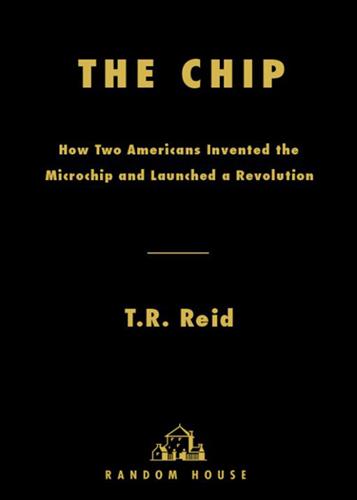
The Chip: How Two Americans Invented the Microchip and Launched a Revolution
by
T. R. Reid
Published 18 Dec 2007
Each of the eight young scientists put up $500 in earnest money, the corporate angel put up all the rest, and early in 1957 the Fairchild Semiconductor Corporation opened for business, a mile or so down the road from Shockley’s operation. Noyce recalled that the group had some slight qualms about running their own business, but these doubts were easily overcome by “the realization, for the first time, that you had a chance at making more money than you ever dreamed of.” The dream, as it happened, came true. Even by high-tech standards, that $500 turned out to be a spectacular investment. In 1968 the founders sold their share of Fairchild Semiconductor back to the parent company; Noyce’s proceeds—the return on his initial $500 investment—came to $250,000.
…
Unlike Kilby, Bob Noyce did not have to check with the boss when he got an idea; at the age of thirty-one, Noyce was the boss. It was January 1959, and the valley was still largely an agricultural domain, with only a handful of electronics firms sprouting amid the endless peach and prune orchards. One of those pioneering firms, Fairchild Semiconductor, had been started late in 1957 by a group of physicists and engineers who guessed—correctly, as it turned out—that they could become fantastically rich by producing improved versions of transistors and other mechanical devices. The group was long on mechanical talent and short on managerial skills, but one of the founders turned out to have both: Bob Noyce.
…
Unlike the quiet, introverted Kilby, who does his best work alone, thinking carefully through a problem, Noyce was an outgoing, loquacious, impulsive inventor who needed somebody to listen to his ideas and point out the ones that couldn’t possibly work. That winter, Noyce’s main sounding board was his friend Gordon Moore, a thoughtful, cautious physical chemist who was another cofounder of Fairchild Semiconductor. Noyce would barge into Moore’s cubicle, full of energy and excitement, and start scrawling on the blackboard: “If we built a resistor here, and the transistor over here, then maybe you could . . .” Not suddenly, but gradually, in the first weeks of 1959, Noyce worked out a solution to the interconnections problem.

Troublemakers: Silicon Valley's Coming of Age
by
Leslie Berlin
Published 7 Nov 2017
One summer we found that there were no longer any orchards where we could pick our own apricots at a pittance a pailful.”5 By 1969, the newcomers had created a new business culture, much of it centered around silicon microchips. Silicon came to the Valley in 1956, when Nobel Laureate William Shockley launched a company to build transistors. The very next year, eight of Shockley’s top young scientists and engineers left to launch Fairchild Semiconductor, the first successful silicon company in Silicon Valley.6 In the ensuing dozen years, Fairchild gained renown for the quality and innovative record of its researchers, engineers, and sales and marketing teams. The company was also a huge financial success. In 1965, it was the fastest-growing stock on the New York Stock Exchange, its share price rocketing fifty points in a single month.7 Fairchild’s success inspired others to want to start their own companies, and the first of many waves of entrepreneurial frenzy gripped the valley.
…
There she learned how to solder and how to read build plans, prints, and color codes. Like thousands of others in the Valley, she would one day put this experience gained at a large, established employer into service at a small startup. After roughly a year, Vineta Alvarez left Lockheed for the production line at Fairchild Semiconductor, the microchip company launched by eight former employees of Nobel Prize–winner William Shockley. She assembled printed circuit boards, but no one told her what they were for—and she did not care enough to ask.1 Six months after joining Fairchild, she moved on to Sylvania, a military contractor and electronics manufacturer.
…
But she would always be grateful to ROLM for lightening her mother’s load. The Fairchildren MIKE MARKKULA On a warm spring day in 1969, not too far from where Fawn Alvarez picked plums, twenty-seven-year-old Mike Markkula was helping his former boss Jack Gifford plot a new startup. Three years earlier, Gifford had hired Markkula at Fairchild Semiconductor, the company where Fawn’s mother had assembled circuit boards whose purpose she did not know. Now Gifford was leaving Fairchild with plans to launch a microchip company that would compete with the pioneering firm. He had seen Fairchild’s success—in ten years, the company had grown to 11,000 employees and $12 million in profits—and thought he might be able to duplicate it at a company that would soon be called Advanced Micro Devices.

The Innovators: How a Group of Inventors, Hackers, Geniuses and Geeks Created the Digital Revolution
by
Walter Isaacson
Published 6 Oct 2014
The genius who conceptualized the transistor and brought people to the promised land of Silicon Valley became a pariah who could not give a lecture without facing hecklers. The traitorous eight who formed Fairchild Semiconductor, by contrast, turned out to be the right people at the right place at the right time. The demand for transistors was growing because of the pocket radios that Pat Haggerty had launched at Texas Instruments, and it was about to skyrocket even higher; on October 4, 1957, just three days after Fairchild Semiconductor was formed, the Russians launched the Sputnik satellite and set off a space race with the United States. The civilian space program, along with the military program to build ballistic missiles, propelled the demand for both computers and transistors.
…
Now we employ twice the total population of my largest ‘home town.’ ” His desire, he said, was to “get close to advanced technology again.”27 When Noyce called Arthur Rock, who had put together the financing deal that launched Fairchild Semiconductor, Rock immediately asked, “What took you so long?”28 ARTHUR ROCK AND VENTURE CAPITAL In the eleven years since he had assembled the deal for the traitorous eight to form Fairchild Semiconductor, Arthur Rock had helped to build something that was destined to be almost as important to the digital age as the microchip: venture capital. For much of the twentieth century, venture capital and private equity investing in new companies had been mainly the purview of a few wealthy families, such as the Vanderbilts, Rockefellers, Whitneys, Phippses, and Warburgs.
…
UNIVAC predicts Eisenhower election victory. 1954 1954 Turing commits suicide. Texas Instruments introduces silicon transistor and helps launch Regency radio. 1956 Shockley Semiconductor founded. First artificial intelligence conference. 1957 Robert Noyce, Gordon Moore, and others form Fairchild Semiconductor. Russia launches Sputnik. 1958 Advanced Research Projects Agency (ARPA) announced. Jack Kilby demonstrates integrated circuit, or microchip. 1959 Noyce and Fairchild colleagues independently invent microchip. 1960 J. C. R. Licklider publishes “Man-Computer Symbiosis.”

Computer: A History of the Information Machine
by
Martin Campbell-Kelly
and
Nathan Ensmenger
Published 29 Jul 2013
Noyce not only succeeded in raising $1.5 million from the Fairchild Camera and Instrument Company (acquiring at the same time the name for his new company, Fairchild Semiconductor) but, in the process, also attracted to Northern California Arthur Rock, the young banker who would become one of the founding fathers of the modern venture-capital industry. The combination of semiconductor manufacturing, venture capital, and military contracting would soon transform the apricot and prune orchards around Palo Alto into the best-known high-tech development center in the world. More than any other company, it was Fairchild Semiconductor that spawned the phenomenon we now know as Silicon Valley. To begin with, unlike Shockley Semiconductor, Fairchild focused on products that had immediate profit potential, and quickly landed large corporate and military clients.
…
The formerly space-age technology had become a cheap commodity good—as well as something of a cliché. The meteoric rise and fall of the digital watch illustrates a larger pattern in the unusual economics of microelectronics manufacturing. The so-called planar process for manufacturing integrated circuits, developed at Fairchild Semiconductor and perfected by companies such as Intel and Advanced Micro Devices (AMD), required a substantial initial investment in expertise and equipment, but after that the marginal cost of production dropped rapidly. In short, the cost of building the very first of these new integrated circuit technologies was enormous, but every unit manufactured after that became increasingly inexpensive.
…
To begin with, unlike Shockley Semiconductor, Fairchild focused on products that had immediate profit potential, and quickly landed large corporate and military clients. In 1959 Fairchild co-founder Jean Hoerni developed a novel method for manufacturing transistors called the planar process, which allowed for multiple transistors to be deposited on a single wafer of silicon using photographic and chemical techniques. Noyce, then head of research at Fairchild Semiconductor, extended the planar process to allow for the connection of these transistors into complete circuits. It was these wafers of silicon that would give Silicon Valley its name, and their transformation into “integrated circuits” or “chips” that would consolidate the region’s status as the birthplace of the revolution in miniature (as well as its central role in subsequent developments in personal computing and the Internet).

The Everything Blueprint: The Microchip Design That Changed the World
by
James Ashton
Published 11 May 2023
In a highlights feature, writers picked out what they thought would be new and interesting for delegates, including radar, log-periodic antennae and tuneable tunnel-diode amplifiers. However, one innovation that eluded the title’s previewers was something that would prove in time to be a gamechanger. ‘Announcing the first of a new family,’ the company Fairchild Semiconductor proclaimed that week in its product brochure: ‘The Micrologic Flip-Flop’. This basic electronic storage circuit for a single bit of data that flipped between two steady states of one and zero, was ‘the first element of the micrologic family of digital functional blocks’. It would be followed soon by five other devices that together were ‘sufficient to efficiently build the complete logic section of a digital computer or control system’.5 Incidentally, a ‘flop’ was short for ‘floating point operations per second’, another measure of performance related to the type of arithmetic required to tackle very large or very small numbers.
…
That left fun-loving Fairchild the funds to wine, dine and invent things, including aerial cameras that were used by the US Air Force in the war. Keen to expand into the hot area of transistors, Fairchild Camera and Instrument Company stumped up $1.5m to back the Traitorous Eight and, in late 1957, Fairchild Semiconductor was born. That was the easy part. There was no off-the-shelf technology of which to take advantage. From its 1,300 square metre (14,000 square foot) base in Palo Alto, Fairchild made its own silicon wafers and built its own furnaces for diffusion, the process by which the semiconductor’s electrical properties were modified when impurities were introduced and baked at high temperatures.
…
The government was responsible for all sales until 1964 and remained a significant buyer thereafter.13 Even then, the potential of the IC was difficult to comprehend. One man who thought he could envisage the direction of travel was Gordon Moore. Another one of the Traitorous Eight, Moore was director of research and development (R&D) at Fairchild Semiconductor when he was asked by Electronics magazine to predict what would happen in his industry over the next decade. The resulting article, ‘Cramming more components onto integrated circuits’, published on 19 April 1965, outlined what became known as Moore’s Law, extrapolating that computing would dramatically increase in power and decrease in relative cost at an exponential pace.

The Code: Silicon Valley and the Remaking of America
by
Margaret O'Mara
Published 8 Jul 2019
He was committed to an expensive and laborious process called the four-layer diode, and refused to be persuaded that cheaper, simpler silicon chips were the way to go. Jim Gibbons showed up at the storefront just weeks before these Shockley lieutenants—Noyce, Last, Moore, Kleiner, plus four others—quit to start a company of their own called Fairchild Semiconductor, which quickly surpassed and outlasted Shockley’s operation. Before they went out the door, they invited the young professor to join them. He said no. “It was probably the most expensive decision I ever made,” Gibbons said later.23 The exit became Valley legend and inspired hundreds of high-tech ventures to come.
…
Enough for Rock to branch out from his day job and go on the hunt for an angel investor—someone comfortably rich, but quirky enough to take a willing gamble on a new technology and a pack of unknowns. He found Sherman Fairchild, an eclectic high-tech enthusiast who had become a multimillionaire thanks to his inheritance of a massive amount of IBM stock. The eight scientists of Shockley became the founding employees—and shareholders—of a new company called Fairchild Semiconductor.24 Modern Silicon Valley started with Fairchild and the “Traitorous Eight” who founded it. Financed by an eccentric trust-funder in a deal brokered by an East Coast financier, the firm’s origins underscored how tightly wedded the Valley was to outside, old-economy interests from the very start.
…
These were operations for whom defense contracting wasn’t the primary market, and whose products were making all kinds of machines—from computers to cars to contraptions running assembly lines—faster and lighter and more powerful. They were the companies that put the silicon in Silicon Valley, and the space race helped launch them into the stratosphere. FUNNY LITTLE COMPANIES This was what happened to Fairchild Semiconductor. Three months into their start-up’s existence, without having yet made a single chip, the Traitorous Eight landed a contract to manufacture 100 silicon transistors for an onboard computer for “the manned missile,” a new long-range bomber. Wisely, Bob Noyce and Gordon Moore were adamant that Fairchild conduct its own research, rather than depending on government contracts that would not let them own resulting patents.

Boom: Bubbles and the End of Stagnation
by
Byrne Hobart
and
Tobias Huber
Published 29 Oct 2024
By 1962, costs had fallen to $100 per microchip. A year later, MIT could order 3,000 integrated circuits from Fairchild Semiconductor for $15 per chip. Thanks to the space program, the cost of integrated circuits fell to $1.58 per chip by 1965. It’s therefore not surprising that Moore’s law was born during the Apollo period. In a 1965 paper titled “Cramming More Components Onto Integrated Circuits,” Gordon E. Moore—who was at the time a director of research and development at Fairchild Semiconductor and later cofounded Intel—predicted that the number of transistors on an integrated circuit would double every year until it reached an astonishing 65,000 components by 1975.
…
He observed that since the late 1950s, the number of transistors on a single integrated circuit had roughly doubled every 18 months, reaching 64 at the time he was writing. 209 Based on this observation and his knowledge of the industry, he predicted the trend would continue into the foreseeable future. When Moore made this claim, transistor-based products were hardly ubiquitous. Although transistor radios were getting more popular, TVs and radios mostly used vacuum tubes. Moore’s employer, Fairchild Semiconductor, mostly sold its transistors to the US government. Today, Apple’s M1 chip features no fewer than 16 billion transistors—a slight shortfall from Moore’s projection, but an astounding increase nonetheless. 210 Over that period, chip fabrication has become intensely specialized. A single fabrication plant takes years to build and costs upward of $15 billion, more than an aircraft carrier or a nuclear power plant.
…
Arthur Rock, the young banker assigned the account, introduced them to Fairchild Camera and Instrument, a company founded by the flamboyant IBM heir and inventor Sherman Fairchild. 218 At the last minute, an eighth member of the Shockley lab, Robert Noyce, joined the meeting. They called themselves the “California group.” William Shockley referred to them by a harsher, more memorable name: the “traitorous eight.” 219 The name stuck. Equipped with a team, a budget, and an agreement that Fairchild Camera could later acquire the business for $3 million, Fairchild Semiconductor was born. The company had no products, no customers, and little equipment—most of what they needed they’d have to design themselves. 220 Noyce, who had been appointed CEO of the fledgling company, was well liked by his colleagues but had never run a business. Fortunately for Fairchild, Noyce turned out to be a natural leader, at least when the circumstances demanded a collaborative, research-oriented work environment.
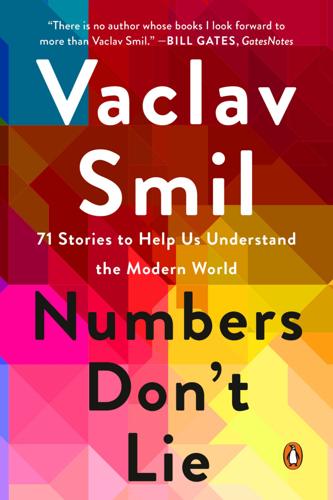
Numbers Don't Lie: 71 Stories to Help Us Understand the Modern World
by
Vaclav Smil
Published 4 May 2021
Kilby knew that this wouldn’t work, and that is why he added a note about connections to be made in other ways. As an example, he mentioned gold deposited on the thin silicon oxide layer on the wafer’s surface. Integrated circuit: Kilby’s “flying wires” patent Unbeknownst to him, in January 1959, Robert Noyce, then the director of research at Fairchild Semiconductor Corporation, was to jot down in his lab notebook an improved version of the very same idea. “It would be desirable to make multiple devices on a single piece of silicon, in order to be able to make interconnections between devices as part of the manufacturing process, and thus reduce size, weight, etc. as well as cost per active element,” Noyce wrote.
…
This means that in comparison with the latest capabilities, the equivalent performance during the mid-1960s would have required components 100 million times larger. As physicist Richard Feynman famously said, there’s plenty of room at the bottom. Moore’s Curse: Why technical progress takes longer than you think In 1965, Gordon Moore—at that time the director of R&D at Fairchild Semiconductor—noted that “the complexity for minimum component costs has increased at a rate of roughly a factor of two per year . . . Certainly over the short term this rate can be expected to continue, if not to increase.” Over the longer term, the doubling rate settled at about two years, or an exponential growth rate of 35 percent a year.
…
Edison. New York: Random House, 2019. Inventing integrated circuits Berlin, L. The Man Behind the Microchip: Robert Noyce and the Invention of Silicon Valley. Oxford: Oxford University Press, 2006. Lécuyer, C., and D.C. Brook. Makers of the Microchip: A Documentary History of Fairchild Semiconductor. Cambridge, MA: MIT Press, 2010. Moore’s Curse: Why technical progress takes longer than you think Mody, C.C.M. The Long Arm of Moore’s Law: Microelectronics and American Science. Cambridge, MA: MIT Press, 2016. Smil, V. Growth: From Microorganisms to Megacities. Cambridge, MA: MIT Press, 2019.
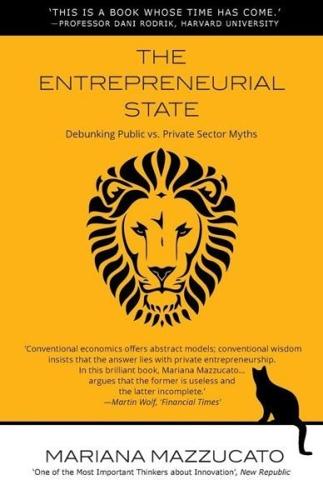
The Entrepreneurial State: Debunking Public vs. Private Sector Myths
by
Mariana Mazzucato
Published 1 Jan 2011
Another key event during this period was the new innovation environment that emerged after a group of scientists and engineers in 1957 broke away from a firm started by William Shockley (Block 2011). The rebellious group of scientists and engineers, often referred to as the ‘traitorous eight’, went on to form Fairchild Semiconductor, a new firm that advanced semiconductor technology and continued ‘a process of economic fission that was constantly spinning off new economic challengers’ (Block and Keller 2011, 12–13). Lazonick (2009) adds that the spinoff culture ultimately began with Fairchild Semiconductor – and the firm owed nearly all of its growth to military procurement. The spinoff business model became viable and popular for technological advancement following the 1957 revolt, yet would not have been possible without State involvement and it functioning as a major early customer.
…
The invention of new silicon-based ICs led to technological developments in various fields in electronics. The rise of Personal Computers (PCs), cellular technology, the Internet and most of the electronic devices found on the market today utilize these smart, tiny devices. The journey of ICs from Bell Labs, Fairchild Semiconductor and Intel into devices such as iPhone or iPad was aided by procurement by the US Air Force and NASA. As the sole consumers of the first processing units based on this new circuit design, defence contracts helped fund the development of the infant microprocessor industry and those introducing complementary electronic equipment and devices that were simply unaffordable in regular commercial markets.
…
‘me too’ 64–7; see also pharmaceutical companies (‘pharma’); specific drugs Duhigg, Charles 173–4 DuPont 178–9 economic crisis: boosting clean technologies 142–3; causes of 12, 182; public sector blamed for 15, 17; varied impact of in EU 41 Economist, view on State and enterprise 16 ‘ecosystems’: see innovation ecosystems electric cars/vehicles 108, 123, 124, 133 Electric Power Research Institute (EPRI) 151 Elias, John 102–3 email 104 End of Laissez Faire, The (Keynes) 4, 194 endogenous growth theory: see ‘new growth’ theory energy crisis 137, 144–5; see also green industrial revolution Energy Frontier Research Centers (EFRCs) 133 Enron 148 ‘enterprise zones’ 54 ‘entrepreneurial’ State: building of 54, 196–7; growth and inequality in 183; risk assumption and vision of 24; role of 6, 10, 21, 23; see also State Entrepreneurial State, The (report) 2, 3 entrepreneurs: DARPA’s brokering role with 77; financing of 57; investment choices of 136; myth of in Silicon Valley 63; risk types and 58–9; SBIR funding to 80, 188 EPA (Environmental Protection Agency) 150 equitable growth 13, 177, 185 European Organization for Nuclear Research (CERN) 101 ‘European Paradox’ 53 European Union: approach to green initiatives 124; ‘Big State’ behind innovation in 166; feed-in tariffs in 153; ‘fiscal compact’ of 42, 197; green transition targets in 115n2; gross R&D spending as percentage of GDP 43; growth producing spending in 196; investment in renewable energy 120, 121; public sectors in 17–18; R&D targets of 41; weaknesses of countries in 52–3 Evans, Peter 4 Evergreen Solar 151–2, 162 Evolutionary Theory of Economic Change, An (Nelson and Winter) 34–5 ‘evolutionary theory’ of production 34–5 ‘exogenous growth theory’ 34 externalities 4, 7, 21, 168; see also Apple Fadell, Tony 100n8; see also Apple Fairchild Semiconductor 76 fast Fourier transform (FDT) algorithm 109 feed-in tariffs: in energy technology 114; in European markets 153; German 122, 138, 149, 156; policy changes in 125n7; UK 124 Fert, Albert 96 Fiegerman, Seth 171n3 finance firms 182 financialization 25–8 FingerWorks 103 Finland 120n4, 121, 190 First Solar (formerly Solar Cells Inc.) 128–9, 151, 159–60; see also green industrial revolution Fiscal Investment Loan Program (Japan) 40 flat panel display (FPD) industry 106 Florida, Richard 107 Forbes on WuxiSuntech 153 ‘Fordist’ model of production in 38–9 Foxconn 170–71 France 61, 120, 120n4, 121 Freeman, Chris 193 Fuchs, Erica 133 Funding a Revolution: Government Support for Computing Research 63 G4S, security company 16 game theory 36 GDP, balance in categories of 30 Gedser turbine 145 Genentech Inc. 57, 69, 81 General Electric (GE) 125, 137, 147–8, 160–61, 174n5 general purpose technologies (GPTs) 62, 83 Genzyme 81, 181 Germany: feed-in tariffs 122, 138, 149, 156; government energy R&D spending 121; green revolution in 115n2, 116, 120, 122; long-term support provided by 158; public R&D spending in 61, 144–6; solar resources of 144; State investment bank 190; systems of innovation in 37; wind energy and R&D projects in 144–6, 149, 156 Ghosh, Shikhar 127 giant magnetoresistance (GMR) 96–7 GlaxoSmithKline 66–7, 82 Global Wind Energy Council (GWEC) 138–9 Goldwind 149 Goodenough, John B. 108 Google 20, 174–5 government energy R&D spending 121, 121 GPS (global positioning system) 105, 105n12 Great Transformation, The (Polanyi) 194–5 Greece, R&D/GDP 52 Green, Martin 152 green industrial revolution: ARPA-E 133–5; ‘carbon lock-in’ 117; China’s ‘green’ 5 year plan 122–4; climate change 117, 123, 135; development banks funding of 139–40, 139n14; DoE role in 132–3; Economist on 16; financial commitment for 116; funding of 116–19; global new investment in renewable energy 120; government energy R&D spending 121; government support to 114–15, 119, 129, 141–2; hurdles to 138, 156, 160; leaders in 11–12, 126; national approaches to 119–22; ‘No More Solyndras Act’ 130–31n12; patient capital 138–40; policies impacting 113–15, 119; pushing green development 136–7; renewable energy credits (RECs) 115n1; smart grid technology in 115, 118; sustainability 117, 119, 123; UK’s approach to 124–6; US approach to 126–35; venture capital in 127–9, 128n9; venture capital subsectors in 128; see also clean technology; solar power; wind power Green Investment Bank 125n7 Gronet, Chris 151 growth: economy-wide 62; effect of venture capital on 49; of firms and R&D benefit 44; firm size relationship to 45–6; ‘inclusive’ 167, 183, 195; inequality and 31, 54, 177; innovation as key source of 9, 177; measures of 33; myths about innovation and 10; national debt relationship to 18; ‘smart’ 167, 183; and technology 33–4; theories of 33–4; variables important for 18; see also equitable growth Grünberg, Peter 96, 97 Grunwald, Michael 113, 136 Haltiwanger, J 45 Hamilton, Alexander 73 Hanwha Group 157 hard disk drives (HDD) 96–7, 109 Harrison, Brian 154 Harrod, Roy F. 33 Haslam, Karen 171n3 Heymann, Matthias 145 Hoffman Electronics 150, 150n4 Hopkins, Matt 129n10, 160 House of Commons Energy and Climate Change Committee 125 Hsieh, Chang-Tai 46 HTTP/HTML 103–5, 109 Hughes, Alan 45 Hurst, Samuel 101 IBM 50, 97, 104, 107 ‘iGesture Numpad’ 103 Ill Fares the Land (Judt) 1 Immelt, Jeffrey 126 income-contingent loans and equity 189–90 income distribution 30n1 India 45–6, 120 industrial policy: challenges to 13; decentralized 78; in ‘rebalancing’ of economies 27; recent US history of 10, 21; redistributive tools needed in 167; State led 40; see also ‘picking winners’ inequality: as debilitating economic issue 177; growth impacted by 31; reducing 166, 186; shareholders as source of 183; tax cut impact on 54 information and communications technology (ICT) 50, 118 Information Processing Techniques Office (DARPA’s) 76 Innovalight 158 innovation: collective character of 183–7, 193; ‘culture’ of 87; as cumulative 167, 187; Death Valley stage of 47, 48, 122; development banks fostering 139–40; development of 3, 41–2; and distribution 186; economic growth driven by 9; firms resisting pressure for 77; global process of 155; government support for 31; in Japan 37–8; macro models on 44; myths about 10, 22; myths of R&D being about 44; ‘open innovation’ model of 25, 27; patent increase relationship to 50–51; process in energy technology 114; Schumpeterian innovation economics 5; State as a force in 5, 166; State leading in risky 62–4; stock market speculation and 49–50; tax policy impact on 51; threatened in US 24; undermining of in US 53, 183, 187; US 24; see also ‘systems of innovation’ approach innovation ecosystems: cumulative innovation curve in 167–8; open systems 193; socioeconomic prosperity dependence on 179; symbiotic vs. parasitic 23–5, 155, 162–3, 179; types of 2; see also actors ‘innovation fund’ 189 innovation networks 36, 40 innovation policy 22–3, 44, 46, 54, 167 Inquiry into the Nature and Causes of the Wealth of Nations, An (Smith) 1; see also ‘Invisible Hand’ Institute for Fiscal Studies (IFS) 51–2 institutional change, assessment of 36 integrated circuits 98, 98n6 Intel 130n11 intellectual property protection 110 intellectual property rights 174 International Bank for Reconstruction and Development (IBRD) 5 Internet: Apple’s use of 109; commercialization of 22; DARPA’s role in 76; and HTTP/HTML 103–5, 109; origin of 63; public funding behind 105 interventionist policy 83 investment returns, social vs. private 3–4 ‘Invisible Hand’ 30 iOS mobile operating system 89–90 iPad 102, 105, 109, 111n14 iPhone 101–3, 105–6, 109 iPlayer 16 iPod 95–6, 100–102, 105, 109, 110 Ireland 120n4, 121, 121 IRS 529 plans 111, 111n15 Italy 17, 39, 41, 52, 121 Jacobs 149 Janeway, William H. 49–50 Japan: Apple entering market of 110; computer electronics competition by 97, 98, 98n7, 106–7; economic growth of 37–8; finance system coordination by 40; flat panel display (FPD) industry of 106; government energy R&D spending 121; lithium-ion battery perfection by 108; MITI 37–8, 40; public R&D spending in 61; systems of innovation in vs.

The Secret War Between Downloading and Uploading: Tales of the Computer as Culture Machine
by
Peter Lunenfeld
Published 31 Mar 2011
Moore was to establish another of the memes that the Plutocrats contributed to the culture of computing: the spin-off. Moore and Philip Noyce, another of the Intel cofounders, were both members of the famous “Traitorous Eight,” who quit working with the increasingly unstable William Shockley at the pioneering Shockley Semiconductor Laboratory to set up their own, competing company, Fairchild Semiconductors. Moore and Noyce spun off again to found Intel, which has inspired literally tens of thousands of entrepreneurs with dreams of establishing their own computer companies and becoming the Plutocrats of their generation—a variation of the participation meme. Even though IBM scientists won multiple Nobel Prizes and Turing Awards in the heyday of Big Blue, the reason that we look to the Watsons is that they took the dreams of the Patriarchs and turned them into marketable products.
…
The United States has produced a staggering library of books about the art of selling. One of the most important of these from the first half of the twentieth century is Napoleon Hill’s motivational best seller, Think and Grow Rich, first published in 1937, the title of which perfectly combines cognition and hucksterism. 13 . It was while at Fairchild Semiconductor that Moore coined his eponymous law. As he wrote in “Cramming More Components onto Integrated Circuits,” Electronics Magazine, April 19, 1965: “The complexity for minimum component costs has increased at a rate of roughly a factor of two per year. . . . Certainly over the short term this rate can be expected to continue, if not to increase.
…
Presper, 148 INDEX Efficiency, 21–24, 98, 103 8 Man (Hirai and Kuwata), 108 8–track tapes, 2 89/11, xvi, 97, 100–102, 105, 130 Einstein, Albert, 49–50, 186n4 Eisenstein, Sergei, 31 52, 88 El Lissitzky, 45 Eminent Victorians (Strachey), 19 End of History, The (Fukayama), 97 Engelbart, Douglas, 144, 157–167 ENIAC computer, 148 Enlightenment Electrified, xvi, 47 bespoke futures and, 129–139 determinism and, 131–132 Nietzschean self-satisfaction and, 132 religion and, 130–135, 138 secular culture and, 133–134 technology and, 131–133, 136–139 Entrepreneurs, 99, 109, 156–157, 174 Environmental impact reports (EIRs), 79–80 Ethernet, 161 Etsy.com, 68 Evans, Walker, 41–42 Everyone Is a Designer! (Gerritzen), 102 Everywhere, Jenny “the Shifter,” 92 Exhibition of the Achievement of the Soviet People’s Economy (VDNX), 102–105 Existentialism, xi, 88 Expressionism, 117 Facebook, 81, 145, 180n2 Fairchild Semiconductors, 156 Fairey, Shepard, 31 Fanning, Shawn, 54 Fantasia (Disney film), 65 Fast Company magazine, 145 Fauvism, 117 Fetch, 169 Feynman, Richard, 49 Figgis, Mike, 58 Figure/ground, xvi, 42–43, 46, 102 File sharing, 15, 53–55, 92, 116, 126 Film cameras, 15 Filo, David, 175 Finnegans Wake (Joyce), 94 FIRE (Finance, Insurance, and Real Estate), 99–100 Flickr, 34, 75, 80 Flow, 22–24, 184n12 Flying cars, xiv Folksonomies, 80–81 Fortune magazine, 155 Fountain (Duchamp), 48 Fox Studios, 63, 91 Frauenfelder, Mark, 68–69 Free culture, 75, 92, 98–99 Freedom software, 22–23 Freud, Sigmund, 43–44, 123–124 Fukayama, Francis, 97 Fuller, R.
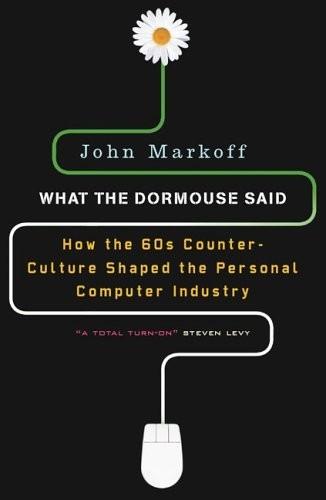
What the Dormouse Said: How the Sixties Counterculture Shaped the Personal Computer Industry
by
John Markoff
Published 1 Jan 2005
The idea of magnetic computing had been attractive to the project’s military backers, concerned that warfare would increasingly move off the planet and into space, where the bulky and unreliable vacuum tubes then in use would be inappropriate. The hunt was on for a new generation of electronic switches that could be squeezed into the cockpits of rocket ships bound for the moon or the nose cones of the ballistic missiles aimed at the Soviet Union. But the previous year both Texas Instruments and Fairchild Semiconductor had perfected new techniques for etching transistors directly onto wafers of silicon and churning them out as easily as if they were photographic prints, an innovation that had seriously tarnished the prospects of the SRI effort. Hew Crane had a remarkably curious and fertile mind and had been one of the first men to program and design computers.
…
Although the integrated circuit was first demonstrated at the Institute of Radio Engineers show in early 1959 by Texas Instruments, the more significant “planar” process used in making silicon chips was developed independently at about the same time by a group of engineers in Mountain View, California, at Fairchild Semiconductor, a small start-up firm that had been founded in 1957 with a $1.5 million investment from Fairchild Camera and Instrument. Six years later, Gordon Moore, one of the original Fairchild engineers, made an interesting prediction. Writing in the April 19, 1965, issue of Electronics magazine, Moore noted that the number of components that could be squeezed onto a single chip of silicon would continue to increase well into the future.
…
The son of a mechanical engineer who tinkered constantly in the garage and flew airplanes in his spare time, Ted Kaehler grew up steeped in science. He went to the newest of Palo Alto’s three high schools, Gunn, which was populated to a great extent by the children of Stanford professors, scientists, and engineers. Indeed, Gunn High backed up against the facilities of Fairchild Semiconductor, the company that in 1957 had begun the Valley’s grandest start-up tradition when the legendary “traitorous eight” had quit their jobs at Shockley Semiconductor to found the new company. Ted had decided to build his own computer in the mid-sixties after reading an article about fluidics in Scientific American.
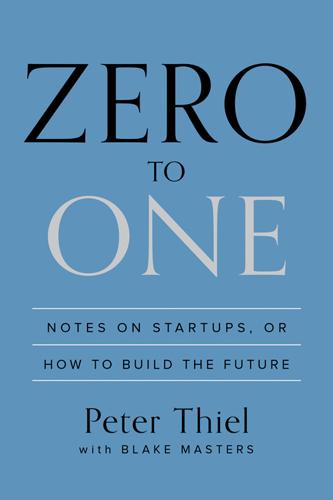
Zero to One: Notes on Startups, or How to Build the Future
by
Peter Thiel
and
Blake Masters
Published 15 Sep 2014
Today our challenge is to both imagine and create the new technologies that can make the 21st century more peaceful and prosperous than the 20th. STARTUP THINKING New technology tends to come from new ventures—startups. From the Founding Fathers in politics to the Royal Society in science to Fairchild Semiconductor’s “traitorous eight” in business, small groups of people bound together by a sense of mission have changed the world for the better. The easiest explanation for this is negative: it’s hard to develop new things in big organizations, and it’s even harder to do it by yourself. Bureaucratic hierarchies move slowly, and entrenched interests shy away from risk.
…
Energy Innovations Engels, Friedrich entitlement spending entrepreneurs, 3.1, 5.1, 6.1, 6.2, 7.1, 10.1 short-term growth focus of entrepreneurship, serial Epicurus equity compensation Eroom’s law ethics euro Europe, 2.1, 6.1 European Central Bank Evergreen Solar, 13.1, 13.2 evolution exploration extinction, bm1.1, bm1.2 Facebook, prf.1, 5.1, 6.1, 6.2, 7.1, 11.1, 14.1 Fairchild Semiconductor Fanning, Shawn Faust Federal Bureau of Investigation (FBI), 8.1, 12.1, 14.1 Fermat, Pierre de Fermat’s Last Theorem finance, indefinite financial bubbles, 2.1, 8.1 first mover advantage flatness Fleming, Alexander Forbes, 12.1, 12.2 Ford fossil fuels foundations co-founders compensation structure equity ownership, possession and control startups founders, 14.1, bm1.1 origins of traits of Founders Fund, 7.1, 7.2, 9.1, 11.1, 13.1 Fountain of Youth fracking fraud detection free marketeers free trade fundamentalists future: challenge of controlling of four possible patterns for Gaga, Lady, 14.1, 14.2 Gates, Bill, prf.1, 6.1, 6.2, 6.3, 14.1 General Motors, 9.1, 13.1 genius Gladwell, Malcolm, 6.1, 6.2, 6.3 globalization, 1.1, 1.2, 2.1, 2.2, 2.3, 8.1, 12.1, bm1.1 substitution as technology and global warming goals Golden Gate Bridge Google, 3.1, 3.2, 3.3, 4.1, 5.1, 7.1, 10.1, 12.1, 12.2 as monopoly, 3.1, 3.2 motto of Google Translate Gore, Al government, indefinite Great Depression Greenspan, Alan, 2.1, 8.1 Gross, Bill Groupon Guardian, 12.1 Hamlet Harrison, Brian, 13.1 Hegel, Georg Wilhelm Friedrich Hendrix, Jimi Hewlett, Bill Hewlett-Packard hipsterdom Hitchhiker’s Guide to the Galaxy, The Hoffman, Reid horizontal progress housing bubble, 2.1, 8.1 Howery, Ken HP Services Hughes, Howard Hurley, Chad Hyundai IBM, 3.1, 12.1 Igor incentive pay income inequality incrementalism, 8.1, 14.1 indefinite finance indefinite life indefinite optimism, 6.1, 6.2 indefinite pessimism, 6.1, 6.2 India Indonesia information technology, 1.1, 6.1, 12.1 Informix innovation, prf.1, 3.1 insider trading Instagram Intel internet, 2.1, 2.2 internet bubble, 2.1, 2.2, 2.3, 8.1, 13.1 Interstate Highway System Intuit investment iPad, 5.1, 14.1 iPhone, 3.1, 4.1, 5.1, 14.1 iPod, 6.1, 14.1 irrational exuberance Italy IT startups Ivan, Hurricane Jackson, Michael Japan Jennings, Ken Jennings, Peter Jeopardy!

The Long History of the Future: Why Tomorrow's Technology Still Isn't Here
by
Nicole Kobie
Published 3 Jul 2024
A machine that uses the von Neumann architecture – which is now all computers – fetches the instruction, then the data to be used and then performs the task, repeating as required. In 1947, researchers at Bell Labs, based just outside New Jersey and led by William B. Shockley, developed a smarter way to do this using transistors. However, this Nobel Prize-winning genius was a pain to work for, so eight of his employees5 left to form their own company, founding Fairchild Semiconductor and giving the local area the moniker Silicon Valley. Fred Terman – head of the engineering school at the nearby Stanford University – encouraged students to start their own companies, beginning a virtuous cycle of tech invention and reinvestment that was unmatched anywhere else in the world.
…
Now, chips are tiny, everything is connected and computing is ubiquitous. That’s the short version of computer history. But who paid for it all? Those first computers were war machines, and there’s no question that much of what we now see as computing and technology was initially funded by the military, including Fairchild Semiconductor. The US military realised academics could help the fight, wherever it was and whomever it was with, and so set up the Office of Scientific Research and Development, consultancy RAND and the Defense Advanced Research Projects Agency (DARPA), originally known as ARPA. The latter famously funded ARPANET, the precursor to the internet, and some of the projects we will explore shortly, including the Shakey robot, the driverless car challenge and Boston Dynamics’ robots.
…
ARDC was an early investor in Digital Equipment Corporation (DEC), the maker of many computers that powered the research we’re about to explore. By the 1960s, VC had reached the Bay Area thanks to Arthur Rock,7 who advised the “traitorous eight” (as the Bell Labs breakaway group became known) to set up Fairchild Semiconductor rather than merely find new jobs, and founded the area’s first VC company, turning $3 million into $100 million. Those successes were shared by the VCs, company founders and early employees, who would reinvest in themselves or other startups, keeping the money flowing – and growing. Indeed, 92 companies can directly trace their origins to Fairchild itself, including Apple and Advanced Micro Devices (AMD).
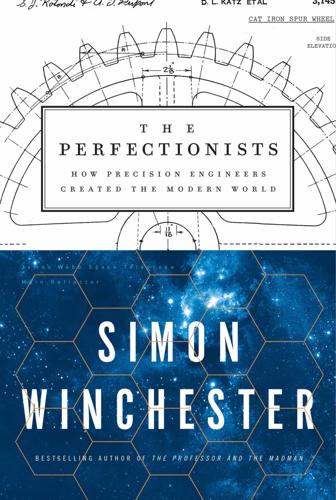
The Perfectionists: How Precision Engineers Created the Modern World
by
Simon Winchester
Published 7 May 2018
He is best known, however, for his forecast (made in 1965, when he was thirty-six years old and evidently a coming man) that from that moment onward, the size of critical electronic components would shrink by half and that computing speed and power would double, and would do so with metronomic regularity, every year. For now, the law advanced by Gordon Moore (seated) in 1965, when he ran Fairchild Semiconductor, in which he forecast that integrated circuit performance would double every year (a figure he later and prudently revised downward, to double every two years), still obtains, though most agree it is reaching the limits of possible performance. Photograph courtesy of Intel Free Press. An amended version of Moore’s law, as a colleague promptly named the pronouncement, has since assumed the status of Holy Writ, not least because it proved to be more or less correct, its forecasts uncannily accurate.
…
Within a year, a group of eight of his first hires, all complaining bitterly about his tyrannical and secretive behavior and his overtly paranoid mien (and his inexplicable and unexplained abandonment of silicon as the central semiconducting element of his firm’s research), stormed out. The group, later to be known by Shockley’s dismissive term for them, the Traitorous Eight, formed in 1957 a new company that was to change everything. Their start-up,* named Fairchild Semiconductor, would begin to create a whole raft of new silicon-based products, and then shrink and shrink them, and imprint upon them computing abilities that hitherto could be accomplished only by giant machines that occupied entire suites of air-conditioned rooms. The invention of the planar transistor was by all accounts one of Fairchild’s two most important achievements.
…
S., “Rhapsody on a Windy Night,” 13n Elizabeth, Queen, 195 encaged roller bearings, 33 Endeavour, Hubble repair mission of, 248–50 Endo, Miki, 323–24 ephemeris time, 350 escapement mechanisms, 33 Essen, Louis, 352 Euclid, Optics, 221 European Space Agency, 235, 245 Evans, Chris, 65 Evans, Oliver, 102 Everest, Sir George, 273n Explorer I, 261 extreme ultraviolet (EUV) radiation, 296–97 eyes: lenses in, 221–22 spectacles and, 221–23 fabs, or fabrication plants, 278 Intel’s Chandler fab (Fab 42), 275–76, 277–78 Fairbairn, Sir William, 53 Fairchild Semiconductor, 279, 284–88 witnessing and signing of notebook pages at, 285–86n Falk, O. T., and Partners, 184–85 Fallen Idol, The, 104 Feynman, Richard, 213n Fitzgerald, F. Scott, The Crack-Up, 307 fixtures (devices that hold workpiece absolutely secure), 100n, 102 flatness: of surface plates, 75–76, 119–20 of Whitworth’s billiard table, 124–25 flintlocks, see muskets, flintlock flour-milling machinery, 102 f number of lens, 219n Ford, Henry, 129, 131, 155–67, 157, 276 altruistic motives of, 155–56 early years of, 156–58 first motor car experiments of, 158–59 gauge blocks, or Jo blocks, utilized by, 169–71 mass production assembly line created by, 160–67 Royce compared to, 131, 155–56, 158–59, 165–66 Westinghouse threshing engines in origin story of, 156–58 Ford Foundation, 166 Ford Model T (Tin Lizzie), 129, 155–56, 157, 160–67 decreases in price of, 165, 167 magneto assembly for, 164–65 production line for, 160–67 Ford Motor Company, 152, 155–67 complaints about SKF bearings at, 170 Edsel, 236 gauge blocks, or Jo blocks, introduced at, 169–71 incorporation of, 131, 159 interchangeable parts essential at, 161n, 166, 170 Model A, 159–60 Model T, see Ford Model T (Tin Lizzie) precision’s role at Rolls-Royce vs., 131, 166–67 production line at, 160–65 “For want of a nail . . .” proverb, 244 foundries, electronic, 278n fountain pens, 58 France: Anglo-French rivalry over inventions and, 87n automobiles made in, 137–39 British wars with, 39n, 66, 73 decimal time in, 349n postrevolutionary Republican Calendar in, 333–34 social implications of precision as concern in, 90, 92, 117 standards for length and mass created by, 334–40; see also metric system system of interchangeable parts developed in, 87–94, 97, 98, 102 Franklin, Benjamin, 90, 222–23 French Academy of Sciences, 335 French Revolution, 59, 66, 92 frequency: Doppler effect and, 260–61 units of measurement and, 347–48 friction problem, in early clocks, 32–33, 35 Gainsborough, Thomas, 38–39 Galileo, 222, 332, 348 Galileo global navigation system, 270 Gascoigne, William, 77 Gaudy Night, 105 gauge blocks, or Jo blocks, 167–71, 169 author’s introduction to, 2–4 Ford Motor Company and, 169–71 interchangeable parts and, 170 Johansson’s invention of, 167–68 gauges: go and no-go, for ensuring cannonball fit, 87 in gun manufacture, 89, 98–99, 100 gearwheels: from Ancient Greece (Antikythera mechanism), 24–27 producing, 4–5 uses for, 5–6 wooden, in Harrison’s clocks, 32–33 Gee, 259, 262 George III, King, 36, 74n George VI, King, 194–95 Germany, turbojet-powered aircraft developed by, 179, 184, 190–91, 195 Gernsback, Hugo, 181 glassblowers, scientific, 7 Glass Menagerie, The (Williams), 255 Global Positioning System (GPS), 37, 265–74 Doppler-based navigation system as precursor of, 259–65, 267 Easton’s invention of, 260, 265–68 ever-more-precise calculations of, 272–73 freed for civilian use, 269–70 major achievements of nineteenth-century cartography checked against data from, 273n military uses of, 269 other nations’ similar systems, 270 Parkinson’s vision for, 267–68, 268 run from tightly guarded Schriever Air Force Base, 270–72, 271, 272 time data for, 352–53 GLONASS, 270 Gloster Aircraft Company: experimental aircraft powered by jet engine (Gloster E28/29, or Pioneer), 190, 191–94 Gloster Meteor fighters, 192 Goddard Space Flight Center (Maryland), 234, 250–51, 294 Gould, Rupert, 34n graphene, 298 grasshopper escapement, 33 gravitational constant, 298 gravitational waves, detection of, 20–21, 300–306 see also LIGO (Laser Interferometer Gravitational-Wave Observatory) gravity: Bramah’s lock design and, 57 clock mechanisms and, 33, 354 link between time and, 354–55 pendulum swings and, 33, 333, 349 Whitworth’s measuring machine and, 121, 122 Great Britain: Anglo-French rivalry over inventions and, 87n divergent paths of industry in U.S. vs., 114–15 trading fortunes and, 31 War of 1812 and, 81–85 wars fought by, in eighteenth and early nineteenth centuries, 39, 66–71 Great Exhibition of the Works of Industry of All Nations (London, 1851), 111–27, 112 arrangement of exhibits at, 115–16 Bramah’s “challenge lock” picked at, 112n, 124, 125–27 Crystal Palace built for, 112, 113–14 extraordinary zeitgeist of the time and, 111–13 financing of, 113 great big iron machines displayed at, 114–16, 117–18 Hunt’s concern about social implications of machines displayed at, 116–17 origin of idea for, 112–13n Whitworth’s instruments and tools displayed at, 118–23 Great Trigonometric Survey of India, 273n Greece, Ancient: astronomers from, 26n gearwheels from (Antikythera mechanism), 24–27, 36 lost-wax method in, 204 measurement of time in, 27 Greenwich Royal Observatory, Harrison’s clocks at, 30–37 restoration of, 34n winding of, 30–31 Gribeauval, Jean-Baptiste Vaquette de, 87, 89, 92, 98 Guier, William, 259–62 Gulf War of 1991, 269 guns: Blanchard’s lathe for stocks of, 101–2 both precision and accuracy crucial in making of, 105 breech-loaded single-shot rifles, 97–98 French system of interchangeable parts applied to American precision-based manufacturing of, 97–100 Johansson’s invention of gauge blocks, or Jo blocks, and, 167–68 machines first used to make components of, 98, 99–100 rudiments of mass production assembly lines in manufacture of, 161n Victoria’s opening shot in 1860 Grand Rifle Match, 107–10 see also muskets, flintlock Hall, Bishop Joseph, Works, 331 Hall, John, 97–98, 99–100, 102 handcrafting: Antikythera mechanism and, 24–25, 27 Blanc’s standardization system and, 89–90, 92, 98 eliminated in Ford’s assembly line, 165, 166–67 Japanese appreciation for, 308, 309–10, 314, 316, 319–29 machine tools vs., 35, 38, 60, 72–73, 98–99 at Rolls-Royce, 6, 131, 152–55, 165, 166 social consequences of move away from, 72–75, 89–90, 116–17 and survival of craftsmanship in France, 92 in Whitney’s gun factory, 96–97 Hanford, Wash., cleanup site, 19–20 Harpers Ferry Armory (Va.), 98, 99, 102, 161n Harrison, John, 24, 30–37, 47, 67, 105, 267n balance mechanisms in clocks made by, 33, 35 Board of Longitude prize and, 30, 31, 32, 34, 35–36 large pendulum clocks made by (H1, H2, and H3), 30–31, 32–34, 35 restoration of clocks made by, 34n sea watches made by (H4 and K1), 31–32, 34–36 testing of clocks made by, 34, 35–36, 39 winding of clocks made by, 30–31, 33, 35 Harrison, William, 35–36 Hattori, K., and Company, 311–13 Hattori, Kintaro, 310–12 Heinkel Company, 184, 195 Heinkel He 178, 190–91 Heisenberg, Werner, 212–13, 298 Die Physik der Atomkerne, 275 Herbert, George, 244n Herschel family (William, Caroline, John, and Alexander), 229–30n Hiroshima, atomic bomb dropped on, 281 Hitler, Adolf, 187, 191 Hobbs, Alfred C., 124, 125–27 Hoerni, Jean Amédée, 284–85, 286n, 287 Hooker, Sir Stanley, 139 hour: defining, 28, 334, 349 displayed by mechanical clocks, 28–29 Hubble, Edwin, 2321 Hubble Space Telescope, 229–53, 230 cost of, 232 delays in launch date of, 243n first images from (First Light), 234–35, 251 flaw in main mirror of, 234, 234–43; see also Perkin-Elmer Corporation High Speed Photometer in, 247, 248, 250 money matters and, 237n news of failure announced to press, 235–36 placed into orbit, 230–32, 233 public reverence for, 229–30 repair of, 244–51 second images from (Second Light), 251–52 size and appearance of, 232–33 teacup affair and, 238 ultimate success of, 252–53 Wide Field and Planetary Camera in (Wiffpic), 247–48, 249 Hucknall Casings and Structures plant (Rolls-Royce), 209–10, 211, 229 Hunt, Robert, 116–17 hydraulic press, 57–58 India, Great Trigonometric Survey of, 273n Individual and the Universe, The (Lovell), 215 Industrial Revolution, 39, 41, 44, 51, 73, 74n, 111, 304 integrated circuitry, 286–99 devices made possible by, 287–88 Noyce’s work in genesis of, 286, 287, 288n printing with photolithographic machines, 277, 277–78, 286–87, 294 see also microprocessor chips; transisters Intel, 288–92 ASML machines bought by, 275–76, 277, 277–78 Chandler, Ariz., fabrication plant of (Fab 42), 275–76, 277–78, 291–92 first-ever commercially available microprocessor made by (Intel 4004), 288–89, 290, 292 founding of, 288 mutual dependency of ASML and, 278 interchangeable parts, 63, 71, 105, 114, 276, 312 in Ford’s mass production assembly lines, 161n, 166, 170 for guns, 84–85, 86, 87–100 system of, developed in France, 87–94, 97, 98, 102 interferometers: classic, 300 laser, 242–43 LIGO (Laser Interferometer Gravitational-Wave Observatory), 20–21, 299–306, 303, 305 null connector as, 240–41 internal combustion engine, 158 aircraft powered by, 178–213; see also jet engines International Astronomical Union, 344 International Committee on Weights and Measures (1960), 345–46 International Metre Commission (1872), 338 International Prototype Kilogram (IPK), 339 International Prototype Meter (IPM), 339 International System of Units (SI), 16–17n, 346 iron, 38, 39 cannon making and, 39, 41–44 Japanese handcrafted objects made of, 309–10 lathes made of, rather than wood, 61, 64 machines to manufacture pulley blocks made of, 71 smelting and forging, 40–41, 43, 49 steam engines made of, 46, 48–52 Wilkinson’s cylinder-boring technique for, 42–44, 49–52, 304–6 Iron Bridge of Coalbrookdale, 41 Ito, Tsutomi, 321–22 Jacula Prudentum, 244n James Webb Space Telescope, 231n, 294, 295, 299 Janety, Marc Étienne, 336, 337 Japan, 308–29 bamboo objects handcrafted in, 325, 326 fondness for handcrafting in, 308, 309–10, 314, 316, 319–29 Great Tohoku Earthquake and Tsunami in (2011), 322, 323–25 Living National Treasures of, 325–26 rigorous appreciation of perfect in, 308–9, 314 timekeeping traditions in, 310–11 urushi (handmade lacquerware) of, 326–28, 327 Westernization in, 310, 311 see also Seiko Japanese Railways, 313–14 Jay, John, 92–93 Jefferson, Thomas, 52 Blanc’s flintlock system and, 90, 92–94, 96 Whitney’s contract and demonstration and, 95, 96 Jet Age, inauguration of, 193 jet engines, 173–213 alloys for blades in, 200, 201, 203 Americans’ initial lack of interest in, 179 bird strikes and, 203n British public told of, 194 complexity within, 196–97 experimental aircraft fitted with, 190, 191–94 financial backing for development of, 184–85, 189 first passenger and freight aircraft with, 198–99 French forerunner of, 179 German development of, 179, 184, 190–91, 195 hot environment in, 187, 199–201 invention of, 178–94, 179; see also Whittle, Frank keeping blades cool inside, 197–98, 198, 199–203, 204, 206 manufacturing process for single-crystal blades in, 203–6 no tolerance whatsoever in making of, 206–7 power of piston engine vs., 182–83 propulsive jet of air produced by, 182, 187 Quantas Flight 32 and failure of, 174–78, 178, 196, 207–12, 208, 229 revolutionary novelty of idea for, 186 Rolls-Royce, 196–213, 205; see also Rolls-Royce jet engines single moving part in, 180 stress of takeoff and landing cycles on, 210 testing of prototypes, 187–90 turbine blade efficiency and, 198 Whittle’s eureka moment and, 182–83 Whittle’s patent and, 183–84 Jet Propulsion Laboratory, or JPL (Pasadena), 247–48, 350 Jo blocks, see gauge blocks, or Jo blocks Johansson, Carl Edvard, 3, 167–71 bought out by Ford, 170–71 gauge blocks, or Jo blocks, created by, 167–68 Johns Hopkins University: Applied Physics Laboratory (APL) at, 259–62 Space Telescope Science Institute at, 234, 251 Johnson, Claude “CJ,” 148–50, 151 Jones, Alexander, 27 Kai Tak Airport (Hong Kong), 195–96 kelvin, definition of, 346 Kiev, author photographed with Rolls-Royce outside city gates of, 133–34 Kilby, Jack, 288n kilogram, 336–40, 346–47 cast in platinum as étalon (standard), 337, 339–40, 348 now defined in terms of speed of light, 348 relationship of meter to, 336–37 see also metric system Kilogram of the Archives, 336 Klein bottle, 7n Kodak, 237n Korean Air Lines Flight 007, shooting down of, 269 krypton, standard unit of length based on, 344–45 Kyoto, temples of, 308 landscape photography, lenses for, 226 lasers, 351 in LIGO’s measuring instrument, 301, 305, 305–6 in manufacture of microprocessor chips, 293–94, 296 presumed to be precise, 242 lathes, 61–65 for gun stocks, designed by Blanchard, 101–2 invention and evolution of, 61 iron vs. wood, 61, 64 Maudslay’s improvements to, 61–65 screw-making, 63–64 for shoe lasts, designed by Blanchard, 19n, 101 slide rest and, 62–63, 64–65 latitude, determining, 30n leadscrews: of bench micrometers, 77–78 of lathes, 61, 62–63 Leica, 221, 222, 227–28 cameras owned by author, 219–20 lenses made by, 220, 224–25, 227–28 Leitz, Ernst, 222, 227 Leland, Henry, 168 length, standard unit of, 334–40 cast in platinum as étalon (standard), 336, 337, 339–40 mass in relation to, 336–37 meridian of Earth and, 334–36, 337 now defined in terms of time, 348 pendulum swing and, 332–33 redefined as wavelength of light, 342–45 Wilkins’s proposal for, 332–33 see also metric system Lenin, V.

Palo Alto: A History of California, Capitalism, and the World
by
Malcolm Harris
Published 14 Feb 2023
Marylin Bender and Selig Altschul, The Chosen Instrument: Pan Am, Juan Trippe, the Rise and Fall of an American Entrepreneur (New York: Simon & Schuster, 1982), 111. 21. Ibid., 138. 22. Christophe Lécuyer and David C. Brock, Makers of the Microchip: A Documentary History of Fairchild Semiconductor (Cambridge, MA: MIT Press, 2010), 95. 23. Leslie R. Berlin, “Robert Noyce and Fairchild Semiconductor, 1957–1968,” Business History Review 75, no. 1 (2001): 81. 24. Craig Addison and Jay T. Last, “Oral History of Jay Last” (Computer History Museum, September 15, 2007), 15, https://www.computerhistory.org/collections/catalog/102658211. 25.
…
In one particularly sophisticated move, he bought a 20 percent share in Mexicana de Aviación, which began flying Fairchild planes, only for Pan Am to buy the whole thing five years later, in 1930, earning him money three different ways in the middle of the Depression.20 He was a canny operator, and so was his offer to the eight rebels: He would give them $1.38 million and let them run the company for two years.21 If it worked, he would buy them out for $300,000 each (around $3 million in 2022), and they would become employees. If it didn’t work, he would dump the whole enterprise. As a potential future subsidiary of Fairchild Camera and Instrument Corporation it was to be called Fairchild Semiconductor—none of this “Shockley” nonsense. They would stay in Palo Alto, where they had already begun work. The group agreed, appointing Noyce a sort of first-among-equals, with Moore as his deputy. It definitely worked. Within a year of opening shop, Fairchild shipped circuits to IBM. Even though it was a small firm to be supplying such a big one, Sherman ensured the deal by meeting with the IBM CEO, Thomas Watson Jr.
…
The difference is that Fairchild’s process was “monolithic”: it established the metal reconnections by dissolving a film of aluminum over an etched pattern, while the TI model required manual wiring. From a production point of view, Noyce’s was workable in a way that Kilby’s wasn’t. It’s an advantage that’s representative of Fairchild Semiconductor’s edge in the industry, which it acquired by shaping its process for military and space needs while still prioritizing production efficiencies. Fairchild’s immediate success spoke to Shockley’s vision; it also dramatized just how bad his management truly must have been to single-handedly inhibit one of the era’s strongest corporate ventures.
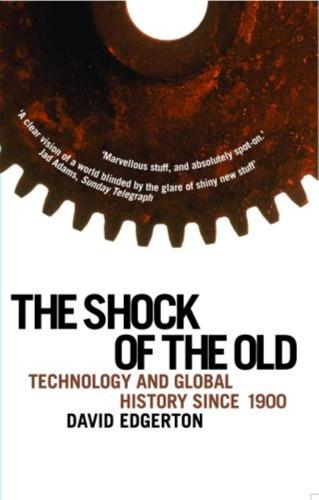
The Shock of the Old: Technology and Global History Since 1900
by
David Edgerton
Published 7 Dec 2006
Transistor development and production were quickly taken by Bell staff to smaller and newer enterprises. Texas Instruments, with a former Bell employee, made the first silicon transistor in 1955. William Schockley, one of the inventors of the transistor, set up a semiconductor firm in California. Experts left to form Fairchild Semiconductor in 1957, the company that introduced the key planar process for the making of integrated circuits. Fairchild and Texas Instruments were granted key patents in 1959. Fairchild employees set up most of the new semiconductor enterprises of the 1960s, largely in the area that became known as Silicon Valley, which had since the 1930s welcomed new industries and had strong connections to new universities and, critically, the expanding US military.
…
It is against that background that we should consider easily the most cited piece of evidence for a rapidly increasing rate of change in technology in recent years – the power of computing. It has proceeded at an astonishingly fast rate. In 1965 Gordon Moore, the research and development director of Fairchild Semiconductor, and soon to be one of the founders of Intel, suggested that the number of transistors on an integrated circuit that could be economically made would continue to grow at the same rate as in the early 1960s. In 1975 he thought growth would continue, but at half the rate he was measuring in 1965.
…
Brazilian aircraft carrier Minas Gerais (Tom Pietrasik) Index Figures in italics refer to captions; those in bold to Tables. 2,4-D herbicide 162–3 17 of October (ship) 94, 124 A A-bomb see atomic bomb abattoirs 173 abortificients 23 abortion 23 Abu Ghraib prison, Iraq 156 academic science, and invention 185–7 acid rain 121 acupuncture 49 Acyclovir 163 advanced gas-cooled reactors (AGRs) 21 AEG 193 aeronautical research 186 aeroplanes ix, xiv, 1, 3, 6, 28, 159, 191 appearance as a new technology 31 civil aircraft 117 and civilianised warfare 139 downplaying of military origins 142 hypersonic 38 killing by 146 and nationalism 116 powered aeroplane innovated in the USA 111 primarily a weapon of war 116, 158 R&D 197 supersonic 38 see also aviation; flight Afghanistan 145, 153 Africa death rate per car 27 guerrilla rebellions 152–3 malaria 27 sub-Saharan income per head 207 African National Congress 122 AGA range 57 Agency for International Development (AID) 157 agent orange 163 Agfa 130, 193 Agfacolor 130 agricultural revolution 64–6 agriculture family farms in the USA and USSR 62–4 horsepower xiii, 33–4 output 53 productivity 65, 74 shift to industry 52 Agrigento, Sicily 78 AIDS 25, 27, 49, 164, 207 Air France 21–2 air transport, cheap 115 air-conditioning 170 aircraft see aeroplanes aircraft industry 116, 158 airships 38, 50, 199 Al-Khahira (Cairo) jet trainer 125 Alang Beach, Gujarat, India 208 Albania 118, 131–2 Aliano, Basilicata, Italy 122–3 alkali 190 Allen & Hanbury 196 Almirante Latorre (battleship) 92 alternating current (AC) electrical systems 8–9, 176 alternatives assumption that there are no alternatives 6–7, 8 comparable alternatives 7–8 using a thing marginally better than alternatives 8 American Civil War 146 American Monarch (ship) 167 Amgen 202 AMO factory, Moscow 126 amodiaquine 26 analytical labs 192 animals husbandry 66 hybrids 190 killing 161, 164, 172, 173–6 anti-aircraft guns 14, 15 anti-malarials 164, 199 anti-missile systems 155–6 anti-virals 163 antibiotics 163, 190 antifungal treatments 164 apartheid 122 Apocalypse Now (film) 152 Arab oil embargo (1973) 122 Arab–Israeli wars 146–7 architecture ‘post-modern’ viii vernacular 41 Argentina builds a jet fighter 124–5 meat exports to Britain 172 national industrial development 118 the picana eléctrica 157 Argentina (liner) 124 Armament and History (Fuller) 141 Armenians 178–9 Armour meat packers 171, 172 Armstrong, Neil viii artillery fire 143, 144, 190 asbestos 42, 43, 211 asbestos-cement 42, 43 Asia: rice production 64–5 astronauts viii AT&T 193, 195 Atebrin (mepacrine) 25 atomic bomb xiv, 15–19, 21, 114–15, 117, 123, 138, 139, 158, 159, 185, 198, 199 atomic power 3, 6 Auschwitz–Birkenau extermination camp, Poland 121, 165, 180–81, 182 Australia maintenance and repair 80 meat trade 172 national industrial development 118 autarky 115, 116, 117–19 Autochrome process 193 autogiro 103 automation 2, 3, 85 Aventis 196 aviation 1, 19, 143 choices in aircraft construction 10 civil 6, 116 and empires 132 engine types 10 maintenance 87–91, 89 power of 141 supersonic stratospheric 3 see also aeroplanes; flight Axis Powers 18 AZT 164 B B-29 bombers 13, 15, 16, 123 B-52 bombers viii, ix, 95, 152, 155 ballistic missiles 154 Bangkok, Thailand long-tailed boats 47 Science Museum 28 Bangladesh motorised country-boats 48, 61 rice production 65 shipbreaking 208 barbed wire 146 Barham, HMS 93–4 BASF 119, 120, 121, 193 battleships x, xiv, 92–4, 93, 97, 141, 142, 143, 148–9, 154 Bayer 193, 194 Bayh–Dole Act (1980) 187 Beechams 196 Beef Trust 171 Belgrano (ARA General Belgrano) 94 Bell Labs 195, 196 Bell telephone 132 Belzec extermination camp, Poland 179 Bergius, Friedrich 120 Berlin–Baghdad railway xi bicycles x, 4, 45, 50–51, 58, 61 bidonvilles 41 Billingham plant, Stockton-on-Tees 119, 121 biological warfare 149 biotechnology 1, 185, 188, 192, 196, 202–3 Biro, Ladislao José 103 biro pen 103 birth control 23 Bishop, Billy 114 Bloodhound anti-aircraft missile ix Blue Star Line 172 boats fishing 49 long-tailed 47–8 motor torpedo 68 motorised country-boats 48–9, 61 bomber aircraft viii, ix, x, xiv, 9, 13, 13–16, 18, 95, 97, 123, 143, 147, 148, 150, 152, 155 Bomber Command 14 bombing atomic 15–19 conventional 12–15 ‘dumb’ bombs 155 ‘smart’ bombs 155 targets 12–13, 14, 15, 16 Borges, Jorge Luis 94 boundaries 117, 131, 132 branding 71 Braun, Werner von 18 Brazil (film) 75 Brezhnev, Leonid 102 Bristol Jupiter engine 88 Britain agricultural yields 64 autarchy 118 aviation 104, 111 car production 69 coal consumption ix cotton industry 36–7, 105, 190 economic growth 206 executions 176 horsepower in First World War 35 maintenance and repair 80 meat imports 172 output per head 109 privatisation of railways 87 R&D 109 railway workshops 98 steam power ix, 105 television 131 truck production 69 two-way movements between Britain/France and Britain/India 111–12 British Airways 21–2 British Electrical Development Association 56 British Empire 135 Brunnental, Soviet Union 62–3 Bumper V-2 rocket 2 Burmese army 145 Burney, Commander Sir Charles Dennistoun 167 buses ix, 96, 98, 191 C cable TV x, 49 Calcutta: rickshaws and cycle-rickshaws 45–6 Cambodia 182 Camden Market, London 33 camels 35 caravans 28, 30 cameras, replica 50 Canada: maintenance statistics 79 cap, the 24 Cape Canaveral, Florida 2 capitalism 76, 128 carbon monoxide 121, 179–80 Carrier, Dr Willis H. 170 Carrier Corporation 170 carrier pigeons 43 Carson, Rachel: Silent Spring 163 carving 28 CASA company 125 cavalry units 35 CDs 7 cement ix, 45 ceremonial occasions: use of reserve technologies 11 Césaire, Aimé 133 CFC gases 211 Chamoiseau, Patrick: Texaco 42–3 Cheliabinsk, Soviet Union 126 Chelmno extermination camp, Poland 179 chemical warfare 164 chemicals 1, 105, 188, 191, 192 chemistry 2, 130, 185, 186 organic 185 synthetic 4, 185 Chicago meatpackers 129–30, 171–5 chickens 66, 163, 164, 174–5 China agriculture 73 and Albania 131–2 atomic weapons as ‘paper tigers’ 19 autarchy 118 bicycle production 45 collective farming abolished 73 control of the internet 137 cotton textiles 65 Cultural Revolution 45, 72 economic growth 109, 112, 207 economy 73 executions 177 export of containers 74 foreign enterprise 137 ‘four big belongings’ 58–9 Great Leap Forward 44–5, 73 a hydraulic society 76 imitation of foreign technologies 112 industrialisation 73 links with Soviet Union (1949–60) 131 low-tech exports 137 Maoists 152 nationalism 137 old small scale technologies 72–3 pig production 66 produces Soviet technology 44 promotion of small-scale rural industries 72–3 rural industries 73 second Sino–Japanese War 140, 179 steel production 73 ‘technological dualism’ 44 Chinese Communist party 73 Chinese First Automotive Works 126 chlorinated organic compounds 161–2 chloroquine 26, 164 cholera 25 Ciba 196 Ciba-Geigy 26 Cierva, Juan de la 103 cinema ix, 203 cities of the poor world 39–40 clinical trials 11–12, 201 clothes: trade in old clothes 81 coal consumption ix hydrogenation of 120, 121–2, 186, 199 Cold War 123 ‘cold-chains’ 170 collectivisation 63, 64, 127 colonialism 39, 134 Common Market 119, 175 communications technologies xiv, 2 Communist movement 60 Companhia Energética de Sao Paulo 99 computer-numerically-controlled machine tool 158–9 computerisation 2 computers ix–x, 1, 158 analogue 7, 9 cheap PCs 71 digital 3, 6, 7, 9 initial cost as a percentage of lifetime cost 78 Concorde 21–2, 38, 96–7 condoms 1, 22–3, 24, 25, 49, 190 Congo War, second 146 contraception vii, x, 1, 22–5, 49, 190 cooking ranges 57 copper 73 corn, hybrid 64 corporate research laboratories 192 corrugated iron 41–3, 50–51, 78 cost-benefit analysis 11–12, 21, 142 cotton industry ix, 36–7, 65, 105, 136 Cotton Industry Act (1959) 38 credit agreements xv creole technologies xii, 39, 43–5, 46–7 creolisation of technology 85 Cuba 36, 207 Cudahy meat packers 171 cultural lag viii, 141, 212 Cultural Revolution 45, 72 cultural significance, measurement of 1 cycle-rickshaws 46–7, 48–9, 191 D Daktarin 164 Dalén, Nils Gustav 57 Datong Locomotive Works, China 50 DC-3 airliner 88, 197 DC-4 aircraft 197, 198 DC-6 aircraft 88 DC-8 jet 88, 197 DDT 26–7, 38, 162–3, 162 De Niro, Robert 75 de-globalisation 212 dependence 39 depression 37 Derwent jet engine 123 design 71 Detroit automation 86 Deutsches Museum, Munich 104 development labs 192 Dewoitine, Emile 125 diaphragm 24 diesel engine 3 differential analysers 7 diffusion vii Digital Signal Processing chip 195 direct current (DC) electrical systems 8, 9, 176 division of labour 72 Dnieper complex, Soviet Union 127 dockyards 91 domestic equipment 81 domestic production 56 ‘domestic science’ 56 domestic servants 56 domestic technologies xiv, 4, 56 domestic work, scientific organisation of 56 donkey carts 28, 30, 49 Dornier, Claude 125 douches 23 Dreadnought (battleship) 92 dreadnoughts 92, 148 Dufay process 130 Du Pont 20, 158, 193, 194–5 Durex 25 E East Germany: hydrogenation 121 Eastman Kodak 130, 193 economic growth 5, 52, 108, 109, 110, 206–7 economic history 3 economies of scale 71 ECT (electroconvulsive therapy) 38 Edison, Thomas 176 Edwards Air Force Base, California viii Egypt Ancient 76 aviation 126 Einsatzgruppen 179 ELAS resistance movement 60 electricity x, 1, 3, 6, 76–7, 185, 188, 190, 192 increased usage 5 electrification 2, 6, 32 electrocution/electric chair 165, 176, 177, 178 electronic communication: change in price 6–7 electronics 3, 99, 105, 191 Elizalde 31 Elliot, Gil: The Twentieth Century Book of the Dead 145–6 EMI 130, 131 empires 132, 134 employment in agriculture 53 in industry 53 service industries 53, 70 enclaves for European colonisers 134 engineering 19 masculinity of 101 mass production 67 engineers xiii, 100–102, 192–3 state 101 engines jet 10 petrol 10 Erikson, Gustaf 95 Europe car accidents 27 car production 69, 70 uptake of new technologies 32 European Union (EU) 200, 206 Eva Péron (liner) 124 F Fairchild Semiconductor 195, 203 Fairfree (factory stern trawler) 167 Falklands war 94 Far East growth rates 207 Faust, Mrs Mary 54 fertilisers 44, 45, 50, 64, 65, 67, 119–20 fertility control 23 feudalism 76 Fiat 69, 127 fibre-optic cables 7, 49 firing squads 176 First World War 31, 34, 34–5, 130 battleships x, 148, 149 casualty rates 146 chemical warfare 164 a chemist’s war 138 deaths 143 developments in artillery practice 143 H.
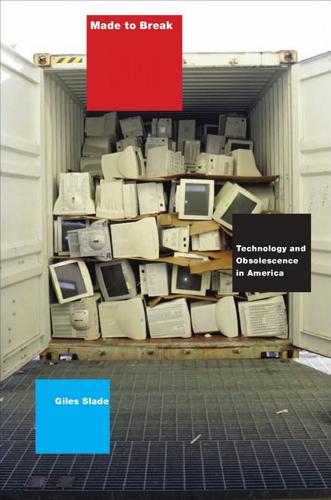
Made to Break: Technology and Obsolescence in America
by
Giles Slade
Published 14 Apr 2006
These integrated circuits now came from several companies, including Texas Instruments, Philco-Ford, and Fairchild Semiconductor. Before Apollo, Robert Noyce at Fairchild had eschewed any involvement in military contracts like the Minuteman. The Apollo moon mission was a completely different matter, however.13 NASA did not share the military culture that, Noyce felt, stifle innovation, promoted bad science, and championed limited solutions like the micromodule. NASA, he felt, was a unique scientifi enterprise. Together, Noyce and Fairchild Semiconductor jumped eagerly into the Apollo moon mission. As a result of joint patronage by the Minuteman and Apollo programs, semiconductor manufacturers dropped the price of their integrated circuits from $120 per chip to about $25 between 1961 and 1971.
…
During this decade, the number of circuits that could be crammed onto a single chip increased dramatically. This steady increase in the maximum number of circuits on a single chip had followed a predictable curve since 1959. The firs person to notice this regularity was Gordon Moore, director of research at Fairchild Semiconductor and one of its eight co-founders (including Noyce). The Moore-Noyce friendship had begun when they met as young engineers working at Shockley Semiconductor Industries. Together with six of their fellows, Noyce and Moore left Shockley in 1957 over an ongoing management dispute. These eight men found, as had John Bardeen and Walter Brattain, inventors of the firs transistor, that Shockley was a less than ideal supervisor.

The Battery: How Portable Power Sparked a Technological Revolution
by
Henry Schlesinger
Published 16 Mar 2010
RCA and the Signal Corps’ joint announcement at the Institute of Radio Engineers (a predecessor component of the Institute for Electrical and Electronics Engineers, or IEEE) convention was overshadowed by Texas Instruments’s debut of the first integrated circuit (IC)—the computer chip. And the computer chip was not an incremental advance, but a substantial technological leap forward. Not only was it significantly smaller than the transistor, but almost from the start its potential seemed nearly unlimited. TI wasn’t the only player in the new field. Fairchild Semiconductor—financed through the defense contractor, Fairchild Camera and Instrument Corp.—was also in the game. In fact, Fairchild’s patent for the technology was filed before TI’s by several months, but it was held up because of wording. TI had simply written its application more narrowly, speeding the approval process.
…
This was made clear a few years ago when a group of electrical engineering students at the University of Pennsylvania decided to commemorate the fiftieth anniversary of ENIAC by replicating its entire processing architecture, all 30 tons of 18,000 vacuum tubes, 7,200 diodes and 1,500 relays on a single computer chip that measured a petite 7.44 by 5.29 square millimeters. WRITING FOR ELECTRONICS MAGAZINE IN April of 1965, Gordon Moore, who was still heading Fairchild Semiconductor’s R&D effort, before leaving to cofound Intel, predicted a doubling of circuits in ICs every two years and saw no reason why that shouldn’t continue far into the future. “The complexity for minimum component costs has increased at a rate of roughly a factor of two per year,” he wrote. “Certainly over the short term this rate can be expected to continue, if not to increase.
…
See specific countries and inventions Evans, Mathew, 148 Ever Ready, 182, 183 Eveready, 179, 183, 214–15, 220, 229, 231, 249, 252, 272 Eveready Hour, The, 220 experimentation, 6, 11–38, 78, 186 early–mid nineteenth century, 46–50, 51–68, 69–96, 97–131 early–mid twentieth century, 198–212, 213–50 human, 53–56 mid–late nineteenth century, 108–130, 131–40, 141–68, 169–94 trial-and-error, 149 See also science; specific inventors Fairchild Semiconductor, 264 Faraday, Michael, ix, 69–78, 79, 80, 81, 87, 120, 121, 126, 149, 176, 177, 186, 210, 223 Experimental Researches in Electricity, 149 First Law of Electrolysis, 239, 249, 271, 272 motor, 75, 75, 76–77, 92 “farm radios,” 224 Fessenden, Reginald, 209–240 Field, Cyrus, 118–21, 123, 126 financial industries, 106, 116, 219 speculation, 134–39 telegraph and, 133, 134–39 Fitzgerald, F.
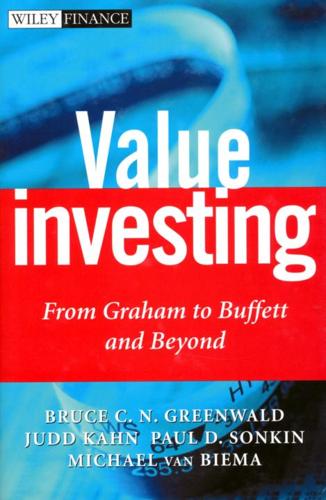
Value Investing: From Graham to Buffett and Beyond
by
Bruce C. N. Greenwald
,
Judd Kahn
,
Paul D. Sonkin
and
Michael van Biema
Published 26 Jan 2004
In 1956 the three earned the Nobel Prize for their efforts. In that year, Bell Labs begat Shockley Laboratories, as Shockley left to set up his own firm. One year later, eight of Shockley's best engineers departed to start a new firm with the financial backing of Sherman Fairchild. Thus Shockley Laboratories begat Fairchild Semiconductor. At Fairchild, Robert Noyce managed to combine multiple transistors on a single piece of silicon, inventing what became known as the integrated circuit. Fairchild, by contrast, began to disintegrate as talented employees began to strike out on their own. In 1967 Fairchild begat National Semiconductor when Charles Sporck left to found this new firm.
…
One year later, Noyce and Gordon Moore, head of R&D, decided it was time for them to leave, frustrated that their most promising innovations seldom came to fruition. They made a telephone call to Arthur Rock, a venture capitalist before the term was invented, who raised enough money in two days for them to start on their own. Thus Fairchild Semiconductor begat Intel. Intel's initial business was designing and manufacturing computer memory chips. Although it developed its first microprocessor, the 4004, in 1971, the company's bread and butter were integrated circuits that replaced magnetic core as the memory components of mainframe computers.
…
It had not discovered the particular technology that made that early generation of memory chips successful, nor was it the only company in the neighborhood-soon to be known as Silicon Valley-able to produce them. But it successfully combined product design, process engineering, and customer service to emerge quickly as the largest player in the memory chip game. Fairchild Semiconductor, from which both the engineers and the inventions had sprung, became less significant. In 1971 Intel became a publicly traded company, when it raised $7.2 million by selling 307,000 shares in an IPO. It lost money on its operations in its first year (it did earn interest and nonoperating income), then began a succession of profitable years that lasted until 1985.
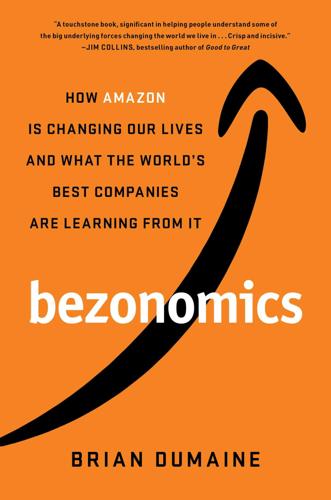
Bezonomics: How Amazon Is Changing Our Lives and What the World's Best Companies Are Learning From It
by
Brian Dumaine
Published 11 May 2020
When Henry Ford proved in 1913 that the moving assembly line worked, a handful of other carmakers copied the process and eventually built the largest car industry in the world. Hundreds of small auto shops, filled with skilled craftsmen painstakingly assembling vehicles one at a time, held on for a while, but then closed their doors completely. In 1961, a California start-up named Fairchild Semiconductor started selling the first microchip, an invention that allowed the miniaturization of electronics and led to corporations using computers to expand globally at a level never before seen. That breakthrough eventually put armies of accountants, middle managers, and telephone operators out of work.
…
By 2022, there will be: “Growth of the Internet of Things and in the Number of Connected Devices Is Driven by Emerging Applications and Business Models, and Supported by Standardization and Falling Device Costs,” Internet of Things Forecast, Ericsson.com, https://www.ericsson.com/en/mobility-report/internet-of-things-forecast. When Henry Ford proved: “Celebrating the Moving Assembly Line in Pictures,” Ford Media Center, September 12, 2013, https://media.ford.com/content/fordmedia/fna/us/en/features/celebrating-the-moving-assembly-line-in-pictures.html. In 1961, a California start-up: David Laws, “Fairchild Semiconductor: The 60th Anniversary of a Silicon Valley Legend,” Computer History Museum, September 19, 2017. Tim Berners-Lee, a computer scientist: “World Wide Web,” Encyclopaedia Britannica, https://www.britannica.com/topic/World-Wide-Web. The consulting firm McKinsey: James Manyika et al., “Jobs Lost, Jobs Gained: What the Future of Work Will Mean for Jobs, Skills and Wages,” McKinsey Global Institute, November 2017.
…
See wages Eno, Brian, 71 e-Palette self-driving minivan, 175 ethical challenges, and big data, 90–91 European Union, 259 Everything Store, The (Stone), 3, 32, 42, 96, 185, 274 executives at Amazon Bezos’s challenges to, 53–54 confrontational culture of Amazon and, 54–57 selection of for running new businesses, 226 shadow program and, 51–53 S-team and, 15, 52–53 succession and, 53 work-life harmony and, 82–83 experiential retailing, 196–97, 200, 270 FAA, 178–79 Facebook addictive nature of, 17, 18 AI-driven flywheel at, 88 AI skills and customer knowledge of, 8, 270 antitrust critics and proposed breakup of, 264 customer data from, 120 digital advertising and, 220 economic power of, 265–66 identification with founder, 53 number of employees at, 123 public perception of Zuckerberg at, 57, 58 reviews for a fee available on, 158 Sephora’s catalogs on, 206 value of founder of, 241 FaceFirst, 197–98 facial recognition software, 197–200 Alibaba’s use of, 198, 199 Amazon’s tools for learning about, 218 concerns about using, 198–99 controversy over contract for, 35–36 customer recognition in stores using, 197–98 Google employees’ objections to, 58 payment systems using, 198–99 possible future uses of, 199–200 privacy issues and, 198–99 retailers’ use of, 197–200 security of, 199 Fairchild Semiconductor, 125 Fair Shot (Hughes), 250 fake reviews, 21, 151, 153, 158 FakeSpot, 159–60 fashion line, from Amazon, 201 fashion photo studios, 201 Federal Aviation Administration (FAA), 178–79 Federal Trade Commission (FTC), 158 FedEx, 23, 98, 169–70, 172, 174 finance industry, 231–36 Amazon as financial service business in, 234 Amazon’s entry into, 231–32 Amazon Visa card and, 234 Ant Financial in China as model for Amazon in, 234–35 Bezos’s focus on, 232 customer data in, 232–33 Health Savings Account debit cards in, 231 mobile payment business challenge for Amazon in, 235 1-Click purchasing and, 232–33 regulatory challenges in, 235–36 robo-advisory services in, 235 small business loans and, 233–34 financial problems, and shopping addiction, 18–19 Financial Times, 63 Fire Phones, 64, 82 Fire TV, 23, 26, 31, 66, 80, 81, 100, 104, 119, 237 Fiverr.com, 158 5G technology, 270 flywheel paradigm.
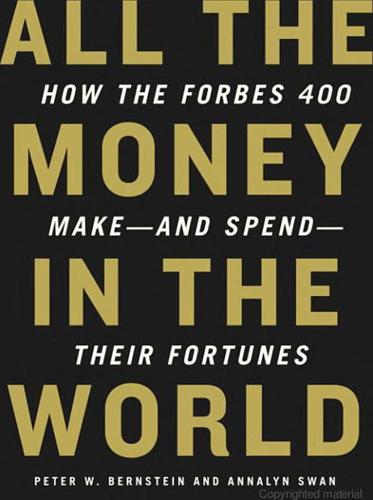
All the Money in the World
by
Peter W. Bernstein
Published 17 Dec 2008
Following Terman’s advice, Shockley assembled an especially talented team for his new company, the Shockley Semiconductor Laboratory. However, his difficult personality drove off many of his most talented engineers. A breakaway group, whom Shockley later referred to as the “Traitorous Eight,” left his company to start the Fairchild Semiconductor Company in 1958.*7 That company was to have a seminal influence on the entrepreneurial culture of the Valley. Fairchild spawned dozens of spin-off companies and begat a culture in which it was common for people to work several years at a place and then go off and start their own company. In fact, today some Valley companies have a genealogical chart hanging in their offices that shows the history of the Valley’s various companies and their founders leading back to Fairchild.
…
But through contacts, the founders of Fairchild made their way to New York investment banker Arthur Rock (whose first appearance on the Forbes 400 was in 1983, with a net worth of $160 million) and convinced him to take a look at what they were doing. With his first investment, Rock hit pay dirt. He arranged funding29 for Fairchild Semiconductor and later provided $2.5 million in seed money for Intel. Rock then made what at the time was a radical decision—to leave his job at the prominent investment bank Hayden, Stone and move to California to begin a career as a venture capitalist. “Back in the 1960s, coming out West was a big thing,” Rock says.
…
His instincts for picking creative people who could turn brilliant ideas into businesses led to an extraordinary string of hits, such as Scientific Data Systems, Teledyne, Intel, and Apple Computer. Rock, now an octogenarian49 (2005 net worth: $1 billion), says Intel, the semiconductor manufacturer, was the only company he was 100 percent sure would make it. Gordon Moore and Robert Noyce, also members of the Forbes 400, had founded an earlier company, Fairchild Semiconductor, which was the birthplace of the integrated circuit, with venture capital Rock arranged while he was employed by a Wall Street firm. Moore and Noyce’s work in silicon transistors at Fairchild impressed Rock so much that when the pair decided to go into business for themselves in 1967, he raised $2.5 million in an afternoon.

Empire of the Sum: The Rise and Reign of the Pocket Calculator
by
Keith Houston
Published 22 Aug 2023
Robert noyce was a legend of the semiconductor industry, a near-mythical figure who had learned at the feet of William Shockley, one of the inventors of the transistor, and who, in 1957, had been one of the “traitorous eight” engineers who left Shockley’s dysfunctional, eponymous company and struck out on their own. In the ten years since, Noyce and his co-conspirators had turned their new enterprise, Fairchild Semiconductor, into one of the most innovative and influential players in the business—and, latterly, they had watched in dismay as it, in turn, was stricken by defections and losses. In 1968, Noyce abandoned ship for the second time, taking with him only Fairchild’s research director, Gordon Moore.1 At their new company, based in California’s Santa Clara Valley, the pair planned to make transistorized memory chips.
…
Free, “Microelectronics Shrinks the Calculator,” Popular Science (New York: Popular Science, June 1971). 76 Grace Lichtenstein, “New Calculators Catch Public’s Fancy,” New York Times, October 1972, https://www.nytimes.com/1972/10/28/archives/new-calculators-catch-publics-fancy.html. 11. the busicom 141-pf 1 Leslie R. Berlin, “Robert Noyce and Fairchild Semiconductor, 1957–1968,” The Business History Review 75, no. 1 (2001): 68–69; Gordon E. Moore, “Intel: Memories and the Microprocessor,” Daedalus 125, no. 2 (1996): 57–59. 2 Annalee Saxenian, “The Genesis of Silicon Valley,” Built Environment (1978–) 9, no. 1 (September 30, 1983): 7–17; “Intel’s Founding,” Virtual Vault (Santa Clara, CA: Intel), accessed September 30, 2021, https://www.intel.com/content/www/us/en/history/virtual-vault/articles/intels-founding.html. 3 Kim, “Interfirm Cooperation,” 780. 4 William Aspray, “Interview with Tadashi Sasaki” (IEEE History Center, May 25, 1994), sec.
…
Presper, 155 Edison, Thomas Alva, 148–51, 149 Egypt, ancient, 13, 18, 30, 218–19, 220, 242–43 electronic calculators abacus competition, 40, 130 Busicom 141-PF, 208–9, 209, 218 Busicom Handy-LE, 201–2, 202 Cal Tech prototype, 186–90, 189, 193, 194, 214 Canon Canola 130, 172n, 193 Canon Pocketronic, 194–95, 194, 197, 201, 208 Casio Mini, 232, 239 combinations, 236, 237–39, 240 decimal system and, 159–60 design of, 170–72 Friden EC-130, 160, 172n, 186 novelty cases, 236 Pulsar Time Computer Calculator, 233–34, 234, 241 Sharp EL-8, 195 Sharp QT-8D and QT-8B, 192, 199, 201 Sinclair Executive, 232 Sony Sobax, 192 specialized, 236–37 Sumlock ANITA, 145, 157–60, 157, 167, 186 TI-2500 Datamath, 210, 246 transistors and, 160, 167, 168 vacuum tubes and, 158 See also Programma 101 calculator; scientific calculators electronic computers Atanasoff-Berry computer, 153–55, 156 British innovations, 146–47 Colossus, 156 CORDIC, 222–23 Digital Equipment PDP-8, 174 ENIAC, 127, 147, 155–56 ETL Mark I, 141 Harvard Mark I, 137, 138–40, 139, 143 Harvard Mark II, 141, 143 limitations of, 259–60 Mathematical Tables Project and, 126–27 Olivetti Elea 9003, 165, 166, 176 software and, 139–40 vacuum tubes and, 147, 153–55, 156 Ellington, Aimee J., 255–56 ELSI Mate EL-8048 calculator, 236 ENIAC, 127, 147, 155–56 Enlightenment era, 79–80 Entscheidungsproblem, 219 ETL Mark I, 141 Everard, Thomas, 73, 74 Excel (electronic spreadsheet), 274 Executive calculator, 232 Faggin, Federico, 206–7, 210, 251, 274 Fairchild Semiconductor, 197–98, 207 Fascist Italy, 162–63 Faust (Goethe), 45 Fermat, Pierre, 89 Fincke, Thomas, 50 finger-counting, 9–20, 18 Firmicus Maternus, 20 “five-barred gate,” 8 Fleming, John Ambrose, 150 Ford, Gerald, 230, 233 Forster, William, 70–71 fractional values, 23, 36, 50 Francis Joseph II (prince of Liechtenstein), 111 Frankston, Bob, 259, 262, 263, 264, 265, 266, 270 Friden EC-130 calculator, 160, 172n, 186 Friden STW-10 calculator, 123–26, 124, 127, 145, 186 Froehner, Wilhelm, 15 Fry, Thornton, 134–35 functions, 58 fx-190 scientific calculator, 238 fx-7000G graphing calculator, 250, 250, 251, 253 Fylstra, Dan, 262, 264–65, 266, 269 Galilei, Galileo, 56, 66, 67 gaming, 251–52, 265n Gates, Bill, 258n gauging rule, 73, 74 General Electric, 172–73, 176 geometric progressions, 59–60 Gibson, William, 108 Glenn, John, 122–23, 125, 126 Goethe, Johann Wolfgang von, 45 graphing calculators, 248–54, 249, 250, 256 Great Exhibition (London, 1851), 103 Greece, ancient, 8, 30–33, 31 Gunter, Edmund, 65–68, 68, 69, 70 Gunter’s scale, 67–69, 68–69 Gutenberg, Johannes, 48, 55n Haddon, A.

Exponential: How Accelerating Technology Is Leaving Us Behind and What to Do About It
by
Azeem Azhar
Published 6 Sep 2021
In December 1947, when scientists built the first transistor, it was clunky and patched together with a number of large components, including a paper clip. But it worked. Over the years, transistors would become less ad hoc, and more consistently engineered. From the 1940s onwards, the goal became to make transistors smaller. In 1960, Robert Noyce at Fairchild Semiconductor developed the world’s first ‘integrated circuit’, which combined several transistors into a single component. These transistors were tiny and could not be handled individually by man or machine. They were made through an elaborate process a little like chemical photography, called photolithography.
…
On the second graph, which shows the same data using a logarithmic scale – a metric that converts an exponential increase into a straight line – we see that, between 1971 and 2015, the number of transistors per chip multiplied nearly 10 million times. The magnitude of this shift is almost impossible to conceptualise, but we can try to grasp it by focusing on the price of a single transistor. In 1958, Fairchild Semiconductor sold 100 transistors to IBM for $150 apiece.5 By the 1960s, the price had fallen to $8 or so per transistor. By 1972, the year of my birth, the average cost of a transistor had fallen to 15 cents,6 and the semiconductor industry was churning out between 100 billion and 1 trillion transistors a year.
…
Abu Dhabi, UAE, 250 Acemoglu, Daron, 139 Acorn Computers, 16, 21 Ada Lovelace Institute, 8 additive manufacturing, 43–4, 46, 48, 88, 166, 169, 175–9 Adidas, 176 advertising, 94, 112–13, 116, 117, 227–8 AdWords, 227 aeroponics, 171 Afghanistan, 38, 205 Africa, 177–8, 182–3 Aftenposten, 216 Age of Spiritual Machines, The (Kurzweil), 77 agglomeration, 181 Air Jordan sneakers, 102 Airbnb, 102, 188 aircraft, 49–50 Alexandria, Egypt, 180 AlexNet, 33 Algeciras, HMM 61 Alibaba, 48, 102, 108, 111, 122 Alipay, 111 Allen, Robert, 80 Alphabet, 65, 113–14, 131, 163 aluminium, 170 Amazon, 65, 67–8, 94, 104, 108, 112, 122, 135–6 Alexa, 25, 117 automation, 135–6, 137, 139, 154 collective bargaining and, 163 Covid-19 pandemic (2020–21), 135–6 drone sales, 206 Ecobee and, 117 Go stores, 136 Kiva Systems acquisition (2012), 136 management, 154 Mechanical Turk, 142–3, 144, 145 monopoly, 115, 117, 122 Prime, 136, 154 R&D, 67–8, 113 Ami Pro, 99 Amiga, 16 Anarkali, Lahore, 102 anchoring bias, 74 Android, 85, 94, 117, 120 Angola, 186 Ant Brain, 111 Ant Financial, 111–12 antitrust laws, 114, 119–20 Apache HTTP Server, 242 Appelbaum, Binyamin, 63 Apple, 47, 62, 65, 85, 94, 104, 108, 112, 122 App Store, 105, 112, 115 chip production, 113 Covid-19 pandemic (2019–21), 222–3 data collection, 228 iOS, 85 iPhone, 47, 62, 85, 94, 105 media subscription, 112 watches, 112 APT33 hacker group, 198 Aral, Sinan, 238 Aramco, 108, 198 Armenia, 206–7 Arthur, William Brian, 110, 123 artificial intelligence, 4, 8, 31–4, 54, 88, 113, 249 academic brain drain, 118 automation, 125–42 data and, 31–2, 142 data network effect, 106–7 drone technology and, 208, 214 education and, 88 employment and, 126–7 healthcare and, 88, 103 job interviews and, 153 regulation of, 187, 188 arXiv, 59 Asana, 151 Asian Development Bank, 193 Aslam, Yaseen, 148 Assembly Bill 5 (California, 2019), 148 asymmetric conflict, 206 AT&T, 76, 100 Atari, 16 attack surfaces, 192–3, 196, 209, 210 Aurora, 141 Australia, 102, 197 automation, 125–42 autonomous weapons, 208, 214 Azerbaijan, 173, 206–7 Ballmer, Steve, 85 Bangladesh, 175 banking, 122, 237 Barcelona, Catalonia, 188 Barlow, John Perry, 184 Barrons, Richard, 195, 211 Bartlett, Albert, 73 batteries, 40, 51, 53–4, 250, 251 Battle of the Overpass (1937), 162 Bayraktar TB2 drone, 206 Bee Gees, 72 Bekar, Clifford, 45 Bell Labs, 18 Bell Telephone Company, 100 Benioff, Marc, 108–9 Bentham, Jeremy, 152 Berlin Wall, fall of (1989), 4 Bermuda, 119 Berners-Lee, Timothy, 55, 100, 160, 239 Bessen, James, 46 Bezos, Jeffrey, 135–6 BGI, 41 Biden, Joseph, 225 Bing, 107 biological weapons, 207, 213 biology, 10, 39, 40–42, 44, 46 genome sequencing, 40–41, 90, 229, 234, 245–7, 250, 252 synthetic biology, 42, 46, 69, 174, 245, 250 biopolymers, 42 bits, 18 Black Death (1346–53), 12 BlackBerry, 120 Blair, Tony, 81 Bletchley Park, Buckinghamshire, 22 blitzscaling, 110 Blockbuster, 138 BMW, 177 Boeing, 51, 236 Bol.com, 103 Bollywood, 181 Boole, George, 18 Bork, Robert, 114–15, 117, 119 Bosworth, Andrew, 233 Boyer, Pascal, 75 Boyle, James, 234 BP, 92, 158 brain, 77 Braudel, Fernand, 75 Brave, 242 Brazil, 202 Bremmer, Ian, 187 Bretton Woods Conference (1944), 87 Brexit (2016–20), 6, 168 British Broadcasting Corporation (BBC), 87, 129, 191 Brookings Institution, 130 BT, 123 Bulgaria, 145 Bundy, Willard Legrand, 149 Busan, South Korea, 56 business, 82, 92–124 diminishing returns to scale, 93, 108 economic dynamism and, 117 economies of scale, 50, 92 growth, 110–13 increasing returns to scale, 108–10 intangible economy, 104–7, 118, 156, 175, 180 linear value chains, 101 market share, 93–6, 111 monopolies, 10, 71, 94, 95, 114–24 network effect, 96–101 platform model, 101–3, 219 re-localisation, 11, 166–79, 187, 252, 255 state-sized companies, 11, 67 superstar companies, 10, 94–6 supply chains, 61–2, 166–7, 169, 175, 187, 252, 255 taxation of, 96, 118–19 Butler, Nick, 179 ByteDance, 28 C40 initiative, 189 Cambridge University, 127, 188 cancer, 57–8, 127 Capitol building storming (2021), 225 car industry, 93 carbon emissions, 35, 90, 251 Carlaw, Kenneth, 45 Carnegie, Andrew, 112 Carnegie Mellon University, 131 Catholic Church, 83, 88 censorship, 216–17, 224–6, 236 Central Intelligence Agency (CIA), 194 Cerebras, 34 cervical smears, 57–8 chemical weapons, 207, 213 Chen, Brian, 228 chewing gum, 78 Chicago Pile-1 reactor, 64 Chile, 170 China automation in, 127, 137 brainwave reading in, 152 Covid-19 pandemic (2019–21), 245 drone technology in, 207 Great Firewall, 186, 201 Greater Bay Area, 182 horizontal expansion in, 111–12 manufacturing in, 176 misinformation campaigns, 203 raw materials, demand for, 178 Singles’ Day, 48 social credit systems, 230 superstar companies in, 95 US, relations with, 166 chips, 19–22, 28–9, 48–9, 52, 113, 251 Christchurch massacre (2019), 236 Christensen, Clayton, 24 CIPD, 153 cities, 11, 75, 169, 179–84, 188, 255 Clegg, Nick, 225–6, 235 climate change, 90, 169, 187, 189, 251, 252 cloud computing, 85, 112 Cloudflare, 200 cluster bombs, 213 CNN, 185, 190 coal, 40, 65, 172 Coase, Ronald, 92 Coca-Cola, 93 code is law, 220–22, 235 cold fusion, 113–14 Cold War (1947–91), 194, 212, 213 collective bargaining, 147, 149, 154, 156, 162–5 Colombia, 145 colonialism, 167 Columbus, Christopher, 4 combination, 53–7 Comical Ali, 201 commons, 234–5, 241–3, 256 companies, see business comparative advantage, 170 complex systems, 2 compounding, 22–3, 28 CompuServe, 100 computing, 4, 10, 15–36, 44, 46, 249 artificial intelligence, 4, 8, 31–4, 54, 88 cloud computing, 85, 112 internet, 47–8, 55, 65, 84 Law of Accelerating Returns, 30–31, 33, 35 machining, 43 Moore’s Law, see Moore’s Law quantum computing, 35 transistors, 18–22, 28–9, 48–9, 52 conflict, 87, 189, 190–215 attack surfaces, 192–3, 196, 209, 210 cyberattacks, 11, 114, 140, 181, 187, 190–200, 209–14, 256 de-escalation, 212–13 drone technology, 11, 192, 204–9, 214, 256 institutional change and, 87 misinformation, 11, 191, 192, 200–204, 209, 212, 217, 225 new wars, 194 non-proliferation, 213–14 re-localisation and, 189, 193, 194, 209 consent of the networked, 223 Costco, 67 Coursera, 58 Covid-19 pandemic (2019–21), 12–13, 59, 78–9, 131, 245–9 automation and, 127, 135, 136 cities and, 183 contact-tracing apps, 222–3 gig economy and, 146 lockdowns, 12, 152, 176, 183, 246 manufacturing and, 176 misinformation and, 202–4, 247–8 preprint servers and, 60 recession (2020–21), 178 remote working and, 146, 151, 153 supply chains and, 169, 246 vaccines, 12, 202, 211, 245–7 workplace cultures and, 151, 152 cranks, 54 credit ratings, 162, 229 critical thinking skills, 212 Croatia, 145 Crocker, David, 55 crowdsourcing, 143–4 Cuba, 203 Cuban missile crisis (1962), 99, 212 cultural lag, 85 cyberattacks, 11, 114, 140, 181, 187, 190–200, 209–14, 256 CyberPeace Institute, 214 Daniel, Simon, 173–4 Dar es Salaam, Tanzania, 183 Darktrace, 197 data, 8, 11, 71, 217–19, 226–31, 235, 237–42, 256 AI and, 8, 32, 33, 58, 106 compensation for, 239 commons, 242 cyberattacks and, 196 doppelgängers, 219, 226, 228, 239 interoperability and, 237–9 network effects, 106–7, 111 protection laws, 186, 226 rights, 240 Daugherty, Paul, 141 DDT (dichlorodiphenyltrichloroe thane), 253 death benefits, 151 Dediu, Horace, 24, 30 deep learning, 32–4, 54, 58, 127 deforestation, 251 dehumanisation, 71, 154, 158 deindustrialisation, 168 Deliveroo, 154, 163 Delphi, 100 dematerialised techniques, 166, 175 Denmark, 58, 160, 199–200, 257 Deutsche Bank, 130 Diamandis, Peter, 5 Dickens, Charles, 80 digital cameras, 83–4 Digital Geneva Convention, 211 Digital Markets Act (EU, 2020), 122 digital minilateralism, 188 Digital Nations group, 188 Digital Services Act (EU, 2020), 123 diminishing returns, 93, 108 disinformation, see misinformation DoorDash, 147, 148, 248 dot-com bubble (1995–2000), 8, 108, 150 Double Irish tax loophole, 119 DoubleClick, 117 drone technology, 11, 192, 204–9, 214, 256 Dubai, UAE, 43 Duke University, 234 dystopia, 208, 230, 253 Eagan, Nicole, 197 eBay, 98, 121 Ecobee, 120 economies of scale, 50, 92 Economist, The, 8, 65, 119, 183, 239 economists, 63 Edelman, 3 education artificial intelligence and, 88 media literacy, 211–12 Egypt, 145, 186 Elance, 144 electric cars, 51, 69, 75, 173–4, 177, 250 electricity, 26, 45, 46, 54, 157, 249–50 see also energy Electronic Frontier Foundation, 184 email, 6, 55 embodied institutions, 82 employment, 10, 71, 125–65 automation, 125–42 collective bargaining, 147, 149, 154, 156, 162–5 dehumanisation and, 71, 154, 158 flexicurity, 160–61, 257 gig economy, 10, 71, 142–9, 153, 162, 164, 239, 252, 255 income inequality, 155–8, 161, 168 lump of labour fallacy, 139 management, 149–54, 158–9 protections, 85–6, 147–9 reskilling, 159–60 universal basic income (UBI), 160, 189 Enclosure, 234–5, 241 energy, 11, 37–8, 39–40, 44, 46, 172–4, 250 cold fusion, 113–14 fossil fuels, 40, 159, 172, 250 gravitational potential, 53 solar power, 37–8, 53, 65, 77, 82, 90, 171, 172, 173, 249, 250, 251 storage, 40, 53, 114, 173–4, 250, 251 wind power, 39–40, 52 Energy Vault, 53–4, 173 Engels, Friedrich, 81 Engels’ pause, 80, 81 environmental movement, 73 Epic Games, 116 estate agents, 100 Estonia, 188, 190–91, 200, 211 Etzion Airbase, Sinai Peninsula, 195 European Commission, 116, 122, 123 European Space Agency, 56 European Union, 6, 82, 147, 186, 226 Excel, 99 exogeny, 2 exponential gap, 9, 10, 67–91, 70, 89, 253 cyber security and, 193 institutions and, 9, 10, 79–88, 90 mathematical understanding and, 71–5 predictions and, 75–9 price declines and, 68–9 superstar companies and, 10, 94–124 exponential growth bias, 73 Exponential View, 8–9 externalities, 97 extremism, 232–4 ExxonMobil, 65, 92 Facebook, 27, 28, 65, 94, 104, 108, 122, 216–17, 218, 219, 221–2, 223 advertising business, 94, 228 censorship on, 216–17, 224–6, 236 collective bargaining and, 164 data collection on, 228, 239–40 extremism and, 233–4 Instagram acquisition (2012), 117, 120 integrity teams, 234 interoperability, 237–8 Kenosha unrest shooting (2020), 224 misinformation on, 201, 225 network effect and, 98, 223 Oculus acquisition (2014), 117 pay at, 156–7 Phan photo controversy (2016), 216–17, 224, 225 platform model, 101 polarisation and, 233 relationship status on, 221–2 Rohingya ethnic cleansing (2018), 224, 225 US presidential election (2016), 217 WhatsApp acquisition (2014), 117 facial recognition, 152, 208 Factory Act (UK, 1833), 81 Fairchild Semiconductor, 19, 21 fake news, 201–4 family dinners, 86 farming, 170–72, 251 Farrar, James, 148 fax machines, 97 Federal Aviation Administration (US), 236 feedback loops, 3, 13 fertilizers, 35, 90 5G, 203 Financial Conduct Authority, 122 Financial Times, 183 Finland, 160, 211–12 Fitbit, 158 Fiverr, 144 flashing of headlights, 83 flexicurity, 160, 257 flints, 42 flywheels, 54 Ford, 54, 92, 162 Ford, Gerald, 114 Ford, Henry, 54, 162 Ford, Martin, 125 Fortnite, 116 fossil fuels, 40, 159, 172 France, 100, 138, 139, 147, 163 free-market economics, 63–4 freelance work, 10, 71, 142–9 Frey, Carl, 129, 134, 141 Friedman, Milton, 63–4, 241 Friedman, Thomas, 167 FriendFeed, 238 Friendster, 26 Fudan University, 245 fund management, 132 Galilei, Galileo, 83 gaming, 86 Gates, Bill, 17, 25, 84 gender, 6 General Agreement on Tariffs and Trade, 87 General Data Protection Regulation (GDPR), 226 General Electric, 52 General Motors, 92, 125, 130 general purpose technologies, 10, 45–8 generative adversarial networks (GANs), 58 Geneva Conventions, 193, 199, 209 Genghis Khan, 44 GEnie, 100 genome sequencing, 40–41, 90, 229, 234, 245–7, 250, 252 Germany, 75, 134, 147 Giddens, Anthony, 82 gig economy, 10, 71, 142–9, 153, 162, 164, 239, 252, 255 Gilbreth, Lillian, 150 Ginsparg, Paul, 59 GitHub, 58, 60 GlaxoSmithKline, 229–30 global financial crisis (2007–9), 168 Global Hawk drones, 206 global positioning systems (GPS), 197 globalisation, 11, 62, 64, 156, 166, 167–71, 177, 179, 187, 193 internet and, 185 conflict and, 189, 193, 194 Glocer, Thomas, 56 Go (game), 132 GOAT, 102 Gojek, 103 Golden Triangle, 170 Goldman Sachs, 151 Goodfellow, Ian, 58 Google, 5, 35, 36, 94, 98, 104, 108, 115, 122 advertising business, 94, 112–13, 116, 117, 227 Android, 85, 94, 117, 120 chip production, 113 Covid-19 pandemic (2019–21), 222–3 data network effect, 106–7 death benefits, 151 Double Irish tax loophole, 119 Maps, 113 quantum computing, 35 R&D, 114, 118 vertical integration, 112–13, 116 X, 114 YouTube acquisition (2006), 112, 117 Gopher, 59, 100 GPT-3, 33 Graeber, David, 133–4 Grand Bazaar, Istanbul, 102 Graphcore, 34, 35 graphics chips, 34 Grateful Dead, The, 184 gravitational potential energy, 53 gravity bombs, 195 Greater Bay Area, China, 182 Greenberg, Andy, 199 Gross, Bill, 53 Grove, Andrew, 17 GRU (Glavnoje Razvedyvatel’noje Upravlenije), 199 Guangzhou, Guangdong, 182 Guardian, 8, 125, 154, 226, 227 Guiyang, Guizhou, 166 H1N1 virus, 75 Habermas, Jürgen, 218 Hard Times (Dickens), 80 Hardin, Garrett, 241 Harop drones, 207–8 Harpy drones, 207–8 Harvard University, 150, 218, 220, 221, 253 healthcare artificial intelligence and, 57–8, 88, 103 data and, 230, 239, 250–51 wearable devices and, 158, 251 Helsinki, Finland, 160 Herlev Hospital, Denmark, 58 Hinton, Geoffrey, 32, 126–7 HIPA Act (US, 1996), 230 Hitachi, 152 Hobbes, Thomas, 210 Hoffman, Josh, 174 Hoffman, Reid, 110, 111 Holmes, Edward, 245 homophily, 231–4 Hong Kong, 182 horizontal expansion, 111–12, 218 Houston Islam protests (2016), 203 Houthis, 206 Howe, Jeff, 143 Hsinchu, Taiwan, 181 Hughes, Chris, 217 Hull, Charles, 43 Human + Machine (Daugherty), 141 human brain, 77 human genome, 40–41, 90, 229, 234, 250 human resources, 150 Hussein, Saddam, 195 Hyaline, 174 hydroponics, 171 hyperinflation, 75 IBM, 17, 21, 47, 98 IDC, 219 Ideal-X, 61 Ikea, 144 Illumina, 41 Ilves, Toomas Hendrik, 190 ImageNet, 32 immigration, 139, 168, 183–4 Impossible Foods, 69 Improv, 99 income inequality, 155–8, 161, 168 India, 103, 145, 181, 186, 224, 253, 254 Indonesia, 103 Industrial Revolution (1760–1840), 79–81, 157, 235 informational networks, 59–60 ING, 178 innovation, 14, 117 Innovator’s Dilemma, The (Christensen), 24 Instagram, 84, 117, 120, 121, 237 institutions, 9, 10, 79–88, 90–91 path dependence, 86–7 punctuated equilibrium, 87–8 intangible economy, 104–7, 118, 156, 175, 180 integrated circuits, 19 Intel, 16–17, 19, 163 intellectual property law, 82 Intermediate-Range Nuclear Forces Treaty (1987), 237 International Alliance of App-Based Transport Workers, 164 International Court of Justice, 224 International Criminal Court, 208 International Energy Agency, 77, 82 International Labour Organization, 131 International Monetary Fund (IMF), 87, 167, 187 international organisations, 82 International Organization for Standardization, 55, 61 International Rescue Committee, 184 International Telecommunication Union, 55 internet, 7, 47–8, 55, 65, 72, 75, 84–5, 88, 115, 184–6 code is law, 220–22, 235 data and, 11, 32, 71 informational networks, 59–60 localisation, 185–6 lockdowns and, 12 network effect, 100–101 online shopping, 48, 61, 62, 75, 94, 102, 135 platform model and, 102 public sphere and, 223 standardisation, 55 Wi-Fi, 151 interoperability, 55, 120–22, 237–9, 241, 243, 256–7 iPhone, 47, 62, 85, 94, 115, 175 Iran, 186, 196, 198, 203, 206 Iraq, 195–6, 201, 209 Ireland, 57–8, 119 Islamic State, 194, 233 Israel, 37, 188, 195–6, 198, 206, 207–8 Istanbul, Turkey, 102 Jacobs, Jane, 182 Japan, 37, 152, 171, 174 Jasanoff, Sheila, 253 JD.com, 137 Jena, Rajesh, 127 Jio, 103 job interviews, 153, 156 John Paul II, Pope, 83 Johnson, Boris, 79 Jumia, 103 just in time supply chains, 61–2 Kahneman, Daniel, 74 KakaoTalk, 27 Kaldor, Mary, 194 Kapor, Mitchell, 99 Karunaratne, Sid, 140–41, 151 Kenosha unrest shooting (2020), 224 Keynes, John Maynard, 126, 158 Khan, Lina, 119 Khartoum, Sudan, 183 Kim Jong-un, 198 King’s College London, 179 Kiva Systems, 136 Kobo360, 145 Kodak, 83–4, 88 Kranzberg, Melvin, 254 Krizhevsky, Alex, 32–3, 34 Kubursi, Atif, 178 Kurdistan Workers’ Party, 206 Kurzweil, Ray, 29–31, 33, 35, 77 Lagos, Nigeria, 182 Lahore, Pakistan, 102 landmines, 213 Law of Accelerating Returns, 30–31, 33, 35 Laws of Motion, 20 learning by doing, 48, 53 Leggatt, George, 148 Lemonade, 56 Lessig, Larry, 220–21 Leviathan (Hobbes), 210 Li Fei-Fei, 32 life expectancy, 25, 26 light bulbs, 44, 157 Lime, 27 Limits to Growth, The (Meadows et al.), 73 linear value chains, 101 LinkedIn, 26, 110, 121, 237, 238 Linkos Group, 197 Linux OS, 242 Lipsey, Richard, 45 lithium-ion batteries, 40, 51 lithium, 170 localism, 11, 166–90, 252, 255 log files, 227 logarithmic scales, 20 logic gates, 18 logistic curve, 25, 30, 51, 52, 69–70 London, England, 180, 181, 183 London Underground, 133–4 looms, 157 Lordstown Strike (1972), 125 Lotus Development Corporation, 99 Luddites, 125, 253 Lufa Farms, 171–2 Luminate, 240 lump of labour fallacy, 139 Lusaka, Zambia, 15 Lyft, 146, 148 machine learning, 31–4, 54, 58, 88, 127, 129, 143 MacKinnon, Rebecca, 223 Maersk, 197, 199, 211 malaria, 253 Malaysia Airlines Flight 17 shootdown (2014), 199 Malta, 114 Malthus, Thomas, 72–3 malware, 197 Man with the Golden Gun, The (1974 film), 37 manufacturing, 10, 39, 42–4, 46, 166–7, 175–9 additive, 43–4, 46, 48, 88, 166, 169, 175–9 automation and, 130 re-localisation, 175–9 subtractive, 42–3 market saturation, 25–8, 51, 52 market share, 93–6, 111 Marshall, Alfred, 97 Massachusetts Institute of Technology, 18, 147, 202, 238 Mastercard, 98 May, Theresa, 183 Mayors for a Guaranteed Income, 189 McCarthy, John, 31 McKinsey, 76, 94 McMaster University, 178 measles, 246 Mechanical Turk, 142–3, 144, 145 media literacy, 211–12 meningitis, 246 Mexico, 202 microorganisms, 42, 46, 69 Microsoft, 16–17, 65, 84–5, 88, 98–9, 100, 105, 108, 122, 221 Bing, 107 cloud computing, 85 data collection, 228 Excel, 99 internet and, 84–5, 100 network effect and, 99 Office software, 98–9, 110, 152 Windows, 85, 98–9 Workplace Productivity scores, 152 Mill, John Stuart, 193 miniaturisation, 34–5 minimum wage, 147, 161 misinformation, 11, 191, 192, 200–204, 209, 212, 217, 225, 247–8 mobile phones, 76, 121 see also smartphones; telecom companies Moderna, 245, 247 Moixa, 174 Mondelez, 197, 211 Mongol Empire (1206–1368), 44 monopolies, 10, 71, 94, 95, 114–24, 218, 255 Monopoly (board game), 82 Montreal, Quebec, 171 mood detection systems, 152 Moore, Gordon, 19, 48 Moore’s Law, 19–22, 26, 28–9, 31, 34, 63, 64, 74 artificial intelligence and, 32, 33–4 Kodak and, 83 price and, 41–2, 51, 68–9 as social fact, 29, 49 superstar companies and, 95 time, relationship with, 48–9 Moravec, Hans, 131 Moravec’s paradox, 131–2 Motorola, 76 Mount Mercy College, Cork, 57 Mozilla Firefox, 242 Mumbai, India, 181 mumps, 246 muskets, 54–5 MySpace, 26–7 Nadella, Satya, 85 Nagorno-Karabakh War (2020), 206–7 napalm, 216 NASA (National Aeronautics and Space Administration), 56 Natanz nuclear site, Iran, 196 National Health Service (NHS), 87 nationalism, 168, 186 NATO (North Atlantic Treaty Organization), 191, 213 Netflix, 104, 107, 109, 136, 137, 138, 139, 151, 248 Netherlands, 103 Netscape Communicator, 6 networks, 58–62 network effects, 96–101, 106, 110, 121, 223 neural networks, 32–4 neutral, technology as, 5, 220–21, 254 new wars, 194 New York City, New York, 180, 183 New York Times, 3, 125, 190, 228 New Zealand, 188, 236 Newton, Isaac, 20 Nigeria, 103, 145, 182, 254 Niinistö, Sauli, 212 Nike, 102 nitrogen fertilizers, 35 Nixon, Richard, 25, 114 Nobel Prize, 64, 74, 241 Nokia, 120 non-state actors, 194, 213 North Korea, 198 North Macedonia, 200–201 Norway, 173, 216 NotPetya malware, 197, 199–200, 211, 213 Novell, 98 Noyce, Robert, 19 NSO Group, 214 nuclear weapons, 193, 195–6, 212, 237 Nuremberg Trials (1945–6), 208 O’Reilly, Tim, 107 O’Sullivan, Laura, 57–8, 60 Obama, Barack, 205, 214, 225 Ocado, 137 Ocasio-Cortez, Alexandria, 239 Oculus, 117 oDesk, 144 Ofcom, 8 Ofoto, 84 Ogburn, William, 85 oil industry, 172, 250 Houthi drone attacks (2019), 206 OAPEC crisis (1973–4), 37, 258 Shamoon attack (2012), 198 Standard Oil breakup (1911), 93–4 Olduvai, Tanzania, 42 online shopping, 48, 61, 62, 75, 94, 102, 135 open-source software, 242 Openreach, 123 Operation Opera (1981), 195–6, 209 opium, 38 Orange, 121 Organisation for Economic Co-operation and Development (OECD), 119, 167 Osborne Computer Corporation, 16 Osborne, Michael, 129 Osirak nuclear reactor, Iraq, 195–6, 209 Ostrom, Elinor, 241 Oxford University, 129, 134, 203, 226 pace of change, 3 pagers, 87 Pakistan, 145, 205 palladium, 170 PalmPilot, 173 panopticon, 152 Paris, France, 181, 183 path dependence, 86 PayPal, 98, 110 PC clones, 17 PeerIndex, 8, 201, 237 Pegasus, 214 PeoplePerHour, 144 PepsiCo, 93 Perez, Carlota, 46–7 pernicious polarization, 232 perpetual motion, 95, 106, 107, 182 Petersen, Michael Bang, 75 Phan Thi Kim Phuc, 216–17, 224, 225 pharmaceutical industry, 6, 93, 250 phase transitions, 4 Philippines, 186, 203 Phillips Exeter Academy, 150 phishing scams, 211 Phoenix, Arizona, 134 photolithography, 19 Pigou, Arthur Cecil, 97 Piketty, Thomas, 160 Ping An Good Doctor, 103, 250 Pix Moving, 166, 169, 175 PKK (Partîya Karkerên Kurdistanê), 206 Planet Labs, 69 platforms, 101–3, 219 PlayStation, 86 plough, 157 Polanyi, Michael, 133 polarisation, 231–4 polio, 246 population, 72–3 Portify, 162 Postel, Jon, 55 Postings, Robert, 233 Predator drones, 205, 206 preprints, 59–60 price gouging, 93 price of technology, 22, 68–9 computing, 68–9, 191, 249 cyber-weapons, 191–2 drones, 192 genome sequencing, 41–2, 252 renewable energy, 39–40, 250 printing press, 45 public sphere, 218, 221, 223 Pulitzer Prize, 216 punctuated equilibrium, 87–8 al-Qaeda, 205, 210–11 Qatar, 198 quantum computing, 35 quantum physics, 29 quarantines, 12, 152, 176, 183, 246 R&D (research and development), 67–8, 113, 118 racial bias, 231 racism, 225, 231, 234 radicalisation pathways, 233 radiologists, 126 Raford, Noah, 43 Raz, Ze’ev, 195, 209 RB, 197 re-localisation, 11, 166–90, 253, 255 conflict and, 189, 193, 194, 209 Reagan, Ronald, 64, 163 religion, 6, 82, 83 resilience, 257 reskilling, 159–60 responsibility gap, 209 Restrepo, Pascual, 139 Reuters, 8, 56, 132 revolutions, 87 Ricardo, David, 169–70, 177 rights, 240–41 Rise of the Robots, The (Ford), 125 Rittenhouse, Kyle, 224 Roche, 67 Rockefeller, John, 93 Rohingyas, 224 Rome, ancient, 180 Rose, Carol, 243 Rotterdam, Netherlands, 56 Rule of Law, 82 running shoes, 102, 175–6 Russell, Stuart, 31, 118 Russian Federation, 122 disinformation campaigns, 203 Estonia cyberattacks (2007), 190–91, 200 Finland, relations with, 212 Nagorno-Karabakh War (2020), 206 nuclear weapons, 237 Ukraine cyberattacks (2017), 197, 199–200 US election interference (2016), 217 Yandex, 122 S-curve, 25, 30, 51, 52, 69–70 al-Sahhaf, Muhammad Saeed, 201 Salesforce, 108–9 Saliba, Samer, 184 salt, 114 Samsung, 93, 228 San Francisco, California, 181 Sandel, Michael, 218 Sanders, Bernard, 163 Sandworm, 197, 199–200, 211 Santander, 95 Sasson, Steve, 83 satellites, 56–7, 69 Saturday Night Fever (1977 soundtrack), 72 Saudi Arabia, 108, 178, 198, 203, 206 Schmidt, Eric, 5 Schwarz Gruppe, 67 Second Machine Age, The (Brynjolfsson and McAfee), 129 self-driving vehicles, 78, 134–5, 141 semiconductors, 18–22, 28–9, 48–9, 52, 113, 251 September 11 attacks (2001), 205, 210–11 Shamoon virus, 198 Shanghai, China, 56 Shannon, Claude, 18 Sharp, 16 Shenzhen, Guangdong, 182 shipping containers, 61–2, 63 shopping, 48, 61, 62, 75, 94, 102, 135 Siemens, 196 silicon chips, see chips Silicon Valley, 5, 7, 15, 24, 65, 110, 129, 223 Sinai Peninsula, 195 Sinclair ZX81, 15, 17, 21, 36 Singapore, 56 Singles’ Day, 48 Singularity University, 5 SixDegrees, 26 Skydio R1 drone, 208 smartphones, 22, 26, 46, 47–8, 65, 86, 88, 105, 111, 222 Smith, Adam, 169–70 sneakers, 102, 175–6 Snow, Charles Percy, 7 social credit systems, 230 social media, 26–8 censorship on, 216–17, 224–6, 236 collective bargaining and, 164 data collection on, 228 interoperability, 121, 237–8 market saturation, 25–8 misinformation on, 192, 201–4, 217, 247–8 network effect, 98, 223 polarisation and, 231–4 software as a service, 109 solar power, 37–8, 53, 65, 77, 82, 90, 171, 172, 173, 249, 250, 251 SolarWinds, 200 Solberg, Erna, 216 South Africa, 170 South Korea, 188, 198, 202 Southey, Robert, 80 sovereignty, 185, 199, 214 Soviet Union (1922–91), 185, 190, 194, 212 Spain, 170, 188 Spanish flu pandemic (1918–20), 75 Speedfactory, Ansbach, 176 Spire, 69 Spotify, 69 Sputnik 1 orbit (1957), 64, 83 stagflation, 63 Standard and Poor, 104 Standard Oil, 93–4 standardisation, 54–7, 61, 62 Stanford University, 32, 58 Star Wars franchise, 99 state-sized companies, 11, 67 see also superstar companies states, 82 stirrups, 44 Stockholm International Peace Research Institute, 208 Stockton, California, 160 strategic snowflakes, 211 stress tests, 237 Stuxnet, 196, 214 Sudan, 183 superstar companies, 10, 11, 67, 94–124, 218–26, 252, 255 blitzscaling, 110 collective bargaining and, 163 horizontal expansion, 111–12, 218 increasing returns to scale, 108–10 innovation and, 117–18 intangible economy, 104–7, 118, 156 interoperability and, 120–22, 237–9 monopolies, 114–24, 218 network effect, 96–101, 121 platform model, 101–3, 219 taxation of, 118–19 vertical expansion, 112–13 workplace cultures, 151 supply chains, 61–2, 166–7, 169, 175, 187, 252 surveillance, 152–3, 158 Surviving AI (Chace), 129 Sutskever, Ilya, 32 synthetic biology, 42, 46, 69, 174, 245, 250 Syria, 186 Taiwan, 181, 212 Talkspace, 144 Tallinn, Estonia, 190 Tang, Audrey, 212 Tanzania, 42, 183 TaskRabbit, 144 Tasmania, Australia, 197 taxation, 10, 63, 96, 118–19 gig economy and, 146 superstar companies and, 118–19 Taylor, Frederick Winslow, 150, 152, 153, 154 Tel Aviv, Israel, 181 telecom companies, 122–3 Tencent, 65, 104, 108, 122 territorial sovereignty, 185, 199, 214 Tesco, 67, 93 Tesla, 69, 78, 113 Thailand, 176, 203 Thatcher, Margaret, 64, 163 Thelen, Kathleen, 87 Thiel, Peter, 110–11 3D printing, see additive manufacturing TikTok, 28, 69, 159–60, 219 Tisné, Martin, 240 Tomahawk missiles, 207 Toyota, 95 trade networks, 61–2, 166–7, 169, 175 trade unions, see collective bargaining Trading Places (1983 film), 132 Tragedy of the Commons, The (Hardin), 241 transistors, 18–22, 28–9, 48–9, 52, 113, 251 transparency, 236 Treaty of Westphalia (1648), 199 TRS-80, 16 Trump, Donald, 79, 119, 166, 201, 225, 237 Tufekci, Zeynep, 233 Turing, Alan, 18, 22 Turkey, 102, 176, 186, 198, 202, 206, 231 Tversky, Amos, 74 23andMe, 229–30 Twilio, 151 Twitch, 225 Twitter, 65, 201, 202, 219, 223, 225, 237 two cultures, 7, 8 Uber, 69, 94, 102, 103, 106, 142, 144, 145 Assembly Bill 5 (California, 2019), 148 engineering jobs, 156 London ban (2019), 183, 188 London protest (2016), 153 pay at, 147, 156 satisfaction levels at, 146 Uber BV v Aslam (2021), 148 UiPath, 130 Ukraine, 197, 199 Unilever, 153 Union of Concerned Scientists, 56 unions, see collective bargaining United Arab Emirates, 43, 198, 250 United Autoworkers Union, 162 United Kingdom BBC, 87 Biobank, 242 Brexit (2016–20), 6, 168 collective bargaining in, 163 Covid-19 epidemic (2020–21), 79, 203 DDT in, 253 digital minilateralism, 188 drone technology in, 207 flashing of headlights in, 83 Golden Triangle, 170 Google and, 116 Industrial Revolution (1760–1840), 79–81 Luddite rebellion (1811–16), 125, 253 misinformation in, 203, 204 National Cyber Force, 200 NHS, 87 self-employment in, 148 telecom companies in, 123 Thatcher government (1979–90), 64, 163 United Nations, 87, 88, 188 United States antitrust law in, 114 automation in, 127 Battle of the Overpass (1937), 162 Capitol building storming (2021), 225 China, relations with, 166 Cold War (1947–91), 194, 212, 213 collective bargaining in, 163 Covid-19 epidemic (2020–21), 79, 202–4 Cyber Command, 200, 210 DDT in, 253 drone technology in, 205, 214 economists in, 63 HIPA Act (1996), 230 Kenosha unrest shooting (2020), 224 Lordstown Strike (1972), 125 manufacturing in, 130 misinformation in, 202–4 mobile phones in, 76 nuclear weapons, 237 Obama administration (2009–17), 205, 214 polarisation in, 232 presidential election (2016), 199, 201, 217 presidential election (2020), 202–3 Reagan administration (1981–9), 64, 163 self-employment in, 148 September 11 attacks (2001), 205, 210–11 shipping containers in, 61 shopping in, 48 solar energy research, 37 Standard Oil breakup (1911), 93–4 taxation in, 63, 119 Trump administration (2017–21), 79, 119, 166, 168, 201, 225, 237 Vietnam War (1955–75), 216 War on Terror (2001–), 205 universal basic income (UBI), 160, 189 universal service obligation, 122 University of Cambridge, 127, 188 University of Chicago, 63 University of Colorado, 73 University of Delaware, 55 University of Oxford, 129, 134, 203, 226 University of Southern California, 55 unwritten rules, 82 Uppsala Conflict Data Program, 194 UpWork, 145–6 USB (Universal Serial Bus), 51 Ut, Nick, 216 utility providers, 122–3 vaccines, 12, 202, 211, 245–7 Vail, Theodore, 100 value-free, technology as, 5, 220–21, 254 Veles, North Macedonia, 200–201 Véliz, Carissa, 226 Venezuela, 75 venture capitalists, 117 vertical expansion, 112–13, 116 vertical farms, 171–2, 251 video games, 86 Vietnam, 61, 175, 216 Virological, 245 Visa, 98 VisiCalc, 99 Vodafone, 121 Vogels, Werner, 68 Wag!
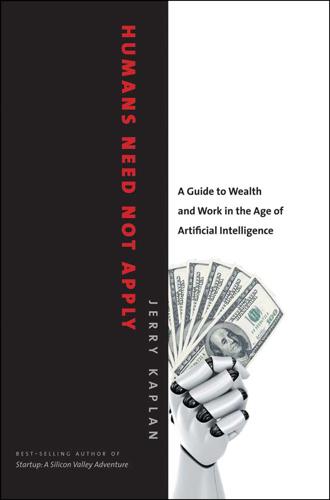
Humans Need Not Apply: A Guide to Wealth and Work in the Age of Artificial Intelligence
by
Jerry Kaplan
Published 3 Aug 2015
“History of Long Term Care,” Elderweb, accessed November 27, 2014, http://www.elderweb.com/book/history-long-term-care. 14. http://www.infoplease.com/ipa/A0005140.html, accessed November 27, 2014. 15. As an experienced entrepreneur, I can assure you this argument is completely ridiculous. Mark Zuckerberg, founder of Facebook, would have worked just as hard for a tiny fraction of the rewards he reaped. The founders of Fairchild Semiconductor widely regarded as the seminal Silicon Valley startup—were thrilled to strike it rich when the parent company bought them out for the princely sum of $250,000 each. In the words of Bob Noyce, “The money doesn’t seem real. It’s just a way of keeping score” (http://www.stanford.edu/class/e140/e140a/content/noyce.html, originally published by Tom Wolfe in Esquire, December 1983). 16.
…
See labor market; workplace Energy Star program, 178 entrepreneurship, 44, 95–96, 200, 223–24n15 environmental protection, 168, 195 Environmental Protection Agency, 168, 178 equal opportunity, 170 estate planning, 146–47, 175 ethics, 9–10, 74–75, 79, 81–82, 87. See also moral agency European Union, 143 Experience Music Project Museum (Seattle), 114 expertise, 22–23, 29 expert systems (computer programs), 23 Facebook, 48 face-recognition capability, 40 Fairchild Semiconductor, 223–24n15 FairDocument, 146–47 Fair Labor Standards Act (1917), 171 fairness, 74–75, 102, 162–63 families. See households farmworkers: forged laborer replacement of, 39, 133–34, 143–44 historical average income of, 164, 222n3 Federal Communications Commission (FCC), 45 federal government.
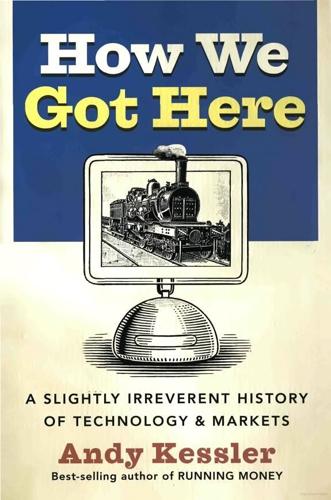
How We Got Here: A Slightly Irreverent History of Technology and Markets
by
Andy Kessler
Published 13 Jun 2005
They were known as the “Traitorous Eight”: Gordon Moore, Sheldon Roberts, Eugene Kleiner, Robert Noyce, Victor Grinich, Julius Blank, Jean Hoerni and Jay Last (left to right from a famous photo of them.) Someone’s father knew some money folks in New York, who sent Art Rock to check out this group. He helped them cut a deal with Stephen Fairchild of Fairchild Instruments out on Long Island, New York, and cut himself into the action at newly formed Fairchild Semiconductor as well. Within no time, they were selling transistors to IBM for $150 each. IBM had an insatiable appetite for semiconductors. There was a go-go economy in the ‘50s and ‘60s, big business was buying computers to automate accounting, and transistors beat vacuum tubes in cost, speed, power use and best of all, reliability. *** Demand was so strong that most firms were selling whatever they could make.
…
I met TRANSISTORS AND ICS PROVIDE SCALE 125 Kilby at an annual meeting for Texas Instruments shareholders in the 1980s. He was about 6’4”, and had a giant head that you instantly realized must house a massive brain. Meanwhile, further west, after reading TI’s January 1959 announcement of its integrated circuit, Fairchild Semiconductor doubled its effort to get more than one transistor on a device. Jean Hoerni, who was a Swiss physicist, came up with what is known as the planar process. Hoerni used a process called optical lithography, which is similar to how photographs are made. He started with a piece of Ntype germanium or silicon.
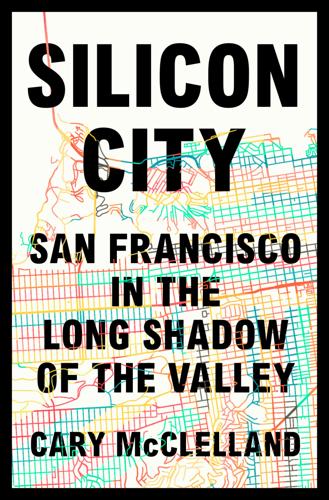
Silicon City: San Francisco in the Long Shadow of the Valley
by
Cary McClelland
Published 8 Oct 2018
It will get worse and prove that sound we hear—the fist thumping on our chest, proclaiming we are the top of the feeding order—is a hollow drum. PART I THE NEW GOLD RUSH The Gold Rush had the Big Four. Silicon Valley has the Traitorous Eight—men who broke away from Shockley Semiconductor Laboratory in the ’60s and formed Fairchild Semiconductor. Fairchild eclipsed Shockley and became the soil from which the industry grew, with companies like Intel and Hewlett-Packard tracing their origins back to that early rift. Intel co-founder Gordon Moore predicted that the speed and efficiency of integrated circuits would double each year, accepted wisdom now known as “Moore’s Law.”
…
Some dreaming of connecting the world, of optimism, opportunity, and a new global harmony; some smelling only youth, ambition, and the Darwinian churn of great ideas mixed with money. REGIS McKENNA “Pittsburgh was dying.” So he came to California. It was the ’60s, and he witnessed the semiconductor boom from ground zero—working for a number of companies that launched from the mother ship that was Fairchild Semiconductor. There he started his own marketing and PR firm, serving the giants of the new industry, like Intel, Apple, Microsoft. His office has the feeling of a library, or an unfinished exhibit chronicling the history of the tech industry. The conference table is covered with containers of small metal sprockets, arranged like unique species of bugs in a natural history museum.
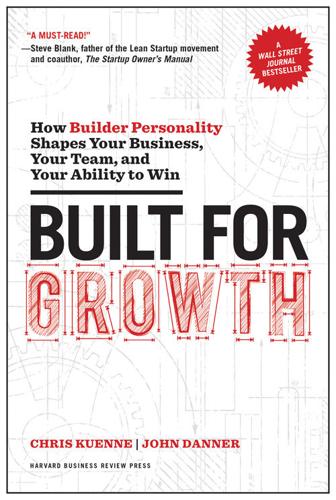
Built for Growth: How Builder Personality Shapes Your Business, Your Team, and Your Ability to Win
by
Chris Kuenne
and
John Danner
Published 5 Jun 2017
Keep in mind, however, the track record of the marriage between corporate Drivers and their employers is not exactly encouraging, as a recent Accenture global study on corporate entrepreneurship found: “Three-fourths of large companies feel that their employees are sufficiently entrepreneurial; yet, of all the entrepreneurs who worked in a large company previously, 75 percent left because they felt that they could not be entrepreneurial within the corporate setting.” The examples of these problematic relationships are legion: from members of the Traitorous Eight, who left Fairchild Semiconductor and then spawned the high-tech innovation explosion that became Silicon Valley, to Mark Cuban, who was fired from his first two corporate jobs, never to return to working for anyone but himself. Some corporate Drivers, when paired with the right sponsor, can unleash their commercial gifts inside a large enterprise.
…
See also early adopters cross-type learning, 15–16, 21–22, 211–230 Crowley, John, 123–124, 125–126, 139, 143, 212 Crusaders, 6–7, 88–117 archetype of, 247 blueprint for, 116–117 as Captain cobuilders, 169 charisma of, 108 as corporate builders, 96–97, 198–199 customer dynamic and, 101–102 decision making by, 166–168 as Driver cobuilders, 163–164 elevate and delegate strategies for, 110–115 expert strategy for, 223–225 as Explorer cobuilders, 165 followers of, 80 foundational expertise of, 214 gifts and gaps of, 107–110, 210 hiring and, 180–182 how they engage, 91–107 loyalty of, 181 Page and Brin, 18 polar complement of, 91 profile of, 89 scale dynamic and, 104–107 solution dynamic and, 93–97 sponsor dynamic and, 103–104 sponsor selection for, 196–199 team dynamic and, 97–100, 180–182 Cuban, Mark, 4, 193 culture, company Captains and, 7, 120, 124–125, 135–138, 183 Crusaders and, 112 Drivers and, 178 Explorers and, 69, 72, 75 recruiting team members and, 176 Currier, James, 103 customer dynamic Captains and, 129–131, 140 Crusaders and, 101–102, 113–115 Drivers and, 31, 39–41, 53–54 Explorers and, 70–72 customer segments Drivers and, 41 Personality-Based Clustering approach to, 30 profitability of, 109–110 scaling across, 10 Cutler, Elizabeth, 153–154 Daltran Media, 36 Dealer.com, 69, 71 decision making, 3, 233 Builder Type pairings and, 160–170 by Captains, 119, 121, 143, 168–170 cobuilders and, 157, 160–170 by Crusaders, 89, 166–168 by Drivers, 29, 162–164 by Explorers, 59, 164–166 Della Femina, Jerry, 77 DiCaprio, Leonardo, 104, 197 DiSC Profile, 13 Dixon, Tom, 36 Doctor On Demand, 44–45, 219 Dorsey, Jack, 15, 92–93 DoubleClick, 60 Dries, Chris, 140–141 Drivers, 4–5, 28–57 archetype of, 245 blueprint for, 56–57 as Captain cobuilders, 168–169 as corporate builders, 42–43, 191–193 as Crusader cobuilders, 166–167 customer dynamic and, 39–41 decision making by, 162–164 definition of success by, 37–38 elevate and delegate strategies for, 50–55 expert strategy for, 217–220 as Explorer cobuilders, 164–165 foundational expertise of, 213 gifts and gaps of, 47–50, 210 how they engage, 31–47 Jobs, Steve, 17 as master builders, 218–220 profile of, 29 recruiting and, 177–179 scale dynamic and, 44–47 solution dynamic and, 32–34 sponsor dynamic and, 41–43 sponsor selection for, 190–194 team dynamic and, 36–39, 177–179 zero-sum games and, 134 Dr Pepper Snapple Group (DPSG), 39, 49 Dstillery, 63–64, 68 early adopters, 41, 50, 53, 70 Crusaders and, 95 Eastside College Preparatory School, 137 elevate and delegate strategies for Captains, 140–145 for Crusaders, 110–115 for Drivers, 50–55 for Explorers, 81–85 Emmelle, 33–34 empowering others Captains and, 120–121, 128–129, 138–139 Drivers and, 34, 47 Explorers and, 83–84 Endeavor, 104 Entrepreneurial StrengthsFinder (Clifton and Badal), 240 entrepreneurship Crusaders and, 106 definitions of, 3, 189 Equinox, 154 Eventbrite, 155 executive coaches, 215, 221 expert builder strategy, 16, 213 Captains and, 225–227 Crusaders and, 223–225 Drivers and, 217–220 Explorers and, 220–223 Explorers, 5–6, 58–87 archetype of, 246 blueprint for, 86–87 as Captain cobuilders, 169 as corporate builders, 64–65, 75, 195–196 as Crusader cobuilders, 167 customer dynamic and, 70–72 decision making by, 164–166 as Driver cobuilders, 163 elevate and delegate strategies for, 81–85 expert strategy for, 220–223 foundational expertise of, 213 gifts and gaps of, 79–81, 210 hiring and, 179–180 how they engage, 61–79 as master builders, 221–223 polar complement of, 91 profile of, 59 scale dynamic and, 75–79 solution dynamic and, 61–65 sponsor dynamic and, 72–75 sponsor selection for, 194–196 team dynamic and, 65–70, 179–180 Zuckerberg, Mark, 18 Facebook, 18 Fairchild Semiconductor, 193 Fidelity, 20 financial support. See sponsor dynamic Firestone, Marsha, 114–115 Fleiss, Jenny, 6, 104, 105 Folio3, 112 followers Captains and, 128–129, 142 Crusaders and, 98–99, 104–107 Drivers and, 44, 48 Explorers and, 65–70, 80, 221–223 Friend, Scott, 104 Gebbia, Joe, 171 Genentech, 20 Gilbert, Paul, 121–123, 139, 144 Godiva Chocolates, 32 Google, 18–19, 155 Goyal, Ajay, 84 Great Place To Work Institute, 145 Greenberg, Rick, 40, 49 Greenfield, Jerry, 15, 99, 107, 108, 222–223 growth dynamics, 10.

The Optimist: Sam Altman, OpenAI, and the Race to Invent the Future
by
Keach Hagey
Published 19 May 2025
In fact, he published an essay that month titled, “A Unified Theory of VC Suckage,” in which he described VCs as “alternately cowardly, greedy, sneaky, and overbearing.”18 Venture capital, a form of private equity investing that came into its own amid America’s post–World War II industrial boom, involves VCs gathering money from “limited partners,” such as university endowments or pension funds, and using their knowledge of the industry to divvy up the pool of cash among a portfolio of startups, for much the same reason that a mother fish lays hundreds of eggs. Most startups fail, but those few that succeed—particularly in the tech industry, where the incremental cost of selling an additional widget is near zero—tend to succeed spectacularly, more than making up for all the losers.19 From the very first venture-funded startup, Fairchild Semiconductor, in 1957, Silicon Valley’s tech industry has been largely funded by venture capital, from Apple to Google to Facebook to just about any startup you’ve ever heard of today. The main problem, in Graham’s view, was the way that VCs are paid—typically 2 percent of the amount of money they manage each year, plus a percentage, usually 20, of the gains, known as “carried interest” or just “carry.”
…
In between startups, he would pull his mental aperture back to the birds-eye view, swooping across the landscape of new things, looking for an edgy idea that he would then zoom back into for another few years. As an investor, he said, “you get to live wide the whole time.” Sequoia Capital was founded in 1972 by Don Valentine, the son of a Teamster who rose through the ranks of technology sales at companies including Fairchild Semiconductor. He viewed venture capital investments in terms of markets. “My position has always been you find a great market and you build multiple companies in that market,” he explained. He also believed fiercely in the importance of personal networks. It was through a Fairchild connection that he learned about Atari, which became Sequoia’s first investment.
…
Louis, 26, 53 Delicious (website), 75 Deming, Peter, 59–60, 64 democracy, 152–53, 225 Democratic Party, 21, 204, 207–8, 234, 296 Deployment Safety Board (DSB), 279–80, 287 Deshpande, Alok, 58–61, 64, 76, 85, 89, 102, 111, 127 Deshpande, Sheila, 58, 91 Desmond-Hellmann, Sue, 303 Deutsch, David, 314–15 Dewey, John, 45 deworming charities, 211, 213 Diamandis, Peter, 144, 210 diffusion model trained by adding digital “noise,” 262–63 Digital Chocolate mobile gaming company, 97 Diller, Barry, 229 Ditton, Andy, 34–35 DJ Kay Slay, 102 DJI drones, 231 DLA Piper lobbying firm, 300 DNNresearch, 182 Doblet phone-charging startup, 149, 177 Dodgeball location-based app, 104, 105, 118 Donahue, Nick, 260–61 Dota 2 (video game), 215–18, 221–22, 242, 284 dot-com bubble of the late 1990s, 73, 87, 93 Dowling, Steve, 287 Dropbox, 123, 139, 150, 152, 157, 158–59, 247 drop-outs, tech bros as mostly, 62, 88, 91–92, 96, 108, 113, 124, 132, 175, 179, 217–18 Dubai, 274 eBay, 82, 168 economic growth democracy and, 152–53, 225 dot-com bubble of the late 1990s, 73, 87, 93 financial crisis of 2008, 4, 116–17, 131, 137, 150 as a kind of spiritual hack, 153 real wages, 132 Edge web browser, 272 Edison, Thomas, 46 effective altruism, 2, 4, 6 189–214, 224, 265–66, 276, 300 “bed nets” era of, 212 deworming charities, 211, 213 GreaterWrong forum, 301 Open Philanthropy Project, 213–14, 241, 266–67, 276–77, 299–301 see also AI safety Effective Ventures, 276 Efficient Market Hypothesis, 144 Eichler, Mike, 30, 40 80,000 Hours, 211–12 Elbaz, Gil, 243 Electronic Arts, 97 Electronic Frontier Foundation (EFF), 59, 98 energy production, 13, 134, 231, 280, 313–14 nuclear energy, 12–13, 57, 108, 134–36, 154, 177, 205, 230, 259, 280 solar energy, 28 see also compute Enigma machine, 139 Enlightenment, 314–15 Enron, 60 esports, 215–16 Evans, Jon, 142 Extropians, 141–42, 144–45, 164–65, 199, 214 Fabolous (DJ), 102 Facebook, 60, 63, 73, 79–80, 96, 101, 116–17, 123, 127, 131, 137, 161, 169, 184, 188, 204, 207–8, 229 fact-checking, 265 Fairchild Semiconductor, 72, 87 fake news, 265 Federal Communications Commission (FCC), 59, 106 Federal Trade Commission, 285 Feldman, Ellen, 173 Fellow Robots robotics company, 210 Fermi’s paradox, 170 “few shot” learning, 244 “Feynman method of being a genius,” 219 Filan, Daniel, 305 financial crisis of 2008, 4, 116–17, 131, 137, 150 “finding product-market fit,” 107, 156 “finding your tribe,” 157 Finney, Hal, 142 Firefox web browser, 63 Flexport logistics platform, 138 Florida, 40 “Flowers for Algernon” (Keyes), 140 Foo Camp, 63 Forbes (magazine), 257 Foreign Affairs (journal), 267 Foresight Institute, a technology think tank, 144 Forstall, Scott, 112, 114, 116 “Founder Mode” (Graham), 263 founders as kings, 6, 60, 65, 68, 70–75, 95 Founders at Work (Livingston), 63, 64 Founders Fund venture firm, 2, 6, 132, 139, 147, 226 Foursquare, 118–20, 126 Francis, Peggy, 32, 36 “Free Oceana,” 141 Freemasonry, 31 Fridman, Lex, 17, 304 Friend, Tad, 201 From Zero to One (Thiel and Masters), 132, 230 frontier in American history, 153 FroSoCo (short for Freshman Sophomore College), 55, 57 FTX crypto market, 212, 257 Furstenberg, Diane von, 229 Future of Humanity Institute, 5, 165–66, 241–42, 267 Future of Life conference, Puerto Rico (2015), 167–70, 207, 211 Future of Life Institute, 145, 168, 208–9, 272 Galef, Julia, 225 Galois, Évariste, 174 game theory, 166, 285 Gates, Bill, 65, 90, 212, 216, 267–68 Gates, Melinda, 212 Gauss, Carl Friedrich, 174 Gawker Media, 137, 204–5 gay marriage rights, 56, 296 Gay Straight Alliance, 52 Gaza, war in, 289 GE (General Electric), 210 Gebbia, Joe, 263 Gebru, Timnit, 252–53, 270–71 Gemini AI model, 307 general artificial intelligence (AGI), see AI (artificial intelligence) generative AI, 1, 3, 9, 219, 221, 270 generative pre-trained transformers (GPTs), 3, 221, see also various GPTs under OpenAI genius, human, 77, 81, 127, 140, 156, 219 “Gentle Seduction, The” (Stiegler), 199–200 George, Henry, 256 Georgia, 23–25, 58, 104, 142 GeoSim 3D modeling company, 209–10 Germany, 274 Gibney, Bruce, 132–33 Gibstine, Connie (Sam’s mother), 15, 31–38, 39–50, 53–54, 91, 201–2, 227–28, 248–50, 261, 295, 312 Gil, Elad, 136 Gillette, 62, 71 Ginsberg, Allen, 166 Girard, René, 131 Github Copilot, 262 Gittell, Ross, 35 GiveWell, 212–13, 266 Giving Pledge, 212 Giving What We Can, 211 global positioning system (GPS) chips in mobile phones, 57–58, 99 Gmail, 123, 150, 286–87 Go (game), 191–92, 216–17 “godfathers of AI,” 188, 312 Goertzel, Ben, 145 Goetz, Jim, 88 Goldman Sachs, 59, 64, 150, 225 Good Ventures foundation, 212–13 Google AdSense, 243 Alphabet, 194, 271 “Attention Is All You Need” (“the transformer paper”), 218–19, 270 Bard conversational model, 271 Chrome web browser, 272 DeepMind acquisition, 146–48, 154, 165, 168–69, 171–72, 184, 189–94, 208, 211, 217, 221, 270 Dodgeball location-based app acquisition, 104, 105, 118, 104 Gemini AI model, 307 Gmail, 123, 150, 286–87 recent initial public offering (IPO) of, 87 YouTube acquisition, 93–94 see also Anthropic Google assistant, 271 Google Brain, 82, 169, 184, 243, 270 Google Colab Notebook, 247 Google I/O annual developer conference, 307 Google Maps, 59 Google Search, 270 Gordon-Levitt, Joseph, 210, 225 GotNews (website), 204 GPTs (generative pre-trained transformers), see chatbots; various GPTs under OpenAI Graham, Paul, 3, 13–16, 62–65, 67–76, 81–82, 94, 136, 149, 151, 186, 263 “A Unified Theory of VC Suckage,” 72–73 “Collison installation,” 246 “Founder Mode,” 263 “How to Start a Startup,” 69–70 painting’s influence on, 67–69 see also Y Combinator (YC) graphical user interfaces, 195 graphics processing units (GPUs), 176, 181–82, 219, 247, 255 Gras, Mike, 249 GreaterWrong forum, 301 Green Dot prepaid debit card company, 126–27, 133 Green-Lowe, Jason, 301–2 Grey, Aubrey de, 144, 259 Groom, Lachy, 151–52, 154, 157 Gross, Daniel, 309 Groupon, 119, 116 Guardian, The (newspaper), 220 Gurevich, Mikhail, 77, 82 Gurson, Doktor, 149, 177 Hacker News message board, 132, 151 hackers/hacking, 3, 57, 63, 68–70, 160n, 162 Haffner & Gibstine Real Estate, 32 Halcyon Molecular, 257–59 Hall, Ed, 26 Halo 3 (video game), 95, 109 ham radios, 32–33, 48 Hanson, Robin, 141–42, 144 Harder, Josh, 207 “hardware strategy, the,” 226, see also compute Harris, Kamala, 273, 313 Harris, Sylvia, 24–25 Hartford Courant (newspaper), 28 Hartford, CT, 28–29 Hartford Institute of Criminal and Social Justice, 28 Hartmann, Frank, 28–29 Harvard Computer Society, 69 Hassabis, Demis, 145–47, 169, 171–72, 192, 209 Hassenfeld, Elie, 212 Hawaii, 227, 250, 260, 295, 311–12 Hawking, Stephen, 169, 211 Hawkins, Trip, 97 HBO’s Silicon Valley, 101, 258–59 HBO’s Westworld, 199 heads, frozen, 141 Health Extension Foundation, 258 Helion Energy nuclear fusion startup, 13, 136, 207, 259, 280, 298 Helo telepresence robot, 210 Her (film), 307 Herzog, Isaac, 274 Hill, Daniel, 165 Hilton, Jacob, 265 Hinduism, 17 Hinton, Geoff, 178–84, 188, 266, 312–13 hip-hop, 102 Hipmunk travel search company, 162 HIV/AIDS, 33, 43, 49 Hoffman, Reid, 109, 172, 223, 231, 234–35, 277, 296 Hogan, Hulk, 205 Holocaust, attempted analogies to the, 135 Homejoy, 195 Horizon Institute for Public Service, 301 housing, see affordable housing Houston, Drew, 157 “How to Start a Startup” (Graham), 69–70 Howard, James, 110–11 Howl (Ginsberg), 166 Huffman, Steve, 69–70, 75, 76–78, 81, 162–63 Hui, Fan, 192 Human Advancement Research Community (HARC), 195, 197–98, 236 humans in a democratic society, 135 human genius, 77, 81, 127, 140, 156, 219 human-computer interfaces, 210 learning to truly produce knowledge, 314 neuroscience and studying the human brain, 145–48, 202 “only good for hugs or sex,” 269 their brains as the original neural nets, 181 see also chatbots Hunnewell, H.
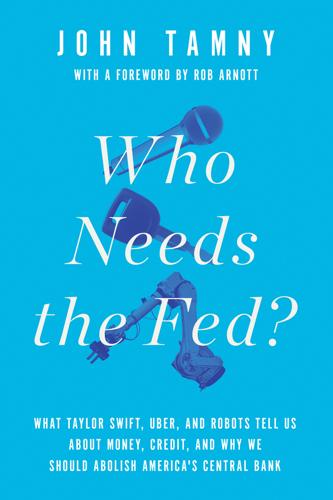
Who Needs the Fed?: What Taylor Swift, Uber, and Robots Tell Us About Money, Credit, and Why We Should Abolish America's Central Bank
by
John Tamny
Published 30 Apr 2016
The investors in possession of credit don’t grow rich by virtue of making a habit of searching for those prone to mistakes. Richard Noyce and Gordon Moore were Silicon Valley pioneers from the earliest days. In a preview of the “cheap revolution” that personifies the technology sector to this day, they and their cofounders at Fairchild Semiconductor sold microchips to early adapters for less than they cost the company to make them.12 The idea was to give their customers an incentive to incorporate Fairchild’s “chips” into their products. That the founders of Fairchild grew rich validated their strategy. By 1968, they were ready to try something new.
…
See federal government Corker, Bob, 43 credit and access to real resources, 2, 3, 47 already possessed by individuals, 22, 163 Ben Bernanke and “crony credit,” 41–47 coaching and recruiting of college athletes, 15–21 “credit circles,” 107 credit surges, 58 and division of labor, 66 and Donald Trump, 33–37 and excessive federal government spending, 51, 53–55, 59–63 failures as credit in Silicon Valley, 27–32 and the fracking boom, 66–67, 73–75 housing boom and “easy credit,” 113–22 inability of government to create, 81–82 and Keynesian economics, 78–82 lack of in Soviet Union, 76–78, 80 Lending Club, 107–8 and market “bubbles,” 56–60 oil price declines and rising cost of credit, 146–48 Paulson & Co., 44–45 personal “recessions” and access to credit, 25–26 produced by individuals in the real economy, 3 and supply-side economics, 48–55 See also banking; the Fed A Curious Mind (Grazer), 23 Da Sweet Blood of Jesus (film), 110 Dead Bank Walking (Smith), 164 “death of distance,” 58 Decade of Greed, 33 Dell computers, 109, 125 Dell, Michael, 60 demand as result of production and growth, 140–41, 149 Detroit, Michigan, 99, 140 devaluation, housing booms and value of the dollar, 116–22 Dierdorf, Dan, 16 Dobbs, Lou, 160 the dollar and bank cash reserve requirements, 100 FDR’s devaluation of, 142, 167–69 fluctuating value of, 167–72 gold standard and the price of oil, 68–70 housing booms and value of the dollar, 116–22 inflation and value of the dollar, 43 “money multipliers” and “fractional lending,” 87–90 money supply and value of the dollar, 144 Downey, Robert, Jr., 25–26 Drexel Burnham investment bank, 38–40 Economics in One Lesson (Hazlitt), 22, 64, 74, 113, 163, 176 economy Austrian School of economics, 79, 87, 88–89, 90, 91–95, 113–14, 141 as collection of individuals, 25, 128 economic growth as Cheap Revolution, 160–61 governmental barriers to economic growth and prosperity, 3, 155–56 Keynesian economics, 78–82, 88, 93–96, 140–41 market forces, 1–2, 59–60 production and money supply, 136–37 and quantitative easing (QE) program, 149–54 the real economy and government spending, 4 resource expansion resulting from surprise, 30 robots and job creation, 177–80 supply-side economics, 48–55, 79–80, 92–94, 141, 144 The Economy in Mind (Brookes), 49 Edison, Thomas, 29–30 electricity, Tennessee Valley Authority (TVA), 61 The Elephant and the Dragon (Meredith), 96 Ellison, Larry, 60 entrepreneurs and failure, 28 and innovation, 66 and price cutting, 73 ESPN, 109 Eton Park Capital, 45 Export-Import Bank (Ex-Im), 61 Facebook, 28–29, 143 FailCon, 27 failure as credit in Silicon Valley, 27–32 as feature of capitalism, 58, 89, 100, 125 and innovation, 57–58 Fairchild Semiconductor, 31 Fannie Mae, 119, 120, 173 federal budget deficits, 50 Federal Deposit Insurance Corporation (FDIC), 101–2 federal government excessive spending of, 51, 53–55, 59–63, 173–74 involvement with Wall Street, 129–31 and Keynesian economics, 78–82, 93–96, 147 money supply and value of the dollar, 144 size of, 50–51 the Fed (Federal Reserve Bank) and access to credit, 13–14, 31–32 as barrier to economic growth and prosperity, 5 and Ben Bernanke, 41–47 creation of, 105–6 and easy credit, 2–5, 36–37, 80, 146–48 and excessive power of central banks, 45–46 and high-yield “junk bonds,” 37, 39–40 housing boom and “easy credit,” 113–16, 121–22 inability to create credit, 1–5, 141 on inflation as source of economic growth, 156–61, 165–66 interbank lending rates, 114–16, 156–58 and the money supply myth, 138–45, 158 necessity of, 163–66 quantitative easing (QE) program, 149–54, 172 and the Roaring Twenties, 94–95 Troubled Asset Relief Program (tarp), 172–73 and 2008 financial crisis, 106, 110 Fergusson, Adam, 90–91, 121 film industry and credit extended to filmmakers, 22–26, 27–28 The Financial Crisis and the Free Market Cure (Allison), 119 Flamson, Dick, 35, 101 football players and coaches, 15–21, 78–79 Forbes, Steve, 69, 72 The Forgotten Man (Shlaes), 167–69 The Frackers (Zuckerman), 71 fracking boom, 66–67, 73–75 “fractional lending,” 87–90 Freddie Mac, 119, 120, 173 free markets, 2–3, 11–14 free trade and division of labor, 65–66 Friedman, Milton, 54, 135–36, 137, 138 Frum, David, 117–18 Garrett, Mike, 19 Gates, Bill, 30–31, 59 Geithner, Tim, 171 General Electric, 30 Get on Up (film), 25 Gilder, George, 30, 56, 57, 59, 68, 94, 118, 121, 135–36 Giuliani, Rudolph, 38 Glass-Steagall Act, 102–3, 119–20 Globe.com, 59, 60 gold and devaluation of the dollar, 142, 167–68 and the price of oil, 68–72 Gold (Lewis), 141, 171 Goldman Sachs, 41, 44, 45, 46, 127 Google, 143 Gorman, James, 123, 130 government.
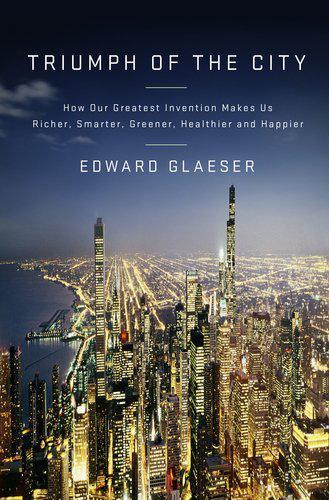
Triumph of the City: How Our Greatest Invention Makes Us Richer, Smarter, Greener, Healthier, and Happier
by
Edward L. Glaeser
Published 1 Jan 2011
By attracting and then repelling genius, Shockley both brought talented people to Silicon Valley and ensured that they would be starting their own firms instead of just working for him. At one point, eight of his best young scientists collectively quit. A cameramaking magnate named Sherman Fairchild bankrolled them, and Fairchild Semiconductor was born. The firm stayed in Silicon Valley. Why would the “traitorous eight” want to leave a paradise packed with Terman-trained engineers? In 1959, Fairchild Semiconductor patented the first integrated circuit. Eventually, the talent also tired of Fairchild’s management. Two of them left Fairchild in 1968 to form Intel. Another left to form the venture capital giant Kleiner Perkins, which would bankroll many of the Valley’s next wave of innovators.
…
Arns, “The other transistor: early history of the metal-oxide semiconductor field-effect transistor”). 31 William Shockley . . . shared the Nobel Prize in Physics: Shurkin, Broken Genius. 31 In one notorious incident . . . hand on a pin: Ibid., 176. 32 eight of his best young scientists . . . to form Intel: “Fairchild Semiconductor Corporation,” Encyclopædia Britannica. 32 Another left . . . next wave of innovators: “‘Fairchildren’ Who Came to Dominate the World of Technology,” Financial Times (London), Oct. 31, 2007, Business Life. 32 Two former Hewlett-Packard . . . Apple Computer: “Apple Inc.” Encyclopædia Britannica. 32 A former Apple employee started eBay: “Who We Are: History,” eBay, www.ebayinc.com/milestones; and Viegas, Pierre Omidyar, 34. 32 Both Yahoo!
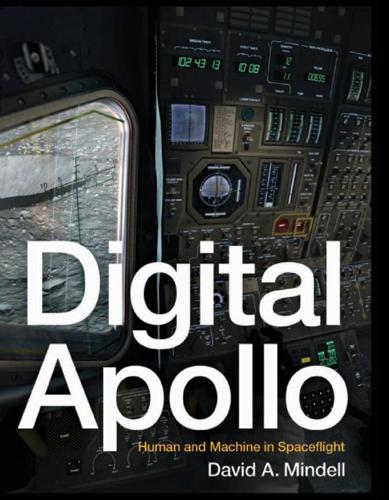
Digital Apollo: Human and Machine in Spaceflight
by
David A. Mindell
Published 3 Apr 2008
In Hall’s design, only one type of transistor would have to meet the intense testing and support criteria for the missile. In the course of his work on Polaris, Hall visited the production line at Texas Instruments and met engineer Jack Kilby, who showed him a new invention: the integrated circuit, which incorporated several transistors on one semiconductor. Hall also visited the Fairchild Semiconductor company in California and met there with Robert Noyce; the company was working on making their integrated circuits scalable and robust.14 Hall then convinced the navy to incorporate the novel devices into the second-generation Polaris II computer. Again, Hall would build it out of a single component: a twotransistor NOR gate integrated circuit, sixty-four of them in all, costing $1,000 each.15 The first guided Polaris flight took place in July 1960.
…
IL electronics guru Eldon Hall had incorporated an early IC into the Polaris Mark II computer and thought integrated circuits might have some application to the new project—especially since reduced size and weight would be such high priorities. The Minuteman ICBM was using integrated circuits with strict requirements for reliability, giving Fairchild credibility with military and aerospace systems. Fairchild Semiconductor put its ‘‘MicroLogic’’ family of ICs on the market in 1961, followed soon thereafter by Texas Instruments and Signetics.2 The Mod 3C prototype used a circuit design inherited from the Mars computer called ‘‘core-transistor logic.’’ Familiar, proven, conservative, and made out of discrete transistors, it seemed just the sort of circuitry on which to bet a multibillion-dollar spaceflight.
…
See Engineering high-gain antenna issues and, 218 landing point designator and, 223–225 Dick, Philip K., 13 low gate and, 224 Digital autopilot, 139–142 lunar landing of, 1–8, 217–226 Digital Computation group, 127 mascons and, 220–221 Digital Development Group, 98, 127 orbital mechanics and, 217–218 Digital differential analyzer, 98 pitch over and, 220–221, 229 Dihedral, 33 powered descent initiation and, 222–223 Display and keyboard (DSKY) unit, 218, 266 Apollo 12 and, 237 primary navigation and guidance system (PNGS) and, 218, 220, 230–231 Apollo 14 and, 245 radar issues and, 227–232 342 Eagle lunar module (cont.) reaction control system (RCS) and, 223, 226 simulators and, 222, 227–228 touchdown site of, 226 Index reliability and, 127–133 sensing wind direction and, 25 Society of Experimental Test Pilots (SETP) and, 17–19 ECLIPSE, 151 software and, 145–180 (see also Software) Edwards Air Force Base, 17 Space Task Group (STG) and, 74–77 Flight Research Center (FRC) and, 44, 46, 90, 210, 266 Stability and Control group and, 27–28 (see also Control; Stability) X-15 and, 43–44, 48 Eight ball, 159, 161, 194–195 stick force per g and, 27 supersonic flight and, 32–36 Eisenhower administration, 95 systems, 36–41, 98 (see also Systems Ejection seats, 18 Electrical noise, 2–3 Electronic Design magazine, 232 engineering) Wright brothers and, 22–23 X-15 and, 45–63 Ellul, Jacques, 12 Engle, Joe, 49, 257, 265 Engineering, 14 ENIAC computer, 98 age of systems and, 36–41 B-2 stealth bomber and, 266–267 Enos (chimpanzee), 81 Escape capsules, 18 black boxes and, 34–36 Evans, Walter, 33 cockpit controls and, 24–29 Exceptional Service Medal, 240 computer development and, 123–143 (see Executive program, 149 also Computers) Explorers Club, 271 Cooper-Harper rating scale and, 31–32, 186 Extra vehicular activity (EVA), 83, 268–269 culture change in, 169–173 Eyles, Don, 176, 189–190, 222, 244, 261 display and keyboard (DSKY) unit and, 165– 169 F-80 Shooting Star, 45 feedback systems and, 33–36 F-104 Starfighter, 45 flying qualities and, 26–28 Faget, Max, 44, 75, 136, 214 frequency response and, 33–34 Failure Is Not an Option (Kranz), 249 G&N System Panel and, 148–149, 168–169 Fairchild Semiconductor, 99, 125–126, 133 gimbal reliability and, 119–121 Falcon, 252 human interface and, 160–166 Faster-and-higher goal, 44 instrument flying and, 24–26 Johnsville tests and, 70–72 Federal Aviation Administration (FAA), 40 Feedback systems, 26. See also Computers; landings and, 181–215 (see also Landings) National Advisory Committee on Aeronautics Control age of, 36–41 (NACA) and, 26–28 black boxes and, 34–36 optics and, 114–119 development of, 33–34 Pilotless Aircraft Research Division (PARD) frequency response and, 33–34 and, 46, 75 lunar module (LM) and, 195–196 pilots and, 24–28 Polaris submarine and, 97–99 pilot induced oscillation and, 50–51 simulators and, 53–54 (see also Simulators) project management and, 169–174 Space Task Group (STG) and, 74–77 Index 343 Fighter jets, 20, 32–33, 45 Fire-control systems, 146 General Electric, 37, 107 General Motors, 110 Firmware, 154–157 Genesis, Bible Book of, 178 Flight director attitude indicator (FDAI), George (program), 99 159 Georvitch, Slava, 89 Flight Readiness Review Board, 241 Germanium transistors, 98–99 Flight Research Center (FRC), 44, 46, 90, 210, Gernan, Gene, 257 266 G force, 70–72 Flight Research Maneuvers, 27–28 Flight test data, 25 Gibbs-Smith, Charles Harvard, 21–23 Gilbert, David, 117, 127–128 Fly-by-wire control, 79, 81, 140, 266 Gilmore (lion), 10 Fog, 25, 53, 226, 240 Gilruth, Robert, 135 FORTRAN, 99 guidance systems and, 107 Fox-corpen, 237 Lunar Landing Training Vehicle (LLTV) and, Frasier, Cline, 139–140, 142, 158 214 Frequency response method, 33–34 Pilotless Aircraft Research Division and, 46 Frick, Charlie, 135 Funk, Jack, 88, 152, 154 pilot role and, 27–28, 32 project management and, 172 Space Task Group (STG) and, 74–77 Gable, Clark, 28 Gagarin, Yuri, 89, 95–96 X-15 and, 44, 51 Gimbal reliability, 119–121 Gain, 51, 54, 59–61 Apollo computer and, 130–131 Gann, Ernest, 24 display and keyboard (DSKY) unit and, 165– Garman, Jack, 146, 222, 224, 226, 229–230, 166 244 Gavin, Joe, 113, 120, 183 eight ball and, 159 Glenn, John, 62, 76, 81–82, 92, 121 Gemini program, 7, 112, 134–135, 139, 170 Gone with the Wind (film), 28 automation and, 86–88 Goodyear Aircraft, 92 complications in, 85–86 Gordon, Dick, 236 control and, 83–88 Gorn, Michael, 44 digital autopilot and, 140 ‘‘Go to moon’’ interface, 160–161 Faget and, 75 Gough, Melvin, 27 Grissom and, 83–84 ground control and, 83 Gravity’s Rainbow (Pynchon), 13 Griffin, Gerry, 249 manual maneuvering and, 84–86 Griffin, Michael, 265, 270 onboard computers and, 87 Grissom, Gus, 81, 83–84, 86 paraglider design and, 83–85 Ground control pilots and, 83–88, 93–94 Apollo 12 and, 237–243 redundancy and, 123 Apollo 13 and, 243 reentry and, 62–65, 83–84 Apollo 14 and, 243–249 rendezvous and, 84–88 sequencing actions and, 83 Apollo 15 and, 249–255 Apollo 16 and, 255 simulators and, 208 Apollo 17 and, 256–261 344 Ground control (cont.) backup systems and, 248–249 Index Noun 69 and, 236–237 P40 program and, 150 Eagle landing and, 221–232 pitch over and, 251–255 early Apollo missions and, 174–180 Polaris and, 97–99 interfaces and, 160–166 primary navigation and guidance system jamming and, 138 (PNGS) and, 191 landings and, 199 (see also Landings) Q-guidance technique and, 100 Noun 69 and, 236–237 software and, 145–146, 149, 151–154, 158– Surveyor III and, 236 teleprinter and, 108–109 165 space sextant and, 114–119 Grumman Aircraft Corporation, 96, 113, 175 Apollo 12 and, 241 arrogance of, 113–114 velocity-nulling guidance and, 215 Guidance systems operations plan (GSOP), 151–152 digital autopilot and, 140–141 Gunsights, 97 gimbal reliability and, 119–121 Gyro culture, 96–97 lunar module (LM) and, 111–112, 183–184, Gyroscopes, 1, 7, 24–25, 43 187, 192, 213, 233 mission simulators and, 208–209 astronaut input and, 161–166 Draper and, 96–97 Guggenheim Foundation, 25 eight ball and, 159, 161 Guidance and navigation (G&N) System Panel, gimbal reliability and, 119–121 148–149, 160, 168–169 Guidance systems AGE models and, 106 gunsights and, 97 human interface and, 161 Mars probe and, 99 Apollo and, 102–114, 174–180, 243 automatic pilot and, 139–142 (see also Automation) Hacker culture, 148, 152, 246 Hadley Rille, 251 backup for, 175 Haise, Fred, 244 Battin and, 100–103 Hall, Eldon command center and, 108–109 computers and, 104–106, 114, 123–142 display and keyboard (DSKY) unit and, 165– 169 guidance systems and, 98–99, 114 reliability issues and, 125–127, 132–133 Hallion, Richard, 29 Hamilton, Margaret, 147, 149, 160 equations for, 147 gimbal reliability and, 119–121 Hanley, David, 125–126 Harvard Computation Laboratory, 100 ‘‘go to moon’’ interface and, 160–161 Heinlein, Robert, 82 ground control and, 108–109, 138 Helicopters, 43, 48, 183, 207, 210–211, 242, inertial, 110, 114, 130 264 Instrumentation Laboratory and, 112–114 Hell’s Angels (film), 10 landings and, 181–215 (see also Landings) Helmets, 18 Lovell error and, 179 Henry, John, 5 low moon orbit and, 197, 199 lunar module (LM) and, 191–193 High gate, 202–204 High range network, 48 Mars probe and, 99–101 High Speed Flight Station (HSFS), 43–44, 49 Index High Speed Research Station, 31 Hoag, David ‘‘Davey,’’ 1 345 Hunsaker, Jerome, 23 Hypersonic flight, 44, 47 core ropes and, 157 digital autopilot and, 140, 142 IBM, 87, 148 eight ball and, 159 Iconel-X, 46 guidance systems and, 105, 113, 118–120 Icy B.M., 39, 67 reliability and, 127 Incremental velocity indicator (IVI), 87 software and, 180 Institute for Aeronautical Sciences (IAS), 25– Hollywood, 10, 17, 62 Holmes, Brainerd, 133 Honeywell, 139 26, 30 Instrumentation, 43 accelerometers and, 1, 40, 97, 109–110, 119, adaptive control system and, 57–61 132, 174, 194, 201 guidance systems and, 96, 110, 120 accuracy and, 96–97 Mercury and, 77 age of systems and, 36–41 Hopkins, Albert, 126, 166 altimeters and, 24–25, 110, 201, 222 Horner, Richard, 17–19, 31 black boxes and, 34–36, 39, 54, 57, 135 Houston Mission Control, 2, 112 Apollo computer and, 134–135 computers and, 123–143 (see also Computers) developing field of, 96–97 Eagle landing and, 221–227 Draper and, 96 Gemini and, 86 electronic advancement in, 34–35 project management and, 170–173 guidance systems and, 103–104 (see also Space Task Group (STG) and, 75 Guidance systems) Hughes, Howard, 10, 17 gunsights and, 97 Hughes Aircraft, 37, 43 gyroscopes and, 96–97 Human factors.
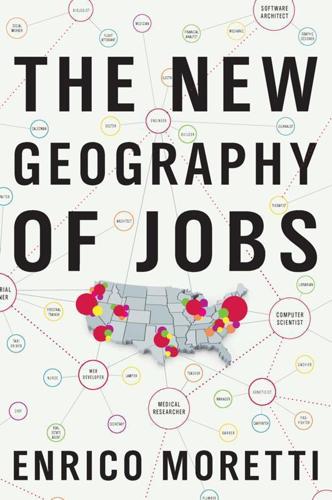
The New Geography of Jobs
by
Enrico Moretti
Published 21 May 2012
In 1940 the peninsula south of San Francisco was a quiet agricultural region with a comparative advantage in fruit production. The arrival among the orchards of William Shockley, the legendary high-tech pioneer who invented the transistor, was the seed that sparked growth of the local innovation industry. When some of Shockley’s disciples created the first integrated circuit at Fairchild Semiconductor, it became clear that the seed had germinated: the process of clustering had begun. That serendipitous seedling was the starting point of an economic miracle that eventually brought millions of jobs to the region. While it is true that Shockley was connected to Stanford—a fact that most histories of the Valley point to as proof that the Valley owes its existence to the university—at the time Stanford was just one among the many universities in America, and not even the best one.
…
See also Knowledge spillovers Digital entertainment, [>]–[>], [>]–[>] fixed vs. variable costs for, [>] Discovery Bay (company), [>] Disney, [>] Dispersion process, [>]–[>] Divorce rate, inequality in, [>]–[>] Doerr, John, [>] Dolby Labs, [>] Dorn, David, [>] Dorsey, Jack, [>] Dot-com bust (2001–2003), [>], [>] Draca, Mirko, [>] Draper, Bill, [>]–[>] Dropout rate, high-school, [>]–[>] Duluth-Superior, Minnesota/Wisconsin, and cost of living, [>] Durham, North Carolina, [>] Durham-Raleigh, North Carolina, [>] eBay, [>]–[>], [>] Economic change cyclical vs. secular, [>] as painful, [>] Economic growth theory, [>] Economic rent, [>]–[>], [>] Economies of scale, [>] localized, [>] Ecosystems, human, [>] Ecosystems, service, [>]–[>], [>], [>] ECOtality, [>] Education as employment sector, [>] and high-school dropout rate (U.S.), [>]–[>] inequality of income due to, [>]–[>] in different countries, [>] and marriage, [>], [>]–[>] and mobility, [>]–[>], [>] and political participation, [>] pragmatic rationale for, [>] and twenty-first-century human capital (U.S.), [>]–[>] U.S. leadership in (earlier twentieth century), [>]–[>] See also College education; Human capital Electrolux, [>] El Paso, Texas, college-educated immigrants in, [>] e-mail, vs. side-by-side work, [>] “Emerging Technology Fund” (Texas), [>] Emeryville, California, [>], [>] Empowerment Zone Program, [>]–[>] Ericsson (company), [>] Eriksson, Håkan, [>] Estonia, PISA scores of, [>] Ethnic inventors, [>]–[>] Eugene, Oregon, [>] European Union, mid-level jobs in, [>] Expedia, [>] Externalities from human capital, [>]–[>] (see also Knowledge spillovers) and industrial policy, [>] in local-investment subsidies, [>] from neighborhood revitalization, [>]–[>] from thick labor markets, [>] from unemployed workers moving/staying, [>] Facebook, [>], [>], [>], [>], [>], [>] Fairchild Semiconductor, [>] Fallows, James, [>], [>] Ferra Designs, [>] Ferrie, Joe, [>] Financial innovation, [>] Financiers, and manufacturing decline, [>]–[>] Finland, [>], [>], [>] Fletcher, Jason, [>] Flint, Michigan, [>], [>], [>] college graduates in, [>], [>], [>], [>]–[>] and salaries, [>]–[>] and crime, [>] divorce rate in, [>] as failing city, [>] as manufacturing capital, [>] revitalization efforts for, [>] Florida, Richard, [>]–[>], [>] Food stamp use, and imports from China, [>] Forces of agglomeration (attraction), [>], [>] in economic development programs, [>] and Great Divergence, [>], [>]–[>] (see also Great Divergence) knowledge spillovers, [>], [>]–[>] (see also Knowledge spillovers) and localized economies of scale, [>] service ecosystem, [>]–[>], [>], [>] solar panels provide exception to, [>] and supply-demand equilibrium, [>] vs. tendencies to collapse, [>] thick labor markets, [>]–[>], [>] venture capitalists, [>]–[>] Ford Foundation, [>] Fort Collins–Loveland, Colorado, [>], [>] Fort Lauderdale–Hollywood–Pompano Beach, Florida, and cost of living, [>] Fort Smith, Arkansas/Oklahoma, [>] France, [>], [>] French Internet sector, [>] Frederick & Nelson department store, [>] Freescale Semiconductor, [>] Fremont, California, [>], [>], [>] solar-panel industry in, [>]–[>] Solyndra, [>]–[>] Friedman, Milton, [>] Friedman, Thomas, [>] FriendFeed, [>] FRV, [>] Fuji, [>] Future growth of United States and American culture, [>]–[>] and innovation hubs, [>] Gadsden, Alabama, and cost of living, [>] Gainesville, Florida, [>] Garment industry, New York, [>] Gary, Indiana, [>] Gates, Bill, [>], [>], [>] and Bill and Melinda Gates Foundation, [>] Gauthier-Loiselle, Marjolaine, [>], [>] Genentech, [>] General Electric, [>], [>] General Motors, [>]–[>], [>] Gentrification, [>]–[>] and Empowerment Zones, [>] Geography of inequality, [>]–[>] and charity, [>]–[>] and divorce rate, [>]–[>], [>] and life expectancy, [>]–[>] and social multiplier effect, [>]–[>] and political participation, [>]–[>] Geography of jobs, [>], [>] change in, [>]–[>] and wage differences, [>] See also Great Divergence Germany PISA scores of, [>] and solar panels, [>], [>] Gilbert, Walter, [>] Glaeser, Ed, [>] Glaser, Rob, [>] Global economy, local, [>]–[>] Globalization and commercial knowledge, [>] as differently impacting workers, [>]–[>] and geography of jobs, [>] and Shenzhen, [>]–[>] and increase in value of innovation, [>]–[>] innovation sector driven by, [>] and iPhone, [>] and U.S. manufacturing, [>]–[>] as job creation, [>], [>] and labor market, [>] skilled-labor demand, [>] and manufacturing loss, [>] of solar-panel industry, [>] unease about, [>]–[>] and U.S. consumers, [>]–[>] Glynn, Dominic, [>], [>]–[>], [>], [>] Goldin, Claudia, [>]–[>], [>]–[>] Google, [>], [>], [>], [>], [>], [>], [>], [>], [>] GoogleBuses, [>] Google Ventures, [>] Gore, Al, [>] Government, as employment sector, [>] Government aid, and imports from China, [>] Government intervention and basic research, [>] through place-based policies, [>] “big push” policies, [>]–[>], [>] (see also “Big push” strategy) and productivity through clustering, [>] in subsidizing innovation, [>]–[>] (see also Subsidies) Great Britain.
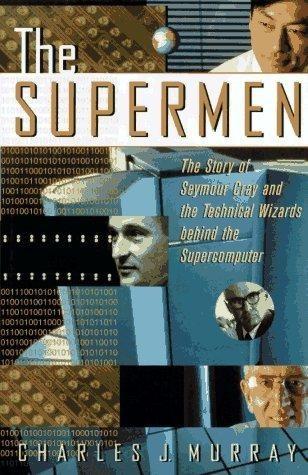
The Supermen: The Story of Seymour Cray and the Technical Wizards Behind the Supercomputer
by
Charles J. Murray
Published 18 Jan 1997
Cray had stubbornly defied management. He'd resisted their advice and followed his own instincts. Unfortunately his instincts had led him down the hard road, and it now looked as if he were trying to do the impossible. In desperation, he decided to try a 80 / THE SUPERMEN new transistor marketed by Fairchild Semiconductor. The transis- tor was made from silicon, the basic element of sand. Up to that time all transistors had been made from germanium. The silicon device was reputed to offer a long list of impressive electrical characteristics. One of those characteristics-fast switching speed-caught Cray's eye.
…
Presper, 35-37, 52 Eckert-MaucWy Computer Corp., 33, 35-40, 44 Edison, Thomas, 5 Einstein, Albert, 5 Eisenhower, Dwight, 35 230 / INDEX Electricite de France, 192 Energy Research & Development Adminis- tration, 144 engineering profession, the, 24, 25 Engineering Research Associates and the CDC dining room table, 194 commercial attempts, 32, 33 creative freedom, 25, 26 and CSAW, 33 description of, 21, 22, 23 and Eckert-Mauchly, 35, 36 ERA engineers, 22 financial arrangemen ts, 29 formation of, 19 glider factory, 19, 21 informality, 26 projects, 27 sold to Remington Rand, 33 Engstrom, Howard, 13, 14, 17, 18 ENIAC, 33, 34, 35, 36 Enigma machine, 7 ERA 1101,32 ERA 1103,43 ETA-I0 computer, 185, 195 ETA Systems death of, 193-196, 217 dining room table, 193-196 formation of, 175-177 European Centre for Medium Range Weather Forecasts, 145 Fairchild Semiconductor, 80, 179 Fernbach, Sidney, 59, 141 Fifth Generation program, 178 Floating Point Systems, Inc., 169 Fluorinert liquid, 162 Ford Motor Company, 24, 192 Forrestal,james V., 16 Fortune, III Fujitsu Inc., 181, 183 gallium arsenide, 4-6, 177, 179, 205 General Electric Co., 38-40, 53, 63 General Motors Corp., 24, 140 General Transistor Corp., 67 GigaBit Logic, 205 glider factory.

New Dark Age: Technology and the End of the Future
by
James Bridle
Published 18 Jun 2018
The Web was necessary, and so it appeared – in this timeline, at least. Computing is especially prone to such justificatory histories, which prove its own necessity and inevitability. The sine qua non of self-fulfilling technological prophecies is what is known as Moore’s law, first proposed by Gordon Moore, cofounder of Fairchild Semiconductor and later of Intel, in a paper for Electronics magazine in 1965. Moore’s insight was that the transistor – then, as TBL noted, barely a decade old – was shrinking rapidly. He showed that the number of components per integrated circuit was doubling every year, and projected that this would continue for the next decade.
…
(von Neumann), 28 Capital in the Twenty-First Century (Piketty), 112 carbon dioxide, 75 Catch-22 (Heller), 187–8 ‘cautious regulator’ theory, 94–5 CCTV, 181–2 centaur chess, 159 Chanarin, Oliver, 143 chaotic storage, 115–6 Chargaff, Erwin, 96–7 Charlie Hebdo attacks, 212 chemtrails, 192–5, 206–8, 214 children’s television, 216–7 children’s YouTube, 219, 238 Cirrus homogenitus, 196, 197 Civil Aviation Authority (CAA), 161–2 clear-air turbulence, 68 climate carbon dioxide, 75 global warming, 73, 193, 214 permafrost, 47–9, 56–7 seed banks, 52–6 turbulence, 65–9 climate change patterns disrupted by, 72–3 resilience against, 59 climate crisis, 56 Clinton, Bill, 243 Clinton, Hillary, 207, 232–3 cloning, 86–8 closed-circuit television, 181–2 cloud(s), 6–7, 8, 17, 195–6 ‘The Cloud Begins with Coal-Big Data, Big Networks, Big Infrastructure, and Big Power’ report, 64 ‘The Cloud of Unknowing,’ 9 cloudy thinking, 9 coal deposits, discovery of, 52 coastal installations, 62 Cocks, Clifford, 167 code/spaces, 37–9 code words, 175 cognition about, 135–6 artificial intelligence (AI), 139 facial recognition, 141 image recognition, 139–40 machine translation, 147 ‘predictive policing’ systems, 144–6 collectivism, totalitarianism vs., 139 Commission on Government Secrecy, 169 complex systems about, 2–3 aggregation of, 40 high-frequency trading, 14, 106–7, 108, 122, 124 complicity computational logic, 184–5 Freedom of Information, 161–2, 165, 192 global mass surveillance, 179–80 Glomar response, 165, 186 public key cryptography, 167–8 computation calculating machines, 27 Electronic Numerical Integrator and Computer (ENIAC), 27, 27–30, 33 flight trackers, 35–6, 36 IBM Selective Sequence Electronic Calculator (SSEC), 30, 30–2, 31, 146 opaqueness of, 40 computational logic, 184–5 computational thinking about, 4 evolution of, 248 importance of, 44–5 Concorde, 69, 70, 71 conspiracy chemtrails, 192–5, 206–8, 214 conspiracy theories, 195, 198–9, 205 contrails, 196–8, 197, 214 global warming, 73, 193, 214 9/11 terrorist attacks, 203–4, 206 ‘Conspiracy as Governance’ (Assange), 183 contrails, 196–8, 197, 214 Copenhagen Climate Change Conference (COP15), 199 Cowen, Deborah, 132 Credit Suisse, 109 cryptocurrency, 63 Cumulus homogenitus, 195–6 cyborg chess, 159 D Dabiq (online magazine), 212 Dallaire, Roméo, 243 darkness, 11–2 “Darkness” (poem), 201–2 dark pools, 108–9 DARPA (Defense Advanced Research Projects Agency), 33 Darwin, Charles, 78 data abundance of, 83–4, 131 big, 84 importance of, 245–6 realistic accounting of, 247 thirst for, 246 data dredging, 90–1 Debord, Guy, 103 DEC (Digital Equipment Corporation), 33 Decyben SAS, 110 Deep Blue, 148–9, 157–60 DeepDream, 153, 154–5 DeepFace software, 140 defeat devices, 120 Defense Advanced Research Projects Agency (DARPA), 33 de Solla Price, Derek, 91–2, 93 Diffie-Hellman key exchange, 167 digital culture, 64–5 Digital Equipment Corporation (DEC), 33 digital networks, mapping, 104 digitisation, 108 ‘Discussion of the Possibility of Weather Control’ lecture, 26 diurnal temperature range (DTR), 204 DNA sequencing, 93 D-Notices, 179 domain name system, 79 doomsday vault, 52–3 Dow Jones Industrial Average, 121–2 drones, 161–2 drug discovery/research, 94–5 DTR (diurnal temperature range), 204 Duffy, Carol Ann, 201 Dunne, Carey, 194–5 E Elberling, Bo, 57 electromagnetic networks, 104 Electronic Computer Project, 27 Electronic Frontier Foundation, 177 Electronic Numerical Integrator and Computer (ENIAC), 27, 27–30, 33 Elements of Chemistry (Lavoisier), 208–9 Elkins, Caroline, 183–4 Ellis, James, 167 encoded biases, 142 ‘End of Theory’ (Anderson), 83–4, 146 Engelbart, Douglas, 79 ENIAC (Electronic Numerical Integrator and Computer), 27, 27–30, 33 Enlightenment, 10 Environmental Protection Agency (EPA), 119–20 EPA (Environmental Protection Agency), 119–20 Epagogix, 130 epidemic type aftershock sequence (ETAS) model, 145–6 Epimetheus, 132–4 Equinix LD4, 104 Eroom’s law, 86, 93–6 ETAS (epidemic type aftershock sequence) model, 145–6 Euronext Data Center, 104, 105, 106 Evangelismos Hospital, 130–1 evolution, theory of, 78 exploitation, 229–30 Eyjafjallajökull, eruption of, 200–1, 202 F Facebook, 39–40, 156–7 facial recognition, 141 Fairchild Semiconductor, 80 Farage, Nigel, 194 Fat Man bomb, 25 Fermi, Enrico, 250 Ferranti Mark I, 78 fiat anima, 19–20 fiat lux, 19–20 Finger Family, 221–2, 224, 227 ‘Five Eyes,’ 174 Flash Boys (Lewis), 111–2 flash crash, 121–2, 130–1 FlightRadar24, 36, 189, 191 flight trackers, 35–6, 36 ‘Fourteen Eyes,’ 174 Fowler, R.H., 45 Frankenstein (Shelley), 201 fraud, 86–8, 91 Freedom of Information, 161–2, 165, 192 Friends’ Ambulance Unit, 20 Fuller, Buckminster, 71 Futurama exhibit, 30–1 ‘Future Uses of High Speed Computing in Meteorology’ lecture, 26 G Gail, William B., 72–3 Galton, Francis, 140 game developers, 130 Gates’s law, 83 GCHQ (Government Communications Headquarters), 167, 174, 176–9, 189 genocide, 243 ghost cars (Uber), 118–9 G-INFO, 190 global mass surveillance, 179–80 Global Positioning System (GPS), 36–7, 42–3 Global Seed Vault, 54 global warming, 73, 193, 214 Glomar response, 165, 186 Godard, Jean-Luc, 143 Google, 84, 139, 230, 242 Google Alerts, 190 Google Brain project, 139, 148, 149, 156 Google Earth, 35–6 Google Home, 128–9 Google Maps, 177 Google Translate, 147–8, 156 Government Communications Headquarters (GCHQ), 167, 174, 176–9, 189 GPS (Global Positioning System), 36–7, 42–3 Graves, Robert, 159 Gravity’s Rainbow (Pynchon), 128 gray zone, 212–4 Great Nōbi Earthquake, 145 Greenland, 57–8 Green Revolution, 53 Greyball programme, 119, 120 guardianship, 251–2 H Hankins, Thomas, 102 Haraway, Donna, 12 Harvard Mark I machine, 30 Hayek, Friedrich, 156–7 The Road to Serfdom, 139 The Sensory Order: An Inquiry into the Foundations of Theoretical Psychology, 138–9 HealthyFoodHouse.com (website), 231–2 Heller, Joseph Catch-22, 187–8 Hermes, 134 Hersh, Seymour, 164 Hewlett-Packard, 143 hidden technological processes, 120 high-frequency trading, 14, 106–7, 108, 122, 124 high-throughput screening (HTS), 95–6 Hillingdon Hospital, 110–1, 111 Hippo programme, 32 Hofstadter, Douglas, 205–6 Hola Massacre, 170 homogenitus, 195, 196 Horn, Roni, 50, 201 How-Old.net facial recognition programme, 141 ‘How the World Wide Web Just Happened’ lecture, 78 HTS (high-throughput screening), 95–6 Hughes, Howard, 163 Hughes Glomar Explorer, 163–5 human genome project, 93 Human Interference Task Force, 251 human violence, 202 Humby, Clive, 245, 246 Hwang Woo-suk, 86–8 hyperobjects, 73, 75, 76, 194 hypertext, 79 I IBM Selective Sequence Electronic Calculator (SSEC), 30, 30–2, 31, 146 ICAO (International Civil Aviation Organisation), 68 ICARDA (International Center for Agricultural Research in the Dry Areas), 53–4, 55 ICT, 60–2 image recognition, 139–40 Infinite Fun Space, 149–50, 156 information networks, 62 information superhighway, 10 Infowars (Jones), 207 In Place of Fear (Bevan), 110 Institute of the Aeronautical Sciences, 26 integrated circuits, 79, 80 Intel, 80 International Center for Agricultural Research in the Dry Areas (ICARDA), 53–4, 55 International Civil Aviation Organisation (ICAO), 68 International Cloud Atlas, 195 Internet Research Agency, 235, 237 Inuit Knowledge and Climate Change, 199 The Invisibles (Morrison), 196–7 Isaksen, Ketil, 54 ISIL, 212–3 J Jameson, Fredric, 205 Jelinek, Frederick, 146–7 Jones, Alex Infowars, 207 Joshi, Manoj, 68–9 journalism, automated, 123–4 just-in-time manufacturing, 117 K K-129, 162–3 Karma Police operation, 175 Kasparov, Garry, 148–9, 157–8 Keeling Curve, 74, 74 Kennedy, John F., 169–70 Kinder Eggs, 215–6 Kiva robots, 114 Klein, Mark, 176–7 Kodak, 143 Krakatoa, eruption of, 202 Kunuk, Zacharias, 199, 200 Kuznets curve, 113 L Large Hadron Collider, 93 Lavoisier, Antoine, 78 Elements of Chemistry, 208–9 Lawson, Robert, 175–6 LD4, 104, 105 Leave Campaign, 194 Leibniz, Gottfried Wilhelm, 78 Levy, David, 158, 159 Lewis, Michael Flash Boys, 111–2 LifeSphere, 125 literacy in systems, 3–4 Lockheed Ocean Systems, 163 Logan, Walt (pseudonym), 165 Lombroso, Cesare, 140 London Stock Exchange, 110–1 Lovecraft, H.P., 11, 249 ‘low-hanging fruit,’ 93–4 M Macedonia, 233–4 machine learning algorithms, 222 machine thought, 146 machine translation, 147 magnetism, 77 Malaysian Airlines, 66 manganese noodles, 163–4 Manhattan Project, 24–30, 248 Mara, Jane Muthoni, 170 Mark I Perceptron, 136–8, 137 Maslow’s hierarchy of needs, 128–9 Matthews, James Tilly, 208–10, 209 Mauro, Ian, 199 McCarthy, Joe, 205 McGovern, Thomas, 57–8 McKay Brothers, 107, 110 memex, 24 Mercer, Robert, 236 Merkel, Angela, 174 metalanguage, 3, 5 middens, 56 migrated archive, 170–1 Minds, 150 miniaturisation principle, 81 Mirai, 129 mobile phones, 126 The Modern Prometheus (Shelley), 201 monoculture, 55–6 Moore, Gordon, 80, 80, 83 Moore’s law, 80–3, 92–4 Mordvintsev, Alexander, 154 Morgellons, 211, 214 Morrison, Grant The Invisibles, 196–7 Morton, Timothy, 73, 194 Mount Tambora, eruption of, 201 Moynihan, Daniel Patrick, 169 Munch, Edvard The Scream, 202 Mutua, Ndiku, 170 N NarusInsight, 177 NASA Ames Advanced Concepts Flight Simulator, 42 Natanz Nuclear Facility, 129 National Centre for Atmospheric Science, 68–9 National Geospatial-Intelligence Agency, 243 National Health Service (NHS), 110 National Mining Association, 64 National Reconnaissance Office, 168, 243 National Security Agency (NSA), 167, 174, 177–8, 183, 242–3, 249–50 National Security Strategy, 59 natural gas, 48 neoliberalism, 138–9 network, 5, 9 networks, 249 Newton, Isaac, 78 NewYorkTimesPolitics.com, 221 New York World’s Fair, 30–1 NHS (National Health Service), 110 9/11 terrorist attacks, 203–4, 206 ‘Nine Eyes,’ 174 1984 (Orwell), 242 NORAD (North American Air Defense Command), 33 North American Air Defense Command (NORAD), 33 ‘The Nor’ project, 104 Not Aviation, 190–1 NSA (National Security Agency), 167, 174, 177–8, 183, 242–3, 249–50 nuclear fusion, 97–8, 100 nuclear warfare, 28 Numerical Prediction (Richardson), 45 Nyingi, Wambugu Wa, 170 Nzili, Paulo Muoka, 170 O Obama, Barack, 180, 206, 231 Official Secrets Act, 189 Omori, Fusakichi, 145 Omori’s Law, 145 Operation Castle, 97 Operation Legacy, 171–2 Optic Nerve programme, 174 Optometrist Algorithm, 99–101, 160 O’Reilly, James, 185–6 Orwell, George 1984, 242 ‘Outline of Weather Proposal’ (Zworykin), 25–6 P Paglen, Trevor, 144 ‘paranoid style,’ 205–6 Patriot Act, 178 Penrose, Roger, 20 Perceptron, 136–8, 137 permafrost, 47–9, 56–7 p-hacking, 89–91 Phillippi, Harriet Ann, 165 photophone, 19–20 Pichai, Sundar, 139 Piketty, Thomas Capital in the Twenty-First Century, 112 Pincher, Chapman, 175–6 Pitt, William, 208 Plague-Cloud, 195, 202 Poitras, Laura, 175 Polaroid, 143 ‘predictive policing’ systems, 144–6 PredPol software, 144, 146 Priestley, Joseph, 78, 208, 209 prion diseases, 50, 50–1 PRISM operation, 173 product spam, 125–6 Project Echelon, 190 Prometheus, 132–4, 198 psychogeography, 103 public key cryptography, 167–8 pure language, 156 Putin, Vladimir, 235 Pynchon, Thomas Gravity’s Rainbow, 128 Q Qajaa, 56, 57 quality control failure of, 92–3 in science, 91 Quidsi, 113–4 R racial profiling, 143–4 racism, 143–4 ‘radiation cats,’ 251 raw computing, 82–3 Reagan, Ronald, 36–7 Reed, Harry, 29 refractive index of the atmosphere, 62 Regin malware, 175 replicability, 88–9 Reproducibility Project, 89 resistance, modes of, 120 Reuter, Paul, 107 Review Group on Intelligence and Communications Technologies, 181 Richardson, Lewis Fry, 20–1, 29, 68 Numerical Prediction, 45 Weather Prediction by Numerical Process, 21–3 Richardson number, 68 The Road to Serfdom (Hayek), 139 Robinson, Kim Stanley Aurora, 128 robots, workers vs., 116 ‘Rogeting,’ 88 Romney, Mitt, 206–7 Rosenblatt, Frank, 137 Roy, Arundhati, 250 Royal Aircraft Establishment, 188–9 Ruskin, John, 17–20, 195, 202 Rwanda, 243, 244, 245 S Sabetta, 48 SABRE (Semi-Automated Business Research Environment), 35, 38 SAGE (Semi-Automatic Ground Environment), 33, 34, 35 Samsung, 127 Scheele, Carl Wilhelm, 78 Schmidt, Eric, 241–5 The Scream (Munch), 202 Sedol, Lee, 149, 157–8 seed banks, 52–6 Seed Vault, 55 seismic sensors, 48 self-excitation, 145 ‘semantic analyser,’ 177 Semi-Automated Business Research Environment (SABRE), 35, 38 Semi-Automatic Ground Environment (SAGE), 33, 34, 35 semiconductors, 82 The Sensory Order: An Inquiry into the Foundations of Theoretical Psychology (Hayek), 138–9 Shelley, Mary Frankenstein, 201 The Modern Prometheus, 201 SIGINT Seniors Europe, 174 simulation, conflating approximation with, 34–5 Singapore Exchange, 122–3 smart products, 127–8, 131 Smith, Robert Elliott, 152 smoking gun, 183–4, 186 Snowden, Edward, 173–5, 178 software about, 82–3 AlphaGo, 149, 156–8 Assistant, 152 AutoAwesome, 152 DeepFace, 140 Greyball programme, 119, 120 Hippo programme, 32 How-Old.net facial recognition programme, 141 Optic Nerve programme, 174 PredPol, 144, 146 Translate, 146 Solnit, Rebecca, 11–2 solutionism, 4 space telescopes, 168–9 speed of light, 107 Spread Networks, 107 SSEC (IBM Selective Sequence Electronic Calculator), 30, 30–2, 31, 146 Stapel, Diederik, 87–8 Stapledon, Olaf, 20 steam engines, 77 Stellar Wind, 176 Stewart, Elizabeth ‘Betsy,’ 30–1, 31 Steyerl, Hito, 126 stock exchanges, 108 ‘The Storm-Cloud of the Nineteenth Century’ lecture series, 17–9 Stratus homogenitus, 195–6 studios, 130 Stuxnet, 129–30 surveillance about, 243–4 complicity in, 185 computational excesses of, 180–1 devices for, 104 Svalbard archipelago, 51–2, 54 Svalbard Global Seed Vault, 52–3 Svalbard Treaty (1920), 52 Swiss National Bank, 123 Syed, Omar, 158–9 systemic literacy, 5–6 T Taimyr Peninsula, 47–8 Targeted Individuals, 210–1 The Task of the Translator (Benjamin), 147, 155–6 TCP (Transmission Control Protocol), 79 technology acceleration of, 2 complex, 2–3 opacity of, 119 Teletubbies, 217 television, children’s, 216–7 Tesco Clubcard, 245 thalidomide, 95 Thatcher, Margaret, 177 theory of evolution, 78 thermal power plants, 196 Three Guineas (Woolf), 12 Three Laws of Robotics (Asimov), 157 Tillmans, Wolfgang, 71 tools, 13–4 To Photograph the Details of a Dark Horse in Low Light exhibition, 143 totalitarianism, collectivism vs., 139 Toy Freaks, 225–6 transistors, 79, 80 Translate software, 146 translation algorithms, 84 Transmission Control Protocol (TCP), 79 Tri Alpha Energy, 98–101 Trinity test, 25 trolling, 231 Trump, Donald, 169–70, 194–5, 206, 207, 236 trust, science and, 91 trusted source, 220 Tuktoyaktuk Peninsula, 49 turbulence, 65–9 tyranny of techne, 132 U Uber, 117–9, 127 UberEats app, 120–1 unboxing videos, 216, 219 United Airlines, 66–7 Uniting and Strengthening America by Fulfilling Rights and Ending Eavesdropping, Dragnet-collection and Online Monitoring Act (USA FREEDOM Act), 178 USA FREEDOM Act (2015), 178 US Drug Efficacy Amendment (1962), 95 V van Helden, Albert, 102 Veles, objectification of, 235 Verizon, 173 VHF omnidirectional radio range (VOR) installations, 104 Vigilant Telecom, 110–1 Volkswagen, 119–20 von Neumann, John about, 25 ‘Can We Survive Technology?
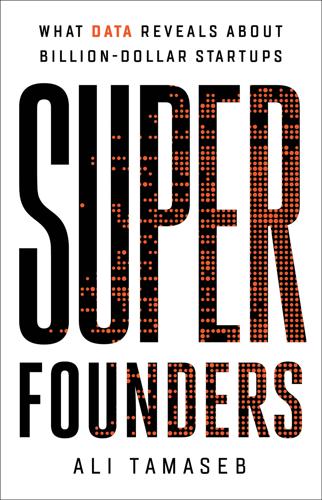
Super Founders: What Data Reveals About Billion-Dollar Startups
by
Ali Tamaseb
Published 14 Sep 2021
William Shockley, who invented the transistor, secured funding through a corporation, Beckman Instruments, and had to form his business under its name. After eight of his employees defected to start a competing company, they, too, had to do so under the umbrella of their investor, Fairchild Camera and Instrument, a company selling imaging equipment for World War II.2 (Later, the company was renamed Fairchild Semiconductors.) The lending route was often reserved for companies with tangible assets like railroads, retail, or manufacturing. High-tech companies, in the early days, did not have much in tangible assets and required a lot of money, which made it difficult for banks to evaluate them or invest. In 1958, Congress passed the Small Business Investment Act, which allowed the federal government to lend money to recently minted investment firms as a way of injecting funds into a new wave of high-tech companies.3 This was the Cold War era, and the government wanted to strengthen national technological capabilities.
…
CHAPTER 13: VENTURE CAPITAL VERSUS BOOTSTRAPPING 1. Clare O’Conner, “How Sara Blakely of Spanx Turned $5,000 into $1 Billion,” Forbes, March 14, 2012, www.forbes.com/global/2012/0326/billionaires-12-feature-united-states-spanx-sara-blakely-american-booty.html#2b8182537ea0. 2. David A. Laws, “A Company of Legend: The Legacy of Fairchild Semiconductor,” IEEE Annals of the History of Computing 32, no. 1 (2010): 60–74, doi: 10.1109/mahc.2010.12. 3. “Small Business Investment Act,” U.S. Small Business Administration, March 2019, www.sba.gov/document/policy-guidance--small-business-act. 4. “Venture Capital in the Blood,” Computer History Museum, accessed July 30, 2020, https://computerhistory.org/events/venture-capital-blood/. 5.

Road to Nowhere: What Silicon Valley Gets Wrong About the Future of Transportation
by
Paris Marx
Published 4 Jul 2022
The entrepreneurs they funded tended to have a number of common traits, including “engineering degrees from certain programs, some service in the military, conservative in their bearing and their politics, and utterly consumed and fascinated by technical challenges.”4 By the mid-1960s, the industry was facing criticism over its relationship with the military as the counterculture gained traction and opposition to the Vietnam War grew. Reflecting that conservativism, Robert Noyce, who co-founded Fairchild Semiconductor and Intel, saw the hippies as opponents of technology and, indeed, of progress itself. Tom Wolfe described this all-too-familiar narrative in a 1983 profile of Noyce for Esquire. “They wanted to destroy the new machines … They wanted to call off the future,” he wrote of Noyce’s stance on the youth.
…
See bicycles Domino’s Pizza, 172–3 DoorDash, 111, 172 dot-com crash, 57 double-decker highways, 151 Dubal, Veena, 101, 112 Duhigg, Charles, 121–3 Duranton, Gilles, 141–2 Dynamex decision, 111 Eastman Kodak, 40 ecommerce, 181, 193 economies of scale, 106 EHang, 152 Eisenhower, Dwight D., 23, 39 Electric Vehicle and Central Station Association, 66–7 Electric Vehicle Company (EVC), 65–8 electric vehicles batteries in, 72–5, 78–80 cobalt and, 72–3 commodities boom from, 87 electric personal vehicles, 188 Electric Vehicle Company (EVC), 65–8 environmental documentaries and, 68–71 mining industry and, 72–7, 79 resurgence of, 85–6 sales in Norway, 81–2 Tesla (See Tesla) uptick in sales of, 66–7 Electronic Frontier Foundation (EFF), 52–3 Elysium (film), 190 Emergency Highway Energy Conservation Act (1974), 203 Enfield Automotive, 68 Engelbart, Douglas, 54–5 entrepreneurial governance model, 200–1 Erlich, Justin, 156–7 e-scooters. See bicycles European Commission, 80 European countries, mining in, 80–1. See also specific countries Extinction Rebellion, 225 Facebook, 61–2 Fairchild Semiconductor, 40 Falocchio, John, 12 Federal-Aid Highway Act (1944), 2 Federal-Aid Highway Act (1956), 23–5 federal funding, for computer science, 47–8 Federal Housing Administration (FHA), 28–9 Federal Trade Commission (FTC), 103 fifth-generation wireless networks, 130–1 Firefly prototype (Google), 116–7, 130 Firestone Tire Company, 21 5G, 131 510 Systems, 121 Florida, Richard, 200 Flow technologies, 229–30 flying cars, 151–2, 159 Ford, Henry, 67 Ford Fusion, 134–5 Ford Model T, 10, 13, 67, 89–90 Ford Motor Company, 77 fossil fuels, 72–7, 85–7, 204 Founders Fund, 46 France bike lanes in, 171 highway system in, 210–1 train system in, 220 Free Speech Movement, 41 freeway plan (Los Angeles), 22 freeways.
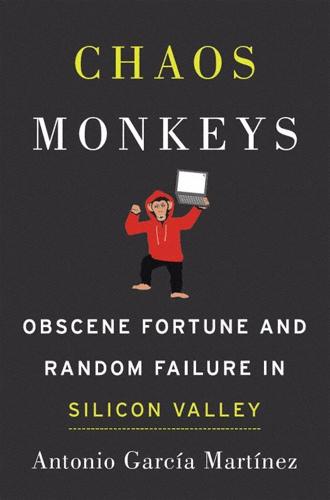
Chaos Monkeys: Obscene Fortune and Random Failure in Silicon Valley
by
Antonio Garcia Martinez
Published 27 Jun 2016
So you see, there are all sorts of strivers and strumpets on Sand Hill, trying to cadge that next score from the guy in the Audi R8. I was merely one more hustler among the many. Our first big-money institutional VC meeting was with Sequoia. Founded in 1972 by Don Valentine, himself a part of the first generation of Valley companies like Fairchild Semiconductor, Sequoia was the absolute crème de la crème, the capo di tutti capi of the venture capital world.* This meeting had been the result of an initial pitch to Mark Dempster, the marketing partner at Sequoia charged with the Y Combinator relationship. YC had held a “Sequoia Day” in the first few weeks of our batch, reflecting the accelerator’s growing clout with large VC firms.
…
See also specific topics acquisitions, 215, 341 Ads Review and Quality, 310–11, 314 boat and airline, 338 boot camp, 269 buying data, 328 China blocking, 374–75 CPM, 275 culture, 334–35, 345 deal turned down, 225 demo to, 210–12 employee internal, 340 employee pampering, 264 engineering, 390, 396, 453 Facebook Analog Research Laboratory, 289, 331 going public, 353–59, 404–16 Google war, 492–93 graffiti office art, 332–35 Growth team, 373–79 headquarters, 208–9, 259–60 high command, 1–2 idea, 150 identity, 382, 440 internal abuse, 267 internal security, 267 international, 300 Internet advertising, 3–4, 8, 279–81, 299, 309, 317, 362–63, 368–69, 393–403, 460 interviews, 216–22 IPO, 284, 309, 342, 358, 371, 378, 399 leaving, 467–74 McEachen and, 223, 225 monetary value and, 317–19 monetization, 5, 209, 275, 278, 298, 318, 425, 444 monetization folly, 361–72 monetization savvy, 486–89 moving campus, 330–33 as New York Times of You, 261 offer from, 248 on-boarding, 260–67, 271 privacy and, 316–29 as publisher, 39 revenue dashboards, 274–75, 295–96 as routing system, 324 salaries, 358 scale, 300 security, 314–15 shuttle, 339 targeting, 321, 362, 368, 438, 442 usage, 319 User Ops, 312–13 vesting at, 467 Video, 345 video-sharing and, 262 Facebook Analog Research Laboratory, 289, 331 Facebook Exchange (FBX) abandoning, 466 CA versus, 439, 459–62 data matching, 452 doubling down on, 451–52 as Flash Boys of media, 421–26 impact, 482 open plan and, 442–43 partners, 427–31, 465 Rabkin and, 435 Rajaram and, 435 revenue, 491–92 rushed revenue stopgap, 435 shipping team, 398–403 staying with, 436–37 team, 440, 458 unforgivable sin, 424 working of, 394–95 Facebook Was Not Originally Created to Be a Company, 342–43 Facebookese, 262 Faceversary, 284–85 Fairchild Semiconductor, 122 family life, 168–69 FarmVille, 228, 365 fashionmall.com, 128 Fast Company, 51 faster horses, 369 fatherhood, 59–60, 168–71, 303–7, 437 Fenwick & West, 84, 134, 138–39, 147, 152, 167, 253 Festinger, Leon, 360–61 FICO scores, 14 fiduciary duty, 200 firm commitment, 418 Fischer, David, 4–5, 277, 410 fish, 397 Flash Boys (Lewis), 422 Fleming, Alexander, 57 Flipboard, 283 Forbes, 417 Ford, Henry, 369 Ford Motor Company, 14, 82, 372 Fortune, 287, 417 Founders at Work (Livingston), 60 Fox, Mike, 349 Franusic, Joel, 201 FriendFeed, 341 Frisbie, Doug, 349 fuck-you money, 102, 415–16 funding.
…
By 2015, that product had become so successful Docker achieved “unicorn” status, meaning a greater-than-billion-dollar valuation, becoming one of the most promising companies in Silicon Valley, and the unquestioned champion from our YC batch. Along the way, however, it peeled off one of the cofounders, Sebastien Pahl, in a founder shake-up. Even the best suffer startup drama. * Fairchild Semiconductor occupies a legendary place is US tech history. Founded by William Shockley, a Nobel laureate and the inventor of that central artifact of our electronic age, the transistor, Fairchild is known for having recruited and then antagonized the team that eventually became Intel. Shockley ended his career embroiled in polemics about scientific racism and eugenics.
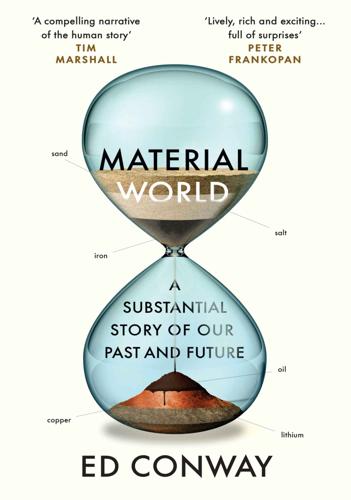
Material World: A Substantial Story of Our Past and Future
by
Ed Conway
Published 15 Jun 2023
For, by combining enough of these switches, each one a tiny, physical manifestation of the binary code, zero or one, you could create a computer on a tiny piece of silicon, chipped off a circular wafer (hence ‘chips’). These leaps of innovation, from the switch itself to the ‘integrated circuit’, the first of which was etched on to silicon by Robert Noyce at Fairchild Semiconductor in 1959, represented the physical foundation of the computing age. That word, physical, matters here. Sometimes innovations are the fruit of a simple brainwave. As historian Anton Howes has pointed out, there was no inherent reason why the flying shuttle – John Kay’s 1733 invention which revolutionised the weaving of wool – couldn’t have been produced thousands of years earlier.
…
When that computer-chip-sized micro-projection hits the silicon, with the help of some laser light and chemicals coated on to the surface, it fries away tiny channels and grooves, effectively engraving the circuitry on to the wafer. This might just sound like a convenient analogy, but in the 1950s at Fairchild Semiconductor, Gordon Moore and his colleague Robert Noyce would buy up old 16mm movie camera lenses to make some of their earliest chips. Early Silicon Valley chip designers quite literally drew their initial designs, transistor by transistor, on to a blackboard-sized piece of film, and then allowed the lenses to do their magic.
…
Ltd) 13 , 402 , 406 , 407 , 408 , 409 , 410 , 421 caustic soda 152 , 153 , 190 , 263n CCS see carbon capture and storage celluloid 356 Celtic tribes/Celts 144 , 146–7 , 161 , 259 , 266 cement 9 , 41 , 71–2 , 73 , 75–9 , 84 , 100 , 115 , 340 and carbon emissions 81 , 82–5 Portland 75 , 80 , 83 , 84 , 85 see also concrete CFCs see chlorofluorocarbons Chalcolithic period 258 chalcopyrite 294 , 304 chalk 73 , 76 , 81 Challenger , HMS 291 , 292 , 301 Chañaral, Chile 273 Chance Brothers, Smethwick 48 , 52 , 55 Chang, Morris 108 , 116 charcoal 218 , 219 , 220 , 222 Charles I, of England 165 cheese/cheesemaking 128–9 , 131 , 132 , 134 , 190 , 353 chert 233 Cheshire fertiliser plants 10 salt industry 143 , 145–51 , 154–5 , 157 , 158–62 , 177 , 180 , 183 , 184 , 206 , 219 , 395 see also Imperial Chemical Industries Chevron (company) 309 Chile 371 , 391–3 , 396 copper production 259 , 261 , 288 , 301 ; see also Chuquicamata and deep-sea mining 301 iodine 176 lithium production 384 , 385 , 391–3 , 395 ; see also Salar de Atacama nitrates industry 170–73 , 174–6 , 393 saltpetre 175–6 , see also Saltpetre War see also Antofagasta China/Chinese 37 , 65 , 95 , 119 , 120 , 135–6 , 235 , 236 , 396 ballpoint pens manufacturing 229–30 battery production 406 , 407 , 409–10 , see also CATL coal-fired power stations 363 concrete 80 , 85 copper smelting and refining 261 , 267 , 269 and deep-sea mining 297 , 298 Discourse on Salt and Iron 137 , 191 electric cars 404 explosives 120 , 168 famine 205 Guanzi 136 iodine deficiency 137–8 iron and steel industry 203 , 205 , 207 , 213 , 217 , 218 , 229 , 231 , 244 , 247 lithium 385 plastic 359 recycling batteries 421–2 salt lakes 385 salt making 147 , 313 salt monopoly 135 , 136–8 saltpetre 164 and sand mining 69–70 silicon chip production 34 , 99 , 104–5 , 106 , 114–16 skyscrapers 78 , 79–80 , 234 smartphones 92 and USA 104 , 115 , 205 , 207 , 411 China National Salt Industry Corporation 138 Chincha Islands 165–7 , 172 , 275 , 298–9 chloralkali process 151–3 , 156 , 190 , 395 chlorine/chlorine gas 128 , 152 , 153 , 157 , 174 , 263n , 390 , 428 , 433 chlorofluorocarbons (CFCs) 318 , 341n chlorophyll 166 , 349 chloroquine 152 chromium 21 , 225 , 277–8 Chuquicamata, Chile 265–6 , 269–71 , 304 , 305 copper mine 171 , 266–7 , 268 , 269 , 270 , 271–2 , 273 , 274 , 280 , 281–3 , 284 , 285 , 288 , 294 , 304 , 305 , 327 tailings dam (Talabre) 272–3 Clarion-Clipperton Zone (Pacific Ocean) 293 , 294 , 298 , 302 Clayton, Pat 30 , 31 Cleopatra Beach, Anatolia 32 Cleveland Potash (company) 180–81 polyhalite mining 181–7 Climafuel 82 climate change 15 , 65 , 66 , 81–6 , 305 , 311 see also carbon emissions clingfilm 354 Club of Rome 276 , 294 The Limits to Growth 276 , 277 , 279–80 , 286 , 321 Clydach, Wales: nickel refinery 261 coal 15 , 16 , 20 , 22 , 82 , 196 , 198 , 215 , 216 , 219–22 , 228 , 268n , 317 , 319 , 334 , 363 , 434 coal-powered machinery 202 , 257 see also coke coal ships 219–20 cobalt 15 , 17 , 21 , 149 , 253 , 411 , 412 , 415–16 , 417 , 419 , 443 in batteries 408 , 409 , 416 sub-sea 293 , 294 , 300 Cochrane, Lord Thomas 265 Codelco (company) 13 , 270 , 283 coke/coking coal 95 , 215 , 219 , 220 , 222 , 311 , 353 , 433–4 needle coke 331–2 , 382 ovens 210 , 213 , 222 , 231 , 332 Colbert, Jean-Baptiste 139 Compass Minerals (company) 158 , 159 computer chips 8 , 90 , 91 , 93 , 107 , 116 , 118 , 203 , 230 , 411 Intel 90 , 112 see also silicon chips computers 9 , 34 , 37–8 , 90 , 91 , 117 , 119 , 274 , 426–7 concrete 6 , 8 , 40 , 41 , 67 , 71 , 72–4 , 75 , 77 , 78 , 79 , 80 , 377 , 425 , 429 , 442 and climate change 81–6 reinforced (‘rebar’) 81 , 198 Roman 75 , 85 , 340 and water 84 Concretene 84 Condori, Pamela 388–9 Confucius 137 , 275 Congo, Democratic Republic of 413–14 , 415 cobalt 149 , 293 , 294 , 415–16 copper 268 , 415 Kamoa-Kakula mine 304 Katanga mines 415–18 , 420 Union Minière du Haut-Katanga 415–18 uranium mine 415 Cook, Captain James 220 copper 7 , 15 , 16 , 17 , 18 , 170 , 171 , 182 , 243 , 253–4 , 258 , 277–8 , 279–80 , 287–9 , 303–5 , 373 , 377 , 416 , 417 , 429 , 437 , 441 and bronze 258–9 cathodes 267 and n , 284 , 285 , 392 ‘concentrate’ 267 and electricity 6 , 22 , 89 , 253 , 254–5 , 256–8 , 263 , 264 , 287–9 electrolysed 262–3 , 267n , 285 heap leaching 272 , 303 and magnets 254 mining 258 , 259 , see also Chuquicamata peak 280 , 285 , 294 recycled 420 reserves 285–6 resources 286 smelting and refining 260–61 , 267 sub-sea reserves 293 , 294 , 295 , 296 , 300 telephone wires 60 trade 259–61 in turbines 257 and waste 287 , 300 , 304 Copper Age 258 ‘Copper man’ 266 , 280 Corning (company) 8 , 9 , 59 , 61 Cornucopians 276 , 279 Cornwall: copper and tin mining 259 , 260 , 280 , 437 Corran ferry, Scotland 42 Corran Narrows, Scotland 57 Cort, Henry 220 Cortez gold mine, Nevada 1 , 2–5 , 13 , 267 , 269 , 272 COVID-19 8 , 9 , 20 , 91 , 211 , 319 , 358 Crete: salt 133 Crookes, Sir William 172 cucumbers, growing 346 cyanide 2 , 3 Cyprus 133 , 258 , 278 Czochralski, Jan 102n Czochralski (CZ) process 101–4 , 105 , 107 , 119 , 327 Damascus, Syria: swords 200 Darby, Abraham 220 Davy, Humphry 262 Debruyne, Stefan 391 deep-sea mining 292–303 , 420 deep-sea species 301 Deere, John 202 deforestation 81 , 131 , 147 , 205 , 218 , 247 , 248 , 275 , 293 , 311 , 315 detergents 152 , 153 , 354 Dharasana saltworks, India 142 diazomethane 350 diesel 331 , 345 dinosaurs 27 , 43 dishwasher salt 146 Dogger Bank/Doggerland 74 dolomite 215 , 233 Donetsk, Ukraine 206 Dorador, Cristina 392–3 Dow (company) 155 drugs/medicines/pharmaceuticals 1 , 8 , 9 , 56 , 127 , 150–51 , 152 , 155 , 156 , 176 , 179 , 190 , 191 , 238 , 334 , 344 , 345 , 357 , 376 , 428 , 429 , 440 Dubai 64 , 65 , 66 , 74 , 266 dyes 218 , 219 , 220 , 334 , 345 dynamite 168 East India Company, British 165 economics/economists 1 , 5 , 6–7 , 10–11 , 14 , 17 , 19–20 , 36 , 52 , 56 , 82 , 120 , 204 , 218n , 227–8 , 255 , 256 , 273–80 , 319–20 , 335 , 365 , 367 , 420 , 423 , 424 , 428 , 438–9 Economist, The 149–50 , 324 Edison, Thomas 76 , 77 , 262 , 263–4 , 279 , 288 , 377 , 378–9 , 380 Egyptians, ancient: mummification 312 Ehrlich, Paul 274 , 275 , 276–9 , 284 , 285 , 304 , 326 The Population Bomb 274–5 , 276 , 277 Eiffel, Gustav 200 , 201n Eiffel Tower, Paris 200–1 Einstein, Albert 21 Eisenhower, Dwight D. 336 electric vehicles (EVs) 400–1 see also cars, electric electricity 7 , 21 , 22 , 37 , 53 , 89 , 97 , 251–3 , 255–7 , 305 , 377–8 , 431 , 435 alternating currents 264 and copper 6 , 22 , 89 , 253 , 254–5 , 256–8 , 263 , 264 , 287–9 and light 255 and motors 21 , 256 and polyethylene insulation 351–3 sub-sea cables 434 see also batteries ; electric vehicles electrolysis 262–3 and n , 267n , 432 electromagnetism 151–2 , 254 , 262 electrowinning 284 , 303 Elkem (company) 96 Engels, Friedrich: The Communist Manifesto 276 engines, combustion 317–18 Enlightenment, the 37 epoxy resin 355–6 Epsom salts 178 Espindola, Christian 389 Esso 380 ethane 315 ethylene 344 , 351 , 357 , 358 EUV see extreme ultraviolet EV Group 119 Evans, Joe 145 , 146 EVs see electric vehicles explosives 168 , 169 , 170 , 173 , 188 extreme ultraviolet (EUV) light 112–14 , 116 , 442 ExxonMobil 380 Fairchild Semiconductor 89 , 112 Faraday, Michael 37 , 53 , 257 , 262 Fawcett, Eric 351 , 352 , 358 Ferrocarril de Antofagasta a Bolivia (FCAB) 163–4 Ferroglobe (company) 95 , 97 fertilisers 10 , 20 , 22 , 61 , 201 , 203 , 311 , 344 , 345 ammonia 188 , 432 caliche 375 , 430 green 432 , 434 guano 166–7 , 275 , 299 from natural gas 348–9 , 430 nitrate/nitrogen 166 , 170 , 172 , 173–4 , 176 , 275 , 299 , 348–9 polyhalite 181–2 , 187 potash 179 shortage of 180 fibre optics 7 , 8 , 425 fibreglass 8 , 248 , 356 Fiji 301 Finland concrete towers 83 copper mine 182 fish, deep-sea 301 flak jackets 354 flavourings 345 Fletcher, Seth 373 Floyd, George 414 fluorine 52 flux 39 , 56–7 , 153 , 190 , 215 , 429 Fontainebleau, France: silver sands 42 , 56 , 66 Ford, Henry 226–7 , 281 , 405 , 421 , 427 , 428 Model Ts 227 Forest of Dean 218n Förstemann, Robert 256 Forth Bridge, Scotland 200 , 201 ‘fossil deposits’ 68 fossil fuels 6 , 15 , 16 , 20 , 22 , 317 , 319 , 328 , 399 , 430 building with 433–4 see also coal ; oil ; gas , natural Foxconn (Hon Hai Technology Group) (company) 118 , 119 fracking 322–5 , 365 France 57 , 129 , 174 , 221–2 , 414 and deep-sea mining 298 , 301 and glass and optical aids 35 , 48 salt 130 , 138–9 , 140 , 147 , 154 Franz Ferdinand, Archduke of Austria 47 , 48 Friedland, Robert 253 , 304 Friedman, Milton 11 Fuding, China: battery factory see CATL fulgurites 31 Gait, Paul 284 Galápagos Rift 291 Galileo Galilei 36 Gandhi, Mohandas (‘Mahatma’) 140–42 , 147 , 155 Ganges, River 165 Gary, Indiana: US Steel 208 gas 198 , 257 , 313 liquefied 364 natural 7 , 10 , 22 , 313 , 315 , 318 , 321–2 , 348–9 , 363–7 , 429 , 430 , 434 gasoline see petrol GDP see gross domestic product GEM (company) 421–2 General Electric (company) 257 General Motors (GM) 340–41 , 407 generators 255 , 257 , 262 , 263 , 264 , 273 , 279 , 284 , 288 , 377 , 433 Genoa, Italy Giorgio Bridge 210 Morandi Bridge 81 geothermal plants 257 germanium 89 , 100 , 117 , 262 , 416 Germans/Germany 28–9 , 47 , 152 , 173 , 174 , 196 , 256 , 259 , 298 , 350 , 365 , 414 , 438 cement 76 , 77 coal 334 and explosives 173 , 174 and fertilisers 172–4 glass and optical devices 48–50 , 51 , 52 , 53 , 54 , 55–6 , 93 , 381 iron and steel 225 , 230 , 231 , 365 and oil 333 , 335–9 ; see also Wesseling potash production 56–7 , 180 salt 98 , 132 , 139 , 147 silicon chips 96 , 97–8 , 103 , 113 silver sands 42 Ghawar oil field, Saudi Arabia 314–17 , 320 , 321 , 322 , 323 , 324 , 325 , 326 , 329 , 358 , 362 , 364 , 366 Gibson, Reginald 351 , 352 , 358 Gigafactory Nevada 399–400 , 403–4 , 405 , 406–7 , 408 , 422 Gilf Kebir, Egypt: Palaeozoic sandstones 31 Glasgow 156 glass/glassmaking 8 , 9 , 21 , 31 , 35 , 36–7 , 46–7 , 51 , 52–3 , 54 , 127 , 219 , 426 , 429 , 440 borosilicate 8–9 , 11 , 48 fibreglass 8 flint (lead crystal) 53–4 and fluxes 39 , 56 , 153 , 190 , 215 , 429 German see under Germans/Germany inventing/making 38–41 lead borosilicate 53 Libyan desert 30 , 31 , 33 and lithium 376–7 and refractive indices 53–4 silica 59 and soda ash 154 soda-lime (crown) 39 , 54 stained-glass windows 39–40 structure of 39–40 and taxes 55 , 56 glasshouses/greenhouses 36 , 347–8 , 349–50 Global Battery Alliance 420–21 global warming 315 , 318 , 340 , 430–31 , see also greenhouse gases GM see General Motors gneiss 43 Goethe, Johann Wolfgang von 56 gold/gold mining 1–2 , 182 , 243 , 268n , 269 , 279–80 , 416 , 419 sub-sea 293 see also Cortez gold mine Goldman Sachs 253 Gondwana 94 Goodenough, John B. 381–2 , 383 , 408 Google 115 graphene 443 Graphene Engineering Innovation Centre, Manchester 84 graphite 353 , 382 , 409 , 411 , 433 , 434 Grasberg mine, New Guinea 283–4 gravel 8 , 73 , 74 , 94 , 198 Great Glen Fault, Scotland 42–3 , 57 Great Sand Sea, Sahara 28–30 , 31 , 66 meteor strike 27 , 30 , 43 , 59 greenhouse gases 19 , 81 , 161 , 204 , 217 , 311 , 385 , 399 , 435 greenhouses see glasshouses Gromort, Georges 71 gross domestic product (GDP) 7 , 14 , 16 , 52 , 88 , 197 , 203 , 224 , 439 Grozny oilfield, Russia 337 Guan Zhong 136 guano 166–7 , 275 , 299 Guano Islands Act (1856) 299 Guérande, the, France: salt 130n Guevara, Ernesto ‘Che’ 281 Guggenheim, Daniel 171 , 174 Guggenheim, Harry 171 Guggenheims, the 281 Guinea: iron ore 247 gunpowder 164 gunsights 46 , 47 , 48 , 50 gutta-percha 352 , 356 Haber, Fritz 173 , 174 , 334 Haber-Bosch process 173–4 , 176 , 188 , 204 , 275 , 342 , 351 , 430 , 432 , 438 Haiti: 2010 earthquake 80 halite 146 , 155 , 161 , 178 , 181 , 191 , 312 Hallein salt mine, Austria 144 , 161 , 266 Hamersley Range, Australia 235–7 , 238 Brockman 4 (mine) 238–40 see also Juukan Gorge Hancock, Lang 235–6 , 237 Haradh, Saudi Arabia 309–10 Harcourt, William Vernon 52–3 , 55 Hartcup, Guy 51 Haus, Reiner 96 , 106 Hawaii 32 , 130n Hawthorne, Nevada 410 , 412 heap leaching 272 , 303 hematite 234 , 236 , 238 , 247 Herbert, Frank 136 Herodotus 29 Heywood, Chris 158–9 , 160–61 Hicks, George 169 Highways England 126 Himalayan (Khewra) salt 130n , 144 , 182 Hinkley Point C, Somerset 257 hip replacements 354 Hitler, Adolf 335–6 , 337 , 339 Hittites: metalwork 199–200 , 217 Hoboken, Antwerp: Umicore 418–19 , 434 Hockney, David 37 Hooke, Robert 36 , 37 Hoover, President Herbert 224 Hoover Dam, Nevada 73 , 80 Hornsea One, North Sea 432 Hoshine (company) 104 Houthi rebels 363 Howes, Anton 89 Howland Island 299 Huan of Qi, Duke 136 Huáscar (ship) 170 Hughes, John James 206 Hula Hoops 353 Huxley, Aldous: Brave New World 188 , 432 Hyde, James Franklin 59 , 61 hydrothermal vents 15–16 , 292 , 315 , 316 , 365 see also coal ; oil ; gas hydroelectric dams 257 , 263 , 373 hydrogen 152 , 157 , 161 , 166 , 173 , 246 , 335 , 343 , 348 , 349 , 350 , 354 , 431–2 hydrogen chloride 98 , 120–21 , 190 , 428–9 , 442 hydrogenation 335 , 336 , 337–8 , 339 hydroponics 346–7 hydrothermal vents (‘black smokers’) 291 , 294 , 295n , 297 , 301 , 302 hypochlorite 153 Ibiza: saltmaking 130 , 133 , 376 IBM (company) 117–18 Ibn Saud, King Abdul Aziz 362 ICI see Imperial Chemical Industries IG Farben (company) 335 Imperial Chemical Industries (ICI) 151 , 155 , 184 , 187 , 188 , 335 , 351 , 352 , 353 , 357 , 358 , 426 , 432 IMS Nanofabrication 119 Incas 166 , 167 India salt production 139–42 saltpetre 165 ‘sand mafias’ 70 indium 443 Indonesia 10 , 66 , 66 , 221 , 267 , 283 , 293 industrial revolution 18 , 36 , 153 , 156 , 219 , 317 Ineos (company) 151 Inovyn (company) 151 insulation, electrical 351–3 , 356 Intel (company) 90 , 91 , 114 , 115 , 118 International Ocean Discovery Programme (IODP): Atlantis Massif mission 292 International Seabed Authority (ISA) 296–8 , 299 , 301 , 302 International Space Station 59 internet, the 7 , 8 , 37 , 59 , 60 , 115 , 211 iodates 168 iodine 137–8 , 176 iPhones 274 Iran 313 , 322 , 362 , 363 , 364 , 365 Iraq 313 iron/iron mining 15 , 16 , 17 , 20 , 22 , 46 , 67 , 99 , 125 , 137 , 156 , 195–8 , 199 , 200 and n , 201 , 203 , 205–6 , 213 , 217–21 , 243 , 278 cast iron 199 , 202 pig iron 199 , 215 , 216 and n , 218 , 220 , 222–3 wrought iron 199 , 200 , 201n , 228 see also Mariupol ; Port Talbot ; steel ; and below Iron Age 18 , 125 , 126 , 127 , 218 iron ores 184 , 198–9 , 206 , 208 , 210 , 216 , 232 , 235 , 245 , 246–7 , 261 , 268 and n , 271 , 278 , 281 , 439–40 see also Hamersley Range ; Juukan Gorge ; Pilbara iron oxide 44 , 73 , 130n , 216 irons, clothes 251–2 ironstone 177 , 188 , 234 , 238 , 239 , 241 , 244 Irwin, Edward Wood, Lord 141 ISA see International Seabed Authority Jackling, Daniel C. 281 Jadar valley, Serbia 386 jadarite 386 James Cook , RRS 290–91 , 292 , 298 Japan/Japanese 120 , 197 , 213 , 230 , 231 , 234 , 236 , 244 , 313 , 336 , 352 , 381 , 382 , 421 companies 58 , 101 , 266 , 383 , 400 , 401 , 404 , 406 Jefferson County, Texas: oil 312 ‘jelly rolls’ 402 , 408 , 409 , 427 jet 30 , 125 jet engines/jets 92 , 225 , 255 , 311 , 317 , 331 , 434 Jetti (company) 304 , 305 Jevons, William Stanley: ‘Jevons paradox’ 227–8 , 245 Joralemon, Ira 279 JSR (company) 119 Jutland, Battle of (1916) 52 Juukan Gorge, Australia 238–42 Kao, Sir Charles 59 , 60 , 61 Kay, John: flying shuttle 89 kelp 153 , 179 , 180 kerosene 312 , 317 , 329 , 331 , 434 Keynes, John Maynard 5 Khashoggi, Jamal 320 Khewra salt mine, Pakistan 144 see Himalayan salt kidney dialysis 155 Kieserite 178 kilns, rotary 76–7 Kiruna mine, Sweden 247 knee replacements 354 Komatsu (company): trucks 266–7 Korea, South 244 and deep-sea mining 298 electric cars 404 silicon-chip manufacturers 212 Kryptonite 386 Kryvyi Rih, Ukraine: magnetite 247 Kurlansky, Mark 133–4n Kuwait: oil 313 Kuznets, Simon 439 Kyiv, Ukraine: Olympic stadium 210 Laelianus, Emperor 126 Lam Research (company) 119 Laurasia a94 lead 3 , 273 , 340–42 , 418 learning curve, the 427–8 Leblanc, Nicolas 154 , 156 Leeuwenhoek, Antonie van 36 Leftwich, Cheshire 147 , 148 lenses 36 , 37 , 46 Leonardo da Vinci 37 helicopter sketches 90 Leopold II, king of the Belgians 413–14 , 416 Le Play, Frédéric 260 lettuces, growing 346 Leuna works, Germany 337 , 338 Lewisian gneiss 43 LG Chem (company) 401 Li Keqiang 229 Li-Cycle (company) 421 ‘Liberty Ships’ 229 Librium 152 light, electricity and 255 , 263 lightbulbs 263 , 264 , 429 lignite 334 limestone 39 , 73 , 76 , 81 , 82 , 84 , 85 , 154 , 219 limonite 234 Linto Crystal (company) 119 Lipetsk, Russia: high-rise blocks 83 Lippe, Germany: silver sands 42 lithium 8 , 17–19 , 22 , 52 , 170 , 188 , 189 , 243 , 244 , 372–3 , 376–7 , 411 , 437 extracting and refining 13 , 15 , 384–96 recycling 419 , 420 , 421 , 424 see also batteries ; Salar de Atacama lithium carbonate 396 , 412 lithium chloride 376 lithium cobalt oxide (LCO) 408 lithium ferro-phosphate (LFP) 408 lithium hydroxide 395 , 412 , 419 , 423 Liverpool 147–8 Lochaline, Scotland: silver sands 41 , 42 , 44–5 , 57–8 , 66 , 95 , 158 Lockheed Martin (company) 298 Lodge, Michael 298 , 302 London Canary Wharf 74 concrete 74 Hammersmith flyover 81 Millwall Iron Works 206 The Shard 210 Louis XIV, of France 139 Louis XVI, of France 154 Louvre Museum: pyramid 42 Lovelace, Ada 90 Lübeck, Germany 132 Lumumba, Patrice 417 Maastricht, Netherlands: silver sands 42 Macfarlane, Alan 37 Macron, Emmanuel 301 , 325 magnesium 53 , 181 , 372 , 375 , 385 , 390 magnesium chloride 178–9 magnetite 234 , 247 magnets 225 , 254 , 257 Magnitogorsk Iron and Steel Works, Russia 207–8 , 212 , 247 Maikop oilfield, Russia 337 Malaysia 51n , 65 , 118 , 231 , 352 , 356 Malé, the Maldives 65 Mallorca: saltmaking 130 , 133 Malthus, Thomas: Essay on the Principle of Population 275–6 Malthusians 276 , 279 manganese 15 , 196 , 411 , 419 adding to steel 225 , 227 , 228 in batteries 408 , 409 sub-sea 293 , 300 Mao Zedong 137 , 205 Marandoo mine, Australia 243 María Elena, Chile 171–2 Mariupol, Ukraine 83 , 209 , 210–11 Azovstal Iron and Steel works 195 , 196 , 199 , 208 , 209–10 , 211 , 212–13 , 222 , 247 Ilych steelworks 196 , 209 marlstone 145 , 146 Mars Bagnold Dunes 30 limonite 234 Martin, Gerry 37 mass-production 224 , 226 , 281 material flow analyses 16 medicines see drugs Mediterranean Sea 130 , 140 , 159 , 178 , 258 , 362 , 376 , 427 Mekong Delta 68–9 , 435 mercury 2 , 3 , 156 , 157 , 421 Merthyr Tydfil, Wales: ironworks 206 Mesabi Range, Minnesota 237 , 281 Metals Company, The 300 meteors 27 , 30 , 31 , 43 , 59 , 178 , 217 methane 315 , 346 Mexico lithium 392 oil 320 , 329 , 330 microscopes 36 , 91 Microsoft (company) 115 Mid-Atlantic Ridge 290–92 , 294–6 , 298 , 302 and the Lost City 292 , 302–3 Middlewich, Cheshire 147 , 148 , 158 Midgley, Thomas 340 , 341 Midway Atoll 299 Mikimoto, Kokichi 313 Milch, Field Marshal Erhard 337–8 Miller, Chris 116 Minerali Industriali (company) 58 mining schools 259 , 437 Ministro Hales copper mine, Chile 272 mirrors 36–7 Mitchell, George P. 321–3 , 324 Moe, Håvard 96 , 97 Mohammed bin Salman, Prince 320 Mol, Belgium: silver sands 42 molybdenum 53 , 113 , 225 , 272 Mongolia: Oyu Tolgoi mine 304 Moore, Gordon 90 , 112 Moore’s law 109 and n , 117 , 274 , 284 , 426 Morocco 68 , 179 Morton (company) 144–5 Morvern peninsula, Scotland 43–4 , 57 motors, electric 256 , 263 , 273 , 287 Mponeng gold mine, South Africa 182 Mull, Isle of 44 Murano glassmakers, Venice 35 , 40 Murton, Bram 292 , 295–6 , 301 Musk, Elon 399 , 400 , see also Tesla Mussolini, Benito 337 Na’aman, the 39 Naidu, Sarojini 142 nanotechnology 88 , 91 , 118 , 228 , 232 , 440 , 443 Nantwich, Cheshire 147 , 148 naphtha 357 Napoleon Bonaparte 139 Napoleonic Wars 35 natron 39 , 56–7 , 153 Nauru 300 Nautilus (company) 299–300 neodymium 21 , 253 Neolithic era 126–7 cheesemaking 128–9 salt making 127 , 128 , 129–31 , 134 , 144 , 155 neon 209 , 212 Netherlands 42 , 65 , 66 , 74 , 119 , 120 , 147 , 347 Neumann’s Flash, Cheshire 157 Newcomen, Thomas 221 Newton, Isaac 37 New York American Museum of Natural History 266 concrete 74 Corning 59 electricity 262 , 264 Gigafactory 399 Hudson Yards, Manhattan 210 New York State 132 , 144 , 148 , 157 , 399 New York Times 325 New Yorker 235 Niagara Falls: hydroelectric dam 263 Nicastro, Nof 347 , 349 Nicholas I, Tsar 148 , 158 , 206 nickel 17 , 53 , 253 , 261 , 273 , 277–8 , 411 , 412 , 419 adding to steel 225 in batteries 408 , 409 sub-sea 293 , 294 , 300 Niemeyer, Oscar 80 Nigeria oil 321 , 331 , 333 , 342 salt 134–5 Nikopol, Ukraine 196 niobium 117 , 225 nitrates 168 , 169 , 170–76 , 275 , 281 , 299 , 334 , 393 , 432 ammonium 241 potassium 164 sodium 168 synthetic 174 , 335 nitric acid 168 nitrogen 166 , 173–4 , 176 , 179 , 181 , 275 , 334 , 348 , 349 , 351 nitroglycerine 168 Nixon, President Richard 321 Nobel, Alfred 168 Nordhaus, William 255 , 263 North Carolina, pre-electric 252 North Field (natural gas) 364–5 Northvolt (company) 401 Northwich, Cheshire 147 , 148 , 154–5 , 426 Anderton Boat Lift 155 Noyce, Robert 89 , 112 NPK fertilisers 179 NSG (company) 58 nuclear contamination 230 nuclear mining 303 nuclear power stations 257 , 376 , 431 , 434 Nudds, Ally 45–6 Nvidia (company) 108 nylon 355 obsidian 30 , 31 Odisha, India: saltworks 140 O’Higgins, Bernardo 393 oil 15 , 16 , 17–19 , 22 , 179 , 198 , 279–80 , 363–8 , 430 barrels 329–30n crude 310 , 311–16 , 317 , 318 , 319 , 320–21 , 323 , 324 , 325–6 , 328 , 329 , 434 and green alternatives 342–3 and horizontal drilling 323 hydrogenation 334–5 , 337 Maya crude 329 Merey crude 329 octane rating 339 oil-powered machinery 202 peak 335 and salt domes 312–13 sweet/sour/light/heavy 329–32 see also Saudi Arabia oil refineries 327–9 , 330–32 , 345 , 360 see also Wesseling Old Marston salt mine, Cheshire 148 optical fibres 60–61 Ørsted, Hans Christian 262 Ostrogoths 133 oxygen converters 223 packaging 345 plastic 346 , 353–4 , 356 Palau 301 palladium 21 Palm Jumeirah, Dubai 74 Panama Canal 281 Panasonic (company) 400 , 401 , 402 , 404 , 405 , 407 , 408 , 409 Pangea 177 , 291 paper manufacture 152 , 153 , 190 Papua New Guinea 299–300 Parma, Italy 132 parrotfish excrement 32 Patton, General George S. 336 pearls 313 Pechmann, Hans von 350 Pedro de Valdivia, Chile 175 pencils 10–11 peppers, growing 346 periscopes 46 , 48 Permian Basin, Texas 324–5 Persian Gulf 313 see also Saudi Arabia Perth , HMAS 231 Peru/Peruvians 165 , 167 , 169 , 170 , 175 , 259 , 260 , 288 , 299 , 316 PET see polyethylene terephthalate petermen 165 petrochemicals 320 , 328 , 331 , 344 , 345 , 358 , 363 , 432 petrol/gasoline 319–20 , 331 , 334 , 336 , 345 lead 340–42 octane rating 339 , 340 Petty, William 276 , 439n pharmaceuticals see drugs Phillips Petroleum 353 Humber Refinery 331–2 , 382 Phoenicians 39 , 56–7 , 58 , 130 , 376 , 427 phosphorus 179 photolithography 111 photosynthesis 166 , 347 , 349 Pico Sacro, Spain 93–4 Pilbara, Australia 233–5 , 237 , 243 , 244 , 245 , 246 see also Juukan Gorge Pilkington (company) 58 Pinochet, Augusto 175 , 391 pipelines 76 , 210 , 225 , 318 , 362 , 364 Planté, Gaston 378 , 379 , 382 plastic bags 354 , 358 , 359–60 plastic bottles 354 , 355 , 360 plastic pipes 354 , 355 plastics 20 , 33 , 152 , 328 , 331 , 344 , 345 , 350–51 , 359–60 , 443 microplastics 359 recycling 360 thermosetting 356 thermoplastics 356 see also polyester ; polyethylene (polythene) ; polymers ; polypropylene ; vinyl platinum 21 Plato 275 Pliny the Elder 38 , 39 , 427 Ploiesti oil fields, Romania 337 ploughs 201–2 , 223 , 441 Poland deep-sea mining 302 , 303 salt mine 144 polyester 356 , 360 polyethylene (polythene) 350–55 , 356 , 358 , 359 , 426 , 435 polyethylene terephthalate (PET) 360 polyhalite 181–7 , 188 , 189 polymers 354–5 , 356 , 360 polymetallic nodules 292–3 , 294 , 295 , 297 , 300 polypropylene 355 polysilicon 97–9 , 100–2 , 104–5 , 120–21 polystyrene 355 polythene see polyethylene polyvinyl chloride (PVC) 152 , 355 Ponce Lerou, Julio 175 , 176 Port Hedland, Australia 244 Port Talbot, Wales: iron and steel industry 214–16 , 217 , 218 , 222 , 225–6 , 228 , 231–2 , 244 , 246 Portland cement 75 , 80 , 83 , 84 , 85 potash 56–7 , 179–80 , 182 , 187 , 376 potassium 179 , 372 , 375 , 376 , 390 potassium chloride 179 potassium nitrate 164 potters 219 power stations 95 , 98 , 198 , 210 , 257 , 262 , 263 , 264 , 288 , 443 see also nuclear power stations Prat, Arturo 170 , 265 preservatives 345 Prince of Wales , HMS 231 prisms, glass 36 , 37 Project SLOOP 303 propane 315 Prudhoe Bay, Alaska 320 Puutu Kunti Kurrama 238 , 239 , 240 , 241 , 242–3 PVC see polyvinyl chloride Pyrex 8 , 59 Qatar 345 , 363–5 Qualcomm (company) 108 , 118 Quantum processors 117 quartz 31 , 40 , 41 , 87 , 94–7 and Czochralski crucibles 105–7 Quartz Corp 106 quartzite 12 , 53 , 95 , 120 quicklime 82 Rackham, Oliver 218n radar systems 352–3 , 358 radionuclides 230 rails, train 198 , 201 , 225 , 234 , 244–5 Rankin, Maurice 187–8 , 189–90 Ras Laffan, Qatar 363–5 Ras Tanura, Saudi Arabia 361–3 Ravenscroft, George 35 , 53 , 207 Read, Leonard: ‘I, Pencil’ 10 , 11 recycling 245–6 , 360 , 419–23 , 424 Redcar steelworks 188 Redwood Materials (company) 421 Renaissance, the 36–7 Repulse , HMS 231 resins 345 , 420 , 433 rhodium 21 Rinehart, Gina 236 Río Grande, Chile 388 Rio Tinto (company) 236 , 237 , 238 , 239–43 , 247 , 259 , 386 Roberts, Field Marshal Frederick Roberts, 1st Earl 49 robots 111 , 113 , 226 , 274 , 404 Rockefeller, John D. 335 , 344 , 351 , 358 Rohlfs, Gerhard 28–9 , 30 Romans 38 , 54 , 125 , 126 , 133 , 340 concrete 75 , 85 , 340 copper and tin mining 259 , 284 roads 132 salt/salt making 127 , 132 , 135 , 136 , 146–7 , 155 Rommel, Field Marshal Erwin 336 Ronbay Technology (company) 408 Royal Air Force 338 , 339 , 352–3 Royal Navy copper bottoming ships 259–60 , 261 iron cladding ships 206 wooden ships and masts 218 Royal Society 148 rubber 50–51 Rugby: cement plant 76–7 , 82 Runcorn, Cheshire: salt making 151–2 , 153 Russia/Soviet Union 206 and deep-sea mining 297 , 298 invasion of Ukraine see Ukraine iron and steel industry 206 , 207–8 , 212 oil and gas 319 , 320 , 322 , 324 , 330 potash production 180 railway 208 Siberian gas 364 , 365 SABIC (company) 358 Sabón plant, Spain 95–7 Sahara, Western 68 , 179 Salar de Atacama, Chile 371–2 , 374–5 , 384 , 385 , 389 , 390 , 398 , 423–4 Salar de Uyuni, Bolivia 372 , 384–5 , 410 Salar del Carmen, Chile 393–5 salt/salt making 12 , 15 , 17–19 , 22 , 127–31 , 143–4 , 146 , 168n , 190–91 , 219 , 372 , 374–5 , 395 , 428–9 and chemicals/pharmaceuticals industry 150–51 , 152–3 , 155–6 , 191 in China 135–8 chloralkali process 151–3 , 156 and electrolysis 263n and flashes 157 fleur de sel 130 and n , 376 in France 138–9 for gritting roads 160–61 , 162 Himalayan (Khewra) 130n , 144 in India 139–41 and oil 312–13 routes and trade 131–5 solution mines 144–5 , 147 , 150 , 158–61 table (sodium chloride) 22 , 127 , 130n , 151 , 168 , 176 taxes 138–9 weaponisation of 135 see also saltpetre salt lakes 372 , 384 , 385 Salt Union, Cheshire 149–50 saltpetre 162 , 164–5 , 166 , 175 , 179 Saltpetre War/War of the Pacific (1879–83) 168–70 , 175 , 265 , 267 , 392 Salus 155 Salzach, River 98 Samsung (company) 114 Samurai sword makers 200 sand dunes 28 , 29–30 sands 7–8 , 15 , 16 , 17–19 , 21–2 , 31–3 , 62 , 66 , 70–71 , 198 , 435 building on 63–4 construction 73 , 74 , 85–6 ‘fossil deposits’ 68 and glass 30 , 35 , 38–41 , 42 , 46 , 71 quartz 44 , 57–8 , 87–8 , 120 and regulations 66–7 , 68 , 69 and rivers 68–9 silica/silver 41–2 , 71 , 153 , 219 , 220 ; see also Lochaline Santiago de Compostela, Spain 93 Sanyo (company) 401–2 Sardinia: salt 133 Saudi Arabia oil 309–10 , 313–15 , 316–17 , 318 , 320 , 321 , 324 , 325–6 , 329 see also Ras Tanura Savery, Thomas 221 Schleiden, Matthias Jakob: Das Salz 139 Schott, Otto 48 , 52 , 54 , 93 , 154 , 376–7 , 381 Science (journal) 277 , 280 Scott, Ridley: Blade Runner 328 seas 297 deep-sea mining 292–303 , 420 seaweeds 153 sedatives 152 SEH (US division of Shin-Etsu) 101 Seif dunes 29–30 semiconductors 9 , 89 , 91 , 92 , 100 , 209 ; see silicon chips Sermon on the Mount 63–4 Serrabal quartz mine, Spain 94–5 , 106 Shagang (company) 13 , 207 shale 177 , 233 , 322 , 323 , 330 , 360 Shanghai, China 234 , 399 Shaw, Steve 184–6 Sheffield steel 229 Shell oil refinery, Germany 343 Sherlock, Steve 125–7 , 128–9 , 130 , 131 , 177 Shetland Islands: salting cod 132 Shin-Etsu (company) 101 , 103 , 105 ships/shipbuilding 210 , 290 , 291 coal 220 container 51 , 440 and fuel 317 , 318 , 434 steel 228–9 , 231 VLCCs 361–2 , 440 see also Royal Navy Shockley, William 89 Shoshone people, Western 2 , 3 , 17 , 237 Sibelco (company) 105–6 Siemens process 98 , 100 , 121 , 190 silica (silicon dioxide) 31 , 32 , 33 , 34 , 38–9 , 95 see also sands , silica silicon 8 , 12 , 31 , 33 , 35 , 40 , 73 , 88–9 , 100 , 113 , 225 , 227 ; and see below silicon carbide 58 silicon chips (semiconductors) 8 , 9 , 11–12 , 17 , 21 , 34 , 88 , 93–7 , 117 , 127 , 190 , 212 , 274 , 425–6 , 442 silicon metal 95 , 96 , 97 , 98 , 433 silicon tetrachloride 59 Silicon Valley, California 92 silicon wafers 12 , 88 , 89 , 93 , 106 , 101 , 103 , 105–6 , 107 , 110–14 , 116–17 , 118 , 119 , 120 , 188 , 262 siltstone 177 , 233 silver 258 , 416 , 418 , 419 Simmons, Matt: Twilight in the Desert 325–6 Simon, Julian 274 , 275 , 276 , 277 , 278 , 279 , 326 Singapore 66 , 103 Sirius (company) 187 Skinningrove, North Yorkshire 93 , 131 skyscrapers 78 , 79–80 , 225 , 234 , 245 , 256 smartphones 12 , 33 , 34 , 88 , 90 , 91 , 92 , 117 , 244 , 332 , 383–4 batteries 353 , 381n , 383 , 402–3 smelting 97 , 217 , 218 , 219 , 258 , 260 , 261 , 267 , 422 , 433 , 440 , 442 SMIC (company) 114 Smil, Vaclav 98–9 Smith, Adam: The Wealth of Nations 428 soaps 152 , 153 soda ash 153–4 , 155 , 157 , 179 , 190 , 351 , 395 sodium 372 sodium bicarbonate 155 , 351 , 395 sodium chloride 127 , 134 , 150 , 168 and n , 174 , 175 , 178 , 374 , 375 ; see salt sodium hydroxide see caustic soda sodium nitrate 168 solar panels 15 , 104 , 190 , 257 , 288 , 319 , 373 , 399 , 409 , 427 , 436 recycling 420 Solidia (company) 85 Solvay, Ernest 156 Solvay process 154 , 179 Sony (company) 383 , 401 Soviet Union see Russia Space Shuttle 59 Sparks, Nevada 397–9 spectacles 36 spodumene (lithium aluminium silicate) mines 385 , 412 , 421 , 423 Spratly Islands 65 Spruce Pine mines, North Carolina 105–7 SQM (Sociedad Química y Minera de Chile) (company) 175–6 , 375 , 376 , 389 , 390 , 391 , 393–6 Stalin, Joseph 207–8 Standard Oil (company) 335 , 344 , 351 Standard Telecommunication Laboratories (STL) 59 , 60 , 61 Standard Telephones and Cables Ltd 60 steam engines 221 , 256 , 318 steam turbines 257 steel/steelworks 6 , 7 , 9 , 12 , 18 , 20 , 34 , 125 , 156 , 196–8 , 201 , 203–6 , 209 , 214 , 222–4 , 230 , 232 , 244 , 247–8 , 426 , 429 adding alloys 224–6 and car industry 226–8 carbon content 199 ‘direct reduced iron’ 246 green 245 , 246 , 247 , 432 Forth Bridge, Scotland 200 and greenhouse gas emissions 204 low-background 230–31 powdered 229 recycling 245–6 , 419–20 and shipbuilding 228–9 stainless 21 , 225 swords 199–200 tools and machinery 202 vacuum-moulded 229 ‘vanilla’ 224 , 228 see also Mariupol Steineke, Max 310 STL see Standard Telecommunication Laboratories stone(s) 15 , 16 , 19 , 73–4 ; see also gravel Straubel, J.
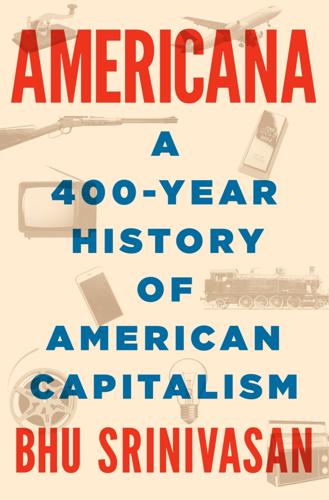
Americana: A 400-Year History of American Capitalism
by
Bhu Srinivasan
Published 25 Sep 2017
But the new investment carried a condition: Fairchild would have an option to buy all of the eight men’s and Hayden Stone’s stakes for $3 million collectively if things went well. Officially, the eight men founded Fairchild Semiconductor. Predictably, given the Fairchild connection, their first customer was IBM, servicing the military. Before long, Fairchild exercised his option to buy all of Fairchild Semiconductor. While the eight men made substantial windfalls, the investment structure lacked the unlimited-upside element now intrinsic to the idea of the Silicon Valley start-up. In 1968 two of the original eight, Bob Noyce and Gordon Moore, looked to start another company.
…
This brave new world of high-risk start-up investing started attracting the families of old industrial wealth, university endowments, and pension funds. At the same time, many of the pioneering venture capitalists were not moneymen but graduates of the semiconductor industry. One of the eight men who had formed Fairchild Semiconductor, Eugene Kleiner, would found the venture capital firm Kleiner Perkins in 1972, not coincidentally the year after the Intel IPO. In the same year, Don Valentine, a former Fairchild sales executive, founded Sequoia Capital. Kleiner Perkins and Sequoia would become as intrinsic to Silicon Valley as the entrepreneurs themselves—the equivalent of the grand Hollywood studios, with the entrepreneurs analogous to actors, directors, and producers.
…
See also World War I; World War II Civil War and, 143–45 economic conditions, in 1920s, 326 economic conditions in, early 1600s, 20–21, 22 leaves gold standard, in 1931, 328 New World ventures, financing of, 3–17 New York surrendered by Dutch to, 24–25 railroad development in, 80–81 slave trade and, 23–24 taxation of colonies by, 30–45 tobacco first arrives in, 18–19 Enron, 481 Erie Canal, 74–78 Erie Railroad, 84 E*Trade, 473 Everett, Philo, 168 Excelsior Oil Works, 154 Exchange Act of 1933, 334 Excite, 474 Expedia, 473 explosives, 77 Facebook, 488 factors, 28, 128–29 Fairchild, Sherman, 423 Fairchild Semiconductor, 423 Fair Housing Act, 451 Family Ties (TV show), 449 Fargo, William, 110–11 farmers Great Depression and, 329, 331, 334 panic of 1893 and, 230–31 tariffs and, 226 fast food, 396–401 Federal Deposit Insurance Corporation (FDIC), 334 Federal Housing Administration (FHA), 369–70, 378 Federal Meat Inspection Act, 274 Federal Reserve system, 325, 326 Ferdinand, Archduke, 297 Ferkauf, Eugene, 403 Fifteenth Amendment to Constitution, 198 film, 336–48 bankruptcies and restructuring, in Great Depression, 340–41 Disney and, 343–45 economics of, 336 propaganda, during World War II, 364 sound, addition of, 340–41 studio system and, 338–43 finance, 436–49 Berkshire Hathaway and, 436–37, 442–43 corporate raiders and, 445–49 junk bonds and, 439–42, 446–47 leveraged buyouts and, 448–49 ownership versus management in, 443–45 in popular culture, 449 financial entrepreneurs, 444–45 Finding Nemo (film), 482 First Continental Congress, 42–43 Fitch, John, 58–59 Fitzgerald, F.

The Rise of the Network Society
by
Manuel Castells
Published 31 Aug 1996
Yet its fabrication and widespread use required new manufacturing technologies and the use of an appropriate material. The shift to silicon, literally building the new revolution on sand, was first accomplished by Texas Instruments (in Dallas) in 1954 (a move facilitated by the hiring in 1953 of Gordon Teal, another leading scientist from Bell Labs). The invention of the planar process in 1959 by Fairchild Semiconductors (in Silicon Valley) opened up the possibility of the integration of miniaturized components with precision manufacturing. Yet the decisive step in micro-electronics had taken place in 1957: the integrated circuit (IC) was co-invented by Jack Kilby, a Texas Instrument engineer (who patented it), and Bob Noyce, one of the founders of Fairchild.
…
While learning the fundamentals of cutting-edge micro-electronics from Shockley, they were turned off by his authoritarianism and stubbornness which led the firm into dead-ends. In particular, they wanted, against his decision, to work on silicon as the most promising route to the larger integration of transistors. Thus, after only one year they left Shockley (whose firm collapsed) and created (with the help of Fairchild Cameras) Fairchild Semiconductors, where the invention of the planar process and of the integrated circuit took place in the next two years. While Shockley, after repeated business failures, finally took refuge in a Stanford professorship in 1963, the “Fairchild Eight,” as soon as they discovered the technological and business potential of their knowledge, left Fairchild one by one to start their own firms.
…
Estefania, Joaquin ethics ethnicity; birth rates; entrepreneurs; marginalization; Western societies; see also race E-toys E* Trade EUREKA Europe, Eastern European Central Bank European Commission European Foundation for the Improvement of Living and Working Conditions European Information Society European Union; armed forces; Bosnia; business cultures; cities; cooperation; economy; foreign companies; immigration; information technologies; innovation; job creation; Joint Research Centre; locational strategies; Maastricht Treaty; migrant labor; national champions; racism/xenophobia; Thatcher; unemployment; working hours Evans, Peter exchange rates exclusion experience exports face-to-face contact Facebook Fager, Gregory Fainstein, Susan S. Fairchild Semiconductors Fajnzylber, Fernand Falun Gong Fama, Eugene family: Chinese firms; electronic caretaking; Japan; transformation family income Fassman, H. Fazy, Ian Hamilton FDI: see foreign direct investment Federal Express Corporation Ferguson, Marjorie fertility: see birth rates Feuerwerker, Albert fiber-optics Fidonet financial crisis, global financial markets; Asian Pacific; capital flows; crisis; deregulation; gambling; global economy; globalization; high-technology firms; information technologies; new products; telecommunications; transformation; volatility FIRE services firms, Anglo-Saxon model; Chinese family-based; globalization; hollowed-out; horizontal; ownership/control; profitability; vertical; see also high-technology fiirms; multinational corporations; small and medium firms First Direct Fischer, Claude flex-timers flexibility: information technologies; labor; management; organization; production; society work process Fluitman, Fred Flynn, P.

Americana
by
Bhu Srinivasan
But the new investment carried a condition: Fairchild would have an option to buy all of the eight men’s and Hayden Stone’s stakes for $3 million collectively if things went well. Officially, the eight men founded Fairchild Semiconductor. Predictably, given the Fairchild connection, their first customer was IBM, servicing the military. Before long, Fairchild exercised his option to buy all of Fairchild Semiconductor. While the eight men made substantial windfalls, the investment structure lacked the unlimited-upside element now intrinsic to the idea of the Silicon Valley start-up. In 1968 two of the original eight, Bob Noyce and Gordon Moore, looked to start another company.
…
This brave new world of high-risk start-up investing started attracting the families of old industrial wealth, university endowments, and pension funds. At the same time, many of the pioneering venture capitalists were not moneymen but graduates of the semiconductor industry. One of the eight men who had formed Fairchild Semiconductor, Eugene Kleiner, would found the venture capital firm Kleiner Perkins in 1972, not coincidentally the year after the Intel IPO. In the same year, Don Valentine, a former Fairchild sales executive, founded Sequoia Capital. Kleiner Perkins and Sequoia would become as intrinsic to Silicon Valley as the entrepreneurs themselves—the equivalent of the grand Hollywood studios, with the entrepreneurs analogous to actors, directors, and producers.
…
See also World War I; World War II Civil War and, 143–45 economic conditions, in 1920s, 326 economic conditions in, early 1600s, 20–21, 22 leaves gold standard, in 1931, 328 New World ventures, financing of, 3–17 New York surrendered by Dutch to, 24–25 railroad development in, 80–81 slave trade and, 23–24 taxation of colonies by, 30–45 tobacco first arrives in, 18–19 Enron, 481 Erie Canal, 74–78 Erie Railroad, 84 E*Trade, 473 Everett, Philo, 168 Excelsior Oil Works, 154 Exchange Act of 1933, 334 Excite, 474 Expedia, 473 explosives, 77 Facebook, 488 factors, 28, 128–29 Fairchild, Sherman, 423 Fairchild Semiconductor, 423 Fair Housing Act, 451 Family Ties (TV show), 449 Fargo, William, 110–11 farmers Great Depression and, 329, 331, 334 panic of 1893 and, 230–31 tariffs and, 226 fast food, 396–401 Federal Deposit Insurance Corporation (FDIC), 334 Federal Housing Administration (FHA), 369–70, 378 Federal Meat Inspection Act, 274 Federal Reserve system, 325, 326 Ferdinand, Archduke, 297 Ferkauf, Eugene, 403 Fifteenth Amendment to Constitution, 198 film, 336–48 bankruptcies and restructuring, in Great Depression, 340–41 Disney and, 343–45 economics of, 336 propaganda, during World War II, 364 sound, addition of, 340–41 studio system and, 338–43 finance, 436–49 Berkshire Hathaway and, 436–37, 442–43 corporate raiders and, 445–49 junk bonds and, 439–42, 446–47 leveraged buyouts and, 448–49 ownership versus management in, 443–45 in popular culture, 449 financial entrepreneurs, 444–45 Finding Nemo (film), 482 First Continental Congress, 42–43 Fitch, John, 58–59 Fitzgerald, F.
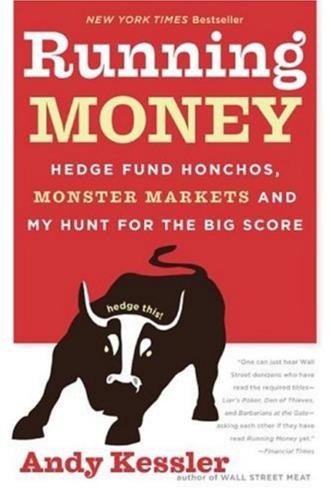
Running Money
by
Andy Kessler
Published 4 Jun 2007
I met Kilby at a TI annual meeting in the 1980s. He was about six feet and had a giant head—kind of a cross between Lurch and Uncle Fester, until you realized his head housed the massive brain of a genius. Meanwhile, farther west, after reading the January 1959 announcement by TI of their integrated circuit, Fairchild Semiconductor doubled their efforts to get more than one transistor on a device. Jean Hoerni, a Swiss physicist, came up with what is known as a planar process. 102 Running Money Hoerni used a process called optical lithography, which is similar to how photographs are made by light shining through negatives.
…
See competitive pricing Defense Department, 101, 184 Dell, 111, 206 Dell, Michael, 121, 162 Dickens, Charles, 93 Diesel, Vin, 249 Digital Equipment, 103 digital music distribution, 205–7 digital revolution, 124–28 digital watches, 127–28 Diller, Barry, 247 Doerr, John, 193, 195, 196, 197 DOS (operating system), 278 dot.coms, 209–16, 223–27, 228–29 Douglas Aircraft, 184 Dow Chemical, 236 Dreadnought (warship), 95 Drexel Burnham, 11 Druckenmiller, Stanley, 293 DSL chips, 204, 205 DVD players, 204, 253–55, 257, 259 DVD read/write drives, 81–82, 84 DVDs, 259 eBay, 247 Ebbers, Bernie, 290 Edify, 106 Efficient Market theory, 176 Efland, Greg, 127 Eisner, Michael, 164–65 Elantec, 80–84, 85, 170, 202–8, 247, 248, 263 Index elasticity, 42, 68, 77, 103 computer costs, 58, 121, 126, 128, 183 e-mail, 70 birth of, 187 design transmission by, 252–53, 258–59 Engelbart, Doug, 125, 185, 190, 197, 199, 247, 259, 279 accomplishments of, 117–22 England. See Britain Enron, 290 Ethernet, 139, 190, 191 Exar, 208 exchange rates, 164, 165, 276 Extreme, 140 Fabless Semiconductor Association, 269–70 fabs (fabrication facilities), 91, 129–34, 199, 250, 251 factories. See manufacturing Faggin, Federico, 126 Fairchild Semiconductor, 101–3, 124 family offices, 109–10 Fidelity Investments (Fido), 11, 27, 30, 31 file sharing, 190 Fleet Bank conference (1999), 175–79, 188 Fleet Boston Robertson Stephens conference (2000), 217–20, 225 flying shuttle, 64 Forbes, 40, 195 Forbes ASAP, 195 Foundry, 140 Francis, Stu, 44 Full Service Network, 194 Fulton, Robert, 92 Index Gates, Bill, 121, 125, 126, 127, 258 GDP, 237, 274 GDS-II files, 252, 254 General Electric, 274 General Magic, 97–98, 142 General Motors, 172, 241, 243, 267, 269, 277 genomic sorting, 296 GeoCities, 213 George III, King, 51, 56 Ghana, 280, 281–83, 294, 295 gigabit companies, 139–40 Gilder, George, 183 Global Crossing, 183, 187, 290 GM.
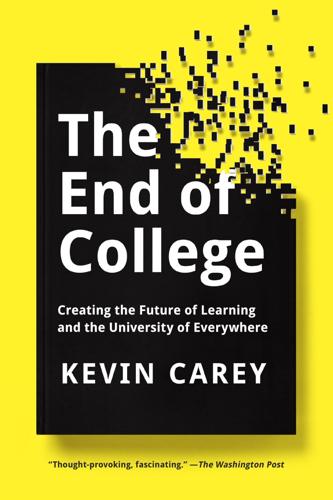
The End of College: Creating the Future of Learning and the University of Everywhere
by
Kevin Carey
Published 3 Mar 2015
Among the tenants were two of Terman’s students, William Hewlett and David Packard, who would turn their eponymous company into the biggest personal computer manufacturer in the world. At the time, Bell Labs in New Jersey was the center of the computing universe. But that began to change when William Shockley left the lab, went west, and founded Shockley Semiconductor in Mountain View, just a few miles up the road from Stanford. In 1957, Shockley begat Fairchild Semiconductor, which in turn produced Intel. The valley filled with factories churning out the hardware that would power the twentieth-century information technology revolution. Shockley and Fairchild built their increasingly powerful integrated circuits in silicon. Thus the valley’s name. The industrial genius of the circuit builders was to constantly fit more powerful arrays of computing architecture on smaller and smaller surfaces.
…
Department of, 9, 36, 56, 99, 157, 252 edX, 11, 143, 163, 170–72, 176–78, 214, 223, 231 certificates of course completion through, 203, 219, 233 controversy at Harvard over, 180 cost of course development for, 228 expansion of consortium of, 204, 244 forums moderated by teaching assistants on, 88 Lander’s lectures and course materials posted on, see Introduction to Biology—The Secret of Life (7.00x) process of signing up for classes on, 13 Eight-Year Study, The, 90 Einstein, Albert, 45 Elective system, 30–31, 47, 49, 54, 146, 197, 226 laissez-faire approach of, 76, 241 Eliot, Charles William, 29–32, 47, 49, 54, 65, 76, 138, 185, 239 Elite private institutions, 53–55, 134–36, 229, 241, 253 admissions process of, 161, 195, 212–13, 215, 245 high schools, 90, 195 international, 143 online sharing of resources by, 170 status competition among, 165 See also specific universities Emergence of the American University, The (Veysey), 34 Engelbart, Douglas, 122–26, 156 Engels, Friedrich, 45 Enlightenment, 26 Equifax, 200 Ericsson, K. Anders, 83, 92 Euclidean geometry, 17–18 Experian, 200 Facebook, 88, 145–47, 154, 199, 217 Fairbanks, Richard, 95 Fairchild Semiconductor, 124 Fathom.com, 107, 115, 116, 118, 127, 169, 185 Faust, Drew Gilpin, 171 Firefox, 205, 207 Floodgate, 128–29 Florida, University of, 140 Foldit protein-folding simulator, 37–38 Ford Motor Company, 129 Foreign Service, U.S., 40 Freeman, Richard B., 56 French Revolution, 21 Friedman, Milton, 78 G.I.
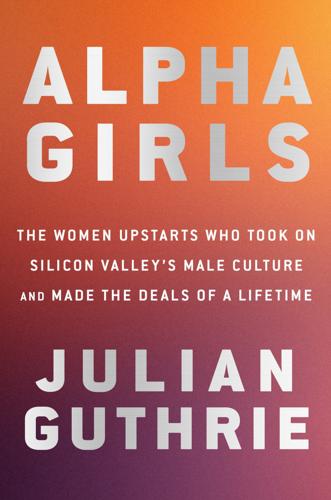
Alpha Girls: The Women Upstarts Who Took on Silicon Valley's Male Culture and Made the Deals of a Lifetime
by
Julian Guthrie
Published 15 Nov 2019
But she knew intuitively that this was the right place for her: Silicon Valley was the embodiment of breathtakingly bold ideas and inventions, a region awash in unparalleled ingenuity, originality, tenacity, optimism, and opportunity. It had given rise to more new companies and industries than anywhere else in the world, including such technology giants as Hewlett-Packard, Fairchild Semiconductor, Intel, Teledyne, ROLM, Amgen, Genentech, Advanced Micro Devices, Tandem, Atari, Oracle, Apple, Dell, Electronic Arts, Compaq, FedEx, Netscape, LSI, Yahoo!, Amazon, Cisco, PayPal, eBay, Google, Salesforce, LinkedIn, Tesla, Facebook, YouTube, Uber, Skype, Twitter, and Airbnb. But Mary Jane and the other Alpha Girls would need steel in their spines to stay the course, and they would pay a steep emotional price along the way.
…
* * * After graduating from Harvard, Sonja, at twenty-seven, was hired at Menlo Ventures, whose firm had offices adjacent to the Reid Dennis–founded IVP on Sand Hill Road. While Sonja could have remained on the East Coast, Sand Hill was her yellow brick road. It was here that the “traitorous eight” had left the manic but brilliant William Shockley to start Fairchild Semiconductor and later Intel. Here a marijuana- and hot-tub-loving Nolan Bushnell had met Sequoia Capital founder Don Valentine to fund Atari. Here Arthur Rock, at first reluctantly, had provided funds and advice to a scruffy and “very unappealing” Steve Jobs to build Apple. Here venture capitalist Tom Perkins and scientist Bob Swanson had started Genentech.

Bold: How to Go Big, Create Wealth and Impact the World
by
Peter H. Diamandis
and
Steven Kotler
Published 3 Feb 2015
In 1973, he was a freshly minted graduate of the Rensselaer Polytechnic Institute. His degree in electrical engineering led to a job with Kodak’s Apparatus Division research lab, where, a few months into his employment, Sasson’s supervisor, Gareth Lloyd, approached him with a “small” request. Fairchild Semiconductor had just invented the first “charge-coupled device” (or CCD)—an easy way to move an electronic charge around a transistor—and Kodak needed to know if these devices could be used for imaging.4 Could they ever. By 1975, working with a small team of talented technicians, Sasson used CCDs to create the world’s first digital still camera and digital recording device.
…
Shaw, 129 Devitt, Scott, 132–33 Diamandis, Peter H., 202, 278, 279, 286n Digital Apparel, 61 digital cameras, 6–7, 9, 10, 12, 12, 14, 76 first model of, 4–5, 5, 9 digitalization, 8–9, 8, 10, 20 of books, 154–55 of synthetic biology, 63, 64 digital manufacturing, 33 discovery-based insights, 160, 161–62 disruption, exponential, 8, 8, 9–10, 20, 24, 25, 29, 32, 39, 41, 59, 60, 256 robotics potential for, 60, 61–62 of synthetic biology, 63–65 3–D printing’s impact of, 33–35, 37, 38, 39 DIY communities, 215–16, 219, 227, 233, 239, 241, 243 case studies of, 219–25 definition of, 215 massively transformative purpose (MTP) in, 215, 221, 230, 231, 233, 240, 242 reasons for building of, 228–29 wrong reasons for building of, 229–30 see also communities, online DIY Drones, 216–17, 229, 232, 242 DNA, 63, 64, 65 Doctorow, Cory, 38 Dogpatch, Ky., 71 doll industry, 38–39 donation funding, 172, 173 Doukas, Charalampos, 43 Downey, Robert, Jr., 117 Dragon capsules, 34, 97, 119 Drive (Pink), 79 drones, 14, 44, 61, 133, 275 dual-use crowdsourcing, 154–56 Dunn, Jason, 35–36, 37 Duolingo, 155–56 DuPont, 72 D-Wave Systems, 58, 59 Eastman, George, 3–4, 15 Eastman Dry Plate Company, 4 Eastman Kodak Company, see Kodak Corporation eBay, 118, 218 “e-discovery” software, 56 Elastec/American Marine team, 252 electric cars, 119 Ellenberg, Jordan, 255 Ellucian, 258 Engadget (blog), 177, 206 engagement strategies: in crowdfunding campaigns, 203–6, 207 early donor, 203–5 incentive competitions as, see incentive competitions for media attention, 205–6 in online communities, 224, 227, 235, 236–38, 239, 241 rating systems as, 226, 232, 236–37, 240 entitlement problem, 237 Entrepreneur, 62 entrepreneurs, exponential, xi, xii–xiv, 15, 17, 21–22, 24, 28, 41, 66–67, 73, 115–16, 123, 169, 231, 243, 274, 278 AI and, 54, 56–59 birthing projects above line of super-credibility and, 96, 98–99, 98, 100, 101–2, 107, 190, 199, 203, 266, 272 building online communities for, see communities, online choosing technology for development by, see technology, exponential crowd tools of, see crowdfunding, crowdfunding campaigns; crowdsourcing; incentive competitions incentive prizes as tools of, see incentive competitions infinite computing and, 50–52 networks and sensors trend and, 43, 47–48 passion as important in, 106–7, 119–20, 122, 125, 134, 174, 183, 184, 228 psychological tools for, see psychological tools, of entrepreneurs risk management and, 76–77, 82, 83, 84, 86, 87, 88, 92, 93, 103, 109, 121–22, 126–27, 137, 261, 270 robotics and, 60, 61, 62 solving problems as business opportunities for, xii thinking at scale and, see scale, thinking at in 3–D printing, 35–39 see also specific entrepreneurs and companies equity funding, 172, 173–74 European Space Agency (ESA), 102 experts, in crowdfunding campaigns, 193 exponential communities, xiii, 148, 182, 219, 233 case study of, 225–28 definition of, 215–16 DIY vs., 215–16 see also communities, online exponential growth curve, x, 6, 7, 9, 12, 12, 36, 37, 41, 54, 59 of biotechnology, 64 linear vs., 7, 9 Six Ds of, see Six Ds of Exponentials exponential organizations, 15–17, 18–21, 22 crowd tools of, see crowdfunding, crowdfunding campaigns; crowdsourcing; incentive competitions definition of, 15 linear vs., 15, 17, 18, 19, 20, 21 structure of, 21 see also entrepreneurs, exponential; specific exponential entrepreneurs and organizations Exponential Organizations (ExO) (Ismail), xiv, 15 extrinsic rewards, 78, 79 Exxon Valdez, 250 FAA (Federal Aviation Administration), 110, 111, 261 Facebook, 14, 16, 88, 128, 173, 182, 185, 190, 195, 196, 202, 212, 213, 217, 218, 224, 233, 234, 236, 241 facial recognition software, 58 Fairchild Semiconductor, 4 Falcon launchers, 97, 119, 122, 123 false wins, 268, 269, 271 Fast Company, 5, 248 Favreau, Jon, 117 feedback, feedback loops, 28, 77, 83, 84, 120, 176, 180 in crowdfunding campaigns, 176, 180, 182, 185, 190, 199, 200, 202, 209–10 triggering flow with, 86, 87, 90–91, 92 Festo, 61 FeverBee (blog), 233 Feynman, Richard, 268, 271 Firefox Web browser, 11 first principles, 116, 120–21, 122, 126 Fiverr, 157 fixed-funding campaigns, 185–86, 206 “flash prizes,” 250 Flickr, 14 flow, 85–94, 109, 278 creative triggers of, 87, 93 definition of, 86 environmental triggers of, 87, 88–89 psychological triggers of, 87, 89–91, 92 social triggers of, 87, 91–93 Flow Genome Project, xiii, 87, 278 Foldit, 145 Forbes, 125 Ford, Henry, 33, 112–13 Fortune, 123 Fossil Wrist Net, 176 Foster, Richard, 14–15 Foundations (Rose), 120 Fowler, Emily, 299n Foxconn, 62 Free (Anderson), 10–11 Freelancer.com, 149–51, 156, 158, 163, 165, 195, 207 Friedman, Thomas, 150–51 Galaxy Zoo, 220–21, 228 Gartner Hype Cycle, 25–26, 25, 26, 29 Gates, Bill, 23, 53 GEICO, 227 General Electric (GE), 43, 225 General Mills, 145 Gengo.com, 145 Genius, 161 genomics, x, 63, 64–65, 66, 227 Georgia Tech, 197 geostationary satellite, 100 Germany, 55 Get a Freelancer (website), 149 Gigwalk, 159 Giovannitti, Fred, 253 Gmail, 77, 138, 163 goals, goal setting, 74–75, 78, 79, 80, 82–83, 84, 85, 87, 137 in crowdfunding campaigns, 185–87, 191 moonshots in, 81–83, 93, 98, 103, 104, 110, 245, 248 subgoals in, 103–4, 112 triggering flow with, 89–90, 92, 93 Godin, Seth, 239–40 Google, 11, 14, 47, 50, 61, 77, 80, 99, 128, 134, 135–39, 167, 195, 208, 251, 286n artificial intelligence development at, 24, 53, 58, 81, 138–39 autonomous cars of, 43–44, 44, 136, 137 eight innovation principles of, 84–85 robotics at, 139 skunk methodology used at, 81–84 thinking-at-scale strategies at, 136–38 Google Docs, 11 Google Glass, 58 Google Hangouts, 193, 202 Google Lunar XPRIZE, 139, 249 Googleplex, 134 Google+, 185, 190, 202 GoogleX, 81, 82, 83, 139 Google Zeitgeist, 136 Gossamer Condor, 263 Gou, Terry, 62 graphic designers, in crowdfunding campaigns, 193 Green, Hank, 180, 200 Grepper, Ryan, 210, 211–13 Grishin, Dmitry, 62 Grishin Robotics, 62 group flow, 91–93 Gulf Coast oil spill (2010), 250, 251, 253 Gulf of Mexico, 250, 251 hackathons, 159 hacker spaces, 62, 64 Hagel, John, III, 86, 106–7 HAL (fictional AI system), 52, 53 Hallowell, Ned, 88 Hariri, Robert, 65, 66 Harrison, John, 245, 247, 267 Hawking, Stephen, 110–12 Hawley, Todd, 100, 103, 104, 107, 114n Hayabusa mission, 97 health care, x, 245 AI’s impact on, 57, 276 behavior tracking in, 47 crowdsourcing projects in, 227, 253 medical manufacturing in, 34–35 robotics in, 62 3–D printing’s impact on, 34–35 Heath, Dan and Chip, 248 Heinlein, Robert, 114n Hendy, Barry, 12 Hendy’s law, 12 HeroX, 257–58, 262, 263, 265, 267, 269, 299n Hessel, Andrew, 63, 64 Hinton, Geoffrey, 58 Hoffman, Reid, 77, 231 Hollywood, 151–52 hosting platforms, 20–21 Howard, Jeremy, 54 Howe, Jeff, 144 Hseih, Tony, 80 Hughes, Jack, 152, 225–27, 254 Hull, Charles, 29–30, 32 Human Longevity, Inc.
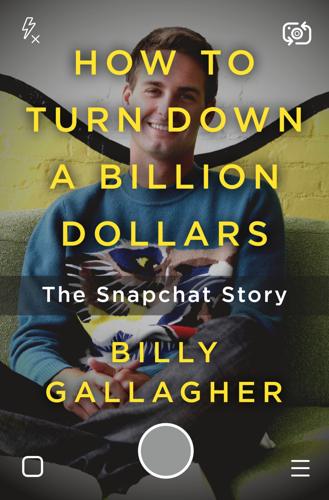
How to Turn Down a Billion Dollars: The Snapchat Story
by
Billy Gallagher
Published 13 Feb 2018
” * * * If you made a country out of all the companies founded by Stanford alumni, it would have a GDP of roughly $2.7 trillion, putting it in the neighborhood of the tenth largest economy in the world. Companies started by Stanford alumni include Google, Yahoo, Cisco Systems, Sun Microsystems, eBay, Netflix, Electronic Arts, Intuit, Fairchild Semiconductor, LinkedIn, and E*Trade. Many were started by undergraduates and graduate students while still on campus. Like the cast of Saturday Night Live, the greats who have gone on to massive career success are remembered, but everyone still keeps a watchful eye on the newcomers to see who might be the next big thing.
…
Miami (Michael Salzhauer) Drimal, Chloe Dropbox Dubie, Jack Duplan, Lucas Dutch Goose (Menlo Park sports bar) eBay Ebersman, David Eggers, Barry Electronic Arts Entourage (television series) ESPN Etchemendy, John E*Trade Facebook demographics of users innovation and Instagram purchased by interest in Snapchat launch of lawsuits Messenger Onavo purchased by Poke app Silicon Valley headquarters Slingshot app Snapchat as rebellion against Snapchat compared with Thiel and WhatsApp purchased by Winklevoss lawsuit See also Zuckerberg, Mark Fagan, Kate Fairchild Semiconductor Farley, Thomas Federal Telegraph Fenton, Peter financial crisis of 2008 Flickr Flurry (analytics platform) Founders Fund Fox Studios funding and investment Series A Series B Series C Series D Future Freshman Gallucci, Dena Gates, Bill Gatorade Gawker Gee, Garrett Gehry, Frank General Catalyst Partners geofilters Gibson Security Goddard, Julieanna.
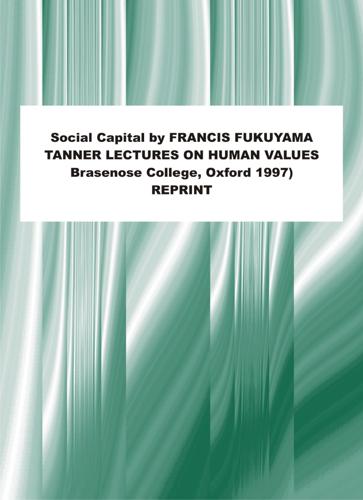
Social Capital and Civil Society
by
Francis Fukuyama
Published 1 Mar 2000
These norms can exist within the boundaries of a single organization; they can also transcend individual organizations. 450 Tanner Lectures on Human Values ford) and common employment histories (many key players in the semiconductor industry like Robert Noyce and Andy Grove worked closely with one another in the early days of the industry at Fairchild Semiconductor), or else absorbed the communal norms of the Bay Area counterculture of the late 1960s and 1970s. Informal networks are critical to technology development for a number of reasons. A great deal of knowledge is tacit and cannot be easily reduced to a commodity that can be bought and sold in an intellectual property market.
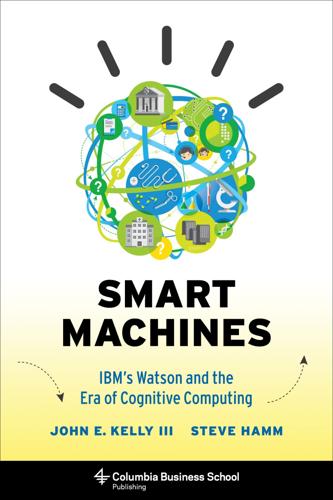
Smart Machines: IBM's Watson and the Era of Cognitive Computing (Columbia Business School Publishing)
by
John E. Kelly Iii
Published 23 Sep 2013
The transistor, invented in 1947 by John Bardeen, Walter Brattain, and William Shockley at AT&T’s Bell Labs, provides the switching capability that’s required for computation and data storage. The integrated circuit, invented separately by Jack Kilby at Texas Instruments and Robert Noyce at Fairchild Semiconductor, packs numerous transistors on a substrate of semiconducting material, enabling massive-scale production of a wide variety of tiny electronic devices. Over the years, silicon emerged as the semiconducting material of choice. In the 1960s, the microchip pioneer Gordon Moore set the tempo of an entire industry when he observed that the number of transistors on integrated circuits had been doubling roughly every year and predicted that the pace of progress would continue.
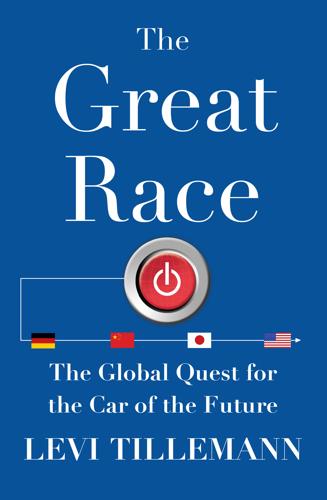
The Great Race: The Global Quest for the Car of the Future
by
Levi Tillemann
Published 20 Jan 2015
The business model of VCs is to raise large tranches of private capital—what they call “funds”—and then invest that capital in a number of companies with the potential for a rich three-to-five-year payback. These funds range from a few tens of millions to perhaps a billion dollars for the biggest VC players. Most VCs trace their origins to the veterans of the tech companies of Silicon Valley (for example, Fairchild Semiconductor and Hewlett-Packard) where expecting a three-to-five-year return is entirely reasonable. But in the mid-2000s, some of these investors forged into the sectors like energy and autos—where investments often take significantly longer to mature. In 2009, this is exactly what was happening. Some of Silicon Valley’s most storied investment groups had bet heavily on green technology remaking the energy world.
…
See automated vehicles Earth Day, 36 Eastwood, Clint, 181–83 Eberhard, Martin, 146, 147 ECD Ovonics, 24, 25 EcoBoost Engine, 4–5 economic planning programs, state, 7–8 Economic Recovery Advisory Board, 175 Economist magazine, 25 economy of California, 37 and cars in the future, 274 government role in, 6–10 and importance of auto industry, 2 and incentivizing transformation to Evs, 10–11 See also global economy; specific nation economy of scale: and history of the global auto industry, 22 Edison, Thomas, 5, 21, 24, 25 efficiency of Chinese auto industry, 212 of Japanese auto industry, 54–55 See also fuel economy/efficiency; specific manufacturer 18th Battery Research Institute, 219 863 Program, Chinese, 113–15, 204, 207, 219, 224, 235 elections of 2012, U.S., 181–82, 239 electrification in the future, 6, 255, 271–72 See also batteries; EVs Eliica (Shimizu EV), 132–33 Elise (Tesla), 147 emissions amount of, 10–11 and cars in the future, 256 and competitors in Great Race, 6 and EPA-auto industry relations, 37 EVs and, 75 funding for control of, 11 and history of global auto industry, 23–25 and incentivizing transformation to EVs, 10–11 Japanese regulation of, 64–67, 103 Kyoto Conference on carbon, 83–84 and lobbying by U.S. auto industry, 161 societal impact of, 255 and stimulus for U.S. auto industry, 171 Supreme Court ruling about, 142 See also California Air Resources Board; environmental issues; ZEV; specific manufacturer Ener1, 239 energy renewable, 259–60 security, 122, 258 transforming quality of, 273 See also type of energy Energy Independence and Security Act (2007), 161, 172 Environmental Agency, Japanese, 64 environmental issues Bush administration and, 110 in California, 24, 30, 31–34, 35, 39, 56, 142–43, 238, 244–45 and carbon pollution as market failure, 10 causes of, 31, 32–34 in China, 17–18, 100, 101, 199–200, 203–4, 218, 251, 252, 253 and confluence of technology in the future, 272, 273 difficulty in resolving issues about, 56 EVs and, 11, 75, 238 and history of global auto industry, 23–25 and importance of auto industry, 2 industrial policy and, 59 in Japan, 56, 59–60, 64–67, 81, 118, 119, 230, 238 labor unions and, 59 as “market defect,” 59 and methanol-powered cars, 72 nuclear power and, 119 politics and, 32, 75 Schwarzenegger’s concerns about, 143 and U.S. auto industry, 56, 161, 172 and U.S. elections of 2012, 239 See also climate change; emissions; global warming; specific nation or agency Environmental Protection Agency, California, 244 Environmental Protection Agency (EPA), U.S., 35–37, 39, 59, 87, 144–45, 153, 172, 256 “The EV Project” program, 180–81 EVs (electric vehicles) aging of, 75 as basis of cars in the future, 6 beginnings of, 145–46 benefits of, 11, 17, 238, 255, 256, 258, 259, 260, 272–73, 274 as “bleeding-edge” technology, 108, 113 Bush administration and, 110, 111 and California’s prelude to the Great Race, 24, 30, 145–46 CARB and, 72–75, 77, 78, 79–81, 84, 85, 86–88, 90, 92, 118, 124, 153, 212 Chinese auto industry and, 5, 16, 18, 19–20, 101, 102, 112–13, 114–15, 197–201, 203–6, 212–36, 237 commercialization of, 73, 79–80, 92, 94, 129, 134, 140, 218, 248, 257 complexity of building, 211–12, 228 cost/price of, 79, 94, 95, 257–58 “death” of, 89–93, 94 demand/market for, 11, 95, 184 first mass-produced, 20 in the future, 255–74 and history of the global auto industry, 5, 21, 24, 25–26 impact of transition to, 20–21 importance of batteries to, 219 incentives for, 10–11, 245 Japanese auto industry and, 20, 118, 119, 122–24, 125–30, 131–35, 152, 153, 186, 201–3, 212 key systems for, 233 McKinsey’s “readiness” ranking of, 201–2 media interest in, 79, 90 nuclear power and, 127, 194 Obama administration support for, 170, 183 Olympics (Beijing, 2008) and, 203–6 plug-in, 228, 247, 249, 251 and proof of concept, 72–73 public attitudes about, 108–9, 163 return of, 148 and stimulus for U.S. auto industry, 172 taxes and, 92 and Tillemann’s research about auto industry, 5 who killed, 90–91, 109 See also hybrid vehicles; ZEV; specific car or manufacturer Exxon/ExxonMobil, 25, 111 F3 sedan (BYD), 231 Fairchild Semiconductor, 173 Farrah, Michael, 163–64 Federal Trade Commission, U.S., 198 FEV (German engineering firm), 205, 228 Fiat, 169 First Automotive Works, 204 Fisker Automotive, 175–76, 177, 178, 183, 239, 240, 243, 250, 257 Florida: automated driving in, 268 flywheel energy recovery, 229 Forbes magazine, 21 Ford, Henry, 1–2, 3, 6, 21, 22, 23, 27, 42, 274 Ford Motor Company Advanced Engineering Department at, 63–64 batteries for, 198 and beginning of the Great Race, 2 and “bolt-on” system, 205 CARB and, 74, 81, 128, 244 and cars in the future, 274 competition for, 6, 46 and CVCC design, 63–64 emission standards at, 39 and government help for auto industry, 160, 171–72 and history of global auto industry, 2, 22 Honda and, 63, 68 and IP theft, 234 and Japanese auto industry, 44, 55, 249n and Japanese market, 42–43, 45 “knock-down kits” of, 43 Kuzak’s technology road map for, 4–5 Lutz at, 150 mass production/“Fordism” at, 22, 46 military vehicles of, 23 and price of cars and trucks, 22, 43 quality at, 43 reputation of, 68 restructuring of, 171–72 Sakurai at, 63–64 Sorenson at, 222 Tillemann’s presentation to, 4–5 Toyota and, 46 and U.S. economy in 2008, 159 and U.S. occupation of Japan, 52 Volvo and, 250 ZIS design copy from, 96 See also Ford Motor Company—cars/trucks of Ford Motor Company—cars/trucks of EVs and, 90, 94, 238–39 Model T, 22, 42–43 Model Y, 43 Ranger pickup, 94 “Fordism,” 22, 42, 49.
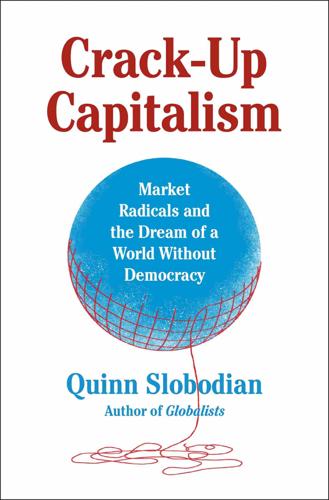
Crack-Up Capitalism: Market Radicals and the Dream of a World Without Democracy
by
Quinn Slobodian
Published 4 Apr 2023
As one of only two city-states (along with Monaco) in the UN, Singapore broke with the tyranny of existing concepts. Imported into Deng’s China, it was spawning flexible forms of the zone, variations of capitalism “with Chinese characteristics.” 3. In 1965, Gordon Moore, one of the founders of Fairchild Semiconductor, observed that the number of transistors that could fit on a microchip was doubling every two years. What became known as Moore’s law meant that hardware was shrinking every year even as the amount of data it could handle ballooned. Singapore was at the vanguard—the perfect nation for the age of the microchip.
…
See also specific locations integration of polities around 1789 zones in European Center of Austrian Economics Foundation European Economic Area (EEA) European Economic Community European Free Trade Area (EFTA) European Union. See also Europe; specific locations break up of Digital Single Market integration of Euroskeptics Excelsior hotel Exchange Square, Hong Kong “experimental gradualism” export processing zones (EPZs) extraterritoriality Facebook Fairchild Semiconductor Falkland Islands Far Eastern Economic Review Far Right federalism sociological sociological federalism Ferguson, James Ferguson, Niall feudalism fiat money system Final Fantasy Firestone First Opium War Fisher, Antony Flanders, Belgium flat tax Florida Food and Drug Administration Food Zone, Jilin, China foreign trade zones Fort Ross Foster, Norman Foundation for Economic Education founders fracking fragmentation “fragmented authoritarianism” France franchise, restricted franchise zones Francis, Samuel Franz-Josef II, Prince freedom.
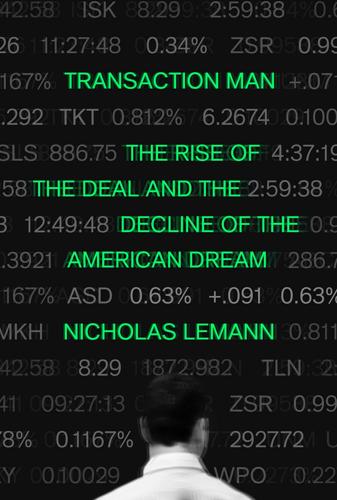
Transaction Man: The Rise of the Deal and the Decline of the American Dream
by
Nicholas Lemann
Published 9 Sep 2019
The official founding date of Silicon Valley was 1939, when two young engineers, William Hewlett and David Packard, founded Hewlett-Packard, an electronic instrument company, in a garage not far from the campus of their alma mater, Stanford University. The Valley in its recognizable present form really dates from 1968, when a group of eight engineers left Fairchild Semiconductor to start Intel, which became the leading manufacturer of silicon chips. It’s worth recalling how little the founding of new companies was part of the prevailing narrative of how business worked in the middle decades of the twentieth century. It was an article of faith for Adolf Berle and his intellectual allies that only large corporations could create successful new technology-based products; their size, their large capital reserves, the passivity of their shareholders, and the security they offered their employees made it possible for them to maintain research divisions that smaller businesses could never afford.
…
Merrick Dominican Republic dot-com bust of 2000 Drexel Burnham Lambert Drift and Mastery (Lippmann) Drucker, Peter passim Dulles, Allen Dulles, John Foster Dungeons & Dragons DuPont Durant, William Durbin, Richard Duvall, Jeff dynamic modeling East Asia, debt in; see also specific countries East Garfield Park eBay economics, academic; on competition; macroeconomic approach adopted by; statistical approach adopted by Economics and the Public Purpose (Galbraith) economy, ways of organizing; see also corporations; investment banking; networks Edison, Thomas efficient market hypothesis Ehrenhalt, Alan Einstein, Albert Eisenhower, Dwight, appointees of Electric Storage Battery elites; corporations founded by; at Morgan Stanley; Silicon Valley and Elmendorf, Doug El Rukns End of Ideology, The (Bell) energy, regulation of Englewood Enron environmental movement Erhard, Ludwig Erhard, Werner; in collaboration with Jensen Erhard-Jensen Ontological/Phenomenological Initiative est European Union eWorld executives; charges against; compensation of; decision-making by; firing of; pressures on; selection of; social responsibility of; subjected to market; see also bureaucrats “Existence of an Equilibrium” (Arrow and Debreu) Facebook; acquisitions by; founders of; LinkedIn vs.; misleading information on factories Fairchild Semiconductor Fair Deal Fair Housing Act Fama, Eugene; efficient market hypothesis of; journal edited by fascism Fed, see Federal Reserve Board Federal Communications Commission Federal Deposit Insurance Corporation federal government; corporations regulated by; deficit of; deposits guaranteed by; finance deregulated by; liberal suspicion of; markets regulated by; in 2008 financial crisis; see also Congress; specific administrations and agencies Federal Housing Administration “Federalist Number 10” (Madison) Federal National Mortgage Association Federal Power Commission Federal Reserve Board; Bear Stearns and; under Bernanke; under Greenspan passim; New York branch of; time prior to; under Volcker Federal Savings and Loan Insurance Corporation Federal Trade Commission Feminine Mystique (Friedan) feminism Fidelity Investments Financial Crisis Inquiry Commission financial economics: critiques of; paradigm shift in; Wall Street’s marriage to financial institutions: closings of; competition for talent between; growth of; limitations on; in Silicon Valley; see banking; investment banking; savings and loans financial panic of 1907 Financial Services Modernization Act of 1999 financial systems: computerization of, see under computers; deregulation of, see deregulation; failures in see also 2008 financial crisis; fragility of; globalization of, see globalization; new techniques of; reregulation of; see also capitalism; investment banking; Jensen, Michael First Boston Fisher, Irving Fisher, Richard (Dick); as head of Morgan Stanley Fitzgerald, Jack fixed-income investments FOO (conference) Ford Ford, Henry foreclosures Fort, Jeff Fortune Fortune 500 foundation endowments 401(k) plans France, conglomerates from Frankfurter, Felix Franklin, Aretha free-market purism; defection from; liberal conversion to; pluralism and; see also Greenspan, Alan free trade Friedan, Betty Friedman, Milton Fujitsu Future of Industrial Man, The (Drucker) futures market Galbraith, John Kenneth; on corporations Galton, Francis gangs Gates, Bill Geithner, Timothy General Accounting Office (GAO) General Electric General Motors; acquisitions of; bankruptcy of; Berle and; credit company of; dealerships for; debt of; decentralized management of; Drucker embedded at; as immune to markets; Japanese competition with; management of; Morgan Stanley and; Organization Man at; other industries tied to; research lab at; safety and; size of; workers’ rights at; during WWII General Theory of Employment, Interest, and Money, The (Keynes) Germany G.
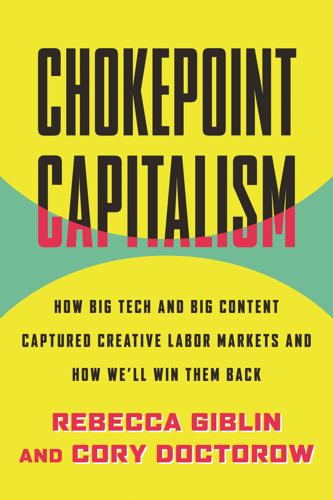
Chokepoint Capitalism
by
Rebecca Giblin
and
Cory Doctorow
Published 26 Sep 2022
Shockley established this lab to make the first silicon computer chips, but around the same time he suffered some kind of breakdown and became obsessed with eugenics, touring the nation to debate biologists and spend his Nobel money to subsidize surgical sterilizations of women of color. He also became paranoid and erratic in his personal dealings, wiretapping family members and employees. Finally, his eight most senior engineers quit in disgust, realizing they would never manage to make a chip while working for Shockley. They founded another company, Fairchild Semiconductor, and then spread out to create a whole bunch more. They included Intel, AMD, and Microchip Technology, to name just some.21 The vast majority of entertainment companies are concentrated in just two states: California and New York. Legislation in either or both states about which contractual and audit transparency and accounting practices measures are enforceable in contracts entered into with companies headquartered within those states would be a powerful check on abuses in the creative industries.
…
See radio broadcast industry Brook, Becky, 227 Buckmaster, Jim, 39 Buffet, Warren, 6 Burgess, Jean, 124 Burgess, Richard, 54, 82, 90, 171 Caldas, Charles, 72 California tech industry, 165, 249 Canada, 189, 236 capital, 246–47 capitalism, 4–5, 13 Carstensen, Peter, 10, 23, 148 Carter, Jimmy, 102 Chance the Rapper, 62 Chapel Hill, NC, 239–41 Checkm8, 120 Chen, Steve, 124 Chicago school of economics, 3–4, 5, 92–93, 146–47, 213 chickenization, 96 Childish Gambino, 73 China, 122–23 chokepoint capitalism, 9–10 cinema, 242 Citizens United case, 152 class action lawsuits, 248 Clear Channel, 90, 94 Coker, Mark, 22 Cold Case (TV series), 105 Coldrick, Annabella, 225 Cole, Henderson, 243–44 collective action: antitrust barriers to, 171–72; arbitration, 166–67; atomization of labor and, 31; collective ownership, 229–30; creator visibility and power, 169–70; importance of, 246–47, 256; job guarantees, 251–56; organizing, 178–79; private coordination and, 171–72; Writers Guild of America (WGA), 173–77 college tuition, 249 Comcast, 5 command economy, 13 Compaq, 201 comparison, 170 competition, 3–6, 13, 173 competitive compatibility (comcom), 202–4, 206–11 Computer Fraud and Abuse Act (CFAA), 200, 209 computer universality, 197–99 conduct remedies, 148 Conger, 183 consent decrees, 100 consumer debt, 249 consumer harm standard, 117, 146, 173, 250 consumer rights movement, 145–46 consumer welfare, 4, 147 Content ID, 129–35 contextual ads, 231–32 contract labor, 173 cookies, 44 copyright: about, 63–65, 246; anticircumvention laws and infringement, 209; freedom of contract, 184; industrial aggregation of, 57–58, 60–61, 181–82; orphan works, 189, 192–94; registration, 192; reversion proposals, 189–95; reversion rights, 183–89; Statute of Anne (1710), 182–83; term extension, 257; termination law, 186–88; US Copyright Act (1976), 183–84; use-it-or-lose-it rights, 194–95; works for hire, 185–86; and YouTube, 125–29 corporate mergers, 5 corporate personhood, 258 cost moats, 6 COVI D-19, 97, 101, 254 Craigslist, 39–42 Creative Artists Agency, 104, 107, 176 Creative Commons licensing, 151 creative workers: about, 3, 5, 14–19; interoperability and, 203; pay and wages, 16–17 Cross, Colleen, 156 culture, 14 Culture Crash (Timberg), 110–11 culture markets, 3, 13, 14–15 Cumulus Media, 94 data moats, 6 Dayen, David, 94 The Death of the Artist (Deresiewicz), 10 Deezer, 68, 73, 163 The Deficit Myth (Kelten), 255 Dell, 201 Deresiewicz, William, 10 device manufacturers, 43 diapers.com, 37 Digital Millennium Copyright Act (DMCA), 25, 26, 28, 38, 128, 134, 199–200, 208–9 digital rights management (DRM), 25–28, 33–34, 37–38, 202 Dinielli, David C., 50 Discovery Network, 215 Disney, 2, 161–62, 172, 212–13 Doctorow, Cory, 34, 116, 227 domain spoofing, 49 DoorDash, 166–67 DOS, 201 DRM (digital rights management), 25–28, 33–34, 37–38, 119, 120, 121 Drummond, David, 127 Dryhurst, Mat, 67, 220, 238 eBay, 40 ebooks market, 24–33, 37–38, 238 ecology movement, 251 economic rents, 118–21 The Economics of Imperfect Competition (Robinson), 10 Ek, Daniel, 84 Electronic Frontier Foundation, 202, 209 Epic Games, 115–18, 119–20 Epidemic Sound, 81–82 European Union: App Drivers and Couriers Union, 171; competition regulation, 233–34; Copyright Directive (2019), 195; dispute resolution, 166–67; General Data Protection Regulation (GDPR), 136–39, 144, 171, 231; payment data disclosure, 162, 164; press publishers’ right, 233–34; pro-creator policies, 257; remuneration legislation, 214 The Everything Store (Stone), 21 Excel, 201 Facebook, 2, 18, 45–51 Fairchild Semiconductor, 165–66 Fair Labor Standards Act, 150 fair use/dealing, 130, 189 film scoring, 215 Forbes, 47 Fortnite Battle Royale, 115–18 Foster, Alan Dean, 161–62, 212–13, 215 France, 233 freedom of contract, 184 free market, 118–21 Freire, Paulo, 237 Friedman, Milton, 152, 153, 252 Frisch, Kevin, 48 Game Workers Unite (GWU), 239 gaming industry, 115–18, 239 Gates, Rebecca, 3 Gateway, 201 Gaye, Marvin, 63–64 Gazelle Project, 21 General Data Protection Regulation (GDPR), 136–39, 144, 231 geography, and labor market, 15–16 Germany, 214 Getty Images, 229 Gibbs, Melvin, 3 Giblin, Rebecca, 186, 187, 193, 194 gig economy companies, 249 Gilded Age, 178–79 Gioia, Ted, 64 Glatt, Zoë, 133 Glazier, Mitch, 186 Goldenfein, Jake, 235 Goodman, David, 106, 175, 176 Google: about, 2, 7, 10, 15, 18; in Australia, 235; Content ID system, 129–35; and Epic Games, 116, 117; and General Data Protection Regulation (GDPR), 136–39; news and advertising, 42–45; News Showcase, 234; streaming share, 83; third-party cookies, 232; YouTube acquisition, 125–29, 134 Google Classroom, 210 Green, Joshua, 124 Green, Matthew, 209 Hachette, 23, 28 Haggard, Merle, 166 Harcourt, Amanda, 70, 83 hate, and profits, 95 health insurance, 249, 256 Herndon, Holly, 66–67 Hind, Dan, 244 hip-hop, 61 horizontal integration, 45, 46, 57, 69–70, 97 Howard, George, 82 HP, 199 Huang, Andrew, 209 Hundt, Reed, 90 Hurley, Chad, 124, 128 Hwang, Tim, 46, 50 IBM, 149, 201 ICM Partners, 104 iHeartMedia, 18, 56, 90, 91, 94 Imeem, 133 independent cinema, 242 indyreads, 241–42 information, 14 Intel, 166 International Confederation of Authors and Composers Society, 67 interoperability: adversarial, 201–3; competitive compatibility (comcom), 202–4, 206–11; computer universality, 197–99; digital lock-in, 196–97; DMCA and, 199; as essential, 120; interoperator’s defense, 210; mandated, 204–6; physical lock-in, 196; video streaming, 198; virtual machines, 198; voluntary, 200–201 iWork, 202 Japan Fair Trade Commission, 258 Jay-Z, 2, 160 Jennings, Tom, 201 Jensen, Rich, 237 job guarantees, 251–56 Johannessen, Chip, 105 Johnson, Dennis, 21–22 Johnson, Paul, 78 Kanopy, 242 Kanter, Jonathan, 147 Karim, Jawed, 124 Karp, Irwin, 184 Kates, Mark, 62 Keating, Zoë, 66, 68 Kelten, Stephanie, 255 Khan, Lina, 6, 147 Kindle ebook store, 26–34, 37–38 Kindle Unlimited, 159–60 Kirkwood, John, 173 Klein, Naomi, 152, 254 Knowledge Ecology International, 153 Kobalt, 73 Kowal, Mary Robinette, 212–13 Kun, Josh, 59 labor, 5–6, 253–54 labor, job guarantees, 251–56 labor market and geography, 15–16 LaPolt, Dina, 61 lending right, public, 242–44 Leonard, Christopher, 96 leveraged buyouts, 91–93 libraries, 35–36, 241–44 Linda, Solomon, 188 “The Lion Sleeps Tonight” (song), 188 literary agents, 23 litigation costs, 166–67 live music industry: grind and difficulties of, 97–98; Live Nation consolidation of, 98–103; scalping, 98, 100 Live Nation: about, 2, 18, 56; antitrust remedies, 148; domination of industry, 97–103 Livingstone, Bruce, 229 local public ownership models, 239–42 location data, 50 Lofgren, Zoe, 209 Lotus 1-2-3, 201 Love, Courtney, 53 Love, James, 153 Lovett, Lyle, 53 Lyft, 249 Lynn, Barry, 22 Lynskey, Orla, 15 Macmillan, 30 Maker Studios, 133 Malamud, Carl, 130 mandated interoperability, 204–6 Manne Seminars, 103 market power, 13–14 Marrakesh Treaty to Facilitate Access to Published Works for Persons Who Are Blind, Visually Impaired or Otherwise Print Disabled, 153 Marshall, Josh, 43 Marx, Paris, 239 May, Susan, 154, 156, 158–59 Medicare for All, 256 Meese, James, 232, 235 Melville House Publishing, 21–22 Merlin, 71–72, 77 # Me Too, 47 Microchip Technology, 166 Microsoft, 201 middlemen, 46 Mills, Martin, 59 Minogue, Kylie, 3 moats, corporate, 6–7, 136 monopolies, 3–6, 9–10, 11–12, 118–19, 146, 256–59; maintenance of monopoly, 58 Monopolized!
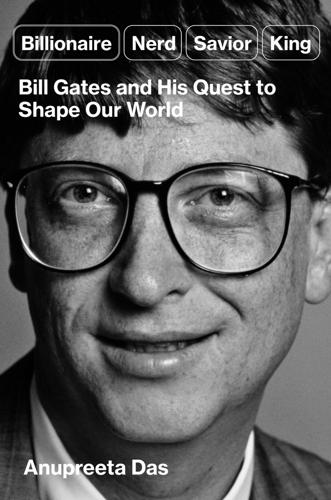
Billionaire, Nerd, Savior, King: Bill Gates and His Quest to Shape Our World
by
Anupreeta Das
Published 12 Aug 2024
Although Money was the second-largest player in the personal finance software market, it was woefully behind, with less than a quarter of the market and about one million users. Dread in the Valley In the mid-1990s, the Valley had yet to achieve the reputation it enjoys today as the center of technological innovation. Although companies like HP, Fairchild Semiconductor, and Intel had built headquarters there, followed by Apple, Oracle, and others in the 1970s, tech behemoths including Alphabet, the parent company of Google, and Meta, the parent company of Facebook, hadn’t yet been born. Instead, it was a hub of fledgling companies that for years had watched Microsoft copy or demolish their businesses or buy them outright.
…
W., 70 Bush, George W., 262 Cairo, 255 Cambridge, Mass., 273 Cambridge Analytica, 81–82 Canadian National (railway), 212 Candoo, 165 Can’t Buy Me Love (film), 51 Cape, Robbie, 67–69 Capital and Ideology (Piketty), 257 Capital in the Twenty-First Century (Piketty), 256–257 Carlin, George, 254 Carlyle, 135 Carnegie, Andrew, 4, 20, 90–91, 120–122, 134 Carnegie Endowment for International Peace, 122 Carnegie Medal of Philanthropy, 100 Carnegie Mellon University, 89–90 Cascade Asset Management, 169, 208–222 Castile, Philando, 13 CBS, 163 CDC (Centers for Disease Control and Prevention), 173, 177 celebrity divorces, 144–145 Centers for Disease Control and Prevention (CDC), 173, 177 Centre for Social Impact and Philanthropy, 196 CEPI (Coalition for Epidemic Preparedness Innovations), 177 Chan, Priscilla, 134 Chang, Emily, 58–59 Chan Zuckerberg Initiative, 203–204 Chapman, Travis, 243–244, 247, 248 Charity Navigator, 147 Charlie Rose (TV show), 95, 125 Chernow, Ron, 62 Cheryan, Sapna, 53–54, 57 Chetty, Raj, 264–265 Chicago Tribune, The, 245 Chihuly, Dale, 127 China, 262 Christian Grey (fictional character), 17 Chung, Connie, 93 Citadel, 270 Citibank, 237 Citizen Kane (film), 157 Claremont, Calif., 242 Claremont McKenna College, 209, 216 Clark, Jim, 42–43, 76, 77 Clean India Mission (Swachh Bharat Abhiyan), 194 Clegg, Nick, 82 Cleveland, Ohio, 64 Cleveland Cavaliers, 273 climate change initiatives, 279 Clinton, Bill, 70, 94, 245, 262, 264 Clinton, Hillary Rodham, 245 Clooney, Amal, 168 Clooney, George, 168 Clooney Foundation for Justice, 167–168 cloud computing, 49, 84 CNBC, 14, 232 CNN, 131 Coalition for Epidemic Preparedness Innovations (CEPI), 177 Code, The (O’Mara), 73 Codex Leicester, 96, 157, 224 Cohen, Larry, 104, 222, 231, 236 Cohen, Steve, 273 Cohon, Jared, 90–91 Coinbase, 51 Colbert, Stephen, 247 Cole, Natalie, 155 Collins, Chuck, 261–263 Collins, Tomago, 220 Columbia University, 85, 193, 267 Comcast, 239 Computer Boys Take Over, The (Ensmenger), 37 Computer Notes magazine, 35 computer programmers, 38 conspiracy theories, 243–248 Cook, Scott, 72 Cook, Tim, 18, 54, 82 Cooper, Anderson, 234 Cooperman, Leon, 260 Cornell University, 126 COVAX vaccine, 177–178 COVID-19 pandemic, 21, 174–175, 177–178, 204, 247–248 Crista Ministries, 268 Crow, Harlan, 272 Crow, Kathy, 272 Cunningham, Lawrence, 119, 123 Cusumano, Michael, 69, 80–81 “Daily Shouts” blog, 250 Dairy Queen, 118 Daisy Buchanan (fictional character), 281 Dale, Elizabeth, 22, 170–171 Dalio, Ray, 17 DALYs (disability-adjusted life years), 178–179 DARPA (Defense Advanced Research Projects Agency), 48 data, 178–181 DATA (Debt, AIDS, Trade, Africa), 100 Data for Progress, 251 Data for Progress polls, 259 Data General, 40 Debt, AIDS, Trade, Africa (DATA), 100 decacorn, 45 Deere, 212 Defense Advanced Research Projects Agency (DARPA), 48 DeGeneres, Ellen, 247 de Kooning, Willem, 270 Dell, Michael, 41, 265–266 Della Volpe, John, 252 Dell Computers, 41, 265 Del Mar, Calif., 224 Democracy in America (Tocqueville), 23 Den of Thieves (Stewart), 40 Department of Justice (DOJ), 71, 74, 77, 79, 83, 86 Dershowitz, Alan, 237 Despont, Thierry, 157 Detroit, Mich., 273–274 DFS (Duty Free Shoppers), 133 Dhawan, Ashish, 193 Digital Equipment Corporation, 40 Diller, Barry, 10, 54 Dimon, Jamie, 229 Direct from Dell, 265 disability-adjusted life years (DALYs), 178–179 disruption, 55 divorces, billionaire, 144–145 DOJ, see Department of Justice Dole Corporation, 154 donor-advised funds, 26–28, 138, 204–205, 229–231, 235 Dorfman, Aaron, 138–139 Dorsey, Jack, 204 Douglas, Michael, 40–41 Dowd, Maureen, 132 Drugstore.com, 148 Duggan, Mike, 273 Duke University, 23, 98, 140, 148, 155, 184, 188 Dungeons & Dragons (game), 51 Duty Free Shoppers (DFS), 133 Dyson, Esther, 74, 110 Early, Bert, 210 Echelman, Janet, 275 Economist, The, 106, 185 Edison, Thomas Alva, 46–47 Edstrom, Pam, 91, 93 Egan, Timothy, 67 Ehrsam, Fred, 51–52 Eisenberg, Jesse, 52 Ellevest, 165 Ellison, Larry, 36, 41, 45 Emerson, Ralph Waldo, 204 Emerson Collective, 204 Empire State Building, 65 Energy Future Holdings, 269 Ensmenger, Nathan, 32, 37–38, 47 environmental, social, and governance (ESG) issues, 239–240 Epstein, Jeffrey, 104, 105, 129, 163–164, 227–237, 241, 242 Equestrian Village, 225 Erdoes, Mary Callahan, 229–230 ESG (environmental, social, and governance) issues, 239–240 Estée Lauder cosmetics, 263 European Pharmacopoeia, 105 European Union, 87 Evans, Andy, 210 Evans Llewellyn Securities, 210 Expedia, 67 Eyes Wide Shut (film), 59 Facebook, 44, 81–82, 206 FaceMash, 51 Fafnir (myth), 77 Fairchild Semiconductor, 72 Farrow, Ronan, 232–233 Fauci, Anthony, 175, 247–248 Federal Reserve, 48, 253 Federal Trade Commission (FTC), 71, 73, 85, 86, 87 Federer, Roger, 101, 252 Feeney, Charles, 133, 136, 201 Fenway Park, 273 Fidelity, 26 Fifty Shades of Grey (James), 17 Filo, David, 75 Financial Times, 55 Fitzgerald, F.

The Coming Wave: Technology, Power, and the Twenty-First Century's Greatest Dilemma
by
Mustafa Suleyman
Published 4 Sep 2023
A decade after Bletchley, there were still only hundreds of computers around the world. We know what happened next. Computing transformed society faster than anyone predicted and proliferated faster than any invention in human history. Robert Noyce invented the integrated circuit at Fairchild Semiconductor in the late 1950s and the 1960s, imprinting multiple transistors on silicon wafers to produce what came to be called silicon chips. Shortly after, a researcher called Gordon Moore proposed his eponymous “law”: every twenty-four months, the number of transistors on a chip would double. That implied that chips, and by extension the world of digital and computational technology, would be subject to the upward curve of an exponential process.
…
That implied that chips, and by extension the world of digital and computational technology, would be subject to the upward curve of an exponential process. The results are astounding. Since the early 1970s the number of transistors per chip has increased ten-million-fold. Their power has increased by ten orders of magnitude—a seventeen-billion-fold improvement. Fairchild Semiconductor sold one hundred transistors for $150 each in 1958. Transistors are now produced in the tens of trillions per second, at billionths of a dollar per transistor: the fastest, most extensive proliferation in history. And of course this rise in computational power underpinned a flowering of devices, applications, and users.
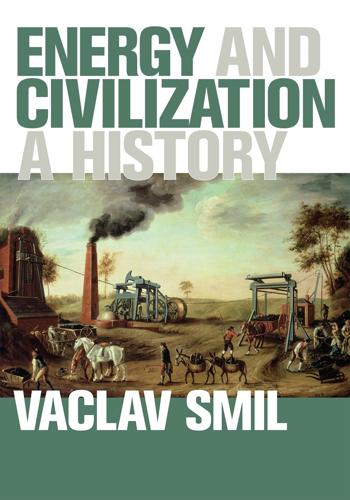
Energy and Civilization: A History
by
Vaclav Smil
Published 11 May 2017
The calculating speed of the new programmable machines started to rise exponentially as transistors supplanted vacuum tubes. Business use of computers in the United States finally took off only during the late 1950s, with Fairchild Semiconductor, Texas Instruments (which marketed the first silicon transistor in 1954), and IBM as the most accomplished developers of hardware and software (Ceruzzi 2003; Lécuyer and Brock 2010). In 1958–1959 Jack S. Kilby (1923–2005) at Texas Instruments and Robert Noyce (1927–1990) at Fairchild Semiconductor independently invented miniaturized circuits integrated into the body of semiconductor material (Noyce 1961; Kilby 1964). Noyce’s design of a planar transistor opened the new era of solid-state electronics (box 6.8).
…
Noyce’s design of a planar transistor opened the new era of solid-state electronics (box 6.8). Box 6.8 Invention of integrated circuits When working as the director of research at Fairchild Semiconductors in Santa Clara, California, Robert Noyce wrote in his lab notebook that it would be desirable to make multiple devices on a single piece of silicon, in order to be able to make interconnections between devices as part of the manufacturing process, and thus reduce size, weight, etc. as well as cost per active element. (Reid 2001, 13) Noyce’s 1959 patent application for a “semiconductor device-and-lead structure” showed a planar integrated circuit.

Work Rules!: Insights From Inside Google That Will Transform How You Live and Lead
by
Laszlo Bock
Published 31 Mar 2015
This ostentation aversion is as much a reflection of the historic engineering culture of Silicon Valley as anything special about Google. New York Times journalist David Streitfeld traces it back to the “founding” of Silicon Valley in 1957,159 when Robert Noyce, Gordon Moore, Eugene Kleiner, and five others started Fairchild Semiconductor and developed a way to mass-produce silicon transistors.160 Streitfeld describes it as a “new kind of company… one that was all about openness and risk. The rigid hierarchy of the East was eliminated. So was the conspicuous consumption.” “The money doesn’t seem real,” Noyce would later tell his father.
…
Yevgeniy Dodis, “Some of My Favorite Sayings,” Department of Computer Science, New York University, cs.nyu.edu/~dodis/quotes.html. 159. David Streitfeld, “Silicon Valley’s Favorite Stories,” Bits (blog), New York Times, February 5, 2013, http://bits.blogs.nytimes.com/2013/02/05/silicon-valleys-favorite-stories/?_r=0. 160. “William Shockley Founds Shockley Semiconductor,” Fairchild Semiconductor Corporation, http://www.fairchildsemi.com/about-fairchild/history/#. 161. Tom Wolfe, “The Tinkerings of Robert Noyce: How the Sun Rose on the Silicon Valley,” Esquire, December 1983. 162. Nick Bilton, “Why San Francisco Is Not New York,” Bits (blog), New York Times, March 20, 2014, http://bits.blogs.nytimes.com/2014/03/20/why-san-francisco-isnt-the-new-new-york/. 163.

The Innovation Illusion: How So Little Is Created by So Many Working So Hard
by
Fredrik Erixon
and
Bjorn Weigel
Published 3 Oct 2016
This can be thought of as the nexus of corporate control and specialization. Although defined differently, all firms need to control their core assets, or what really drives value. And that control is about targeting not just competitors but, perhaps more importantly, people inside the firm. This may sound like paranoia but, as the former owners of Fairchild Semi-conductor discovered, it can have huge repercussions, including unwanted notoriety. One day, two of its leading managers walked out of the company to start their own firm – and the technology that allowed the new company to succeed was something that had been developed inside Fairchild. This may not seem like a big deal, as it happens every day.
…
Strangelove character (i) driverless vehicles (i), (ii), (iii), (iv) drones, and regulation (i) Drucker, Peter (i), (ii) drugs see pharmaceutical sector dual class stock structures (i) Dutch disease (i) Dutch tulip mania (i) dynamism see discriminate dynamism theory; economic dynamism East Asia, trade and value chains (i) Ebenezer Scrooge character (i) eccentricity (i), (ii), (iii), (iv), (v) see also culture of individualism; dissent economic dynamism and capitalism (i), (ii), (iii) and innovation (i), (ii), (iii) and market contestability (i) economic growth compound growth (i) and productivity (i), (ii) and regulatory complexity/uncertainty (i) see also GDP (gross domestic product) Economic Policy Institute (Washington, DC) (i) The Economist on global corporations (i) on new technology and social dislocation (i) on pensioners vs. working-age households incomes (i) “Planet of the Phones” (i) on share buybacks (i) economy “bazaar economy” (Hans-Werner Sinn) (i) data economy (i) knowledge-based economy (i) “new economy” (i) and technology (i), (ii), (iii) see also economic dynamism; economic growth; financial economy; GDP (gross domestic product) EFAMA, on asset management industry (i) Einstein, Albert (i), (ii) electronic devices (i) electronic wallets (i) embedded liberalism (i) emerging markets (i), (ii), (iii), (iv), (v) employment protection legislation (i) see also labor; unemployment Energy Policy and Conservation Act (EPCA, US) (i) energy sector and antitrust laws (i) and innovation (i) and regulation (i), (ii) renewable/green energy: and regulation in Europe (i), (ii); and sunk costs (i) Engels, Friedrich, Communist Manifesto (Marx and Engels) (i), (ii) Enlightenment (i), (ii) Enron (i) entrepreneurs vs. bureaucrats (i), (ii) vs. managerialists (i) and passion vs. market complexity (i), (ii) Schumpeter on (i) tech entrepreneurs (i) see also entrepreneurship entrepreneurship aging trend (i), (ii) and capitalism (i), (ii) and dual class stock structures (i) and equity financing (i) and globalization (i), (ii) and innovation (i), (ii) and organizational diversification (i) vs. planning machines (i), (ii) and precautionary regulations (i) and size of firms (i) and strategy (i) and uncertainty (i) see also culture of experimentation; culture of individualism; entrepreneurs; start-ups equity vs. debt funding (i), (ii), (iii), (iv), (v), (vi), (vii) and institutional investors (i) and retirement savings (i), (ii) Ericsson (i), (ii) Ericsson, John (i) Europe asset management industry (i) big firms’ relative importance (i) capital expenditure (capex) (i), (ii)n39 corporate renewal levels (i) corporate savings (i) debt vs. equity financing (i) energy sector and antitrust laws (i) German-Central European supply chain (i) higher- vs. lower-income countries (i) labor, and tax (i) labor markets: low rates of flexibility (i); and lower productivity (i) mergers and acquisitions (i) pensions (i) productivity (i), (ii), (iii); total factor productivity (TFP) growth (i) R&D spending (i), (ii) regulation: compliance officers and Basel III (i); deregulation trend (i); index of regulatory freedom (i), (ii); index of regulatory trade barriers (i), (ii); medical devices (i); occupational/professional standards (i); technological platforms (i) services and globalization (i) trade: and big business (i); index of regulatory trade barriers (i), (ii); and value chains (i) see also eurozone; European Union European Food Safety Authority (EFSA) (i) European Union biofuels regulations (i) cadmium exemption issue (i), (ii) capitalist ownership and dual class stocks (i) chemicals regulations (i), (ii) exports to China (i) financial regulations (i), (ii); banks and Basel III rules (i), (ii) genetically modified organisms (GMOs) regulations (i), (ii), (iii) GM potato regulations (i) Leave campaign and older generation (UK) (i) nanotechnology regulations (i), (ii) precautionary principle (i) R&D scoreboards (i), (ii) Single Market (i) see also eurozone; Europe eurozone Germany and “sick man of the euro” label (i) pensions (i) see also Europe; European Union experimentation, culture of (i), (ii) see also entrepreneurs; entrepreneurship external capital markets (i), (ii), (iii), (iv), (v) Fabian Society (i) Facebook (i), (ii), (iii), (iv) failure failing companies and planning (i) formula of failure (i) and innovation process (i) Fairchild Semiconductor (i) FDI (foreign direct investment) (i), (ii), (iii) Federal Deposit Insurance Corporation (i) Federal Express (FedEx) (i), (ii) Feldstein, Martin (i) Fernald, John (i) fiduciary duties and laws (i) financial capitalism (i), (ii), (iii), (iv) see also financial economy financial crisis (2007) and aspirations (i) and financial regulations (i), (ii), (iii) and globalist worldview (i) and rich people vs. capitalists issue (i) and sovereign wealth funds (i) and stock markets (i) and Wall Street (i), (ii) see also Great Recession financial economy and gray capitalism (i), (ii), (iii) vs. real economy (i), (ii), (iii) financial institutions and financial regulations (i), (ii) and globalization (i) SIFIs (systemically important financial institutions) (i) see also banks financial regulations (i), (ii), (iii), (iv) financial sector growth of and productivity (i) financial services, and globalization (i) financial skills, vs. business-building skills (i) Financial Times on compliance officers (i) on French ban on Mercedes-Benz cars (i) Fink, Lawrence (i) Finland dependence on larger enterprises (i) Nokia story (i) firm boundaries and competition (i), (ii) and corporate managerialism (i), (ii), (iii), (iv), (v), (vi), (vii) and globalization (i) and innovation (i), (ii), (iii) and market concentration (i) and multinationals (i), (ii) and pharmaceutical sector (i) and R&D (i), (ii) and specialization (i), (ii), (iii), (iv), (v) see also firms firms entry-and-exit rates (i), (ii), (iii), (iv) high-growth firms (i) home-market firms vs. multinationals (i) interfirm vs. intrafirm trade (i) joint-stock companies (i), (ii) as logistics hubs (i), (ii) role of in the economy (i) start-ups (i), (ii), (iii), (iv), (v) unicorns (i) see also big firms; corporate size; firm boundaries; multinational (global) companies first-mover advantage (i) Food and Drug Administration (FDA, US) (i), (ii), (iii) food retailing, and globalization (i) Ford, Henry (i), (ii) Ford, Martin, The Rise of the Robots (i), (ii) foreign direct investment (FDI) (i), (ii), (iii) Fortune 500 companies (i) Foster, George (i) Foxconn (i) France ban on Mercedes-Benz cars (i) CAC 40 index (i) corporate renewal levels (i) dependence on larger enterprises (i) dirigisme (i) exports to China (i) and globalization (i) productivity, decline in and labor market rules (i) profit margins (i) public debt (i) R&D spending (i) regulation: index of regulatory freedom (i), (ii); index of regulatory trade barriers (i), (ii); medical devices (i); taxi services (i) trade: and big business (i); index of regulatory trade barriers (i), (ii) Fraser Institute, index of regulatory freedom (i), (ii) free-market capitalism (i) free speech, and academia (i) freedom (i), (ii), (iii) see also culture of individualism; dissent; eccentricity French Mississippi finance bubble (i) Frey, Carl Benedikt (i) Friedman, Milton (i) Fukuyama, Francis, The End of History and the Last Man (i) future, the (and how to prevent it) capitalist decline and pessimism (i) from corporate globalism to global corporatism (i) rise of regulatory uncertainty (i) “silver tsunami” for cash and pensions (i) state of Western economies and future imperfect (i) suggested steps to prevent the future: agency and economic history (i); boosting market contestability (i); nurturing culture of dissent and eccentricity (i); severing gray capital–corporate ownership link (i) Future Perfect, A (Micklethwait and Wooldridge) (i) G7 (Group of Seven) countries, labour productivity (i), (ii) Galbraith, John Kenneth, The New Industrial State (i), (ii), (iii), (iv), (v), (vi) Gallup, job satisfaction survey (i) Galston, William (i) Gates, Bill (i) GATT (General Agreement on Tariffs and Trade) (i) see also World Trade Organization (WTO) GDP (gross domestic product) and business investment (i), (ii), (iii) China’s (2014) (i), (ii) declining trend (i), (ii) and financial sector growth (i) GDP statistics issues (i) and global trade (i) and globalization (i) ICT hardware investment as share of (i), (ii) labor’s share of (i) and pensions (i) and R&D spending (i), (ii) and robots (i) Gekko character (Wall Street movie) (i) General Electric (GE) (i), (ii) generations boomer (or baby boomer) generation (i), (ii), (iii), (iv) The Clash of Generations (Kotlikoff and Burns) (i) EU Leave campaign and older generation (UK) (i) and income inequality (i) technology-frustrated generation (i) genetically modified (GM) potato, and EU regulation (i) genetically modified organisms (GMOs), and EU regulation (i), (ii), (iii) geographical zoning laws (i) Germany aging population (i) business investment declining trend (i) car industry: French ban on Mercedes-Benz cars (i); and value chains (i) corporate profit margins (1990–2014) (i), (ii), (iii), (iv) corporate renewal levels (i) DAX 30 index (i) dependence on larger enterprises (i) exports to China (i) German-Central European supply chain (i), (ii) and globalization (i), (ii), (iii), (iv) income inequality and generations (i) pensions (i) productivity: decline in and labor market rules (i); and wages (i) regulation: bureaucracy brake (i); deregulated vs. regulated sectors 148–9 index of regulatory freedom 151, (i); index of regulatory trade barriers 152, (i); medical devices (i); taxi services (i) “sick man of the euro” (i) trade: index of regulatory trade barriers (i), (ii); and value chains (i) Gerschenkron, Alexander (i), (ii) Gerstner, Louis (i) Ghosh, Shikhar (i) Gilder, George (i) global firms see multinational (global) companies global trade and containerization (i) expansion phases (i) and globalization, 2nd phase of (i) growth statistics (i) and market contestability (i) and multinationals (i), (ii) regionalization of Asia’s trade growth (i) regulatory trade barriers (i), (ii), (iii) see also mercantilism; protectionism; trade “Globalise or Fossilise!”
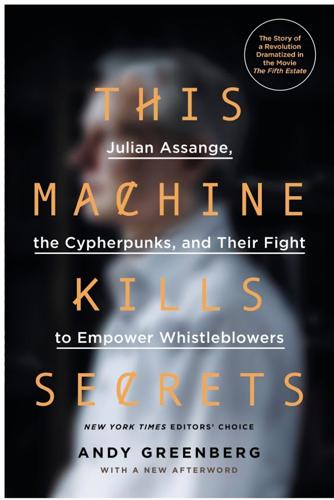
This Machine Kills Secrets: Julian Assange, the Cypherpunks, and Their Fight to Empower Whistleblowers
by
Andy Greenberg
Published 12 Sep 2012
His gray matter was plagued with a more vexing problem: the mystery of the failing semiconductors. In 1974, May had joined a small computer chip company called Intel. The little-known firm was gambling on using metal oxide semiconductors or MOS in its memory chips instead of the bipolar transistors used in traditional chips from IBM or Fairchild Semiconductor. That new approach was designed to squeeze more tiny gates containing ones or zeros of information onto a single chip, and it had recently won the microprocessor maverick an eight-figure contract from the AT&T division Western Electric to provide the memory chips in its Denver data center PBXs, the boxes that still serve as network hubs for phone systems inside of large companies.
…
Growing up and attending high school in an L.A. suburb, Chaum lived the rebellious life of a child who understands he is smarter than everyone he knows. He would show up for shop class and then play hooky the rest of the day, crossing town to sneak into computer science classes at UCLA. He ordered technical manuals for IBM and Fairchild Semiconductor chipsets, and read them the way other kids read comic books. Since no engineers at tech firms would answer the questions of a teenage upstart, he even incorporated a shell company—Security Technology Corporation—and would use it as a front to call up firms and ask questions. “I sensed that secrecy was this powerful mechanism,” he says.
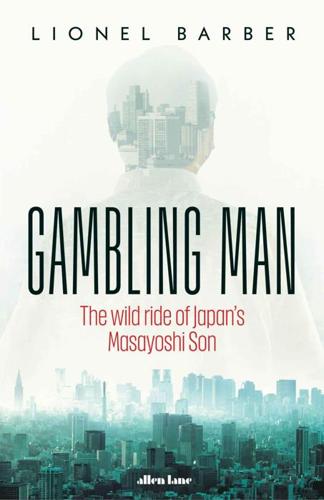
Gambling Man
by
Lionel Barber
Published 3 Oct 2024
Whether Masa fully grasped that he’d bought a publishing business which was about to be massively disrupted by the internet is also doubtful. Despite his time at Berkeley and regular visits to California, Masa never truly absorbed the culture of Silicon Valley, with its mix of academia, entrepreneurship and innovation. He was never deep into ‘Big Science’, unlike Robert Noyce, the physicist who co-founded Fairchild Semiconductor, or David Packard, co-founder of Hewlett-Packard. Nor did he contribute tens of millions to his alma mater, like Noyce, Packard and many others who were deeply involved in the mission and goals of the university. Then as now, Masa was an interloper, who only collected his Berkeley degree ten years after graduation.fn1,3 One man who did understand the shape of things to come was Eric Hippeau, a French native whom Masa had inherited as Ziff’s CEO.
…
/Softbank (2005), 174–7; Goldman Sachs exits, 171; managing of SoftBank’s stake in, 306, 307, 308, 309, 322; Masa’s deal (1999), 142–4, 147, 236, 262, 278; Masa’s investment in, 4, 144, 147, 169–71, 174–7, 262, 278, 296, 306–7, 314; Masa’s long-term faith in, 170–71, 176, 315; psychological impact on Masa, 147, 278; SoftBank as overly dependent on, 177, 321, 322; Taobao launched (May 2003), 169–71 Alta Vista, 101 Altman, Sam, 327, 330, 335 Amazon, 101, 132, 307, 312, 329 Ambani, Anil, 182 America Online (AOL), 2, 102 Anderson, James, 253 Anderson Mori & Tomotsune (law firm), 311, 314 Andreessen Horowitz, 282, 283 Ansett Airlines, 113 Apax (private equity firm), 241 Apple Computer, 35, 48, 56, 89, 178, 190, 307, 312; Apple II, 72, 73; and ARM chips, 244, 245, 247, 330; Foxconn manufactures iPhone, 268, 286; iPad, 192; iPhone, 4, 190–91, 192–3, 227–8, 268, 286; Jobs’ return to, 102–3, 190; Think Different advertising campaign (1997), 189; and Vision Fund, 266, 289 Aramco oil company, 260, 264 Argentina, 295 Ariburnu, Dalinc, 259 Arimori, Takashi, Net Bubble (2000), 163 ARM Holdings, 242, 244–55, 259, 265–6, 323, 329–31 Arora, Nikesh, 232, 233–5, 236–43, 259, 287, 288–9 artificial intelligence (AI): AGI (artificial generative intelligence), 328–32; and ARM Holdings, 265, 323, 329–31; ‘first wave’ of AI-related companies, 328–9; Masa’s current plans, 327–31, 334–5; Masa’s embrace of/optimism about, 203, 210, 211, 265, 319, 323, 327–35; Masa’s new chip-making venture, 329–30, 334–5; next generation of computer graphics chips, 304–5, 308, 323, 329–31, 334–5; and Nvidia, 304–5, 305*, 323, 330–31; and surveillance/security, 265–6; today’s dark debates about, 331, 332 Asahi Shimbun newspaper, 56, 64, 149–50 Asahi Weekly magazine, 56, 149 ASCII (Japanese computer magazine), 65 Asian Cup football tournament, 175 AstraZeneca, 248, 249 AT&T, 75, 165, 192, 224, 225–6, 227 BAE Systems, 249 Baillie Gifford, 253 Bain Capital, 288 Baker III, James A., 70 Bartz, Carol, 232, 233 baseball, 188, 196–7 Al-Bassam, Nizar, 259–60, 262, 263–4, 269 Bear Stearns, 193–4 Beijing, 142–3, 175–6, 226, 324 Bell Laboratories, 74, 75 Benchmark Capital (VC company), 283, 301 Berkeley, University of California, 27, 36–9, 40–43, 55–6, 101, 102 Berkshire Hathaway, 273–4, 296–7 Bezos, Jeff, 307 Bhanji, Nabeel, 296, 301 Bit Valley Association, 1, 3 BlackRock, 290 Blackstone, 167, 268, 288 Blair, Tony, 294 Blavatnik, Len, 239–40 Blodget, Henry, 132 Bonfield, Sir Peter, 156–7 Boston Dynamics, 275 Braun, Markus, 305–6 Brightstar, 227–8 Brin, Sergey, 232–3, 235 British Telecom (BT), 156–7, 172, 235 BSkyB, 112, 116, 117 Buffett, Warren, 84–5, 273–4, 296–7 Businessland, 83 Buzzfeed, 237–8 Cadbury, 248 California, 27–8, 33–4, 101–2, 108–9, 133, 174–5; academic-entrepreneur model on university campuses, 27–8, 37, 101–2; Berkeley, University of California, 27, 36–9, 40–43, 55–6, 101, 102; Fairmont Hotel, San Jose, 140, 148; Masa’s education in, 30–34, 35, 36–9, 40–47 see also Oakland, California; Silicon Valley, California Cameron, David, 250, 251, 294 Canon, 43 Carlson, Chuck, 41, 45 Casio, 43 Cayman Islands, 308 Centricus, 259–60 Cerberus, 185 Chambers, John, 162 Chambers, Stuart, 245–7, 249–50, 252 ChatGPT, 327, 328 Cheng Wei, 273 China: (B2C) consumer market in, 169–71, 174–7; ByteDance, 284, 321, 328; China Mobile, 225, 235; Communist party, 5–6, 144, 175, 314, 321–2; confrontation with Trump, 320; Deng Xiaoping’s reforms, 144; Didi Chuxing ride-hailing app, 273, 284, 321, 328; geopolitical impact of Xi Jinping, 314, 321–2, 324; and the internet, 4, 142–4, 145–6, 147, 158, 168–71, 174–7, 284, 328; iPhone manufactured in, 286; Japanese invasion of (1937), 11; Masa as largest foreign investor, 4–5; Masa as minor celebrity in, 142–3; Masa’s first visit to (1995), 144–5; relations with Japan, 175–6; SoftBank’s venture capital fund in, 142–3; stimulus programme (2009), 201; and Taiwan, 17; Tencent, 307; Tsinghua University in Beijing, 102*; UTStarcom, 145–6, 158; World Trade Organization entry, 147 Chudnofsky, Jason, 95 Cisco Japan, 89–90, 103, 162 Cisco Systems, 89–90, 137, 139, 143, 162 Claridge’s hotel, 261 Claure, Marcelo, 227–31, 240, 242, 287–8, 289, 316–17, 318, 323–4 Clearwire, 231 CNET, 164 Colao, Vittorio, 180 Collins, Tim, 171–4 Columbia Pictures, 80, 101, 119–20 Comcast, 240 Compuserve, 102 computer technology: AI-driven computer graphics chips, 304–5, 308, 323, 329–31, 334–5; Altair 8800 microprocessor, 33; ARM chip, 244–5, 247–8, 253, 265–6, 308, 323, 329–30; chips as scarce and most crucial resource, 331; Comdex (trade fair in Las Vegas), 72, 89, 93, 94–6, 97, 124, 189, 267–8; electronic speech translators, 37, 39–45, 48, 114, 171*; Fujita’s advice to Masa, 26; innovation in 1970s California, 27–8, 33–4, 37, 101–2; Intel 4004 chip, 35; Intel 8080 microprocessor, 33; ‘internet of things’, 244, 245, 246, 253, 254–5; invention of integrated circuit, 27; Masa at Berkeley, 36–9; memory board manufacturers, 108–11; Microsoft-Novell rivalry, 76–7; Mozer’s talking calculator, 37; networking hardware/software, 77, 89–90, 143; Novell’s ‘netware’, 76–7; personal computer revolution, 49, 51, 53–4, 74–5; Unix operating system, 75 see also artificial intelligence (AI); internet; mobile internet; software technology; telecoms Computer Weekly, 78 Confucian thought, 119, 146, 147 Costner, Kevin, 129–30 Cotsakos, Christos, 134 Coupang, 236, 319 Covid-19 pandemic, 298–302, 303, 306, 312, 314, 315, 320, 326*, 328 credit rating agencies, 184–5, 229, 306 Credit Suisse, 306, 319 Cringely, Robert X., Accidental Empires, 163 Dai-Ichi Kangyo Bank, 55, 61, 63, 98 Daoist thought, 146 DataNet (magazine publishing company), 69 Davos, World Economic Forum, 2, 147, 148, 167, 294 Deadwood, South Dakota, 129–30 Democratic Party of Japan, 220 Deng, Wendi, 120–21 Deng Xiaoping, 144 Deutsche Bank, 124, 181–4, 185, 235, 237, 259, 283, 304 Doko, Toshio, 119 Dolotta, Ted, 74–8, 91, 103 Domaine de la Romanee-Conti (DRC) wine, 239, 246, 333 DoorDash, 283, 328 dot-com bubble (1998-2000), 132–6, 138–41, 147–8, 190; AOL-Time Warner merger (2000), 2; bursting of, 4, 145, 148–51, 156, 284, 328; eVentures fund, 121; Masa’s investments during, 133–6, 138–41, 143–4, 148, 284, 328; Masa’s reinvention after crash, 4–5, 156, 201; SoftBank’s stock peaks (February 2000), 3–4; Velfarre disco event (February 2000), 1–3, 148 Dream-Works, 236 Drucker, Peter, 52 E-Access, 160, 225 EachNet, 168, 169 EADS (aerospace company), 249 East, Warren, 245 eBay, 168–9, 174, 176 economy, global: China as ‘last frontier’, 144; Covid disruption, 314; financial crisis (2008), 83, 193–6, 201; hyper-globalization, 4, 5; impact of Russo-Ukraine war, 324; inflation in post-Covid period, 320, 324; and Japan’s economic miracle, 21, 48, 178; Masa and the digital revolution, 1–5, 49, 121, 137–8, 157, 211, 244; new cold war protectionism, 5; Plaza Accord (22 September 1985), 69–70, 80; second oil price shock (1979), 48–9; World Economic Forum (Davos), 2, 147, 148, 167, 294 see also dot-com bubble (1998-2000) Edison, Thomas, 158 Eisner, Michael, 107* Elliott Management (Hedge fund), 295–8, 299–301, 302, 308, 313 Ellison, Larry, 140, 189–90, 235 entrepreneurship: of Sheldon Adelson, 93–5; emerging Chinese class, 142–3; of Den Fujita, 24–6, 33; Japanese resistance to change, 48, 83–4; Masa’s early money-making ventures in USA, 33, 36–7, 39–47, 171*; Masa’s limitless attitude to risk, 5, 54–5, 57, 133–4, 140–41, 159–61, 210–11, 273, 309–13, 331; of Mitsunori, 18–19, 20, 21–4, 54–5; as not consistent with perfection, 6; Sasaki as Silicon Valley mentor, 35; start-up ecosystem in Silicon Valley, 101–7, 127; story of Steve Jobs, 190; ‘term sheet’ convention in Silicon Valley, 284–5; and US universities in 1970s, 27–8, 37, 101–2 see also venture capital (VC) Ericsson, 188 Esrey, William, 172–4 E-trade, 134–5, 138, 139, 162, 164 E-Trade Japan, 138, 164 Excite, 101, 105 EY (accountants), 305, 306 Ezersky, Peter, 91, 93 Facebook (Meta), 236, 259, 297, 303, 307, 329 Fairchild Semiconductor, 101–2 Al-Falih, Khalid, 264 Feld, Brad, 133 Fentress, Chad, 314 film industry, 107*, 119, 129–30, 235, 236; Columbia Pictures, 80, 101, 119–20 Filo, David, 101, 102, 103–4, 105 financial/business sector: Black Monday stock market crash (1987), 108; Buffett on leverage, 297; buy-backs, 296, 297, 298–9, 300–301, 302; call options, 312; collapse of Lehman Brothers (15 September 2008), 194, 196, 197, 235; ‘conglomerate discount’, 295, 296, 308; Covid-19 emergency measures by central banks, 301–2, 312, 316; Dai-Ichi Kangyo loan, 55, 61; financial instruments, 181, 184, 235, 282, 312; hyper-globalization, 4, 5; IRR metrics, 127–8, 308–9; Japanese banks, 61, 80–85, 92, 95–6, 97–9, 136–7, 138–9, 300, 334; Japan’s ‘Little Bang’ (1993), 97–8; Japan’s ultra-low-to-negative interest rate policy, 98–9, 100; Jasdaq over-the-counter market, 76, 85, 90, 131; leveraged buy-outs, 127–8, 184–5, 191, 196, 240, 247, 274, 275, 300; “Man’s pride” (trust) in Japan, 87, 170–71, 195–6, 273; Masa’s use of opaque corporate structures, 123, 125–6, 127–9, 130, 296; Nasdaq stock market, New York, 2, 4, 138, 148, 149; old-school culture in Japan, 64, 82, 89–90, 119, 158, 195–6; preferred equity, 282; private equity, 5, 92, 134–5, 167, 171–4, 180, 185, 241, 288; related-party-transactions/off-balance-sheet dealings, 122–3, 125–6, 127–9, 130, 138, 139; securitization, 181, 185, 187, 193–4, 306; Tokyo Stock Exchange (TSE), 64, 76, 85, 90, 128, 131; Wall Street banks, 91, 92, 159, 193–4, 205, 248; ‘whole company securitization’, 185 see also dot-com bubble (1998-2000); venture capital (VC) Fink, Larry, 290, 291 Fisher, Ron, 103, 108–9, 129, 140–41, 219, 276; and Arora, 234, 235–6; at Interactive Systems, 75, 77–8; joins Softbank, 87, 99–100; leaves SoftBank, 317–18; loyalty to Masa, 133–4, 325; on Masa-Jobs relationship, 193; on Masa’s 30-Year Vision speech, 211–12; and Northstar, 309, 311; and sales of SoftBank assets, 158, 162 Flowers, J.

The Contrarian: Peter Thiel and Silicon Valley's Pursuit of Power
by
Max Chafkin
Published 14 Sep 2021
He didn’t just want to persuade college administrators to root out campus political correctness; he wanted to turn fears about political correctness into an issue that could swing an American election. 10 THE NEW MILITARY-INDUSTRIAL COMPLEX Most histories of the American tech industry begin in September 1957, at a laboratory in Mountain View, California, when a group of the country’s best young engineers at Shockley Semiconductor announced that they had decided to quit. The Traitorous Eight, as they would become known, would go on to start Fairchild Semiconductor. Led by the brilliant physicist Robert Noyce, the group developed a process to etch transistors—the building blocks of computers—onto a piece of glass. This was the first commercially viable computer chip—the silicon that made Silicon Valley. The Apollo program would buy hundreds of thousands of Fairchild-designed chips, setting off an economic boom up and down the San Francisco Peninsula that ultimately led to personal computers, websites, cryptocurrencies, smart watches, and really all of twenty-first-century capitalism.
…
J., 196, 227 Davidson, James Dale, 175 The Sovereign Individual, 175, 208–9 DCGS, 147, 216–17, 234–35, 284 DealBook conference, 326 DeAnna, Kevin, 203 DeepMind, xiii deep state, 192–93 Defense Advanced Research Projects Agency (DARPA), 145, 333 Defense Department, 114, 145–46, 149, 288, 310 Defense Intelligence Agency (DIA), 149 de Grey, Aubrey, 138, 139, 326, 327 DeMartino, Anthony, 283 democracy, 14, 32, 112, 140, 141, 176, 182, 192, 250, 303, 318, 321, 322 Democrats, Democratic Party, 47, 94, 179, 197, 220, 281, 301, 306, 313, 333 “Atari,” 94 Facebook and, 299, 300, 302–3 Deng, Wendi, x Denny, Simon, 305–6 Denton, Nick, 123–29, 194–96, 200, 201, 227–33 Deploraball, 255 Dershowitz, Alan, 198 Details, 173, 175 Dhillon, Harmeet, 279 Dickinson, Pax, 202 Dietrick, Heather, 201 Digg, 118 Dimon, Jamie, 118 disruption, 77, 313 Diversity Myth, The (Thiel and Sacks), 40–42, 47, 53, 145, 202, 252, 344n DNA sequencing, 168 Doherty, Bran, 181 Donnelly, Sally, 283 Doohan, James, 59 dot-com era, 48, 68, 73, 80, 84, 85, 88, 95, 98, 118, 292 Dowd, Maureen, 266 Downs, Jim, 243 Drange, Matt, 230 drones, 152, 288 Dropbox, 298 Drudge Report, viii drug legalization, 178–79, 259 D’Souza, Aron, 166, 193–95, 198, 201 D’Souza, Dinesh, 31, 35, 42, 61, 99 Duke, David, 31 Dungeons & Dragons (D&D), 1–2, 8, 306 Earnhardt, Dale, Jr., 299 Eastwood, Clint, 182 eBay Billpoint and, 56, 65, 90 PayPal and, 56, 59, 64–66, 70, 80–81, 84–85, 147, 274 PayPal acquired by, xii, 76, 88–91, 105, 108 Eden, William, 331 Edmondson, James Larry, 38 education, higher, xvi, 158, 160–62, 191–92, 335 Edwards, John, 177 Eisenberg, Jesse, 159 Eisman, Steve, 132 Electric Kool-Aid Acid Test, The (Wolfe), 162 Elevation Partners, 76 Ellis, Bret Easton, 25 Ellis, Curt, 251 Ellison, Larry, 68, 188, 221 Emergent Ventures, 192 Endorse Liberty, 179–81 EPA (Environmental Protection Agency), 250, 251 Epstein, Marcus, 203 ESPN, 99 Esquire, 144 extropianism, 23 Facebook, viii, ix, xiii, 77, 105–9, 112, 119, 134, 135, 141, 159, 162–64, 180, 182, 213, 234, 245, 259, 264, 268, 271, 276–77, 279, 280, 282, 285, 291–304, 317 Cambridge Analytica scandal and, 219–20 China and, 298–99 conservative opinions and, viii–xi, 245–46, 298, 300, 303–4 COVID pandemic and, 309, 313 Democrats and, 299, 300, 302–3 IPO of, 292, 294 Luckey at, 296 and 2008 US presidential election, 135 and 2016 US presidential election, 299, 323 Russia and, 245, 299 Trump and, 220, 245–46, 299–300, 302–4, 323 users’ sharing of information on, 297 Fairchild Semiconductor, 143–44 Falwell, Jerry, Jr., 237 Fast Company, 135 Fathom Radiant, 168 FBI, 79, 80, 114, 149, 289 FCC, 249 FDA (Food and Drug Administration), xvii, 181–82, 249, 253–54, 308, 316, 327 Federalist Society, 33, 170, 250 Federal Reserve, 133, 178, 183 Federation for American Immigration Reform (FAIR), 139, 266 feminism, 36, 202 Ferguson, Niall, 280–81 Fidelity, 211 Fieldlink, 50–51 1517 Fund, 169 financial crisis of 2008, 131–33, 145, 311, 313 Great Recession following, 104, 132, 157, 178 Financial Times, 124 Fincher, David, 159 Finish, The (Bowden), 152–53 Fiorina, Carly, 221, 223–25 Fischer, Bobby, 7, 22 Flatiron Health, 253 Flickr, 118 Flooz, 56, 68, 72 Flynn, Michael, 148–49, 235, 283–84 Forbes, 154, 215, 230 Ford, Henry, 270 formalism, 176 Fortune, 121, 192, 223, 231 Foster, Jodie, 128 Foster City, Calif., 1–2, 6–7, 10 Founders Fund, 119–21, 126, 138, 160, 162–64, 167, 168, 170, 173, 180, 189, 211, 214, 234, 248, 249, 269, 282, 285, 293, 297, 309, 310, 319, 330 Founder’s Paradox, The (Denny), 305–6 Fountainhead, The (Rand), 176 Fox News, x, 179, 247–48, 286, 289, 332 Free Forever PAC, 315 Frieden, Tom, 311 Friedman, Milton, 137 Friedman, Patri, 136–37, 169, 174, 176 Friedman, Thomas, 189 Friendster, 105 Frisson, 97–99, 108, 210 From Poop to Gold (Jones), 180 FTC, 249, 281 FWD.us, 263 Gaetz, Matt, 302 gambling, 81–83 Gamergate, 204 GameStop, 330 Garner, Eric, 187 Gates, Bill, 68 Gausebeck, David, 78 Gawker Media, xiv–xvi, xviii, 122, 123–24, 126–30, 133, 134, 137, 153, 184, 189, 193–98, 200–202, 228–33, 239, 277, 279, 287, 326, 334 Hogan’s suit against, xv, 195–97, 201, 227–34 Valleywag, 121, 123, 124, 126–29, 134, 140–42, 189 gay community, 34, 40–42, 125, 177 AIDS and, 32, 34, 40 conservatives in, 177 gay marriage, 177, 179, 199, 240 gay rights, 40–41, 177, 184, 186, 259, 314 homophobia and, 32–35, 40, 126, 128 outing and, 128, 129 Thiel’s sexual orientation, xviii, 41, 98, 104, 125–29, 134, 138, 239, 241, 243 Gelernter, David, 252–53 Genentech, 163 General Society of Mechanics and Tradesmen, 192 Genius Grants for Geeks, 160 Germany, 3 Gettings, Nathan, 113, 114 Ghostnet, 146, 153 Gibney, Bruce, 163 Gibson, Michael, 164, 165, 169, 174 Giesea, Jeff, 43, 200–201, 204, 255, 278, 288 gig workers, 189, 190 Gingrich, Newt, 213 Gionet, Tim, 255 Girard, René, 19–20, 42, 111 GitHub, 286 Gizmodo, viii Glitch, 230 globalization, 112, 131, 189, 209, 225, 259, 298 Goliath (Stoller), 329–30 Goldin, David, 227 Goldman Sachs, 185 Goldwater, Barry, 15, 60–61, 287 Google, xii, xiv, xvi, 55, 57, 98, 123, 133, 136, 137, 145, 169, 180, 188, 190, 191, 234, 245, 259, 261, 263, 274–81, 288–90, 295, 300, 318, 328 artificial intelligence project of, xiii, 280, 288 China and, 288–89, 321 conservatives at, 277–79 Damore at, 277–79, 281, 295–96 Defense Department and, 288 Hawley’s antitrust investigation of, 279–80 indexing of websites by, 297 monopoly of, 274–77 Palantir and, 289, 290 Places, 274 Trump and, 276 Gopnik, Adam, 124 GOProud, 177 Gore, Al, 63, 94 Gorka, Sebastian, 332 Gorshkov, Vasiliy, 80 Gorsuch, Neil, 314 Gotham, 116 GotNews, 199 Government Accountability Office, 213 Gowalla, 164 Graeber, David, 192 Greatest Trade Ever, The (Zuckerman), 132 Great Recession, 104, 132, 157, 178 Greenwald, Glenn, 150 Grigoriadis, Vanessa, 124 growth hacking, 61, 78, 271 Gruender, Raymond, 82 Guardian, 154, 230 guns, 184 Habermas, Jürgen, 115 Hacker News, 170–71 Hagel, Chuck, 271 Haines, Avril, 333 Halcyon Molecular, 138, 167–68 Haley, Nikki, 182 Hamerton-Kelly, Robert, 19–20, 111 Hamilton College, 334–36 Happer, William, 251–52 Harder, Charles, 195–97, 228, 229 Harmon, Jeffrey, 180 Harper’s, 176 Harrington, Kevin, 101, 255, 256, 283 Harris, Andy, 265 Harris, Kamala, 300, 304 Harry Potter and the Methods of Rationality, 174–75 Harvard Business School, 192 Harvard Crimson, 108 Harvard University, 107–8, 191, 308 Hastings, Reed, 295, 296, 298 Hawley, Josh, 279–80, 288, 301, 321–23, 331–33 Hayek, Friedrich, 68 HBGary, 150–51 Health and Human Services (HHS) Department, 311, 318, 320 Hellman, Martin, 50–51, 54, 172 Hello, 167 Heritage Foundation, viii Hewlett-Packard (HP), 223–24 Heyer, Heather, 272 Hillbilly Elegy (Vance), 288, 332 Hitler, Adolf, 251–52, 255, 270 Hitler Youth, 30 Ho, Ralph, 101 Hoffman, Reid, 23–24, 42, 65, 67, 71, 76, 85, 107, 108, 171, 280, 333 Hogan, Hulk (Terry Bollea), xv, 182, 195–97, 201, 227–34 Holiday, Ryan, 193, 297–98 Holocaust, 203, 251–52, 255 Hoover, Herbert, 14, 33 Hoover Institution, 14, 15, 316 Houston, Drew, 298 Howery, Ken, 53, 101, 119 How Google Works (Schmidt), 54 HP, 144 HuffPost, 204 Hughes, Chris, 135 Hume, Hamish, 234, 258 Hunter, Duncan, 149, 216, 217 Hunter, Duncan, Sr., 149 Hurley, Chad, 105 Hurley, Doug, 310 Hurricane Katrina, 209 Hurston, Zora Neale, 25, 26 Hyde, Marina, 230 IBM, 257 Iger, Bob, 264 Igor, 79, 112–14 Illiberal Education (D’Souza), 31, 35, 42 Immelt, Jeff, 264 immigration, 112, 139–40, 185, 225, 259, 261, 263, 271, 298, 313, 315 Customs and Border Protection, 267, 285–86 Palantir and, 266–68, 285–87, 290, 318 and separation of families at border, 285–86 Trump and, xii, xiii, 226, 244, 247, 260–68, 272, 285–86, 309, 314 visas and, see visas Immigration and Customs Enforcement (ICE), 267, 268, 286, 287, 290, 318 Inc., xv, 157 incels, 41 Inception, 118–19, 215 Independent Institute, 42, 82 indeterminate optimism, 171 Ingraham, Laura, 31 initial public offerings (IPOs), 46 In-Q-Tel, 116 Instagram, 296, 300–301 Intel, 144, 163, 249, 257 Intellectual Dark Web, 278, 282, 319 Intelligence Advisory Board, 271–72 intelligence work, 114, 117, 148–49, 217 Intercollegiate Studies Institute, 25, 42 International Space Station, 310 Iran, 116 Iraq War, 135, 146, 148, 178, 199, 216, 247, 284, 303 IRAs, 212–13, 313 IRS, viii, 213, 214 ISIS, 311 Islam, see Muslims, Islam Ivanov, Alexey, 80 Jackson, Candice, 243 Jackson, Eric, 53, 121 Jackson, Jesse, 31–32, 47 Jackson, Michael, 26–27, 35 Japanese Americans, 266 Jews, 252, 255, 270, 321 Holocaust and, 203, 251–52, 255 Jobs, Steve, 8, 75–77, 124, 144, 262, 331, 334, 335 Stanford University address of, 334 John M.
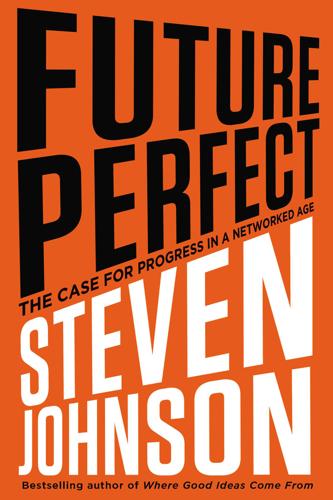
Future Perfect: The Case for Progress in a Networked Age
by
Steven Johnson
Published 14 Jul 2012
There are many potential explanations for that success, including the unique social chemistry of the Bay Area, with its strange cocktail of engineering geeks, world-class universities, and countercultural experimentation. But the organizational structure of most Silicon Valley firms also deserves a great deal of the credit. Early tech companies in the region—starting with Fairchild Semiconductor and its mammoth offspring, Intel—deliberately broke with the hierarchical social architecture of East Coast firms: in executive privileges, decision making, and compensation. Stock options, for instance, were distributed sparingly for most of the twentieth century, until the more egalitarian operations in the Bay Area began using them as a standard part of an employee’s compensation package.

From Counterculture to Cyberculture: Stewart Brand, the Whole Earth Network, and the Rise of Digital Utopianism
by
Fred Turner
Published 31 Aug 2006
As AnnaLee Saxenian has shown, the technical industries of the Valley at that time enjoyed a uniquely integrated culture. Social distinctions and institutional hierarchies common to other regions played little role in Valley life. This was especially true within the firms that would define the Valley’s computer industry. In 1957, for instance, Robert Noyce, the first CEO of Fairchild Semiconductor, did away with many of the privileges characteristic of more hierarchical firms. He and his fellow managers decreed that the parking lot would be first-come, first-serve, that dress codes would not include coats and ties, and that engineers who found themselves in meetings with their formal superiors would be encouraged to speak their minds.
…
Dobb’s Journal of Tiny BASIC Calisthenics and Orthodontia, 113 Draper, Hal, 12 Draper, John, 168 Draper, Ted, 136 Drop City, 74 –76, 94, 96, 119, 256 Droppings, 75 Durkee, Barbara, 75 Durkee, Steve, 46, 48, 50, 51, 75, 81, 97, 109 Dymax, 113 Dymaxion car, 55 Dynabook, 111, 117 Dyson, Esther, 88; chairman of ICANN, 227; and EFF, 218, 219, 220, 227; and Gingrich, 215, 219, 231–32; integration into Whole Earth network, 227; longing to return to an egalitarian world, 248; “Magna Carta for the Knowledge Age,” 228 –30; and PFF conferences, 227, 230; profile of, 226 –27; Release 2.0: A Design for Living in the Digital Age, 14; vision of Internet, 3, 16; and Wired, 222; work in Whole Earth Review, 195 Dyson, Freeman, 88, 226 [ 318 ] Index East-West bookstore, 70 ecology, as alternative politics, 43 – 45 Ecology Center, 110 e-commerce, 214 economic production, knowledge-based mode of, 240 – 42 ecosystems in nature, 203 Edwards, Paul, 17, 186 Ehrlich, Paul, 50; and coevolution, 121; population biology, 45; The Population Bomb, 43, 120; preoccupation with systems-oriented models, 44; The Process of Evolution, 44 Einstein, Albert, 122 Eisner, Michael, 211 Electric Word, 211 electronic fraud, 170 “electronic frontier,” 142, 172 Electronic Frontier Foundation (EFF), 7, 156, 172, 218, 219, 220, 227, 286n27 Electronic Information Exchange System (EIES), 129, 130, 131 electronics industry, dependent on network patterns of organization, 149 Ellul, Jacques, The Technological Society, 29 Emerson, Ralph Waldo, 55 Engelbart, Douglas, 274n10; connections to various elements of the counterculture, 109; and Global Business Network, 189; philosophy of “bootstrapping,” 108; role in the development of the ARPANET, 274n12; understanding of the social potential of computers, 107– 8; work at Augmentation Research Center, 61, 106 English, Bill, 109, 111, 120, 274n12 Erewhon Trading Company, 185 Erhard, Werner, 109 Erhard Seminar Training (EST) movement, 109 Esalen Institute, 182 Essential Whole Earth Catalog, 131 Ethernet, 111 Evans, Dave, 81, 97, 101, 109 –10, 110 Explorations ( journal), 53 Fadiman, Jim, 61 Fairchild Semiconductor, 150 Farallones Institute, 70 Farm, the, 147, 159, 277n14 Fast Company (magazine), 207 FBI, 170 Feigelson, Naomi, 49, 50 Felsenstein, Lee: forum on hacking on the WELL, 168 –70; on Hackers’ Conference, 137; and hacking community, 135; and the Homebrew Computer Club, 115; proselytizer for early computers, 133; and public peer-to-peer computing, 115; and the Tom Swift Terminal, 115; and Whole Earth Catalog, 114, 246 feminism, rise of, 152 Figallo, Cliff, 146, 147, 148, 277n1 Fisher, Scott, 163 flexible factory, 216 Fluegelman, Andrew, 137 Forrester, Jay, 27, 185 fractal formations, 203 Frank, Robert, 96 Frank, Thomas, 215 Freedom Conspiracy, 210 Free Speech Movement, 1–2, 11–13, 16, 17, 31, 34, 35, 63, 240, 242 – 43 Free University, 70 freeware, 137 French, Gordon, 102, 115 Fuller, Buckminster, 55 –56; Comprehensive Designer, 56 –57, 58, 244; Dymaxion principle, 113; geodesic dome, 65, 94; Ideas and Integrities, 56, 57, 83; imprint of cold war– era military-industrial information theory on, 58; key influence on Whole Earth community, 4, 43, 49, 80, 82, 89, 243; notion of the world as an information system, 57–58; “outlaw area,” 88; “pattern-complex,” 67, 256 Fuller, Margaret, 55 Galbraith, John Kenneth, The New Industrial State, 29 Galison, Peter, 19, 72, 264n27 game theory, 264n28, 265n43 Gans, David, 143, 166 Garcia, Jerry, 61, 66, 166 Gardner, Hugh, 119, 267n70 Garreau, Joel, 189 –90, 221 Gaskin, Stephen, 147 Gates, Bill, 7, 208 Gateway, 212 GEnie, 144 geodesic dome, 55, 65, 94 –96, 125 Ghamari-Tabrizi, Sharon, 186 Gibson, William, 164, 172, 195; Neuromancer, 162 – 63, 281n58 Index gift economy, 157–58, 279n42, 279n43 Gilder, George, 8; Bronson’s profile of, 225 –26; on the cover of Wired, 225; and deregulation, 208, 215, 216; interview with Kelly, 223 –25, 226; “Magna Carta for the Knowledge Age,” 228 –30; and Progress and Freedom Foundation, 227; promoter of telecommunications stocks, 224; relationship with Wired, 223; and Wired, 222 Gilmore, John, 172 Gingrich, Newt, 8; Contract with America, 231– 32; on the counterculture, 288n53; and deregulation, 208, 215, 216, 230, 287n49; and Dyson, 227; and Wired, 222, 223 Ginsberg, Allen, 62, 168 Gitlin, Todd, 32, 35, 119, 209; The Whole World Is Watching, 253 Gleick, James, 196 Global Business Network (GBN), 6, 7; blending of countercultural and techno-cultural organizational styles, 181– 82, 184, 248; building of, 181–94; clients of, 176; corporation as a site of revolutionary social change, 194; Garreau’s view of, 221; included former leaders of the cold war military-industrial complex, 188; lack of diversity at, 189; Learning Conferences as basis of, 181– 84; “Learning Journeys,” 190; linked formation of interpersonal networks and the modeling of network systems, 187– 88; members engaged in interpersonal and for-profit forms of interaction simultaneously, 189 – 90; metaphor of the network, 184, 189, 194; “network members,” 189; Rio Chama journey, 191–92; scenario-building workshops, 187, 192 –94; social affinity as a key element of network coherence, 205; WorldView Meetings, 190 –91 Global Crossing, 224 global marketplace, 216 “global village,” 53 Goffman, Ken (aka R.
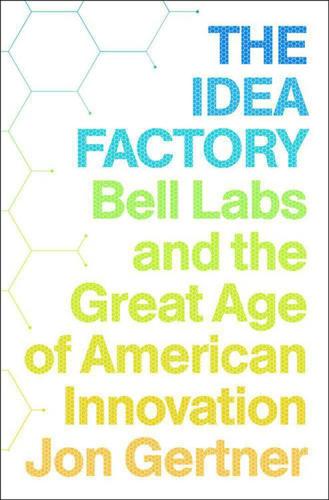
The Idea Factory: Bell Labs and the Great Age of American Innovation
by
Jon Gertner
Published 15 Mar 2012
In keeping with AT&T’s agreement with the federal government, the patents for these inventions and processes were licensed to a number of other companies, not only large industrial shops like General Electric and RCA, but also two fledgling semiconductor companies known as Texas Instruments and Fairchild Semiconductor. Fairchild had been established after its principal engineers, Robert Noyce and Gordon Moore, had fled Bill Shockley’s unhappy company along with several other colleagues to start a company of their own. In that “precompetitive era,” as Ian Ross terms it, information was freely exchanged.
…
“Davy,” 28–30, 32, 33, 37, 40, 43, 52, 60, 61, 69, 152, 353, 359 Murray Hill complex and, 76 DeButts, John, 273–74, 298 De Forest, Lee, 23 Depression, Great, 36, 37, 41, 43, 75 digital computing, 123, 251 digital information, 129–31, 185, 250–51 digital photography, 261 DiPiazza, Gerry, 293–95 discovery, invention vs., 106–7 Distant Early Warning (DEW) line, 161, 182 “Don’t Write: Telegraph” (Pierce), 202–3 Dorros, Irwin, 239, 264, 265, 333 Drucker, Peter, 302–3, 330 DuBridge, Lee, 157, 245 DuPont, 167 Echo, 212–20, 221, 222, 224, 225, 226, 227, 228, 244, 254, 323, 340 Edison, Thomas, 11–13, 14, 29, 81, 152 carbon granules and, 12, 20 Einstein, Albert, 43, 51, 267 Shannon and, 121, 131–32 Eisenhower, Dwight D., 157, 182, 217–18, 246, 247 electrolytes, 93–94, 95 electromagnetic waves, 235–36 electron diffraction, 37 electronic switching (ESS), 229, 231–34, 235, 260, 261, 290–91 electrons, 15, 42, 43, 83–84, 85, 95, 101 Electrons and Holes in Semiconductors (Shockley), 112 Elizabeth II, Queen, 224 Elmendorf, Chuck, 55, 192–94, 236, 283, 288, 312, 358 energy innovation, 355–56 Engel, Joel, 287–91, 294–95, 354 Epstein, Paul, 15 Espenschied, Lloyd, 63–64 Facebook, 344, 353–54 Fairchild Semiconductor, 251, 252 Fano, Robert, 131 Federal Communications Commission (FCC), 226–27, 260, 270–72, 280–83, 286–88, 290, 295–97, 302, 329 Fermi, Enrico, 43, 60 Feynman, Richard, 42, 63 fiber optics, 258–62, 277–79, 331, 341 testing of, 296–97 field effect, 90–91, 92, 101 Fisk, Jim, 2, 3, 38, 41, 43, 55, 59–60, 68–72, 80, 88, 133, 159, 170, 184–85, 211–13, 234–37, 242, 245–46, 248, 252, 254, 258, 260, 263, 268, 285, 300, 304, 306, 307, 311–13 Baker and, 241–42, 243 retirement of, 266 Fleckenstein, Bill, 237 Fletcher, Harvey, 15, 16, 22, 25, 26, 28, 40, 43, 65, 80, 96, 267 Jewett and, 24 Flexner, Simon, 205 Forrester, Jay, 105–6, 334 Fortune, 142, 163–64, 166, 184–85, 219, 243, 270 Frenkiel, Dick, 284–96, 351 Friis, Harald, 152–53, 174, 196, 206, 209, 213 Fry, Thornton, 122–23 Fuller, Cal, 168–69, 171–72 functional devices, 252 Galambos, Louis, 19–20 Gallatin, Mo., 9–11, 38, 342 Gates, Bill, 4, 357 General Electric (GE), 163, 251, 303, 348 germanium, 86–87, 93–95, 99, 102–4, 107, 109–10, 165–66, 168, 169 purification of, 114, 134 Gibney, Robert B., 93, 96 Ginsparg, Paul, 337 glass, 83 Glennan, Keith, 211 glider planes, 189–90, 192 Goeken, Jack, 271 “Gold Bug, The” (Poe), 124 Golden, William, 157 Goodell, Rae, 313 Google, 341, 344, 353–54 Gordon, Eugene, 109 Gould, Gordon, 255 Gray, Elisha, 17–18, 98 Greene, Harold, 297–98, 299, 302 Gunther-Mohr, Robert, 305–6 Hagelbarger, David, 144, 148 Hagstrum, Homer, 201–2 Hartley, Ralph, 121 Hayes, Brian, 339 Hecht, Jeff, 259 Herriott, Donald, 256 Hewlett, Bill, 308 Hewlett-Packard, 308, 319 Hill, Charles, 179–80 Hoddeson, Lillian, 44, 79, 88, 105 Hoerni, Jean, 181 Holmdel, 213–17, 278, 281 Black Box, 284–85, 331, 338, 339, 340, 354 Crawford Hill, 214–18, 220, 223, 258, 259, 340 horn antenna, 173–74, 206, 207, 209, 215, 223 Howard Hughes Medical Institute, 354–55 How to Build and Fly Gliders (Pierce), 189, 190, 192, 200 Hughes Aircraft, 255 IBM, 348 Kelly as consultant for, 305–6 Imperial College of Science and Engineering, 141 information, 342 digital, 129–31, 185, 250–51 see also communication and messages information theory, 125, 128–30, 135, 136, 141, 142, 149, 151, 185–86, 202, 281, 318–19 innovation, 152–53, 250, 260, 343–44 competition and, 352 energy, 355–56 at Janelia Farm, 355 Kelly’s approach to, 151–52, 186, 211, 343, 345, 347 mistakes in, 262 Morton on, 108–9, 113, 152 spurs to, 153 use of term, 107, 151–52 venture economy and, 347–48 innovation hubs, 355 innovator’s dilemma, 349–50 Institute of Radio Engineers, 203 integrated circuits, 253–54, 260, 261–62, 339 Intel, 290, 308, 341 Internet, 334, 335, 342 invention, 152–53 discovery vs., 106–7 individual genius vs. collaboration in, 133–35 Jakes, Bill, 212–18, 227, 280, 291–92, 295 Jakes, Mary, 214, 215, 216 James, Frank, 10 James, Jesse, 10 Janelia Farm, 354–55 Jansky, Karl, 106 Japan Prize, 359 Javan, Ali, 256 Jet Propulsion, 203 Jet Propulsion Laboratory, 210–11, 214, 215, 325 Jewett, Frank Baldwin, 16–19, 21, 24, 26, 27, 30, 31–33, 36–37, 45, 59, 64, 82, 83, 106, 157, 192, 246, 268, 300, 353, 356 as chairman, 78 Fletcher and, 24 Millikan and, 16–17, 22, 24 Murray Hill complex and, 76–77 transatlantic phone service and, 176 transcontinental phone service and, 21–22 Jobs, Steve, 357 Johns Hopkins University, 14 Johnson, Lyndon B., 223, 247, 248 Kahn, David, 125 Kao, Charles, 258–59, 261 Kappel, Frederick, 219, 220, 223, 231 Kasparov, Garry, 322 Keefauver, Bill, 239 Kelly, Joseph Fennimore, 9–10, 11 Kelly, Katherine, 16, 28, 155 Kelly, Mervin, 2, 3, 9–11, 13, 14, 24, 25, 26, 28–30, 32, 33, 36–38, 40, 41, 44–48, 51, 52, 59–71, 73–74, 78–81, 83, 85, 88, 108, 113–14, 127, 134, 141, 149–62, 163, 165, 169, 170, 172–73, 180, 183–85, 234, 236, 242–46, 249, 253, 266–67, 270–71, 274, 285, 300, 304–7, 311, 339, 342–43, 345–46, 352, 353 amplifier work and, 95–97 as Bell Labs executive vice president, 79, 156 as Bell Labs president, 156, 157 death of, 306–7 early life of, 9–10, 342 gardens of, 155–56, 304 as IBM consultant, 305–6 innovation as viewed by, 151–52, 186, 211, 343, 345, 347 interdisciplinary groups created by, 79–80 lectures about Bell labs given by, 149–52 military work of, 157–62, 307 Millikan and, 16 mobile phones and, 280 Murray Hill complex and, 75–78 Nobel Prize and, 181 Parkinson’s disease of, 306 Pierce and, 195–96, 306–7, 345–46 retirement of, 212, 304–5 Sandia Labs and, 159–60, 271 satellite project and, 210, 211–12, 220, 225 Shockley and, 56, 180–82 transatlantic phone cable and, 176–79 transistor and, 99, 101, 105, 108, 110–13, 180 vacuum tube work of, 33–36, 37, 82, 349 work habits of, 155, 156–57 Kennedy, John F., 224, 247, 248 Kilby, Jack, 251–54, 262 Killian, James, 157, 245 Kim, Jeong, 337–38, 343 Kleiner, Eugene, 181, 346 Kleiner Perkins, 346, 348 Kleinrock, Len, 317, 319 Kogelnik, Herwig, 256–57, 341, 345 Kompfner, Rudi, 198, 199, 201, 207, 210–14, 216, 217, 223, 256–58, 265, 275–77, 323–24, 341 death of, 324 fiber optics and, 259–60, 261, 277 Kwajalein, 293–94 Kyoto Prize, 322 Land, Edwin, 248 Landau, Henry, 190 language, 125–26 lasers, 207, 254–58, 261, 276–79, 341 Lewbel, Arthur, 320 Li, Tingye, 259 light, 275–76 infrared, 254–55 lasers, 207, 254–58, 261, 276–79, 341 optical communications, 256–61; see also fiber optics Lilienthal, David, 160 Lillienfield, Julius, 101 linemen, 49 Lombardo, Guy, 218–19 Long Lines, 25, 173, 269, 301 Los Alamos, 159 Los Angeles Times, 314 Lucent, 335–37, 338, 340, 346 Lucky, Bob, 129, 131, 144, 265, 274, 332, 357, 359 on Baker, 238 Pierce and, 190–91 Macdonald, Stuart, 90, 108, 152 magnetron, 67–69, 70, 71 Maiman, Ted, 255–56 Manhattan Project, 4, 63, 64, 66, 134, 157, 356 Marconi, Guglielmo, 177 masers, 207, 208, 209, 254–55, 359 “Mathematical Theory of Communication, A” (Shannon), 127–32, 133 “Mathematical Theory of Cryptography, A” (Shannon), 124, 125, 131 Mathews, Max, 185–86, 225, 325–26 Mayo, John, 300, 302, 327, 331, 344, 348–50, 353 McCalley, Andrew, 39 McGowan, Bill, 271–72 MCI (Microwave Communications Inc.), 271–74, 299, 328 McMillan, Brock, 127, 132, 133, 136, 138, 156, 211 Mendel, Gregor, 134 messages, see communication and messages Metcalfe, Robert, 264 Microsoft, 341, 353–54 Microwave Communications Inc.
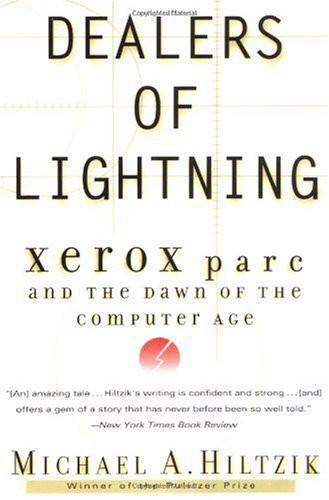
Dealers of Lightning
by
Michael A. Hiltzik
Published 27 Apr 2000
So too did he assimilate only subconsciously an article in a technical magazine he came upon while debugging NCAR’s giant CDC 6600 in Chippewa Falls, Wisconsin, in 1965. The magazine was Electronics. For its thirty-fifth anniversary issue it had invited a few industry leaders to plot a technology curve for the next ten years. The research director at Fairchild Semiconductor Co., a brilliant engineer named Gordon Moore, contributed a four-page piece insouci-antly entitled “Cramming More Components onto Integrated Circuits.” The essay forecast that as circuits became more densely packed with microscopic transistors, computing power would exponentially increase in performance and diminish in cost over the years.
…
See Star 850 word processor, Alto III versus, 264, 265, 283 Electro-Optical Systems, 33, 133 1103 memories, 110–11, 114 Elkind, Jerome I., 158, 167, 181, 192, 215, 237, 240, 255, 261, 266, 282, 320, 357, 361, 399 Advanced Systems Division and, 278, 282–84 Alto and, 168, 175, 278, 282–84 Bolt, Beranek & Newman and, 118, 119, 120, 301 Computer Science Laboratory and, 118–21, 279–82 Minicom and, 165–66, 167 Pake and, 119–21, 280, 282 Taylor and, 118–19, 120–21, 279 Ellenby, John, 211, 260–66, 390, 399–400 Alto and, 261–65, 268, 278, 283, 284–88cost analysis and, 390 Futures Day and, 266–73 Grid Systems and, 287–88laser printer (Dover) and, 265–66 E-mail, xxv, 123, 212eMate, 321 Emmy, for Shoup and Xerox, 241 Engelbart, Douglas C., 4, 123, 157, 166, 180, 201, 203, 205, 206, 210, 228, 250 Augmentation Research Center and, 63–67interactivity and, 4, 64memex and, 66mouse and, 4, 65–66, 210 NLS and, 65, 67, 207 English, William K., 67, 157, 164, 166–67, 176, 188, 203, 205, 206, 215, 307 Minicom and, 166–67 POLOS and, 307 Star and, 369 Ergonomics, 302, 307 Ether, Ethernet and, 188, 190 Ethernet, xiv, 141, 176, 261, 290, 390 Alto and, 141, 176, 184–93, 212, 250, 251, 343 Boggs and, 141, 176, 187–92commercialization of, xvii, 363–64, 392e-mail and, 212 Futures Day and, 271 Metcalfe and, xiv, xv, 141, 176, 184–93, 323, 324, 363 Notetaker and, 323–24polling program for (Worm), 289–90, 293–99 Pup for, 291–93 Systems Development Division and, 249 Xerox-Intel-DEC Ethernet standard and, xvii, 364 Ethernet-polling program (Worm), 289–90, 293–99 Evans, David, 43, 48, 72, 73, 90, 92–93 Existential worm, 298 Exxon, 391 Facilitator, 180 Fairbairn, Douglas, 327, 400 Notetaker and, 322, 324–26 POLOS and, 307 VLSI and, 305, 306–7, 308, 309, 310 Fairchild Semiconductor Co., 89 Fall Joint Computer Conference (1968), 65–66, 67 Fax, 272, 307, 308 Ferranti & Co., 260, 262, 288 Ferrite core memory, 110 Fiala, Edward R., 78, 400 Berkeley Computer Corporation and, 76–77 Bolt, Beranek and Newman and, 76 Dorado and, 324 MAXC and, 110, 113–14 File servers, 272 Fisher, Fritz, 236–37 Flegal, Robert, 54, 147, 231 FLEX machine, 79, 93–94, 109 Floating-point bug, Fiala and, 113–14 Floppy disk, 123 FM, 221 Ford, Henry, II, 30 Ford Motor Company, 22, 27, 28, 30, 34–35 Forrester, Jay, 110 Frame buffer, 231 Superpaint and, 229–41 Fuji Xerox, 369 Futures Day, xvi–xvii, 266–73, 373 Alto and, 266, 271–72, 278, 280, 393software course for executives following, 274–78 Galeener, Frank, 40 Galley editor, 340 Gandalf, 326 Garage, Dorado and, 321, 322, 324–26, 327 “Gates,” DEC and, 108–9 Gates, Bill, xvi, xxiii, xxv, 358–60, 398 General Electric, 18, 24, 101, 393 General Science Laboratory (GSL), 50, 215, 355collegiality and, 152management by, 55salary and, 61 Science Center and, 356solid-state technologies and, 55 Genie, 25, 43, 100 ARPA and, 18–20 Berkeley Computer Corporation and, 69, 70, 72–73 “Geometry Engine,” James Clark and, xvii, 300–301, 311 Geschke, Charles M.

Capitalism in America: A History
by
Adrian Wooldridge
and
Alan Greenspan
Published 15 Oct 2018
In 1954, Terman created a new university degree program that allowed full-time employees of companies to pursue graduate degrees at Stanford on a part-time basis. One of Terman’s greatest coups was to persuade William Shockley, who won the Nobel Prize as the coinventor of the transistor, to move from Bell Labs to the park in 1955. Shockley was a difficult customer—an egomaniac in fact—who both attracted and repelled talent. Fairchild Semiconductor was formed in 1957 when “the traitorous eight” left Shockley Conductor because they couldn’t take Shockley’s abusive management style any longer. The Valley had two other ingredients that proved essential for the commercialization of ideas: a large venture capital industry centered on Sand Hill Road and a ready supply of immigrants.
…
Deering, 194 DuPont, 149, 182, 210–11, 212, 265 du Pont, Lammot, II, 259 Durkin, Martin, 289 Dust Bowl, 181, 225, 262 dynamism, America’s fading, 26–28, 389–417 deaths from despair, 398–99 explaining stagnation, 399–416 potholes vs. progress, 394–98 Trump’s presidency, 416–17 Eastman Kodak, 140, 149, 288, 294 eBay, 3, 355, 403 Eckerd, Jack, 292 Edison, Thomas, 9, 20, 104–6, 131, 147–49 Edison Electric Illuminating Company, 131 education, 73, 281–82, 363–64, 365, 399–402 educational apps, 403 Eisenhower, Dwight, 25, 26, 268, 277, 279, 283, 285–86, 296 electricity, 20, 21, 23, 103–6, 200–202 electric lights, 104–6, 147–48 electrification, 106, 200–202 elevators, 110 Eliot, Charles W., 156 Ely, Richard, 178 Emancipation Proclamation, 86–87 Emergency Banking Act, 242–43 Emergency Tariff Act of 1921, 191 Emerson, Ralph Waldo, 94 Empire State Building (New York City), 195, 222–23 Employee Retirement Income Security Act (ERISA) of 1974, 339 Employment Act of 1946, 275 energy crisis, 307–9 English Revolution, 69 Enlightenment, 6, 7, 30, 44 Enron, 335, 368, 369, 411 entitlements, 404–8, 409–10, 425 Bush and prescription drug benefit, 372 FDR’s introduction of, 246–47, 252–54 gross domestic savings and, 407, 407–8 LBJ and Great Society, 303–4, 306 technology vs., 438–39 entitlement reform, 27, 440–43 in Sweden, 27, 440–42 entrepreneurialism, 3, 45–48, 333–38, 390, 396–97, 421–22, 439 Erie Canal, 51 Erie Railroad, 130, 137, 139, 167 Erie War of 1868, 139 Erlanger Bonds, 82 Essay on the Principle of Population (Malthus), 44, 300 eugenics, 164 euro currency, 347 Evans, Oliver, 45–46, 52, 53 evolution, 153, 163–64, 195–96 Fabians, 178, 218–19, 376 Facebook, 356, 390 Factor, Max, 264–65 Fageol Safety Bus, 198–99 Fairchild Semiconductor, 352, 353 Fair Labor Standards Act of 1938, 454 Fair Packaging and Labeling Act of 1967, 303 Faneuil, Peter, 36 Faneuil Hall (Boston), 36 Fannie Mae, 379–81 Faraday, Michael, 104 Farmer, Moses, 105 Farmers’ Advance, 47–48 fast-food revolution, 428 Faulkner, William, 257–58 Federal Aid Highway Act of 1956, 285–86 Federal Aid Road Act of 1916, 199 federal debt.
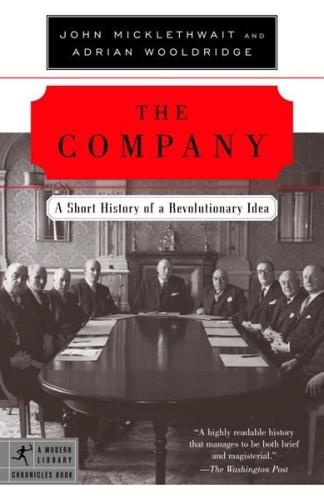
Company: A Short History of a Revolutionary Idea
by
John Micklethwait
and
Adrian Wooldridge
Published 4 Mar 2003
An unusual amount of the Valley’s growth came from gazelle companies—firms whose sales had grown by at least 20 percent in each of the previous four years. It also tolerated failure and even treachery to an unusual degree. Many would argue that its real birth date was not 1938 but the moment in 1957 when the so-called “traitorous eight” walked out of Shockley Laboratories to found Fairchild Semiconductor, which in turn spawned Intel and another thirty-six firms. Virtually every big firm in Silicon Valley was a spin-off from another one. Right from the beginning, it was a place where ties were optional, and first names compulsory. In 1956, the same year that The Organization Man was published, William Shockley (1910–1989) took all his colleagues out to breakfast in Palo Alto to celebrate the fact that he had won the Nobel Prize for inventing the transistor: a photograph shows only two of them wearing ties, and nobody wearing a suit.23 Meritocracy was crucial: youth was promoted on ability alone, and the Valley was unusually open to immigrants.

The Technology Trap: Capital, Labor, and Power in the Age of Automation
by
Carl Benedikt Frey
Published 17 Jun 2019
Hence, unsurprisingly, economists have found that places with more people in licensed occupations also have higher rates of joblessness.44 In addition, the use of noncompete clauses—in which the employee agrees not to take a similar job at a competing firm for a prespecified period of time after leaving their current firm—has increased in many American states, providing another hurdle for engineers, scientists, and professionals seeking to move to expanding firms. The ability to change jobs easily is frequently mentioned as a prime reason for the success of Silicon Valley. Indeed, the departure of Gordon Moore and Robert Noyce from Fairchild Semiconductor to found Intel in 1968 was a critical moment in the area’s history. As is well known, worker mobility is much higher in the computer industry in California in general, and in Silicon Valley in particular, than elsewhere in America.45 One widely accepted explanation credits the California Civil Code of 1872, which outlawed all covenants in employment contracts—thus ensuring that Moore and Noyce could set up Intel after leaving Fairchild.46 The economist Steven Klepper has found that the same sort of dynamism underpinned the success of Detroit’s automobile industry in its heyday.
…
See also Industrial Revolution Bronx, 182 Bronx-Whitestone Bridge, 167 Bronze Age, 35 Brown, Sherrod, 291 Brynjolfsson, Erik, 303, 326, 329, 339 bubonic plague (1348) (Black Death), 67, 75 Bureau of Labor Statistics (BLS), 191 Bush, George W., 357 Bythell, Duncan, 121 California Civil Code of 1872, 359 Čapek, Karel, 74 capitalism: perceived threat to, 210; beginnings of, 70; criticism of, 342; impact of clocks on evolution of, 47; rise of, 218; Jeffersonian ideal under, 212; normal state of, 210 capitalist achievement, 294 Capitoline Hill, 40 Captain Swing riots, 130, 285 caravel construction, 50–51 Cardwell, Donald, 47, 59, 97 Carlyle, Thomas, 117 Carnegie, Andrew, 208 Cartwright, Edmund, 105, 127 Case, Anne, 255–56 Cave, Edward, 102 Celestine III, Pope, 44 cement masonry, discovery of, 37 Chadwick, Edwin, 114–15 Charles I of England, King, 54–55, 82, 86 Chartism, 137 cheap labor, slower mechanization and, 75 Cherlin, Andrew, 276, 279 Chetty, Raj, 253, 361 child labor, 103, 123, 134; as opportunity cost to education, 214; robots of Industrial Revolution, 8–9 chimney aristocracy, 89 China: admission to World Trade Organization, 281, 286; ascent of, 289; delayed industrialization in, 88; trade war with, 331 Christensen, Clayton, 354 Chrysler Building, 182 civil rights: lagging, 20; legislation, 280 Civil War (American), 75 Civil War (English), 81 Clark, Gregory, 29, 48, 60 classical civilizations, 37 clientelism, 271 Clinton, Hillary, 285 clocks, 47 Coalbrookdale Iron Company, 108 cognitive divide, 238–43 Colbert, Jean-Baptiste, 84 collective action problem, 19–20 collective bargaining, 192 college-educated citizens: activities of, 352; detachment of, 256; among Great Divergence, 258, 358; hours per day worked, 338; perceived untrustworthiness of, 278; promotion of, 350; qualified as middle class, 239 Colt, Samuel, 149–50 Columbus, Christopher, 51, 67 Communist Manifesto, 7, 63, 70, 119 competition: among nation-states, 19, 57, 89; cascading, 289 computer-aided design software, 13 computer-controlled machines, jobs eliminated by, 228 computer publishing, 247 computers: age of, 228–38; analysts in, 235; automation anxiety concerning, 183; jobs created in, 16; ranks of the affluent in, 224; revolution, 249; those who thrived in, 16; trend beginning with, 258 connectivity, 362–63 consumer products: cheapening of, 294; new, Americans’ growing appetite for, 203 containerization, 171–72 Corbyn, Jeremy, 281 Corn Laws, 267 corporate giants, 208 corporate paternalism, 200 corporate profits, 132, 244 cotton cloth guild, 88 cotton industry, 100 cotton production, mechanization of, 7 Cowie, Jefferson, 200 craft guilds, 55–57, 87 Crafts, Nicholas, 107, 329 crime, joblessness and, 253 Crimean War, 150 Crompton, Samuel, 94, 102 Crouzet, François, 70 Crystal Palace Exhibition of 1851, 147, 149 cultural phenomenon, working class as, 278 culture of growth, 77 Dactyl, 313 Da Gama, Vasco, 51, 67 Dahl, Robert, 273, 352 Daimler, Gottlieb, 166 Darby, Abraham, 108 Dark Ages, light in, 41–51 data, as the new oil, 304 David, Paul, 153, 326 Davis, James J., 175 “deaths of despair,” 256 Deaton, Angus, 8, 255 Declaration of Rights of 1689 (Bill of Rights), 79 Decree Tractor Company, 215 Deep Blue, 303 deep learning, 304 Deep Mind, 301 Defense Advanced Research Projects Agency (DARPA), 307 Defoe, Daniel, 68–69, 71, 84 democracy: legitimacy of, undermining of, 274; liberal, components of, 267; middle class and, 265–69; rise of, 265 Descartes, René, 94 Detroit, Michigan, 151, 257, 359 Devine, Warren, Jr., 153 Diamond, Jared, 64 Dickens, Charles, 117 digital communication, 360 digital industries, clustering of, 260 Diocletian, Roman Emperor, 65 disappearance of jobs, 250–52 “disciplined self” identity, 279 Disraeli, Benjamin, 112, 268 Dittmar, Jeremiah, 48 Domesday Book of 1086, 44 domestic system of production, 61, 71; downfall of, 8 Douglas, Paul H., 178–79 Drebbel, Cornelis, 52 drones, 342 Drucker, Peter F., 227 drudgery, end of, 193–98 Dust Bowl (1930s), 193, 204 Dutch Revolt, 81 Earned Income Tax Credit (EITC), 357 earnings gap, 230 economic incentive, lack of, 40 economic inequality, 22, 274, 277 economic parasites, 79 economic segregation, 356 economies of scale, factories taking advantage of, 110 Eden, Frederick, 116, 344 Edison, Thomas, 2, 52, 148, 189 education and technology, race between, 216 Eilmer of Malmesbury, 78 Eisenhower, Dwight, 307 electricity, early days of, 151 electrification, rural, 157 Electronic Numerical Integrator and Calculator (ENIAC), 230 elevator: arrival of, 14; automatic, 182 Elevator Industry Association, 182 elevator operators, vanishing of, 181, 227 Elizabeth I of England, Queen, 10, 54, 105 Empire State Building, 182 enabling technologies, 13, 227, 228 Engels, Friedrich, 70, 112, 249, 364 Engels’ pause, 131–37, 219; ending of, 287; polarization and, 266; return of, 243–48, 331; time of, 337 English craft guilds, fading power of, 87 entrepreneurial risk, 77 Facebook, 285 factory system, 8, 97, 126; annus mirabilis of 1769, 97; artisans, 98; child labor, 103, 104; coke smelting, 109; control over factory workforce, 104; cotton industry, 100; domestic industry, output growth in, 98; earlier modes of production, 97–98; economies of scale, factories taking advantage of, 110; electrification, 190, 195; Industrial Revolution, 97, 100–101; international trade, rise of, 99; inventions, 102; iron, railroads, and steam, 105–11; mechanical clock as enabling technology for, 47; railroad, arrival of, 108; rise of machines, 99–105; silk industry, beginnings of, 99; social savings of steam engine, 107; steam engine, economic virtuosity of, 107; working class, 98 Fairchild Semiconductor, 359 Fair Labor Standards Act of 1938, 200 farming: disappearance of jobs, 197, 203; mechanization of, 324; revolution, 168–69 feudal oligarchies, replacement of, 58 feudal order: political participation in, 265; rise of, 41, 62 Field, Alexander, 163, 170 Finley, Moses, 36 First Opium War, 88 Fisher, Alva J., 27 Fisher, Irving, 210 Ford, Henry, 141, 148, 167, 195, 365 Ford assembly lines, 18, 365 Ford Motor Company, 148, 199, 240 France, industrial development in, 84 Francis I, Holy Roman Emperor, 85 French Revolution, 90 Friedman, Milton, 355 Friedman, Thomas, 257 Fukuyama, Francis, 141, 264–65, 273, 343 Furman, Jason, 322 Galileo, 39, 52, 54, 94 Galor, Oded, 133 Gans, Joshua, 308 Garden of Eden, 191 Gaskell, Elizabeth, 117 Gaskell, Peter, 117–119, 135, 229, 249 Gates, Bill, 10 Gates paradox, 10, 11, 21 General Electric, 155, 157, 215, 289 General Motors assembly lines, 18 geography of new jobs, 256–63 George Washington Bridge, 167 Giffen, Robert, 132–33 gig mill, 10, 76, 86, 128 Gilded Age, 208 Gille, Bertrand, 39–40 Gini coefficient, 209, 245 Gladstone, William Ewart, 133 Glaeser, Edward, 257, 261, 263 globalization: automation, and populism, 277–85; backlash against, 365; clamping down on, 290; costs of, 366; facilitator of, 282; first wave of, 171; losers to, 21, 26; vanishing jobs and, 11 Glorious Revolution of 1688–89, 79, 82–83, 86 Golden Gate, 167 golden postwar years, 239 Goldfarb, Avi, 308 Goldin, Claudia, 213, 349 Goldin, Ian, 357 Gompers, Samuel, 279 Goodyear Tire, 199 Google, 305 Google Translate, 304 Goolsbee, Austan, 340 Gordon, Robert, 198, 202, 220, 272, 342 government regulations, 49, 137 Great Depression, 13, 143, 170, 211, 272 Great Divergence, 24; absence of economic revolution, 95; beginnings of industrialization, 94; factory system, evolution of (see factory system); Industrial Revolution (see Industrial Revolution); per capita income growth, 94; rise of the machines, 93; textile industry, Industrial Revolution begun in, 95 Great Escape, 8 “great exception” in American political history, 200 Great Migration, 205 Great Recession, 244, 284, 339, 343 Green, William, 174 Greif, Avner, 88, 92, 344 growth, culture of, 77 Gutenberg, Johannes, 47 Habsburg Empire, 85 Hammer, Michael, 326 Hansen, Alvin, 179, 342 Hargreaves, James, 102–3 Harlem, 1 Harper, Kyle, 37 Hawking, Stephen, 36 hazardous jobs, end of, 195, 198 health conditions, during Industrial Revolution, 114–15 Heaton, Herbert, 37 Heckman, James, 351 Heilbroner, Robert, 335 Hellenism, technological creativity of, 39 Henderson, Rebecca, 305, 331 Hero of Alexandria, 39 high school graduates, employment opportunities for, 237 high school movement (1910–40), 214 Himmelfarb, Gertrude, 268 Hindenburg disaster, 110 hinterland, cheap labor and housing of, 261 history deniers, 23 Hitler, Adolf, 12 Hobbes, Thomas, 8, 46 Hobsbawm, Eric, 7 Hoover, Herbert, 211 horseless age, 164 horse technology, 43, 163 Hounshell, David, 148, 150 household revolution, 155–56 housing, zoning and, 361–62 housing bubble, 282 human capital accumulation, indicators of, 133–34 Humphries, Jane, 103, 121 Hurst, Erik, 338 Huskisson, William, 109–10 Hyperloop, 363 IBM, 231 Ibsen, Henrik, 17 Ice Age, 64, 76 identity politics, 278 “idiocy of rural life,” 62–64 income(s): disparities of, 61; reshuffling of, 287 income tax (Britain), introduction of, 133 incubators, nursery cities serving as, 261 industrial bourgeoisie, 267 industrial capitalism, rise of, 218 industrial centers, rise of, 115 industrial espionage, 6 industrialization, first episode of, 16 industrial organization, fundamental principle of, 229 Industrial Revolution, 68, 70; alcoholism, 123; in Britain, 329; Britain’s edge during, 19; British income tax, introduction of, 133; capital share of income, 131–32; child labor, 123, 134; children as robots of, 8–9; classic years of, 113; closing decades of, 138, 266; conditions of England question, 116–25; consumer revolution preceding, 68; cotton yarn manufacturing at dawn of, 100–101; divergence between output and wages, 131; domestic system, description of, 118; economic consequences of, 17; Engels’ pause, 131–37; engine of, 73; Englishmen left off worse by, 364; factories existing before, 94; gig mills, 128; golden age of industry, 118; government regulation, 137; hand-loom weaver, as tragic hero of Industrial Revolution, 121; health conditions, 114–15; human capital accumulation, indicators of, 133–34; labor income share captured, 114; industrial centers, rise of, 115; jobs created by, 16; key drivers of, 342; labor unions, bargaining power of, 137; Lancashire riots, 125, 127; leading figures of, 70; literacy rates, 134; Luddites, 125–31; machinery question, concerns over, 116; machinery riots, 127, 130; macroeconomic impact of, 94; material living conditions, decline of, 114, 120–21; mobility of workers, 122; obsolescence of worker skills, 124; origins of, 6, 80–91; political situation of workers, 129; reason for beginnings in Britain, 75; recipients of the gains of, 113; standard of living issue, 121; steam power, impact of on aggregate growth, 136; symbolic beginning of, 97; tax revenue, 133; technical change during closing decades, 139; technological progress, attitudes toward, 112; trajectory of inequality in Britain during, 217; true beginnings of, 100; unemployment, 113, 117, 125; victims of, 9; Victorian Age, machinery critics of, 119; wave of gadgets, 330; working poor, 113 inequality: age of, beginnings of, 62; Neolithic rise in, 63 inflation, 294 information technology, first revolution in, 47 inner-city ghettos, problems in, 258 innovation, 257; nurseries for, 261 innovation gap, 352 in-person service jobs, 235 inspiration without perspiration, 51–59 installment credit, 159, 167 institutional divergence (colonial Europe), 81 Intel, 359 interchangeable parts: concept of, 149; pioneering of, 74 International Labour Organization (ILO), 181 International Monetary Fund (IMF), 245 international trade, rise of, 67, 69, 99 Internet of things, 22 internet traffic: spread of, 328; worldwide, 303 inventions: agriculture, 54, 62; assembly line, 141, 365; barometer, 52, 59; bicycle, 165; camel saddle, 77; carding machine, 102; of classical times, 39; coke smelting, 108; electric starter, 166; iron, 36; light bulb, 2; mariner’s compass, 50; movable-type printing press, 47; nailed horseshoe, 43; navigable submarine, 52; personal computer (PC), 231; power loom, 105; spinning jenny, 102; steam digester, 55; steam engine, 52, 76; stirrup, 43; stocking-frame knitting machine, 54, 76; submarine, 73; telescope, 59; transistor, 231; typewriter, 161–62; washing machine, 27; water frame, 102; waterwheel, 38; wheel, 35 Iron Age, 35 iron laws of economics, 206 James I of England, King, 52 Japan, ascent of, 289 JD. com, 313 Jeffersonian individualism, 200 Jenkinson, Robert, 2nd Earl of Liverpool, 130, 289 Jerome, Harry, 13, 154, 198, 328 job demand, creation of, 262 Johnson, Lyndon, 184 Joyce, James, 16 Kaldor, Nicholas, 5, 205 Kasparov, Garry, 301 Katz, Lawrence, 135, 213, 245, 349 Kay-Shuttleworth, James, 117, 229 Kennedy, John F., 183 Kettering, Charles, 166 Keynes, John Maynard, 332, 334 King, Gregory, 68 knowledge work, 235, 259 Komlos, John, 115 Korea, ascent of, 289 Korean War, 180 Krugman, Paul, 12 Kuznets, Simon, 5, 206–7 Kuznets curve, 207, 212 labor, division of, 228 labor multiplier, 347 Labor Party, rise of, 268 labor productivity, gap between worker compensation and, 244 labor unions, 212; bargaining power of, 201, 277; legalization in Britain, 190 laissez-faire regime, 25, 267 lamplighters, 1–2 Lancashire riots of 1779, 90 landed aristocracy, 83 Landes, David, 9, 112, 118, 134, 343 Land-Grant College Act of 1862, 364 Latin Church, oppression of science by, 79 laundress, vanishing of, 27, 160 Lee, William, 10, 54 Lefebvre des Noëttes, Richard, 43 Leonardo da Vinci, 38, 51, 73 Leontief, Wassily, 20, 338, 343 Levy, Frank, 237, 302, 323 liberal democracy, components of, 267 Lindert, Peter, 61, 68, 114, 207, 211, 269, 271 literacy, demand for, 76 Liverpool-Manchester Railway, 109 lobbying, corporate spending on, 275 Locke, John, 83 Lombe, John, 52, 99–100 Lombe, Thomas, 6, 100 London Steam Carriage, 109 longshoremen, vanishing of, 172 Louis XIV of France, King, 84 Luddites, 9, 18, 125–31, 341; imprisoned, 20; new, 286–92; riots, 89, 92; uprisings, 265 machinery question, 116, 174–88; adjustment problems, 177; automation, employment effects of, 180; computers, automation anxiety concerning, 183; elevator operators, 181–82; musicians, displaced, 177–78 machinery riots, 9, 265, 289; absence of (America), 190; Britain, 90 Maddison, Angus, 66 Magellan, Ferdinand, 51, 67 majority-rule voting system, 270 Malthus, Thomas Robert, 4, 64, 73, 316, 345 Malthusian logic, 345 Malthusian trap, escape of, 65 Manhattan Project, 74 Manpower Training and Development Act (MDTA), 353 Mantoux, Paul, 97, 101, 126 Manufacture des Gobelins, 84 Manufacture Royale de Glaces de Miroirs, 84 manufacturing: blue-collar jobs, disappearance of, 251, 254; American system of manufacturing, pioneers of, 149; factory electrification, 151–55; interchangeable parts, concept of, 149 Margo, Robert, 135, 145 markets, integration of, 86 Marx, Karl, 26, 47, 98, 239, 364 Massey, Douglas, 256 Massive Open Online Courses (MOOCs), 354 mass production, 147–73; American system of manufacturing, pioneers of, 149; containerization, 171–72; direct drive, 153; factory electrification, 151–55; horseless age, 164; household revolution, 156; industries, 18; installment credit, 159, 167; interchangeable parts, concept of, 149; Model T, 167; unit drive, 153 Maurice of Nassau, Prince of Orange, 59 Maybach, Wilhelm, 166 McAfee, Andrew, 303, 339 McCloskey, Deirdre, 70 McCormick, Cyrus, 149, 168 McLean, Malcom, 171 mechanics, Galileo’s theory of, 53 mechanization, age of automation vs. age of, 227 median voter theories, 270 medieval Christianity, 78 mercantilism, flawed doctrine of, 83 Mesopotamia, 35 metals, discovery and exploitation of, 35 Michigan Antitrust Reform Act of 1985, 359 Microsoft, 306 Middle Ages: agricultural technology in, 42; feudal order of, 57; onset of, 41; technical advances of, 50; traditional crafts of, 68 middle class, descent of, 223–25; artificial intelligence, 228; automation, adverse consequences of, 240; cognitive divide, 238–43; computer-controlled machines, jobs eliminated by, 228; computers, 228–38; corporate profits, 244; division of labor between human and machine, 228; earnings gap, 230; Engels’ pause, return of, 243–48; golden postwar years, 239; Great Recession, 244; high school graduates, employment opportunities for, 237; industrial organization, fundamental principle of, 229; in-person service jobs, 235; knowledge workers, 235; labor productivity, gap between worker compensation and, 244; mechanization, age of automation vs. age of, 227; multipurpose robots, 242; rule-based logic, 228; Second Industrial Revolution, elimination of jobs created for machine operators during, 228; “symbolic analysts,” 235 middle class, triumph of, 218–222; agriculture, mechanization of, 189; automotive industry, 202; baby boom, 221; blue-collar Americans, unprecedented wages of, 220; child labor, as opportunity cost to education, 214; collective bargaining, 192; corporate giants, 208; corporate paternalism, 200; education and technology, race between, 216; end of drudgery, 193–98; Engels’ pause, 219; factory electrification, 190, 195; farming jobs, decline of, 197, 203; Great Depression, 211; “great exception” in American political history, 200; Great Migration, 205; hazardous jobs, end of, 195, 198; high school movement (1910–40), 214; Jeffersonian individualism, 200; Kuznets curve, 207, 212; labor unions, 201, 212; leveling of American wages, 211; machinery riots, absence of, 190; middle class, emergence of, 192, 292; national minimum wage, introduction of, 211; new consumer goods, Americans’ growing appetite for, 203; New Deal, 200, 212; public schooling, 214; Second Industrial Revolution, 209, 217; skill-biased technological change, 213; tractor use, expansion of, 196; urban-rural wage gap, 209; Wall Street, depression suffered by, 211; welfare capitalism, 198, 200; welfare state, rise of, 221; white-collar employment, 197, 218 Middle East, 77 Milanovic, Branko, 217, 245 mining, 194, 197 Minoan civilization, 34 mobile robotics, 342 mobility, demands for, 348 mobility vouchers, 360 Model T, 167 modern medicine, rise of, 22 Mokyr, Joel, 19, 52, 76–77, 79 Moore’s Law, 107, 301, 304 Moravec’s paradox, 236 Moretti, Enrico, 258, 262–63, 360 Morgan, J.
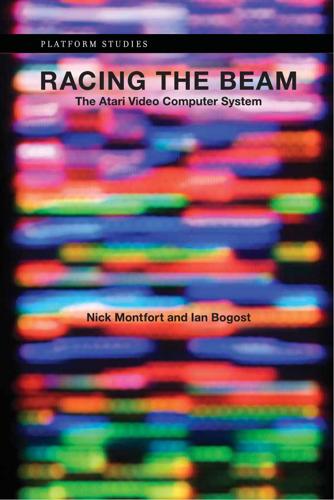
Racing the Beam: The Atari Video Computer System
by
Nick Montfort
and
Ian Bogost
Published 9 Jan 2009
The purchase was motivated primarily by the commercial promise of an extensible home console.17 This 1976 acquisition provided the capital that Atari needed to bring the Atari VCS to market. 1 Stella [11] Design of the Atari VCS The engineers developing the Atari VCS needed to account for two goals— the ability to imitate existing successful games and some amount of versatility—as they designed the circuitry for a special-purpose microcomputer for video games. Material factors certainly influenced the design. At one extreme was the high cost of hardware components. The Channel F was manufactured by Fairchild Semiconductor, and unsurprisingly the system used that company’s Fairchild F8 CPU, a specialty processor created by future Intel founder Robert Noyce. At the other extreme was a lack of flexibility. The Odyssey’s games were implemented directly in diode-transfer logic (DTL) on the console’s circuit board.

Move Fast and Break Things: How Facebook, Google, and Amazon Cornered Culture and Undermined Democracy
by
Jonathan Taplin
Published 17 Apr 2017
If Google were required to license every patent it owns for a nominal fee to any American company that asks for it, it would have to license its search algorithms, Android patents, self-driving car patents, smart-thermostat patents, advertising-exchange patents, Google Maps patents, Google Now patents, virtual-reality patents, and thousands of others. What is clear from the Bell Labs model is that such a solution actually benefits innovation in general. The availability of the Bell Labs transistor patents allowed the rise of Texas Instruments, Fairchild Semiconductor, and Intel. The cellular patents allowed Motorola to grow exponentially—only to be bought by Google for its patents. Bell Labs’ satellite patents created a whole new industry with many players. And we owe the current boom in solar energy to the original Bell Labs solar-cell patents. It would seem that such a licensing program would be totally in line with Google’s stated “Don’t be evil” corporate philosophy and could spawn the birth of many new firms.

Thank You for Being Late: An Optimist's Guide to Thriving in the Age of Accelerations
by
Thomas L. Friedman
Published 22 Nov 2016
A half year later, another engineer, Robert Noyce, came up with his own idea for the integrated circuit—an idea that elegantly solved some of the problems of Kilby’s circuit and made it possible to more seamlessly interconnect all the components on a single chip of silicon. And so the digital revolution was born. Noyce cofounded Fairchild Semiconductor in 1957 (and later Intel) to develop these chips, along with several other engineers, including Gordon E. Moore, who held a doctorate in physical chemistry from the California Institute of Technology and would become director of the research and development laboratories at Fairchild. The company’s great innovation was developing a process to chemically print tiny transistors onto a chip of silicon crystal, making them much easier to scale and more suitable for mass production.
…
Ericsson Eritrea ethics, innovation in; freedom and; leadership and; sustainable values and Ethiopia Ethiopians, in Minnesota Euphrates River Europe: illegal immigration into; wireless networks in European Union; Britain’s exit from evolution; human manipulation of Evolution and Human Behavior Exploratorium exponential change; see also Moore’s law export systems Express, L’ extreme weather “Eye, The” (song) Facebook Facebook Messenger Fadell, Tony Fairchild Semiconductor family planning FAO Food Price Index Fargo (film) Farook, Syed Rizwan Fast Company Faten (Syrian drought refugee) Federal Bureau of Investigation (FBI) Federal Trade Commission Feldon, Barbara Fendrik, Ármin Ferguson, Mo. Ferrucci, David fertility rates fertilizers, overuse of fiber optics FICO scores financial crashes financial flows financial reform financial services: big data and; democratization of Financial Times Fitbit 5G wireless networks Florida, Richard flows: of knowledge; power of; see also financial flows; global flows Fofana, Mohamed Foldit food labeling food prices Foreign Affairs foreign aid; gender equality and; military vs. educational and social Foreign Policy “40 Developmental Assets for Adolescents” fossil fuels fossil record 4G wireless networks Francis I, Pope Franken, Al Franken, Owen Fraser, Don Fredericks, Frank Freedman, Andrew freedom: advances toward; in cyberspace; ethics and; inequality of Freeman, Orville Free Syrian Army free trade agreements Frenzel, Bill freshwater use Friedman, George Friedman, Harold Friedman, Jane Friedman, Margaret Friedman, Shelley Fujitsu Fukuyama, Francis Funda, Ndumie F.
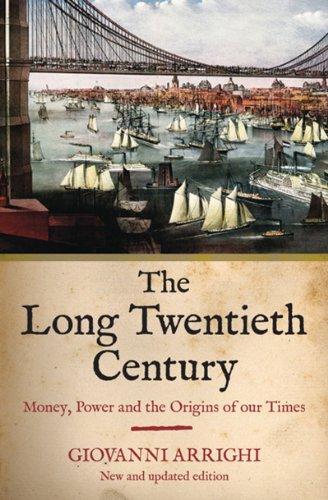
The Long Twentieth Century: Money, Power, and the Origins of Our Times
by
Giovanni Arrighi
Published 15 Mar 2010
But it strongly discouraged that same money from taking over profitable but strategically sensitive enterprises. Thus, in March 1987 protests from the Secretary of Defense, Caspar Weinbergen and Secretary of Commerce, Malcom Baldridge, convinced Fujitsu that it would be prudent to withdraw its attempt to take over the Fairchild Semiconductor Corporation. Yet, as Stephen Krasner (1988: 29) remarked: “Fairchild was owned by the French company Schlumberger, so the issue was not simply one of foreign ownership.” What cultural and political barriers could not stop, the barriers to entry built into the very structure of US corporate capitalism did.
…
See Netherlands and Dutch Dutch crisis (1780-83), 163 East, 23, 79, 206, 256, 357, 360 East Asia: capital accumulation and, 15, 343; capital in, 368, 374; capitalism, 350, 360, 363; China and, 374; economic expansion in, 374, 379, 385; financial crises in, 382; Japan and, 352, 365; labor, 360; regime of accumulation, 363, 365; space-of-flows, 360, 361f; surplus capital in, 368, 381; trajectory of, 344f, 345, 346, 349-50; US and, 380; world surplus in, 368; See also Eurasia; South Asia; Southeast Asia East India Company: activities of, 245, 254-55, 317; charter of, 143; Elizabeth I and, 191, 215; in India, 269, 271 East Indies, 148-49, 156, 158, 254, 255, 259 economic freedom, 251-52, 339-40 economic nationalism, 50, 51 economic regulation, 251-52 economies of speed, 247-48 408 THE LONG TWENTIETH CENTURY Economy and Society (Weber), 13 ECU (European Currency Unit), 328-29 Edward III (king), 103, 108, 198, 214 Edward VI (king), 189 Edwardian era, 176-78, 277, 325 Ehrenberg, Richard, 109, 125, 129 Elizabeth I (queen): chartered companies and, 191, 215; diplomacy of, 190; economy and, 194-96, 21 1; industrial expansion and, 199, 214; investments of, 215; military interventions by, 190-91; pound and, 266; territorial expansion and,190—91 Elliott, John, 118 Elliott, William Y., 289 Emmont, Bill, 19 Empire of Chaos (Amin), 342 Empire or Outposts, 204 EMS (European Monetary System), 328 energy sources, 319, 321-23 Engels, Friedrich, 123 England: alliance of merchant bankers, 211-12; anarchy in, 64; bourgeoisies in, 187-88; capital accumulation in, 374; capitalism in, 12, 192; capitalist class in, 254; as central entrepot of world trade and commerce, 215; chartered companies in, 191, 253-54; eloth industry, 99-100, 101f, 102, 197-98, 200-202, 214; commercial supremacy of, 203, 204, 21316; Dutch and, 21, 138-39, 209, 211, 213; financial expansions in, 374; foreign investments, 192, 197; France and, 99100, 103, 146, 189; Germany and, 17; industrialization in, 187-88, 193, 197, 214-15; liquidity shortage, 108; metal industries, 214; monarchy of, 188-90, 202; monetary stability in, 192; national debt, 211-12, 213, 215, 374; national interest of, 202-3; Portugal and, 203; Scotland and, 189, 202; seapower of, 191; silver coinage in, 100, 101f; supremacy struggles, 48-52; systemic chaos in, 64; territorial expansion, 215; territorialism and, 187-88, 190-91; trade and, 196, 203-4; warfare commercialization in, 109; See also Britain; United Kingdom English Civil War, 203 Enlightenment, 139 Eurasia, 1 1-12, 92, 1 17, 304; See also East Asia; South Asia; Southeast Asia Eurodollar/Eurocurrency market, 84, 308, 310-12, 318-19, 321-22, 323, 329-30 Eurodollars, 324, 334 Europe: armed conflicts in, 43; armies of, 49-50; belle époques, 334-35; cloth industry, 254-55; foreign investments, 312, 314; geographical expansions, 41; high finance, 98-99, 108, 128; interstate monetary cooperation, 305; military expenditures by, 177; power struggles, 41-45; state-making and, 78; trade in, 43; transitions to capitalist power, 1 1-12; warfare in, 185; See also Western Europe European Currency Unit (ECU), 328-29 European Monetary System (EMS), 328 European Union, 75 excessive competition, 357 exchange rates, 308, 310, 318, 320-22, 323, 331 Fairchild Semiconductor Corporation, 18 fairs, 83, 134; See also speezfiefairs Federal Reserve System, US, 69, 72, 280, 287, 326 Fieldhouse, D. K., 256 Figueroa, Suarez de, 84 finance capital, 166-67 finance capitalism, 111, 153-54, 160, 167, 373 financial expansions: 13th-15th centuries, 88, 130, 185, 186, 198, 214, 244; 16th-17th centuries, 130, 197, 198, 214, 244; 18th century, 178, 214, 244; 19th century, 167, 170; 1970s 8C 1980s, 309; in Age of Genoese, 166; Braudel on, 5-6, 7, 96, 166, 373, 374; in Britain, 174; capital accumulation and, 240-41; in capitalist world economy, 214; Dutch, 146, 178; East Asia and, 15; in England, 374; Florence and, 326; Genoa and, 129, 174; in Holland, 374; inter-capitalist competition and, 233-35; interstate competition and, 13; in Italy, 89, 93-94; Japan and, 15; leaders and governors of, 176; logic of, 372-74; networks of, 87; phases, 87, 175, 219-20, 260, 343; processes of, 1-2, 3, 15-16, 153; production and, 228; secular cycles and, 8; social polarization and, 325-26; systemic cycles of accumulation and, 129, 178; trade and, 137, 228, 237, 239-40; in Venice, 374; world economy and, 238-40 financial houses, 170-71 financialization, 325-26, 371 First World, 22, 332, 333-34 Flanders, 100, 102, 198, 217 floating rates, 322 Florence: bourgeoisies in, 186; business enterprises, 117; capital in, 104-5; capitalism in, 12, 112; city states subsystems in, 38; cloth industry, 98-99, 102, 103, 105; financial expansions and, 326; great crash (1340s), 103-4; high INDEX 409 finance, 98-99, 107, 109; House of Medici and, 93; industrialization and, 183-84; as marketplace, 131; monarchical rule in, 105; nation of, 132-33, 134; oligarchical rule in, 105; production and, 185-86; surplus capital in, 113; trading systems of, 89; Tuscany and, 92 Fordism, 2, 3, 4, 6, 373 formal economies, 340 Four Tigers, 344, 349, 358, 360 France: anarchy in, 64; England and, 99-100, 103, 146, 189; mercantilism, 50-51; protection costs, 51; standards of sovereignty in, 78; state-making and, 7879; supremacy struggles, 48-52; systemic chaos in, 64; warfare commercialization, 109; war-making techniques in, 41 Frank, Andre’ Gunder, 8, 1 1 Franklin, Benjamin, 60-61 fraud, 29 free enterprise system, 75, 86 free markets, 265, 339 free trade: 19th century free trade movement, 252-54; in Britain, 72, 169; free-trade imperialism, 54, 55, 59, 64, 65, 67-68, 70; multilateral, 73; unilateral, 272-73; United Kingdom and, 56, 57 French Revolution (1789), 53 Frieden, Jeffry, 334 Fugger, Anton, 127 Fuggers, 125-28 fiioriusciti, 172 Galbraith, John K., 296-98 galore d2’ Fiandm, 150 galore d2’ mercato, 150 galore d2’ trafego, 150 Galiani, Abbé, 182 Gallagher, John, 53-54 Gang of Four, 344, 349, 358, 360 GATT (General Agreement on Trade and Tariffs), 73, 286, 353, 366 General Economic History (Weber), 12 General Motors, 355 Genoa: accumulation strategies, 129; Africa and, 124, 152; Age of Genoese, 128; alienation of, 93; Aragon and, 118-19; bourgeoisies in, 186; business networks, 218; capital in, 125, 226-27, 378; capitalism, 12, 84, 111-12, 114, 115-16,118,125,151-52,153,154, 340; Catalan and, 1 18-19; city states sub-systems in, 38; as city-state, 376; Compagnia delle Indie Orientali, 156; conspicuous consumption in, 139; economic freedom and, 252; fairs, 83; financial expansions, 129, 174; high finance in, 119, 155; Iberian peninsula and, 120, 122-24, 125, 128-29; Liguria and, 112-13; as marketplace, 131; Mediterranean routes of, 121f; mercantile expansion of, 1 13; monetary reform in, 115; nation of, 133; as non-territorial network, 83-84; overaccumulation in, 118; political life in, 114-15; production and, 183, 185; protection costs and, 148-49, 154, 155, 156; regime of accumulation, 149, 151, 153, 154-55, 160, 182, 183, 194, 222, 223-25; rule over European high finance, 128; sea trade in, 91-92; space-of flows, 136f, 217-18; state-making and, 149-50, 152, 153-54; stock markets, 142; surplus capital in, 1 13; system of accumulation, 83; systemic cycles of accumulation, 6-7, 111-29, 148, 153, 175-76; trade, 89, 1 16-18; wars and war-making, 92, 149-50, 152, 153-54; withdrawal from commerce, 6 Genoese-Iberian complex, 194, 213 Germany: banking in, 274; Britain and, 60; business communities in, 262-63, 275-76, 299, 303; capitalism in, 296, 298; England and, 17; Imperial Germany, 273-74, 276-77, 299, 303, 345, 346; industrialization, 62; nation of, 134; Nazi Germany, 66, 283, 346; territorial expansion, 63; territorialism, 61; trajectory of, 343; US and, 60, 295-96; as world power, 62 Gerstacher, Carl A., 83 Gillard, L., 83, 126, 131-32, 134 Gills, Barry, 8, 11 Gilpin, Robert, 74, 308, 316 Glass-Steagall Act (1933), 287 Glorious Revolution (1688), 254 Glyn, Andrew, 307 gold, 330-31 gold, Italian, 134 gold standard, 72, 73, 266, 279, 281, 287, 288, 308 Golden Age of Capitalism, 306-7 Goldstein, Joshua, 7-8 Gordon, David, 9 grain shipments, 135, 136f Gramsci, Antonio, 29-30 Great Depression (1873-96), 167-68, 176, 178, 277, 294, 296, 301 Great Discoveries, 110, 111, 125, 256, 259, 377 Great Mutiny (1857), 169 Great Rebellion (1857), 257 Grenada, 327 Gresham, Thomas, 134, 195, 196-97 410 THE LONG TWENTIETH CENTURY Großbanken, 274 Group of Seven, 342, 350, 365 Group of Ten, 322, 323 Gurr, T.

Valley of Genius: The Uncensored History of Silicon Valley (As Told by the Hackers, Founders, and Freaks Who Made It Boom)
by
Adam Fisher
Published 9 Jul 2018
She was the publisher: the business mind that took the magazine from an idea to an institution. Today she has a new publishing project that aims to do for biology what Wired did for computers: Neo.Life, an online magazine covering the “neo-biological revolution.” Michael Mikel, aka Danger Ranger, has been working in Silicon Valley since the seventies—first for Fairchild Semiconductor, the company that first commercialized the silicon chips for which the Valley is named. In the late eighties Mikel immersed himself in San Francisco’s posthippie, postpunk cyberculture: Burning Man got going because of the efforts of Mikel and a few others back in the late eighties and early nineties.
…
Lou Montulli was a student at the University of Kansas when he first saw NCSA Mosaic, which was the first web browser worthy of the name. He immediately started submitting bug reports and soon after joined Netscape in Silicon Valley. After eighteen months of all-nighters Montulli was a deca-millionaire several times over. Gordon Moore, who in 1965 ran R&D at Fairchild Semiconductor, was bold enough to predict that the number of transistors on a chip would double every year for the next ten years. It did, and then he adjusted what is now known as Moore’s law to predict a doubling once every eighteen months. Astonishingly, that prediction has held true ever since. Eugene Mosier was a computer-literate artist and enthusiastic participant in San Francisco’s early-nineties underground who became Wired magazine’s first production director.

Slouching Towards Utopia: An Economic History of the Twentieth Century
by
J. Bradford Delong
Published 6 Apr 2020
William Shockley, John Bardeen, and Walter Brattain are the three credited with building the first transistor at Bell Telephone Laboratories in 1947. Dawon Kahng and Mohamed Atalla are credited with building the first metal-oxide semiconductor field effect transistor. Jay Last’s group, building on the ideas of Robert Noyce and Jean Hoerni of Fairchild Semiconductor, built the first operational solid-state integrated circuit made up of more than one transistor. By 1964 General Microelectronics was making and selling a 120-transistor integrated circuit. Previous vacuum-tube electronic switching elements were four inches long—one hundred millimeters. Transistors in 1964 were packed one-twenty-fifth of an inch, one millimeter apart: they were one hundred times smaller, enabling ten thousand times as much computation power to be packed into the same space, with orders of magnitude less power consumption.
…
Transistors in 1964 were packed one-twenty-fifth of an inch, one millimeter apart: they were one hundred times smaller, enabling ten thousand times as much computation power to be packed into the same space, with orders of magnitude less power consumption. Gordon Moore, then also working at Fairchild Semiconductor, observed in 1965 that the number of solid-state microelectronic transistors in frontier integrated circuits had grown from one to one hundred in the seven years since 1958. He made a bold and highly speculative prediction that we could look forward to a future of “component-crammed equipment,” projecting that in 1975, which was just ten years away, a one-hundred-square-millimeter silicon chip would hold sixty-five thousand components.
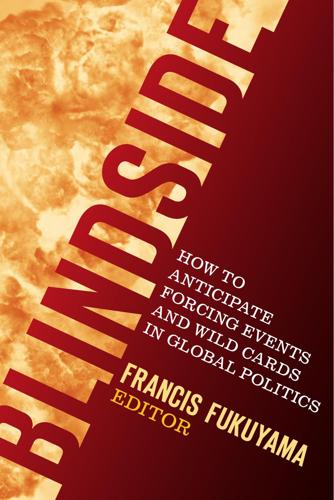
Blindside: How to Anticipate Forcing Events and Wild Cards in Global Politics
by
Francis Fukuyama
Published 27 Aug 2007
These and the following details are from the biography of Loomis by Jennet Conant, Tuxedo Park (New York: Simon and Schuster, 2002). 4. The norms of the Rad Lab’s “great groups” are common to other innovations— both before and after—including the lightbulb at Edison’s Menlo Park “Invention Factory,” the transistor at Bell Labs, the integrated circuit and microchip efforts at Fairchild Semiconductor and Intel, the personal computer at Xerox PARC and Apple, and biotech advances at Genentech and Craig Venter’s genomics projects. Venture capitalists typically try to find groups with similar characteristics. See, generally, Bennis and Biederman, Organizing Genius, pp. 196-218. 5. Vannevar Bush, “Science: The Endless Frontier” (Government Printing Office, 1945), pp. 1–11 (www.nsf.gov/od/lpa/nsf50/vbush1945.htm). 6.

The Economic Singularity: Artificial Intelligence and the Death of Capitalism
by
Calum Chace
Published 17 Jul 2016
The result was Red, the first machine to process more than a trillion floating point operations per second (a teraflop). It remained the world's fastest supercomputer until 2000, but by 2006 that level of processing was available to schoolchildren in the Sony PS3 gaming computer.[cxi] This is Moore's Law at work. Moore's Law In 1965, Gordon Moore was working for Fairchild Semiconductors when he published a paper observing that the number of transistors being placed on a chip was doubling every year. He forecast that this would continue for a decade, which his contemporaries considered extremely adventurous. In 1975 he adjusted the period to two years, and shortly afterwards a Caltech professor named Carver Mead coined the term Moore's Law.
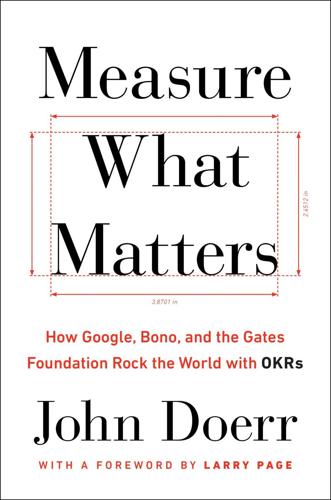
Measure What Matters: How Google, Bono, and the Gates Foundation Rock the World With OKRs
by
John Doerr
Published 23 Apr 2018
Edwards, 113 Dennerline, Doug, 177 Denver Broncos, Orange Crush Defense, 36 n dependability, 97 –101, 215 Deskbar, 145 Dewey, John, 124 directional goals, 37 –38, 128 –29 Disability-Adjusted Life Years (DALY), 128 discipline, 30 , 31 , 130 , 202 –3 Doerr, Ann, 19 , 20 , 31 Doerr, Lou, 31 “done is better than perfect,” 54 n DRAM, 40 Drive (Pink), 117 Drucker, Peter, 24 –25, 26 , 32 , 50 , 88 , 117 , 175 –76, 182 Drummond, Jamie, 237 , 240 EBS (Enterprise Business Solutions), 106 –7, 109 , 110 , 111 , 112 Edge, The, 235 , 244 Edmunds.com, 135 80/90 rule, 131 Einstein, Albert, 176 engagement, 10 , 114 , 186 , 221 Bono’s ONE Campaign story, 242 –43 one-on-ones and, 183 n Zume Pizza story, 204 –6 Enron, 8 –9 entrepreneurs, defined, 134 –35 EPROM, 40 Essence Healthcare, 223 –24, 225 extrinsic rewards, 114 , 276 “factivism” (fact-based activism), 235 failures, 33 –34, 141 , 143 Fairchild Semiconductor, 22 , 32 feedback, 176 , 184 –86, 270 –71, 279 Adobe story, 191 –96 culture and, 216 –17 feedback tools, 185 –86 Fitbit, 90 , 95 , 117 flexibility, 33 , 86 focus, 16 –17, 33 , 47 –57, 274 care of key results, 50 communicating with clarity, 49 –50 less is more, 55 –57 pairing key results, 52 –54 the perfect and the good, 54 –55 Remind story, 58 –68 top-line goals, 48 –49 the what, how, when, 51 –52 Follett, Mary Parker, 24 n Ford, Henry, 24 , 26 Ford Mercury Bobcat, 52 –53 Ford Pinto, 8 , 52 –53 Fortune (magazine), 15 , 102 Freston, Tom, 239 Friedman, Orly, 246 Garden, Alex, 197 –211, 199 Gates, Bill, 13 , 126 –32, 127 , 129 Bono’s ONE Campaign and, 234 , 242 , 243 making goals concrete, 129 –32 personal computer revolution and, 35 –36, 128 –29 Gates, Melinda, 126 , 127 , 128 , 129 , 131 Gates Foundation, 13 , 126 –32, 234 concrete goals, 129 –32 Githongo, John, 240 “Giving of Orders, The” (Follett), 24 n Glasgow, Art, 229 , 231 , 232 , 233 Glassdoor, 217 Global Alliance for Vaccines and Immunization (GAVI), 131 Gmail, 14 , 87 , 138 –39 goal planning and reflection, 183 , 269 “Goals Gone Wild: The Systematic Side Effects of Overprescribing Goal Setting,” 8 –9, 10 GO Corporation, 248 –50 Goel, Vaibhav, 204 –5 Goodrow, Cristos, 154 –71 Good to Great (Collins), 133 –34, 223 Google.

Rebel Ideas: The Power of Diverse Thinking
by
Matthew Syed
Published 9 Sep 2019
The Santa Clara region started to change in 1956 when William Shockley, a physicist and inventor, moved from an unsuccessful stint at Raytheon, a Massachusetts firm with an interest in transistors, to Mountain View, a small town towards the southern end of the peninsula. Over time, this led to a growing concentration of firms in the Valley, including the Fairchild Semiconductor Company. By the 1970s, the Santa Clara Valley had spawned a soubriquet of its own, ‘Silicon Valley’, but it remained very much in the shadow of the Massachusetts miracle. The Boston firms had the classic economic advantages. Land and office space costs were significantly lower, as were the wages and salaries of workers, engineers and managers.42 There were other differences, too.
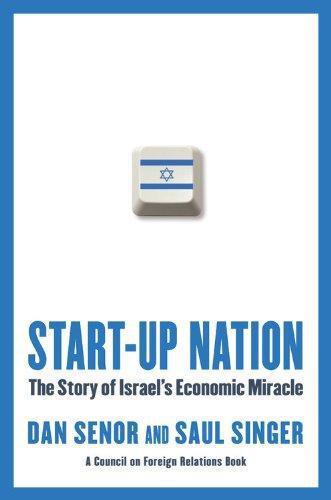
Start-Up Nation: The Story of Israel's Economic Miracle
by
Dan Senor
and
Saul Singer
Published 3 Nov 2009
In 1963, as Dov Frohman was about to graduate from the Technion (Israel Institute of Technology), he decided to pursue graduate studies in the United States in order to “bring a new field of technical expertise back to Israel.” He was admitted to MIT but instead went to the University of California at Berkeley, which offered him a stipend. It was a fortuitous choice. While still a graduate student, Frohman was hired by Andy Grove to work at Fairchild Semiconductor. A few years later, Grove joined Gordon Moore and Robert Noyce to found Intel. Frohman became one of the new start-up’s first employees. He quickly made his mark by inventing what would become one of Intel’s most legendary and profitable products, a new kind of reprogrammable memory chip.
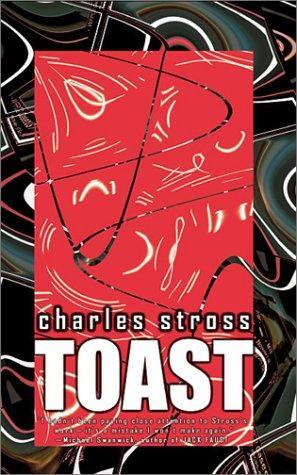
Toast
by
Stross, Charles
Published 1 Jan 2002
Moore’s Law had a far greater effect on the latter third of the 20th century than the lunar landings of the Apollo program (and it was formulated around the same time), but relatively few people know of it. Certainly, back in 1968 nobody (except possibly Gordon Moore) might have expected it to result in the world we see today . . . Gordon Moore was a senior engineer working at a small company near Palo Alto, a spin-off of Fairchild Semiconductor. His new company was in business to produce integrated circuits—lumps of silicon with transistors and resistors etched onto them by photolithography. Moore noticed something interesting about the efficiency of these circuits. Silicon is a semiconductor: it conducts electricity, but has a markedly higher resistivity than a good conductor (like, say, copper).

The Globotics Upheaval: Globalisation, Robotics and the Future of Work
by
Richard Baldwin
Published 10 Jan 2019
A difficult man to work for in the best of circumstances, his behavior became increasingly erratic and autocratic after he won the 1956 Nobel Prize in Physics. Soon after, Moore and seven other young researchers left to form their own company. With seed capital of $500 from each of the eight—and backing from Fairchild Camera and Instrument—Fairchild Semiconductor Corporation was born in 1957. Moore was the R&D director and published his famous law in 1965. After a decade at Fairchild, Moore left to start up Intel Corporation in 1968. That made him a billionaire, and earned him the Presidential Medal of Honor. Moore retired in 1997, but his law kept rolling.
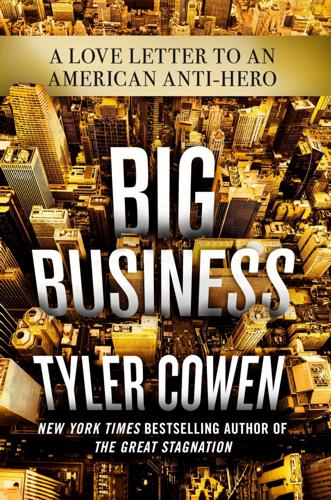
Big Business: A Love Letter to an American Anti-Hero
by
Tyler Cowen
Published 8 Apr 2019
It is only now starting to come into existence in places such as Berlin, Seoul, and Singapore, whereas the United States has had significant venture capital activity since the 1980s, with some of it some going as far back as 1946. Semiconductor firms were benefiting from venture capital as long ago as 1959 (Fairchild Semiconductor), and the early presence of these markets is a major reason Silicon Valley is in the United States and not abroad. The second-largest venture capital market in the world for tech is located in Israel; that a country of about eight million people holds the number-two position is a sign of how backward venture capital remains throughout much of the world and how hard it is to pull off the associated levels of trust and business networking.

The Second Machine Age: Work, Progress, and Prosperity in a Time of Brilliant Technologies
by
Erik Brynjolfsson
and
Andrew McAfee
Published 20 Jan 2014
“The greatest shortcoming of the human race is our inability to understand the exponential function.” —Albert A. Bartlett ALTHOUGH HE’S COFOUNDER OF Intel, a major philanthropist, and recipient of the Presidential Medal of Freedom, Gordon Moore is best known for a prediction he made, almost as an aside, in a 1965 article. Moore, then working at Fairchild Semiconductor, wrote an article for Electronics magazine with the admirably direct title “Cramming More Components onto Integrated Circuits.” At the time, circuits of this type—which combined many different kinds of electrical components onto a single chip made primarily of silicon—were less than a decade old, but Moore saw their potential.

Insane Mode: How Elon Musk's Tesla Sparked an Electric Revolution to End the Age of Oil
by
Hamish McKenzie
Published 30 Sep 2017
Similarly, he was convinced that Tesla sat at the center of an opportunity that was bigger than the Internet. It is impossible to believe that he would be content for Tesla to meet a PayPal-like outcome. Tesla replaced Marks in December 2007 with Ze’ev Drori, an experienced operations-focused executive. Drori’s career had taken him from the Israeli military to IBM to Fairchild Semiconductor before he founded his own semiconductor company, Monolithic Memories, which went public in 1980 and merged with Advanced Micro Devices in 1987. Drori later took a controlling interest in (and became president of) Clifford Electronics, a car alarm manufacturer, before selling it to Allstate Insurance in 1999.
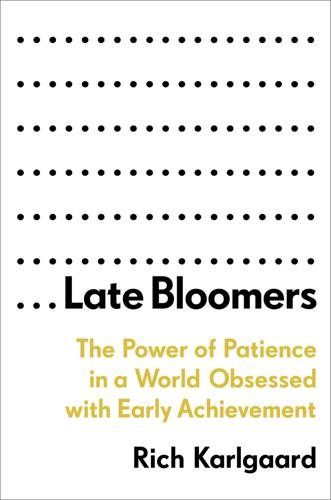
Late Bloomers: The Power of Patience in a World Obsessed With Early Achievement
by
Rich Karlgaard
Published 15 Apr 2019
Arriving in New York at twenty without money or connections, he aced his classes at the City College of New York (CCNY then had free tuition) and won a scholarship to study chemical engineering at the University of California at Berkeley. Grove quickly distinguished himself and caught the eye of a Berkeley grad and famous Silicon Valley technologist, Gordon Moore, who offered him a job at Fairchild Semiconductor. In 1968 Moore and his colleague Robert Noyce left Fairchild to start Intel, and they took young Andy Grove with them as Intel’s employee number three. Throughout the 1970s, Intel made most of its revenue and nearly all its profits selling memory chips. In 1971 it released a promising new product, the microprocessor, but as revolutionary as it was, its financial contribution to Intel’s bottom line throughout the 1970s was small.
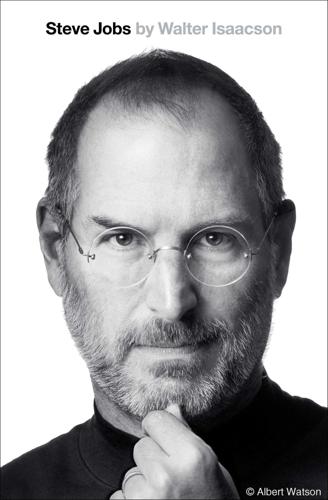
Steve Jobs
by
Walter Isaacson
Published 23 Oct 2011
William Shockley, who had been one of the inventors of the transistor at Bell Labs in New Jersey, moved out to Mountain View and, in 1956, started a company to build transistors using silicon rather than the more expensive germanium that was then commonly used. But Shockley became increasingly erratic and abandoned his silicon transistor project, which led eight of his engineers—most notably Robert Noyce and Gordon Moore—to break away to form Fairchild Semiconductor. That company grew to twelve thousand employees, but it fragmented in 1968, when Noyce lost a power struggle to become CEO. He took Gordon Moore and founded a company that they called Integrated Electronics Corporation, which they soon smartly abbreviated to Intel. Their third employee was Andrew Grove, who later would grow the company by shifting its focus from memory chips to microprocessors.
…
S., 98 Elliot, Jay, 83, 197, 200–201, 206 Ellison, Larry, xiv, 283, 289–90, 296, 299–300, 303, 306, 310, 311, 313, 320, 332, 333, 349, 365, 372, 374, 545 Emanuel, Rahm, 495, 497 EMI Music, 395, 420, 524 Eminem, 399, 402, 413 Emotional Rescue (Rolling Stones), 412 Empire Burlesque (Dylan), 207–8, 412 Engelbart, Doug, 57–58 ENIAC, 23 Entrepreneurs, The (documentary), 227 Esalen, 57 eSarcasm (website), 517 Espinosa, Chris, 81, 104, 132, 135 Esquire, 27, 219, 396, 478 Esslinger, Hartmut, 132, 193, 221, 222, 241 est, 57 Estridge, Don, 149 Evangelist, Mike, 381–82 Facebook, 275, 545 Fadell, Tony, xiv, 385–89, 405, 409–10, 466–69, 473, 492, 520 Fairchild Semiconductor, 9–10, 76, 79, 82, 568 FairPlay (management system), 399, 408 Faith No More, 498 Faraday, Michael, 519 Farber, Dan, 137 Fariña, Mimi, 250 Feadship, 529 Federal Bureau of Investigation (FBI), 241 Federalist Papers, The, 497 Felsenstein, Lee, 61, 70 Fernandez, Bill, 25, 104 Ferrentino, Rick, 12–13 Ferris, James, 128 Few Good Men, A (film), 456 Feynman, Richard, 330 File (app), 176 FileServer (software), 200, 205 Final Cut Pro, 380 Financial Times, 304, 309 Finding Nemo (film), 434 Fine Young Cannibals, 271 FingerWorks, 469 Fiore, Mark, 516 FireWire, 380–81, 390, 393 Fisher, George M.

On the Edge: The Art of Risking Everything
by
Nate Silver
Published 12 Aug 2024
An ambitious young scientist might work long hours at a leading-edge company for a comfortable upper-middle-class salary—but not for equity in the company or anywhere near the value he was generating for his bosses. Eventually, eight of Shockley’s engineers quit. The so-called Traitorous Eight joined a rival firm named Fairchild Semiconductor, which had been founded by the businessman Sherman Fairchild and an early pioneer of “adventure capital,” Arthur Rock. They got substantial raises and, more importantly, one hundred shares each in the business. But soon there was another betrayal of sorts. In 1959, Fairchild exercised an option to buy out the engineers’ equity.
…
The term is sometimes also used in classical statistics, such as for the process of choosing the parameters in a regression analysis, but techniques like these involve far more human intervention than machine learning. Traitorous Eight: Eight engineers who quit Shockley Semiconductor in 1957 to found a rival firm, Fairchild Semiconductor—a pivot point in Silicon Valley for initiating a legacy of entrepreneurship among technical professionals. Transformer (AI): An architecture employed in large language models to transform text inputs by the user into vector mathematics and back again. Transformers operate by parsing all tokens in the user query simultaneously rather than sequentially, looking for complex semantic relationships.

Heart of the Machine: Our Future in a World of Artificial Emotional Intelligence
by
Richard Yonck
Published 7 Mar 2017
Nevertheless, for all the challenges it faced, the quest for artificial intelligence did have one major ace up its sleeve, one which many people weren’t aware of early on: Moore’s law. Many things have driven the ongoing development of computer technology, but without a doubt, one of the single greatest drivers has been the trend we’ve come to know as Moore’s law. Coined approximately five years after a 1965 article by Gordon Moore, then director of R&D at Fairchild Semiconductor, this eponymous observation describes one of technology’s most important trends. In his article, Moore presented a plot of four data points that identified a regular doubling of the number of electronic components that could fit on an integrated circuit. This pattern repeated year after year from 1962 to 1965.
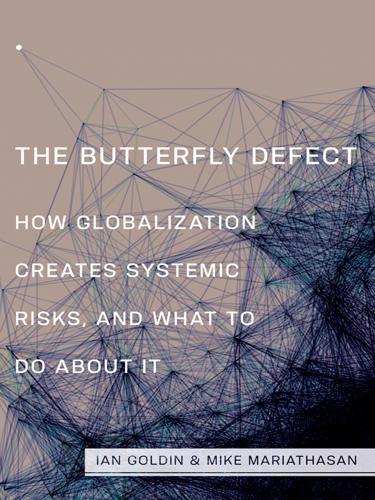
The Butterfly Defect: How Globalization Creates Systemic Risks, and What to Do About It
by
Ian Goldin
and
Mike Mariathasan
Published 15 Mar 2014
Cosmosupplylab Ltd. CymMetrik (Shenzhen) Printing Co. Cyntec Co. Ltd. Cypress Semiconductor Corporation Daishinku Corporation (KDS) Darfon Electronics Corporation Delta Electronics Inc. Diodes Inc. Dynapack International Technology Elpida Memory Inc. Emerson Electric Co. ES Power Co. Ltd. Fairchild Semiconductor International Fastening Technology Pte Ltd. FLEXium Interconnect Inc. Flextronics International Ltd. Fortune Grand Enterprise Co. Ltd. Foster Electric Co. Ltd. Fuji Crystal Manufactory Ltd. Fujikura Ltd. Grand Upright Technology Ltd. Gruppo Dani S.p.A. Gruppo Peretti Hama Naka Shoukin Industry Co.
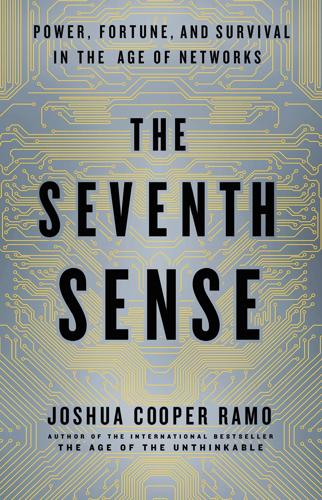
The Seventh Sense: Power, Fortune, and Survival in the Age of Networks
by
Joshua Cooper Ramo
Published 16 May 2016
It took Genoa years to build an expeditionary force to gut Venice’s designs in the Adriatic Sea. Decades passed as Germany assembled her naval fleet in the last century. But today, network systems rise and fall with astonishing speed. Once-successful firms in technology, companies such as Wang and Fairchild Semiconductor and Myspace, found themselves unseated in months, after years of growth. New firms can emerge from nowhere and demolish once-strong names. “Change or die,” the old computer programmer’s line, runs on a very fast clock in a world of constant innovation. This mantra applies to nations and ideologies, to your habits and mine.
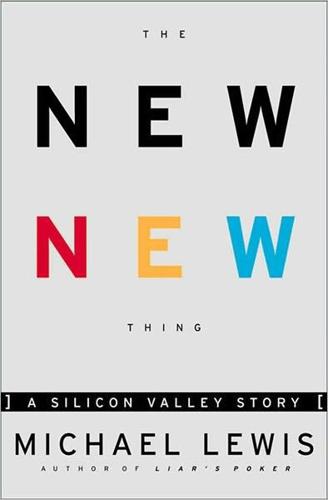
The New New Thing: A Silicon Valley Story
by
Michael Lewis
Published 29 Sep 1999
"In 1955, I attempted to start a transistor business in California," a Nobel Prize winner, the co-inventor of the transistor, William Shockley, told a U.S. congressional subcommittee in the late 1960s. "One of my motivations was that I had come to the conclusion that the most creative people were not adequately rewarded as the employees of industry." The engineers Shockley talked into moving to the Valley and joining his company soon quit in a dispute with Shockley and created Fairchild Semiconductor; from there several moved on to create Intel; and from Intel an industry was born. Intel invented the microprocessor; the microprocessor made possible the boom in personal computing; the personal computer boom led inexorably to the Internet boom; where the Internet boom might lead nobody knew, though if Clark had his way, and history continued its trend, it would be bigger than the Internet.
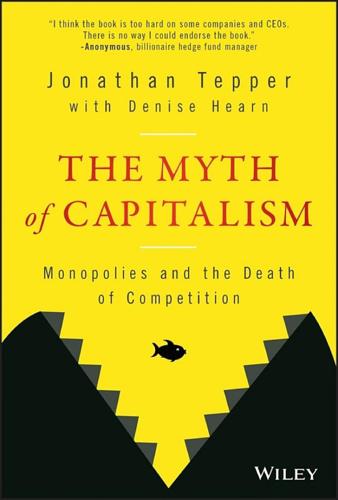
The Myth of Capitalism: Monopolies and the Death of Competition
by
Jonathan Tepper
Published 20 Nov 2018
Within a year of joining Shockley, the new hires sat around a breakfast table at the Clift Hotel to plot their escape. Although they were America's most brilliant scientists and engineers, they were distinctly unhappy working for Shockley. In a brazen display of disloyalty, they decided to leave and found a new company: Fairchild Semiconductor. Later dubbed the “Traitorous Eight,” they signed dollar bills in place of formal contracts – a symbol of nonconformity. Many consider this act of employee treachery as the definitive moment of Silicon Valley's creation, though the term would take another 10 years to enter the public lexicon.

Growth: From Microorganisms to Megacities
by
Vaclav Smil
Published 23 Sep 2019
Texas Instruments began to sell the first silicon transistors in 1954, but early performance gains in solid-state electronics remained relatively slow before the invention of integrated circuits in 1958 and 1959 by Jack Kilby at Texas Instruments and Robert Noyce at Fairchild Semiconductor, and their limited commercialization in the early 1960s. In 1965 the number of transistors on a most complex microchip rose to 64 after doubling every 18 months since 1959. In 1965 Gordon Moore, who was at that time the director of research at Fairchild Semiconductor, made one of the boldest and ultimately also one of the most far-reaching and most consequential forecasts in modern technical history. In a short paper in Electronics he concluded, not surprisingly, that “the future of integrated electronics is the future of electronics itself,” and he predicted that “certainly over the short term this rate can be expected to continue” (Moore 1965, 114).

All Your Base Are Belong to Us: How Fifty Years of Video Games Conquered Pop Culture
by
Harold Goldberg
Published 5 Apr 2011
Enter Don Valentine, a dour, plaid shirt–wearing venture capitalist who looked like an all-American astronaut. The smart, slow-speaking Valentine had short hair, a no-nonsense attitude, and always chose his words carefully. By 1967, Valentine was already something of a legend in the Silicon Valley, having cofounded National Semiconductor after a successful career in marketing at Fairchild Semiconductor. The 1972 start-up of Capital Management (today called Sequoia Capital) allowed Valentine, an inquisitive man who had many interests, to branch out beyond the magic material that is used for microprocessor chips and transistors. The company’s tagline said it all: “The entrepreneurs behind the entrepreneurs.”

Brotopia: Breaking Up the Boys' Club of Silicon Valley
by
Emily Chang
Published 6 Feb 2018
Then, in the 1970s, it became clear that there were great fortunes to be made in the emerging field of technology, and an entire subindustry of tech-focused venture capital firms was spawned. Sequoia Capital and Kleiner Perkins Caufield & Byers set up shop in 1972, just a year after the microprocessor was born. These firms were all-male—with many partners who were former employees of chip companies such as Intel and Fairchild Semiconductor—but as women became full participants in the post-1970s workforce, they started seeking a place for themselves at this rich table. Few of them found one. By 1999, women accounted for just 10 percent of partners at venture capital firms, and that number actually declined over the next fifteen years, to 6 percent in 2014.
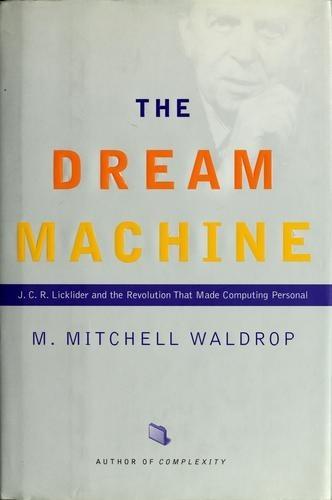
The Dream Machine: J.C.R. Licklider and the Revolution That Made Computing Personal
by
M. Mitchell Waldrop
Published 14 Apr 2001
Worse, he in- sisted on placing his bets on germanium, a semiconductor that had more than LIVING IN THE FUTURE 339 its share of technical problems. So in 1957, having had their fill of Shockley, and convinced that they could do far better working with a more tractable material, silicon, eight of his brightest young associates left to form a company of their own: Fairchild Semiconductor. They were right. Fairchild didn't invent the integrated circuit itself; that honor goes to Jack Kilby of Texas Instruments, who demonstrated his first de- vice in Dallas on September 19, 1958. But less than a year later, in mid-1959, Fairchild cofounder Robert Noyce did devise a way to mass-produce integrated circuits by etching thousands of transistors simultaneously onto the surface of a single silicon wafer.
…
Presper, 45-47,59,61, 62,63,87 Eckert- Mauchly Corporation, 63, 101, 115 EDV AC, see ElectronIc Discrete Vanable Automatic Com- puter Egan, James P., 67 Eglm Army Air Force base, 16 Eldophor display, 289, 290, 291 eight-bit standard, 246-47 Emstem, Albert, 85, 91 Eisenhower, Dwight D., 197-98 electncal engmeenng, 82 Electncal Engmeermg, 113 electnc power networks, 25-26 electroencephalography (EEG), 11-12 electronIc commons Idea, 413-14,420 ElectronIc Discrete Vanable Automatic Computer (EDVAC),47, 100-101 von Neumann's report on, 59-65 Electronic News, 338 ElectronIc Numencal Integrator and Calculator (EN lAC), 43,45-47,87-88, 101, 102, 103,339 drawbacks of, 46-47 patent dispute over, 63 programmmg of, 46-47 electronIc office Idea, 363-64, 407 ElIas, Peter, 220 ELIZA, 229 Elkmd, Jerry, 110, 111, 152, 175-76, 194, 295, 345, 351, 354,368,371,399,438,444, 446,447 Ellenby, John, 382, 408 EllIs, Jim, 427 E-maIl, 231, 324-26, 384, 420, 465 Engelbart, Douglas, 210-17, 241-43,255,261,273,278, 285, 342, 358, 360n, 364, 406,465,470 at Fall JOInt Computer Confer- ence,5,287-94 EnglIsh, BIll, 242, 243, 289-90, 293-94,354,355,361-62, 365n,366,368 EN lAC, see ElectroniC Numeflcal Integrator and Calculator EnIgma machines, 80 entropy, 81 error-checking codes, 271 error-correcting codes, 79-80, 94n Ethernet, 5, 374-75, 382, 385, 386,439-40,452 Ethernet-AI to- RCG-S LOT (EARS), 385 EuclId, 137 Evans, David, 239, 261, 274, 282, 303, 343, 357, 358 Everett, Robert, 102-3, 108 expectation, 10 behavIOral theory, 74, 97 expert systems, 397-98, 406 ExtrapolatIOn, InterpolatlOn, and Smoothmg of StatIOnary Time Series (Wiener), 54 facsimile machines, 347-48 Fahlman, Scott, 438 FairchIld Semiconductor, 339 Fall JOInt Computer Conference, 5,287-94 Fano, Robert, 19, 75, 94-95, 107, 174,193,217-24,227-36, 243,244,249-51,252-53, 257, 281, 307, 310, 317, 453 FantasIa, 338 Farley, Belmont, 144 fault-tolerant systems, 234 Federal Research Internet Coor- dlnatmg Committee (FRICC), 462 feedback, 55-57, 92, 138 Feigenbaum, Edward, 210, 281, 396,397-98,403,405-6 Fiala, Ed, 346 file systems, hierarchical, 230 FIle Transfer Protocol (FTP), 301 firewalls, 234 "First Draft of a Report on the EDV AC" (von Neumann), 59-65,68,86,102 flat-panel displays, 359 Flegal, Bob, 345 FLEX machine, 358, 359, 361 Flexownter, 166, 188 flight simulators, 101-2 floppy disks, CP/M software and, 434 Ford Motor Company, 334, 335, 336, 337, 389 Forrester, Jay, 102-3, 113, 114-15, 117, 173,230-31 Fortran, 165, 168, 169, 171-72, 246 Fortune, 27, 93 Fossum, Bob, 418, 420 Foster, John, 278, 279, 330 Frankston, Bob, 315 Fredkin, Edward, 152-56, 179, 194,208,313-14,323,412 Freeman, Greydon, 457 Freyman, Monsieur, 83 FRICC (Federal Research Inter- net Coordlnatmg Commit- tee), 462 Fnck, Fredenck, 97, 128, 201-2, 203n Fublni, Gene, 202 Fuchs, Ira, 457 FUJI Xerox, 409 Fumblmg the Future (Smith and Alexander), 382n, 446 functions, 10 lIst processing, 169-70 Galanter, Eugene, 139 Galley, Stuart, 319-20 games, computer, 188, 320, 435 game theory, 85-86, 91 Garner, W.
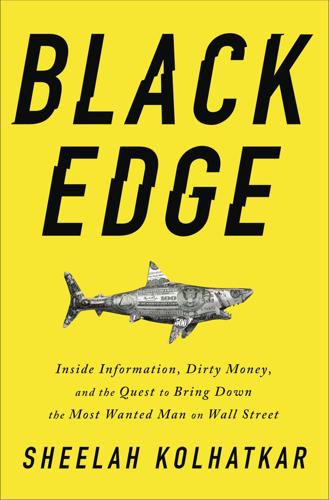
Black Edge: Inside Information, Dirty Money, and the Quest to Bring Down the Most Wanted Man on Wall Street
by
Sheelah Kolhatkar
Published 7 Feb 2017
Freeman had agreed to talk to them, but the prosecutors weren’t sure what to expect. Kang first asked about Freeman’s background, writing down the name of Freeman’s wife and the various analysts he’d worked with at his different jobs. Then Freeman started describing his sources, at companies like Cisco Systems, Fairchild Semiconductor, and Broadcom, and the information he got from each and how he took pains to store it safely. He had barely hesitated before implicating Longueuil, his best friend, in all of it. Freeman recounted how he and Longueuil, whom Freeman had nicknamed “Long Dong,” collaborated to get nonpublic information and shared it with each other when they were at SAC.
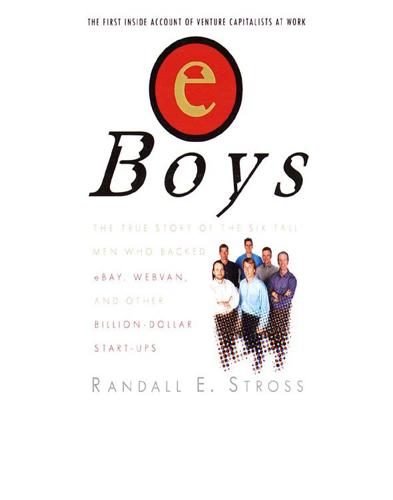
eBoys
by
Randall E. Stross
Published 30 Oct 2008
IVP’s Reid Dennis used his time to take up where Bob Kagle had left off and scold: “There are very few of us who have a concept of philanthropy, and it does the country a great disservice.” The champion curmudgeon was Don Valentine, who founded Sequoia Capital in 1972, the entertainingly irascible figure from the old days when high-tech revolved around the chip industry (Valentine had been one of the fair-children at Fairchild Semiconductor and a founder at National Semiconductor). Valentine was a bulky person, with a gravelly voice and a disinclination to smile. Politesse was not in his repertoire; once when an interviewer asked him about mistakes he had committed in his venture capital career, Valentine attributed most of the blame to “horrible” CEOs, a couple of whom he volunteered “to put into a cell with Charlie Manson for a couple of years.”

System Error: Where Big Tech Went Wrong and How We Can Reboot
by
Rob Reich
,
Mehran Sahami
and
Jeremy M. Weinstein
Published 6 Sep 2021
Sand Hill Road, just up the hill from Stanford, is ground zero for some of the most storied names in venture capital, with billions of dollars at the ready to invest in the next world-changing idea of a twenty-two-year-old down the hill. Though “venture capital” might evoke the stuffy world of finance, the venture industry fueling Silicon Valley has a decidedly technical mindset. Eugene Kleiner, a cofounder of the legendary venture capital firm Kleiner Perkins, was an engineer by training, who after cofounding Fairchild Semiconductor in the 1950s went on to be an early investor in Intel. John Doerr, now the chairman of Kleiner Perkins and an early investor in Amazon, Google, and Netscape, holds degrees in electrical engineering and began his career at Intel. A key figure in the formation of the dot-com bubble of the late 1990s, Doerr claimed that “we witnessed (and benefited from) the largest legal creation of wealth on the planet.”
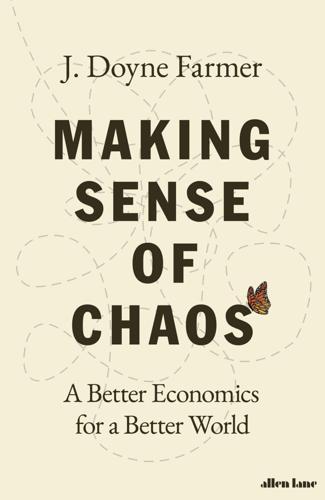
Making Sense of Chaos: A Better Economics for a Better World
by
J. Doyne Farmer
Published 24 Apr 2024
Hospitals made negative progress, at least in terms of the cost to society, while televisions made rapid progress.5 Furthermore, the rates of change are persistent: If we had observed these trends for the first ten years, we could have made a good prediction for the next ten. Figure 16. Differences in the price of some goods in the US from 1998–2018. Moore’s Law is perhaps the best-known method of predicting technological improvement. In 1965, Gordon Moore, Director of R&D at Fairchild Semiconductor, noted that the density of components in integrated circuits doubled roughly once a year and predicted that this trend would continue for at least ten more years.6 In 1975, he revised his prediction to a doubling in density every two years. Roughly fifty years later, his prediction has proved remarkably accurate.

Tripping on Utopia: Margaret Mead, the Cold War, and the Troubled Birth of Psychedelic Science
by
Benjamin Breen
Published 16 Jan 2024
He apparently perceived the man’s comment as a condescending jab. True, Palo Alto was no longer the sleepy farm town it had been before World War II. Alongside neighboring Mountain View and Menlo Park (where Bateson lived), the region now hosted fast-growing tech start-ups such as the Ampex Corporation, Shockley Transistor Corporation, and Fairchild Semiconductor. Nevertheless, when viewed from the New York City metro area, Bateson’s life in the foothills an hour south of San Francisco may have been hard to fathom. What are you doing in California, working at a mental hospital in the suburbs? the man may as well have asked. But things were changing quickly.

Machines of Loving Grace: The Quest for Common Ground Between Humans and Robots
by
John Markoff
Published 24 Aug 2015
Tenenbaum had an early and broad vision about the future of electronic commerce, preceding the World Wide Web. In 1992 he founded Enterprise Integration Technologies (EIT), a pioneer in commercial Internet commerce transactions, at a time when the idea of “electronic commerce” was still largely unknown. From an office near the site where the Valley’s first chipmaker, Fairchild Semiconductor, once stood, Tenenbaum sketched out a model of “friction free” electronic commerce. He foresaw a Lego-style automated economy in which entire industries would be woven together by computer networks and software systems that automated the interchange of goods and services. Gruber’s ontology work was an obvious match for Tenenbaum’s commerce system because it was a system that required using a common language to connect disparate parts.

Code: The Hidden Language of Computer Hardware and Software
by
Charles Petzold
Published 28 Sep 1999
Without knowing about the Dummer prediction, in July 1958 it occurred to Jack Kilby (born 1923) of Texas Instruments that multiple transistors as well as resistors and other electrical components could be made from a single piece of silicon. Six months later, in January 1959, basically the same idea occurred to Robert Noyce (1927–1990). Noyce had originally worked for Shockley Semiconductor Laboratories, but in 1957 he and seven other scientists had left and started Fairchild Semiconductor Corporation. In the history of technology, simultaneous invention is more common than one might suspect. Although Kilby had invented the device six months before Noyce, and Texas Instruments had applied for a patent before Fairchild, Noyce was issued a patent first. Legal battles ensued, and only after a decade were they finally settled to everyone's satisfaction.
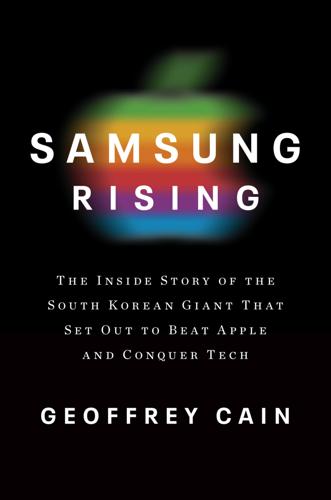
Samsung Rising: The Inside Story of the South Korean Giant That Set Out to Beat Apple and Conquer Tech
by
Geoffrey Cain
Published 15 Mar 2020
The semiconductor industry, notoriously unstable, required huge investments and years to recoup one’s money, and it would force Samsung to grapple with chaotic price fluctuations. Success in semiconductors required a grand vision and long-term direction. The industry leaders, especially the Japanese, had a remarkable ability to compete with, and even best, Intel and Fairchild Semiconductor, thanks to long-term government backing. Samsung would be a distant third mover in the market. “The company made semiconductors only in name,” B.C.’s third son, Lee Kun-hee, wrote later. “The reality was that they were essentially able to make little more than transistors,” the basic parts used in microprocessors for calculators and computers, but with little added value of their own.

What Technology Wants
by
Kevin Kelly
Published 14 Jul 2010
Engelbart imagined how the benefits of scaling down, or as he called it, “similitude,” might transfer to a new invention SRI was tracking—multiple transistors on one integrated silicon chip. Perhaps as they were made smaller, circuits might deliver a similar kind of magical similitude: the smaller a chip, the better. Engelbart presented his ideas on similitude to an audience of engineers at the 1960 Solid State Circuits Conference that included Gordon Moore, a researcher at Fairchild Semiconductor, a start-up making the integrated chips. In the following years Moore began tracking the actual statistics of the earliest prototype chips. By 1964 he had enough data points to extrapolate the slope of the curve so far. Moore kept adding data points as the semiconductor industry grew. He was tracking all kinds of parameters—number of transistors made, cost per transistor, number of pins, logic speed, and components per wafer.

Culture and Prosperity: The Truth About Markets - Why Some Nations Are Rich but Most Remain Poor
by
John Kay
Published 24 May 2004
Bell Labs had a stunning record of technological innovation; but its owners, American Telephone and Telegraph, had agreed to an antitrust settlement a decade earlier that prevented them deriving any competitive advantage from discoveries at Bell Labs. Development of the transistor proved rewarding for Sony, and for Shockley and the company he established-Fairchild Semiconductor-but not for AT&T. 8 AT&T was broken up in a further antitrust settlement in 1982, and later the company spun off Bell Labs into an independent company, Lucent Technologies, 9 which has struggled to achieve commercial success. Who Paid for Big Knowledge? • • • • • • • • • • • • @®®®®®®@®®®lt®@@®®®ltlt®lt®®® My sample of major twentieth-century innovations is small, and controversial.

Fire in the Valley: The Birth and Death of the Personal Computer
by
Michael Swaine
and
Paul Freiberger
Published 19 Oct 2014
One very early start-up company was Shockley Semiconductor, which William Shockley founded in 1955 in his hometown of Palo Alto. Shockley’s firm employed many of the world’s best semiconductor people. Some of those folks didn’t stay with the company for long. Shockley Semiconductor spawned Fairchild Semiconductor, and Silicon Valley grew from this root. * * * Figure 10. Gordon Moore and Robert Noyce Gordon Moore (left) and Robert Noyce founded Intel, which became the computer industry’s semiconductor powerhouse. (Courtesy of Intel) A decade after Fairchild was formed, virtually every semiconductor company in existence could boast a large number of former Fairchild employees.

Crypto: How the Code Rebels Beat the Government Saving Privacy in the Digital Age
by
Steven Levy
Published 15 Jan 2002
With a real investment and control of its intellectual property, it was time to begin behaving like a business, creating and selling uncrackable cryptographic tools to anyone with a computer. With the remainder of Kelly’s investment, they set up an office in Silicon Valley and hired a professional manager to run the company. His name was Ralph Bennett. He had an impressive résumé—he’d worked at respectable companies like Fairchild Semiconductors—and from the point of view of the MIT professors, this fifty-something businessman seemed as good as anyone else around. With Bennett’s help, the company began gathering a workforce, including a sharp young marketer named Bart O’Brien. Even to an academic like Len Adleman, O’Brien, who had worked for a Florida high-tech company called Paradyne, was impressive.

Make Your Own Job: How the Entrepreneurial Work Ethic Exhausted America
by
Erik Baker
Published 13 Jan 2025
By fully embracing the principles of ad-hocracy, Toffler predicted, these industries could usher in “a resurgence of entrepreneurialism within the heart of large organizations.”29 The most renowned of the new adhocratic tech firms was Intel, founded near Jobs’s childhood home in Mountain View by alums of the region’s first two transistor manufacturers, Shockley Semiconductor Laboratory and Fairchild Semiconductor. Blaming the vestiges of bureaucratic hierarchy in those firms for their inability to retain talent, Intel executive Robert Noyce sought to organize his managerial ranks along ostensibly more democratic lines. Everyone in the Intel office worked in the same large room, without walls or cubicles between desks.

An Empire of Wealth: Rise of American Economy Power 1607-2000
by
John Steele Gordon
Published 12 Oct 2009
As long as these connections had to be made, essentially, by hand, the cost of building more powerful computers escalated far faster than did their power. The solution to this problem was the integrated circuit, first developed in 1959 by Jack Kilby of Texas Instruments and Robert Noyce of Fairchild Semiconductor. An integrated circuit is simply a series of interconnected transistors laid down on a thin slice of silicon by machine. In other words, the transistors and the connections between them are manufactured at the same time. In 1971 Intel produced the first commercial microprocessor, which is nothing less than a very small computer laid down on a silicon chip.
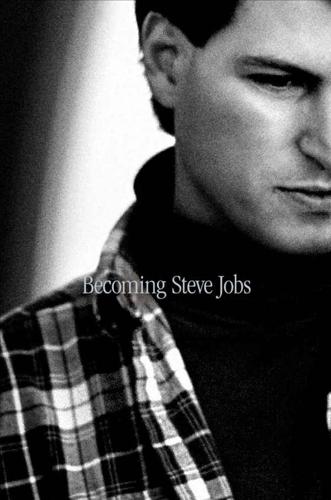
Becoming Steve Jobs: The Evolution of a Reckless Upstart Into a Visionary Leader
by
Brent Schlender
and
Rick Tetzeli
Published 24 Mar 2015
So he and Nolan Bushnell, Jobs’s old boss at Atari, steered Steve to Don Valentine, a founding partner of Sequoia Capital, one of the first venture capital firms to master the art of early-stage investing in high-tech companies. Valentine came from the chip world. He had worked with the founders of Intel before they abandoned Fairchild Semiconductor to open their own shop, and he had once held a senior position at National Semiconductor. He met with the boys only because McKenna was a friend, and quite literally held his nose to hear Steve and Woz out. After their visit, he called McKenna to ask, “Why’d you send me these renegades from the human race?”

More: The 10,000-Year Rise of the World Economy
by
Philip Coggan
Published 6 Feb 2020
The first breakthrough in shrinking the computer came in 1947 with the invention, at Bell Laboratories, of the transistor, which was smaller, faster and generated less heat than the vacuum tube. William Shockley, one of the developers of the transistor, left to form his own company. In turn, after personality clashes, eight employees of Shockley’s company departed to found Fairchild Semiconductor. In 1959, Jack Kilby and Bob Noyce of Fairchild developed the microchip, which could be made with silicon or another material that acted as a semiconductor. On the chip was an integrated circuit, consisting of tiny transistors, resistors and capacitors.9 In 1965, Gordon Moore, another Fairchild employee, wrote a famous paper, stating that, by shrinking transistors, engineers would be able to double the number that fit on a chip every year.
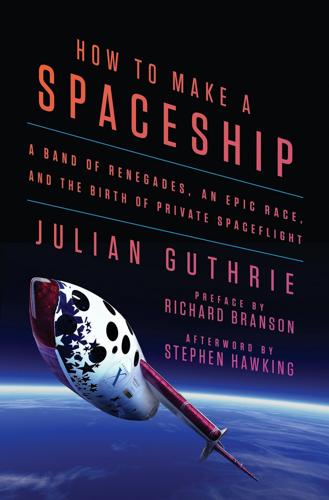
How to Make a Spaceship: A Band of Renegades, an Epic Race, and the Birth of Private Spaceflight
by
Julian Guthrie
Published 19 Sep 2016
Created in the nineteenth century by MIT founder William Barton Rogers, the department had among its faculty and graduates a dazzling array of Nobel Prize winners and some of the field’s greatest minds, from Richard Feynman (quantum electrodynamics), Murray Gell-Mann (elementary particles), Samuel Ting and Burton Richter (subatomic particles), to Robert Noyce (Fairchild Semiconductor, Intel), Bill Shockley (field-effect transistors), George Smoot (cosmic microwave background radiation), and Philip Morrison (Manhattan Project, science educator). Physics classes at MIT had been flooded with students in the years following the launch of Sputnik and the success of Apollo.
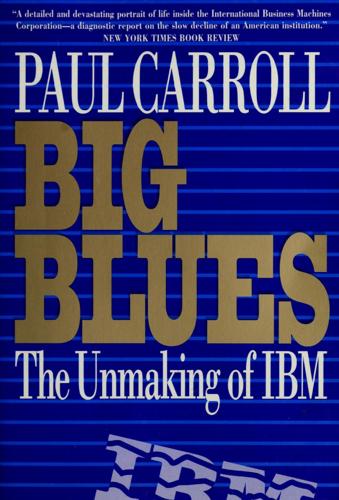
Big Blues: The Unmaking of IBM
by
Paul Carroll
Published 19 Sep 1994
INDEX Akers, John F„ 19, 67, 82, 84, 111-12, 113, 138, 153-68, 171, 178, 179, 200, 207, 208-9, 210, 217-18, 220-22, 223, 224, 225, 228, 229, 231, 240, 242-45, 246, 249, 259-60, 261, 262-71, 272, 273, 274-75, 276, 288-90, 298301, 301, 304, 305-6, 309, 318, 325-29, 332, 336-39, 340-42, 349, 351, 355, 357, 360, 366, 367, 370 resignation of, 345-47 Albert, Sam, 81-82, 363 Allen, Paul, 11-12, 13, 14, 23-24 Alsop, Stewart, 82 Altair computer, 11-12, 14, 128 Amdahl Company, 218-19, 220, 221, 326 American Express, 351-52, 354 American Management Systems, 224 Apollo Computer, 152, 182-83, 203, 204, 205, 206 Apple Computer, 1, 4, 5, 19, 22, 23, 31, 32, 36, 39, 40, 60, 78-79, 86-87, 115, 122, 128, 148, 293-98, 303, 324, 333, 350, 363 IBM/Apple joint ventures (Taligent & Kaleida), 293-98, 309-16, 369, 370 Armstrong, Mike, 83-85, 95-96, 97, 104-5, 11416, 121, 123, 136, 142, 272, 274, 275-76 AST Research, 148, 149 Atari Company, 1,19 AT&T, 4, 61, 183 Audino, Tony, 288 Ballasone, Jim, 363 Ballmer, Steve, 9, 14-17, 23, 32, 33, 34-35, 41, 85, 92-93, 98-99, 103, 104, 105, 106, 11213, 114, 116, 182, 186, 187, 191, 193, 215, 216, 234, 235, 237, 238-39, 261, 278, 281, 282, 289, 371 Barnett, Madge, 356-59 Bechtel, Steve, 337 Bechtolsheim, Andy, 203 Beitzel, Spike, 199 Belove, Ed, 142 Berland, Bob, 230-33 Bertram, Jack, 176, 197-200, 206 Bimbaum, Joel, 212 Borland International, 77, 118, 229-30 Brinev, Winnie, 284 Bull Company, 4, 326 Burke, Jim, 337, 339, 346, 349-50, 351, 354 Bums International Security, 64 Burroughs Company, 4 Business Week, 108', 118-19, 163, 240 Canion, Rod, 143-46, 148, 149, 318 Cannavino, Jim, 169-81, 185, 187-88, 189-96, 210, 214-17, 222, 225, 228, 229, 233-39, 240-41, 245, 247-48, 252-58, 259-63, 279, 280-89, 291, 264, 273, 293, 295, 296-97, 298, 300-301, 309, 317-20, 322-24, 329-35, 349, 350, 371 Canon Company, 134, 303 Carberry, Bob, 312, 315 Carv, Frank, 1-2, 19, 23, 54-58, 64, 152, 155, ' 156, 199, 263-64, 273, 337-38 Cassani, Kaspar, 339 CBS, 248, 251 Clayton Dubilier, 304-6, 309 Clinton, Bill, 204 Cocke, John, 200, 200-201, 207-8, 212, 213 Coggiola, Donald, 225 Compaq Computer, 70, 71, 77, 120, 125, 130, 140-50, 152, 203, 223, 252, 256, 257, 318, 324, 331, 333, 335, 337, 349 ComputerLand, 30, 38, 43, 64 Computer Reseller News, 120 Computing-Tabulating-Recording (CTR), 46-47 Conner Company, 131, 349 Conrad, Lee, 362 Conrades, George, 168, 271-76, 371 Conti, Carl, 175-76, 178, 267, 286, 331 Control Data, 4 Corrigan, Bob, 332-34 D’Arezzo, Jim, 37 Dash, Jnan, 179 Data General, 6 Dell Computer, 131, 318, 333 Digital Equipment, 6, 10, 60, 75, 107, 109, 148, 151, 167, 182-83, 201, 204, 264, 326 Digital Interactive, 224 Digital Research Intergalactic (DRI), 18, 41 DiNardo, George, 221 Discovision, 251 Djurdjevic, Bob, 275 DOS, 183, 185, 189-90 development of, 23-25, 32-42, Doty, Marie, 365-66 Easel Company, 224 Electronic Data Systems, 369 EO software, 324 Epson Company, 247, 335 Estridge, Don, 26-32, 33-34, 39-42, 43-44, 6 668, 69, 70, 71, 72, 73-75, 78-81, 82, 84, 88, 93, 94-96, 122-24, 128, 213, 228, 250, 363 Estridge, Mary, 30, 80 Evans, Bob, 56, 64, 201-2 Faber, Ed, 30 Fairchild Semiconductor, 126 Fairtv, Susan, 178, 179, 235 Fiesta Bowl, 285 Fitzsimmons, Matt, 43, 64 Fieldstadt, Lucie, 163 Flint, Charles, 46 Ford Motor Company, 338 Fortune magazine, 52, 53, 59 Fujitsu Company, 203, 213, 221, 326 Gamett, Terry, 240 Gartner Group, 368 Gates, Bill, 32-34, 41, 42, 73, 78, 79, 84-85, 88 91, 92-93, 118-19, 143, 259-61, 288-92. 310, 312, 319-20, 331, 371.
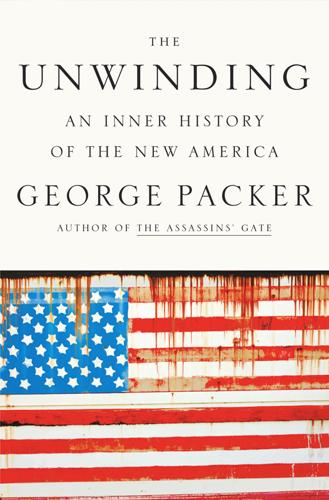
The Unwinding: An Inner History of the New America
by
George Packer
Published 4 Mar 2014
When Peter was nine, the Thiels returned to Cleveland, and when he was ten, in 1977, they moved to Foster City, California, a planned town on the San Francisco Bay, just twenty minutes’ drive north of Stanford. In 1977 hardly anyone used the term “Silicon Valley” to describe the peninsula stretching from San Francisco to San Jose. The technology firms in the area—Hewlett-Packard, Varian, Fairchild Semiconductor, Intel—were postwar companies built with the boom in military research and federal grant money that made Stanford one of the country’s leading universities. The silicon transistor chip and the integrated circuit were the concern of electrical engineers and tech hobbyists, not average consumers; the personal computer was in its infancy.
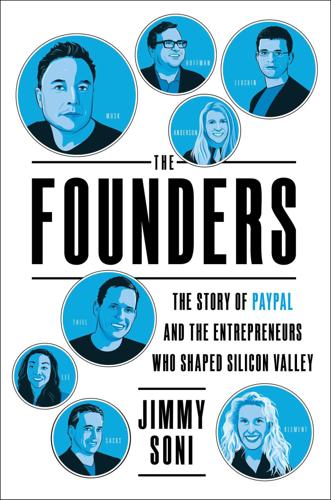
The Founders: The Story of Paypal and the Entrepreneurs Who Shaped Silicon Valley
by
Jimmy Soni
Published 22 Feb 2022
Bell Labs was the research arm of the Bell Telephone company, and as a group, Bell’s scientists and engineers won six Nobel Prizes and invented, among other things, touch-tone dialing, the laser, cellular networks, communications satellites, solar cells, and the transistor. I began to wonder about other Bell-like constellations of talent—including tech companies like PayPal, General Magic, and Fairchild Semiconductor, but also non-technological cohorts like the Fugitive Poets, the Bloomsbury Group, and the Soulquarians. The British musician and producer Brian Eno once said that as a visual art student he was taught that artistic revolution came from solitary figures—Picasso, Kandinsky, Rembrandt. But as he looked into these revolutionaries, he discovered them to be products of “very fertile scenes involving lots and lots of people—some of them artists, some of them collectors, some of them curators, thinkers, theorists… all sorts of people who created a kind of ecology of talent.”
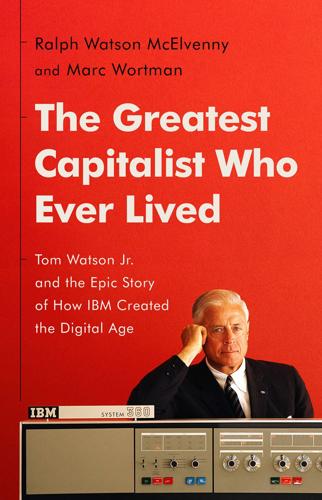
The Greatest Capitalist Who Ever Lived: Tom Watson Jr. And the Epic Story of How IBM Created the Digital Age
by
Ralph Watson McElvenny
and
Marc Wortman
Published 14 Oct 2023
Multiple ventures licensed IBM 360 patents under the terms of the 1956 antitrust consent decree to provide lower-cost, advanced, or business-specific components, or supply parts such as semiconductors and later microprocessors. The best known included Sony, Texas Instruments, Hewlett-Packard, Fairchild Semiconductor, and Intel, but dozens of others sold 360 plug-compatible terminals, printers, data-storage units and other peripheral devices, and microprocessors. Under the terms of the 1956 antitrust agreement, IBM was also obligated to sell computers to dealers who set up financing terms for their leasing, undercutting IBM by depreciating the machines over a longer lifetime, enabling them to charge lower rental fees than even IBM could.
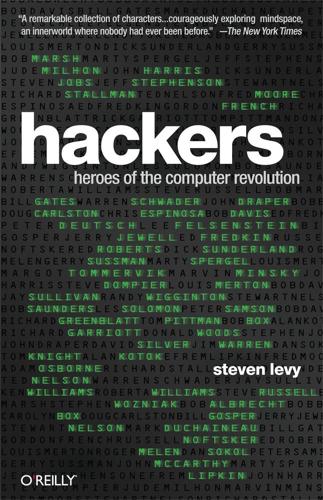
Hackers: Heroes of the Computer Revolution - 25th Anniversary Edition
by
Steven Levy
Published 18 May 2010
Markkula was a former marketing whiz, now in his mid-thirties, who’d retired from Intel a few years back; he had been spending his time since then in various pursuits, some business-oriented, some as odd as inventing a wheel chart to show different fingering positions for guitar chords. Jobs asked him to help draw a business plan for the Apple, and Markkula wound up helping to get venture capital for the company and signing up as its first chairman of the board. It was through Markkula that Jobs also got a nuts-and-bolts manager from Fairchild Semiconductor named Mike Scott to become president of the firm. So, while the most prominent company with a terminal-computer on the market, Processor Technology, was struggling with the inexperienced management of hardware hackers Bob Marsh and Gary Ingram, Apple was set for growth. This real-world activity hadn’t really sunk in as far as Steve Wozniak was concerned.
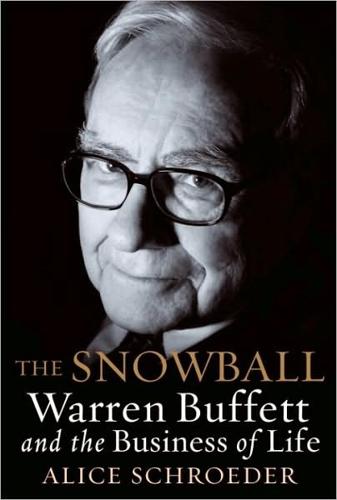
The Snowball: Warren Buffett and the Business of Life
by
Alice Schroeder
Published 1 Sep 2008
Given Buffett’s dislike of committees and meetings, this signified how much he had been touched by the convocation—as well as how close he had grown to Rosenfield. Naturally, he went straight onto the finance committee, where he found the trustees to be a group of like-minded men. Bob Noyce, who ran a company called Fairchild Semiconductor, which made electronic circuits—something about which Buffett knew little and had even less interest—was chairman. Noyce, a former Grinnell graduate who had once been expelled from school for stealing a pig to roast at a luau—a serious offense in a pig-farming state—had the aura of a man who knew what he was about.17 Yet “he was really a regular guy.
…
Though proud of having husbanded, tended, and compounded his partnership, with minimal risk, from seven investors and $105,000 to more than three hundred people and $105 million, Buffett had become an elder of the market, seemingly eclipsed by young barnstormers who could flash a couple of years’ worth of showy numbers and joy-ride new investors into giving them $500 million nearly overnight. He seemed especially—and comfortably—antiquated when it came to all the new technology companies that were forming. At Grinnell College, he showed up for a meeting to find his fellow trustee Bob Noyce itching to leave Fairchild Semiconductor. Noyce, Gordon Moore (its research director), and its assistant director of research and development, Andy Grove, had decided to start a nameless new company in Mountain View, California, based on a vague plan to extend the technology of circuits to “higher levels of integration.”23 Joe Rosenfield and the college endowment fund each said they would put in $100,000, joining dozens who were helping to raise $2.5 million for the new company—which was soon to be named Intel, for Integrated Electronics.
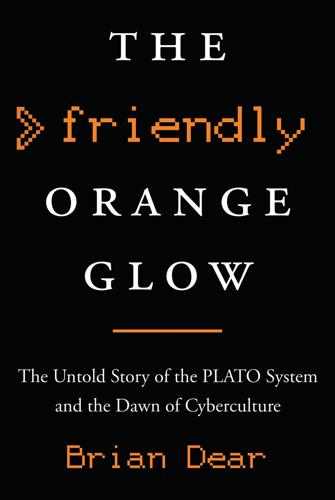
The Friendly Orange Glow: The Untold Story of the PLATO System and the Dawn of Cyberculture
by
Brian Dear
Published 14 Jun 2017
“We had to put everything that was text on film,” Fillman says, “and try to display that to students as the image was drifting across the screen, and the students would put their answers in, and by the time they got their answer in after they’d pondered the problem, the answer had kind of drifted out of the box.” The storage tube arrangement was tolerable as a proof of concept, but it was impractical for thousands of terminals in the future. An alternate solution had to be found. When PLATO began, the notion of Moore’s Law was still five years out. Not until 1965 would Gordon Moore, then of Fairchild Semiconductor and later one of the founders of Intel Corporation, write his famous article, “Cramming More Components onto Integrated Circuits” in Electronics magazine, from which emerged the principle known as Moore’s Law, which stated that the number of transistors and integrated circuits etched into a silicon wafer doubles every two years.
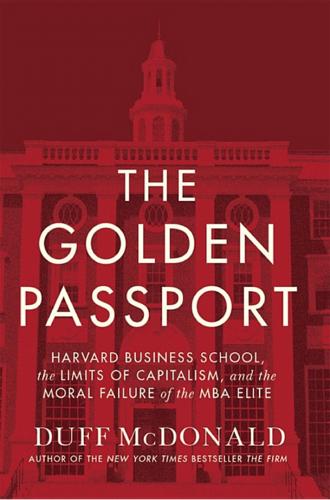
The Golden Passport: Harvard Business School, the Limits of Capitalism, and the Moral Failure of the MBA Elite
by
Duff McDonald
Published 24 Apr 2017
Working as an investment banker at Hayden, Stone & Company in New York after graduating, Rock was first bitten by the venture investing bug in 1957, when he funded a group of eight pioneering scientists working on silicon semiconductors when they bolted from their current employer, the Shockley Semiconductor Laboratory. Rock helped attract an investment from Sherman Fairchild, one of the largest shareholders of IBM, which led to the creation of Fairchild Semiconductor. Rock soon bolted from his own employer himself, leaving Hayden, Stone for the West Coast. (Depending on who you ask, the eight scientists are either the “Fairchild Eight” or the “Traitorous Eight.”) When Rock and partner Tommy Davis established Davis & Rock in 1961, they weren’t just trailblazers in identifying and investing in promising young technology companies; they also pioneered the model by which it would be done: Theirs was a partnership with profits split 80/20 between its limited partners (that is, its passive investors) and its general partners (that is, Rock and Davis).